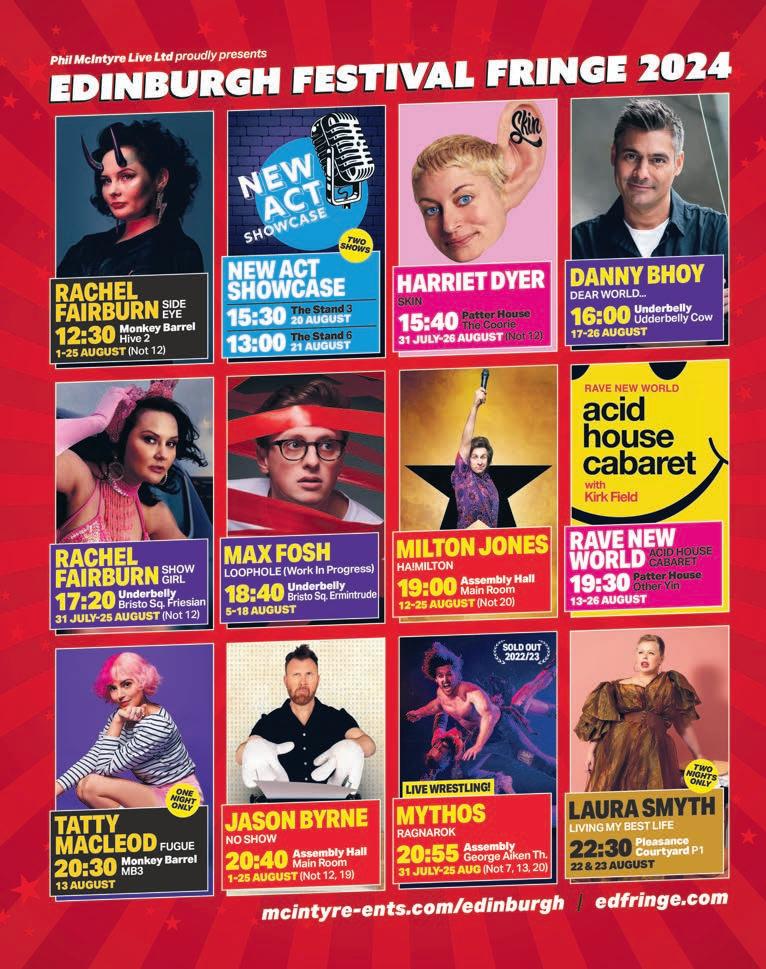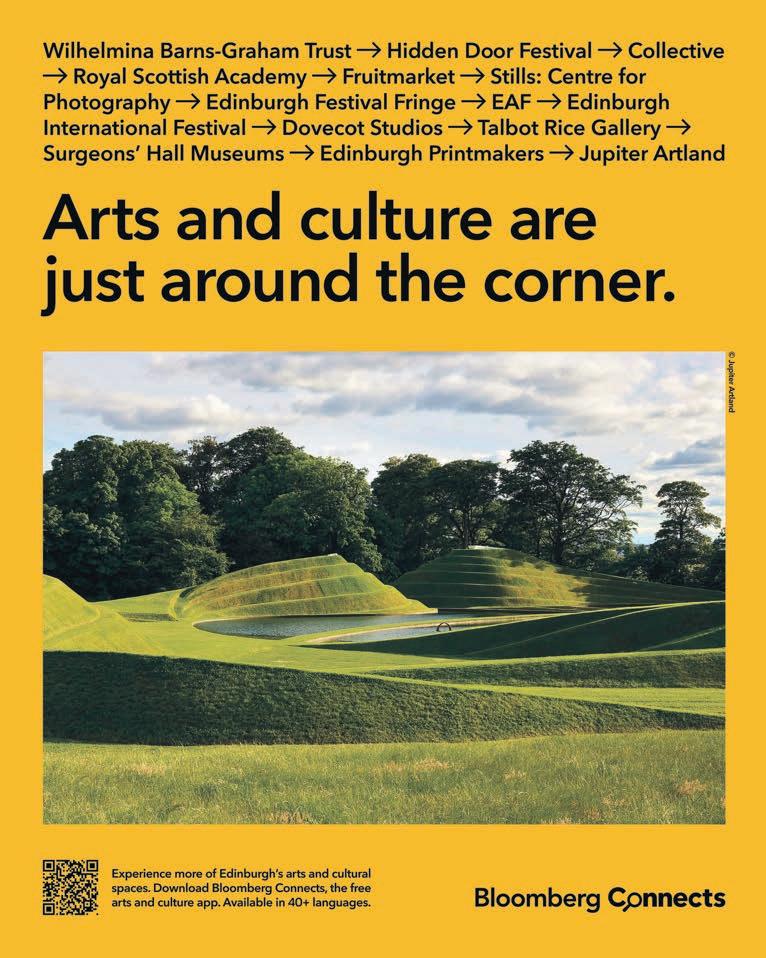








John Cage – 4'33"
Thin Lizzy – The Boys are Back in Town
The Curb Your Enthusiasm Theme
Justice – Stress
Pharoahe Monch – Simon Says
Disturbed – Down With the Sickness
Cardi B ft Megan Thee Stallion – WAP
The Dave Brubeck Quartet – Take Five
Refused – New Noise
Medieval Bard Jams – Hips Don't Lie
Doja Cat – MOOO!
Circus music
P.O.D. – Boom
Lady Gaga – Judas
The Sultans of Ping – Where's Me Jumper?
Listen to this playlist on Spotify — search for 'The Skinny Office Playlist' or scan the below code

Issue 223, August 2024 © Radge Media C.I.C.
Get in touch: E: hello@theskinny.co.uk
The Skinny is Scotland's largest independent entertainment & listings magazine, and offers a wide range of advertising packages and affordable ways to promote your business. Get in touch to find out more.
E: sales@theskinny.co.uk
All rights reserved. No part of this publication may be reproduced in whole or in part without the explicit permission of the publisher. The views and opinions expressed within this publication do not necessarily represent the views or opinions of the printer or the publisher.
Printed by DC Thomson & Co. Ltd, Dundee ABC verified Jan – Dec 2019: 28,197



Meet the team
We asked: What's in your Edinburgh festivals survival pack?

Rosamund West Editor-in-Chief
"Snacks. Bag wine. Remembering I possess the ability to leave."
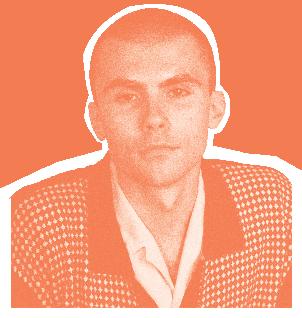
Cammy Gallagher Clubs Editor
"A pass to all the after parties."

Peter Simpson Deputy Editor, Food & Drink Editor
"Get one of those Uniqlo bags and just start filling it at random. A fan AND a raincoat! Suncream AND Strepsils PLUS loo roll AND a second bag etc etc."

Polly Glynn Comedy Editor
"My top two are my very well-used Paddington-themed reusable coffee cup (and a napkin stuffed inside it to prevent any leftover coffee ruining all of my things) AND my phone charger. I just need to remember not to put them in the same compartment in my bag."
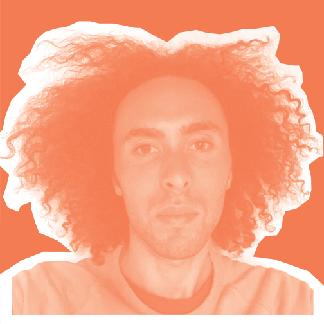
Harvey Dimond
Art Editor
"A one way bus ticket to Glasgow."
Editorial Sales Business

George Sully Sales and Brand Strategist
"Berocca, coconut water, banana, ibuprofen, fake passport, wig, multiple currencies, plane tickets, forged note from doctor, etc."

Anahit Behrooz Events Editor, Books Editor "A signed affidavit from everyone you know that they will be normal."
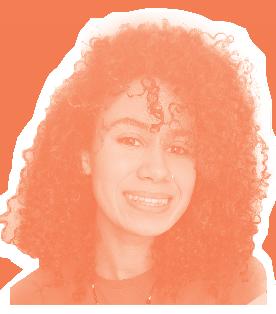
Eilidh Akilade Intersections Editor "Lip balm and an air of discontent."
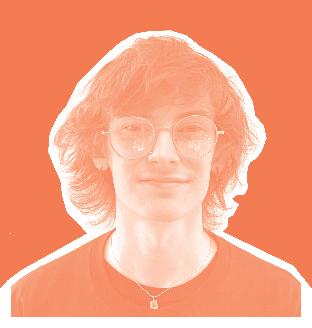
Ellie Robertson Digital Editorial Assistant
"A pen, so when my fans on the Royal Mile pass me a flyer, I can quickly give them the autograph they want. Weirdly, it's only a problem in August."

Sandy Park Commercial Director
"An increased credit limit."

Laurie Presswood General Manager
"Jury duty excusal letter."
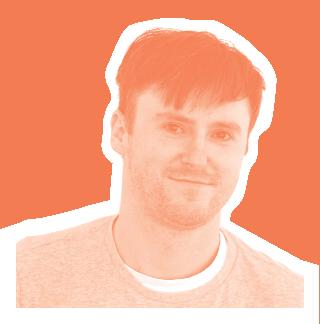
Jamie Dunn
Film Editor, Online Journalist
"Hip flask, because I'm not paying £7 for a shite lager in a plastic cup. Sandwich, because I'm not paying £12 for a tiny bowl of mac n cheese. And deodorant, obvs."

Rho Chung Theatre Editor "Earplugs. I'm literally a different, worse person without them."

Tallah Brash Music Editor
"A fan! Those tiny basement rooms get hella hot in August. Also a power bank so you can make sure your phone has plenty of juice in case you stay out far later than planned. It happens."
Production

Dalila D'Amico Art Director, Production Manager
"Mini Megaphone: ideal for politely yet firmly su esting people get out of your way."
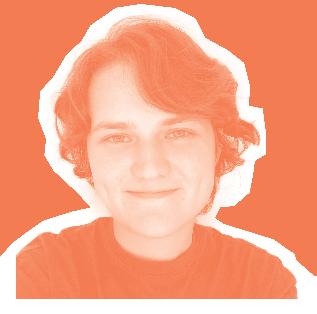
Ema Smekalova Media Sales Executive
"Honestly I don't think I'll be doing anything differently to normal this August. Surviving on lip balm and fun drink every day baby."

Emilie Roberts Media Sales Executive
"One (1) hardboiled e (for protein), one (1) easy peeler (for vitamin C), and the perfect, polite fake laugh (for Bad Show entrapment)."
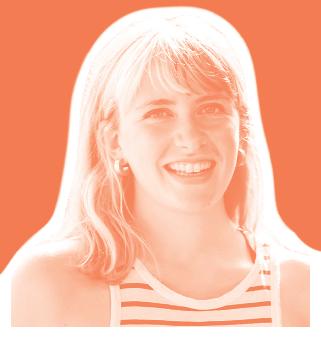
Phoebe Willison Designer "Loads of money."

Gabrielle Loue Media Sales Executive
"It's my first Edinburgh festival season so I'll be scouring this page for su estions."
This August we are once again bringing you the bi est magazine we have ever produced – a weighty 128 pages offering the deepest of dives into all things Edinburgh festivals. “Whose stupid idea was it to add more pages?” I found myself saying on the Wednesday of our production week, overwhelmed with the sheer number of proofs. It was (apparently) my stupid idea to add more pages. So here we have it, a magazine large enough to keep you occupied for the whole of August.
We open with Comedy – talking to some of the folk from LA’s Elysian Theatre about their Edinburgh percolator scheme. We meet Sarah Keyworth and Kemah Bob, with the latter approaching her debut Fringe hour with some trepidation. Two other acts debuting at this year’s Fringe, Hannah Platt and Amy Mason, take some time to write themselves letters of advice. Yorkshire’s bi est bastard Frankie Monroe (aka Joe Kent-Walters) brings a distinctly 1977 flavour to his Dream Gig, and Comedy editor Polly has pulled together a massive list of the shows she recommends from the 1500-strong Fringe comedy programme.
Then on to Theatre, who open with an exploration of four productions centring on food and its personal, political and communal meanings. Edinburgh local writer, actor and theatremaker Isla Campbell writes about their experience of the Fringe and Shark Bait’s new show, Tartan Tat. We look at some of the shows placing Palestine centre stage, send a writer halfway around the globe for a taste of the Korean season, and discuss hyperpop, theatre and the trans voice with Irish musician and theatre artist Ois O’Donoghue. We chat with drag artist Wet Mess about their drag spectacle TESTO, and they gift us our coverline with the words, “One of my mottos is, ‘everything is sexy, nothing is forever.’” Seems like an appropriate summary of the Edinburgh festivals.
As Edinburgh International Book Festival also roll into town in a brand new space, Edinburgh Futures Institute, Books meets some of the authors and poets who’ll be appearing in the programme. Edinburgh Makar Hannah Lavery discusses Unwritten Woman, her new collection exploring women on the margins. We talk to British-Palestinian author N.S. Nuseibeh about her essay collection Namesake, and poet and academic Nisha Ramayya discusses her latest poetry collection Fantasia Like all good festivals, there’s also a Book Fringe organised by a collective of local bookshops. We talk to some of the writers
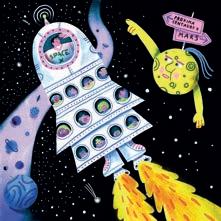
appearing in their programme – local poet Andrés N. Ordorica about his debut novel How We Named the Stars and poet Iona Lee on her new Riso-printed poetry zine Beasties
Art is excited about Edinburgh Art Festival – this month’s poster is by Rosie’s Disobedient Press and forms an extension of their work as part of the programme, exploring the archives of local organisations to look at language and words as a historical act of resistance. We’ve been working with EAF to recruit a cohort of emergent art critics, whose work you can see in the feature on Platform, with each writer paired with an artist from the emergent showcase. We take a look at some of the artists and collectives whose work deals with the most pressing crises of our time, and continue the celebration of Fruitmarket’s 50th birthday with a deep dive into their exhibition archives.
Music meets Irish artist Lisa O’Neill to talk about documenting sociopolitical issues and nature in her music ahead of her performance at Edinburgh International Festival. It then takes a detour into Film, talking to Carla J. Easton about her new documentary celebrating Scotland’s pioneering girl bands, Since Yesterday, which closes this year’s Edinburgh International Film Festival. Moving fully into Film, we meet Nora Fingscheidt, the director of the hotly-anticipated adaptation of Orcadian memoir The Outrun, and one of the most exciting voices of American indie cinema, Nathan Silver, to learn more about his new film Between the Temples. Clubs hears from the duo behind Sneaky Pete’s Postal about how their night evolved post-lockdown and why Edinburgh locals should maybe stop moaning and embrace the fact they live in the home of the bi est arts festival in the world.
On page 93, we finally exit the Edinburgh festivals theme and reach a small patch of other business. Design learns about Graphical House co-founder Daniel Ibbotson’s deep house past as he releases a fundraising double vinyl, from the Echo Department. We shine the Spotlight on Glasgow DJ and producer Xaia Chimera, before talking to two-thirds of Belfast rap group Kneecap ahead of the release of their biopic, and SleaterKinney core duo Corin Tucker and Carrie Brownstein as they prepare to return to the Glasgow stage.
We close the magazine with a brief return to the Fringe – The Duncan Brothers take on our Q&A, sharing a little about their love of carbonara and Margaret Thatcher biographies.
Cover Artist
Sara Arosio is an artist based in Milan. She started working as a freelance illustrator in 2022. In her practice she loves to experiment with different tecniques, mixing the traditional and the whimsical, making it suitable for editorial, publishing and commercial commissions. Sara has illustrated two children's books, one of which is out already and the other one in progress. Clients include M&C Saatchi, Anorak magazine, Frizzi Frizzi, Coltello comics, Uppa magazine and Scienza Express. In her free time, she loves to cuddle her fancy rats and practise yoga.
@sa_rosio
This month’s columnist reflects on discovering a love for boxing while finding community in each right hook
Words: Alekia Gill
Until recently, sports reminded me of being picked last for netball and team games meant playing with people who weren’t prepared to lose. In adulthood, I assessed my options. Tennis, darts and golf never seemed quite me, but boxing happened to appeal. Initially, the attraction may have been skin deep. I had a vision of myself: writerjournalist-boxing champion, decked out in pink boxing gloves and shorts with my name across the waistband.
I signed up for a taster session at a local boxing club and was placed with four men who I assumed had more boxing experience than me. I wondered how I would manage to keep up with them; maybe this was all a mistake. Soon, however, I realised we were all beginners, and though I couldn’t push the weights as fast as the others, I wasn’t made to feel bad about it. I was given a head start and told not to give up. I wanted a sport where I only needed to depend on myself but I quickly realised that boxing is simultaneously individual yet collective. You’re reliant on a partner to take your punches and throw them back. You motivate each other to go faster and laugh off the mistakes together. Afterwards, you chat about dinner, rinse your faces, and catch the same bus home, forgetting that you’ve just been training to knock the other out.
Everyone takes up boxing for their own reasons: to conquer stress, ease menopause, or even manage Parkinson’s. For me, normal gyms made me feel self-conscious, and other sports made me feel inept. I didn’t want to think about a perfect body, or whether or not I’d win in a real fight. Ironically, in a sport characterised by bulked-up fighters, bloody matches, and long-standing beef, I found a community that was unapologetically inclusive and surrounded me with the kindness I needed to heal my relationship with sport.
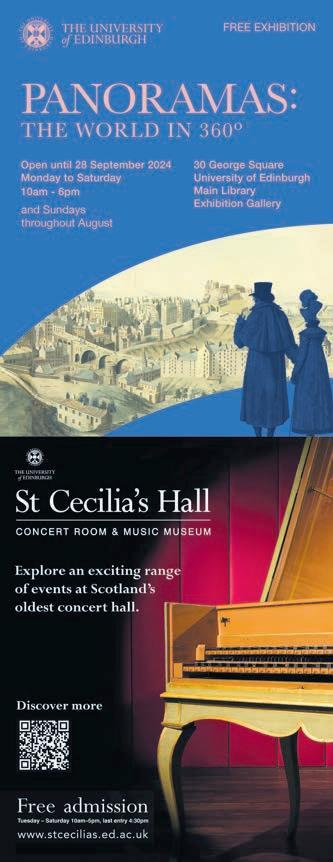
Belle & Sebastian present
The Glasgow Weekender SWG3, Glasgow, 2-3 Aug
It’s another monster heads up for our August issue: four pages (four!!!) of gigs, Fringe shows, exhibitions, comedy hours, and a general nice time for your perusal.
Compiled by Anahit Behrooz
Beloved Scottish indie-pop group Belle & Sebastian take over SWG3 for the first weekend of August with a double headlining spot alongside hand-selected guests from the local indie scene and further abroad. Find the likes of Camera Obscura, BIS, CMAT, and The Joy Hotel sharing their stage, with street food and DJs thrown in for the full festival experience.
Olga Koch Comes From Money Monkey Barrel Comedy Club, Edinburgh, 29 Jul-25 Aug, 5:40pm
Last year, Olga Koch’s comedy hour was about risking it all to humiliate yourself for love, and what happens when it wasn’t even worth it. This year’s show is an even more embarrassing confession: Koch has wealthy parents. With her trademark wry wit and quickness, Koch finally address es the elephant in the room, dissecting ideas of privilege and class in the arts.
Jupiter Rising x EAF
Jupiter Artland, Edinburgh, 17 Aug, 6pm
Jupiter Rising, Jupiter Artland’s mini evening festival, is presented in partnership with the Edinburgh Art Festival again this year. This year’s edition is themed around Queer Summer Fête, with a gorgeous lineup of artistic voices to explore, queer performance and karaoke from Sgàiraoke and an evening of dance curated by queer DJ collective Femmergy.

The Queen’s Hall, Edinburgh, 23 Aug, 7:30pm
Natasha Khan, AKA the luminous Bat For Lashes will be playing The Queen’s Hall as part of Edinburgh International Festival’s contemporary music programme. The art pop sensation is known for her cinematic concept albums that weave narratives from ethereal vocals and breathless lyrics, with her latest album The Dream of Delphi drawing on mythic themes to examine ideas of motherhood and the feminine divine.

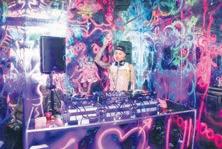
Sin Park: There Is a Single Wild Tree Standing and We Sing Again
The Briggait, Glasgow, until 12 Aug
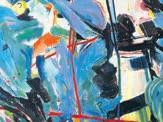
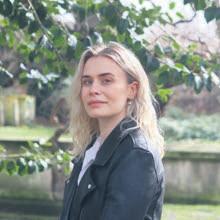
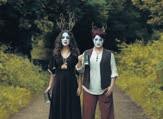
Sh!t Theatre: Or What’s Left of Us
Summerhall, Edinburgh, 1-25 Aug (not 5, 12, 19), 4:45pm
SWG3, Glasgow, 23 Aug-20 Sep
Chronicling the journey of a young man forced to leave his hometown against the backdrop of 1980s Thatcherism, Bronski Beat’s Smalltown Boy has become an iconic queer anthem since its release in 1984. It is the subject of a new exhibition at SWG3, depicting a range of artists’ personal and emotional responses to the song’s exploration of identity and hostile environment through photography, painting and sculpture.
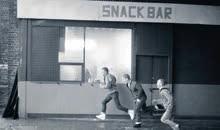
Various venues, Edinburgh, 9-27 Aug
A collaboration between indie bookshops Lighthouse Bookshop, Typewronger Books and Argonaut Books, Book Fringe offers a gorgeous programme of free (!!) book talks from some of the most exciting and groundbreaking authors. Find the likes of Dina Nayeri, Marjorie Lotfi, Sofie Hagen, Lex Croucher and K Patrick on the slate.
H4LW4 w DIJA + Salam Kitty + 222babychai + Joumana
The Flying Duck, Glasgow, 2 Aug, 11pm


Penthesilea
The Lyceum, Edinburgh, 3-6 Aug, various times
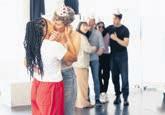
Traverse Theatre, Edinburgh, 1-25 Aug (not 2, 5, 12, 19), various times
Is there a sexier – and gayer – play than Edmond Rostand’s Cyrano de Bergerac, in which a lovesick man expresses his desires for the woman he loves through the mouthpiece of another man? Perhaps Virginia Gay’s gorgeous, genderflipped version, in which a lovelorn (and female) Cyrano falls for the luminous Roxanne and writes her letters under the guise of her himbo lover Yan, will prove this theory correct in this stunning examination of language and desire.
Faerie Circle

Summerhall, Edinburgh, 17 Aug, 10pm
An exciting new night dedicated to platforming feminine and queer performers and DJs, Faerie Circle is a meeting point of the soft and hard, melding beautiful visuals and an impish sense of mischief with fast and hard rhythms. Their lineup in Summerhall’s Dissection Room is especially sick: find 3DMA, Pewtwo, Miira, al gu and malicedeejay on the decks.
Stereo, Glasgow, 11 Aug, 7pm Folk-rock sextet SANAM hail from Beirut, blending traditional Egyptian songs and Arabic poetry with free improvised noise, rock and jazz to create a uniquely contemporary sound. Their first album Aykathani Malakon was released to huge acclaim; catch them in Stereo this month on their European tour to hear their intoxicating industrial sound live.

& Juliet
The King’s Theatre, Glasgow, 13-24 Aug, various times


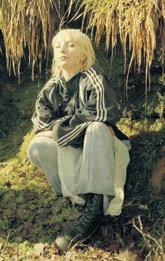
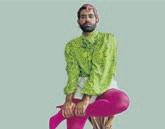
Underbelly Bristo Square, Edinburgh, 13-25 Aug, 4:10pm
Brigitte Baptiste: A Powerhouse in Ecology
Edinburgh Futures Institute, Edinburgh, 23 Aug, 4:45pm
There’s plenty to see and do at Edinburgh International Book Festival this year, but we’re especially hyped for Colombian environmentalist and academic Brigitte Baptiste’s event, presented in partnership with the Edinburgh Art Festival and sponsored by The Skinny (hi!). Baptiste’s work examines the inherent queerness of the natural world, exploring how homosocial dynamics observed in nature can break apart harmful binaries across both the human and nonhuman.
Edinburgh International Film Festival
Various venues, Edinburgh, 15-21 Aug
The Edinburgh International Film Festival returns under its own banner! There’s some gorgeous world and UK premieres here and plenty of buzzy films from the likes of Sundance and Cannes: highlights include opening film The Outrun, based on Amy Liptrot’s bestselling memoir and female-led horror The Substance, and a host of excellent in competition films such as Arash Rakhsha’s urgent documentary All the Mountains Give

Elaine Robertson: Delulu
The Stand Comedy Club, Edinburgh, 1-25 Aug (not 12), 12:05pm
Surely taking the award for one of the best comedy show titles of the Fringe, newcomer Elaine Robertson’s stand up hour is a hilarious excavation of the lies we tell ourselves – good or bad. The County Durham comic’s first hour is as laugh out loud as they come, heralding great things for the comedy scene.
girl in red
Barrowlands, Glasgow, 29-30 Aug, 7pm
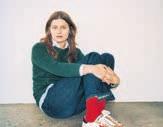
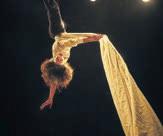
Cosmos Summerhall, Edinburgh, 1-11 Aug (not 5), 9:15pm
June Carter Cash: The Woman, Her Music and Me
Òran Mór, Glasgow, 30 Aug-1 Sep, various times
Fresh off a highly anticipated run in Summerhall’s Fringe programme, June Carter Cash: The Woman, Her Music and Me heads west for another month-long run in Glasgow. Taking as its subject matter the legendary country singer June Carter Cash, the show complicates the traditional biography format by centring its performer Charlene Boyd’s relationship with the icon, taking us on a journey from the Appalachian Mountains to Glasgow’s high-rise flats.
in Diaspora
ZOO Playground, Edinburgh, 2-25 Aug (not 12, 19), 11:30am
Essa, a young Middle Eastern American man, tells the story of himself, his parents, and the crossroads of their identities in this painfully funny and unflinching exploration of intergenerational migration and belonging. Performed as a solo show (albeit with a pesky nicotine demon haunting Essa’s reality), Dummy in Diaspora cuts between timelines, offering a soul-baring investigation into sexuality, religion, and family ties.
Edinburgh Art Festival
Various venues, Edinburgh, 9-25 Aug Edinburgh Art Festival returns, with a remarkable programme of exhibitions running across Edinburgh’s galleries and museum spaces. There’s major solo shows, such as acclaimed Ghanaian artist El Anatsui at Talbot Rice Gallery, DIY exhibitions from artistled spaces such as Sett Studios, and a spotlight on emerging artists with the tenth edition of PLATFORM, featuring Alaya Ang, Edward Gwyn Jones, Tamara MacArthur and Kialy Tihngang.
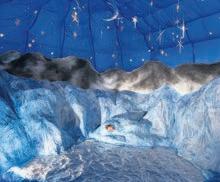
Taiwan Season: Palingenesis
Assembly @ Dancebase, Edinburgh, 2-25 Aug (not 5, 12, 19), 6:40pm
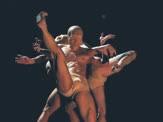
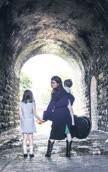


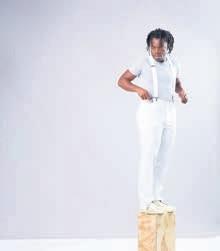

The Postal Service + Death Cab For Cutie
The OVO Hydro, Glasgow, 23 Aug,
Ten Thousand Hours
Assembly Hall, Edinburgh, 1-24 Aug (not 12, 19), 11:40am
It’s a truth commonly acknowledged that the best circus at the Fringe comes from the appropriately named Gravity and Other Myths, an Australian circus troupe who seem to defy many of the natural laws of the universe in their acrobatic feats. Their new show Ten Thousand Hours speaks to the supposed frame of time it takes to master a new skill, and won the House of Oz Purse Prize at the Adelaide Fringe.
The Berkeley Suite, Glasgow, 9 Aug, 11pm
The Berkeley Suite’s HEALTHY welcomes the iconic Manuka Honey to the decks for a night of experimental club. The US-born, London-based DJ, producer and multidisciplinary artist is known for her decolonial approach to dance music, remixing and producing new music with a distinctive Latin-American and Caribbean sound. She’ll be joined on the night by dance and electronica powerhouse Mun Sing.

Demi Adejuyigbe Is Going To Do One (1) Backflip
Pleasance Courtyard, Edinburgh, 31 Jul25 Aug (not 12), 6:20pm
You may know him as a writer for the likes of The Good Place and Strange Planet, a podcaster on The Gilmore Guys, or simply for his sick, sick Letterboxd account, but comedian Demi Adejuyigbe is finally speaking a language we can all understand – men doing slightly ill-advised feats of daring. Join the comedian for original comedic songs, presentations, bits, and precisely one backflip.
Sophie Duker: BUT DADDY I LOVE HER
Pleasance Courtyard, Edinburgh, 31 Jul-25 Aug (not 14), 7pm
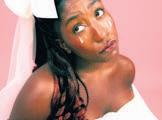

So You Think You’re Funny Gilded Balloon Patter House, Edinburgh, 31 Jul-7 Aug + 22 Aug, various times
A Letter to Lyndon B Johnson or God: Whoever Reads This First theSpace @ Niddry Street, Edinburgh, 2-24 Aug (not 11), various times
From double Fringe First Award winners and The Skinny favourites Xhloe Rice and Natasha Roland comes a new show about the eerie institutions, queerness, and the fragility of the American Dream. This absurdist two-hander follows two Boy Scouts as they strive to be the best, offering an unforgettably innovative examination of the idealised American childhood and those it leaves behind.
LUCKYME Festival Party:
Iglooghost
Sneaky Pete’s, Edinburgh, 10 Aug, 11pm
Trailblazing Edinburgh-based indie record label LuckyMe are putting on two parties this month. The lineup for the final one – Summerhall’s festival closing party – is still under wraps, but their mid-month bash at Sneaky Pete’s is already announced, welcoming dance music producer Iglooghost, whose 2024 album Tidal Memory Exo is a feat of high-octane worldbuilding, to the decks for a night of experimental club.
Claudia Martínez Garay

DCA: Dundee Contemporary Arts, Dundee, 23 Aug-17 Nov
This first solo exhibition in Scotland by Peruvian artist Claudia Martínez Garay brings together pre-existing work in textiles, print and sculpture, as well as two specially commissioned pieces in print and soundscape, to examine the sociopolitical history of Peru and ways of depicting and processing civil unrest. Historical images, sounds and propaganda come together to interrogate tensions between the state and its people.
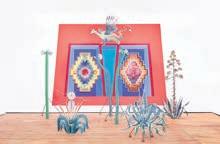
The Fifth Step
Dundee Rep, Dundee, 17 Aug, 7:30pm
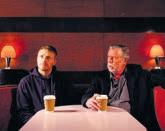
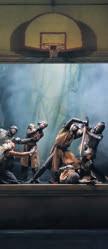
Assembly Hall
Festival Theatre, Edinburgh, 22-24 Aug, 7:30pm
You wouldn’t think LARPing and cutting edge contemporary dance would be the most natural of bedfellows but Assembly Hall, the new choreography piece by Crystal Pite and Jonathon Young would prove you wrong. Performed as part of the Edinburgh International Festival, this blend of Arthurian cosplay and dance is as playful as it is breathtaking.
Experiment Human
Underbelly Cowgate, Edinburgh, 1-25 Aug (not 12, 19), 2pm
At its heart, Fringe is about weird and wacky shows that wouldn’t get much of a platform otherwise (we know it can seem like it’s about paying a tenner for pints but we promise it’s not) and Experiment Human is just such a show: a blend of dark humour and physical theatre about an alien who develops a Benedict Cumberbatch fixation at the height of his fame.



Edinburgh International Book Festival
Various venues, Edinburgh, 1025 Aug

Instructions
Summerhall, Edinburgh, 1-26 Aug (not 12, 19), 1:10pm
From the makers of work.txt, the 2022 Summerhall show in which the audience were the actors, comes another blistering show about labour, AI, creativity and the dying days of capitalism. Every day a completely unrehearsed actor takes to the stage, performing the show with nothing but a series of instructions to hand, exploring what the boundaries of theatre-making are in an increasingly automated world.
Waxahatchee
Queen Margaret’s Union, Glasgow, 30 Jul, 7pm
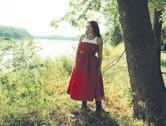
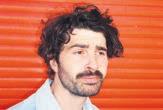
30 Jul-23 Aug (not 14), 7:50pm
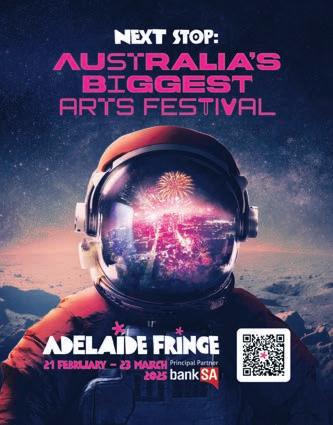

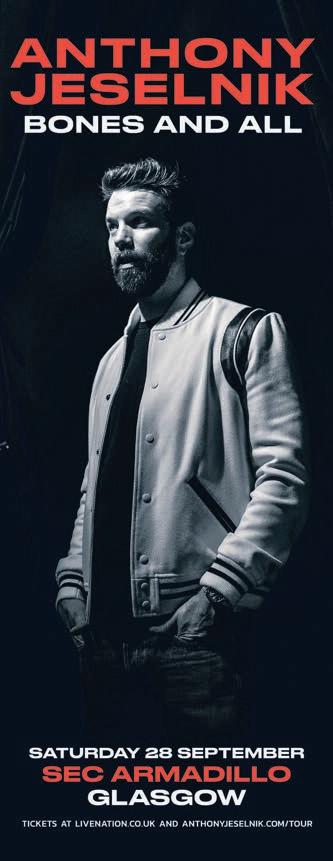
At the start of the month, festivals abound in Glasgow. core.’s celebration of noise takes place between The Hug & Pint and the nearby Woodside Halls (2-4 Aug) with Gilla Band, Empire State Bastard, Witch Fever and k.yalo making up a tiny fraction of the bill. Belle & Sebastian’s Glasgow Weekender takes over the entirety of the SWG3 complex (2 & 3 Aug) with B&S playing both days, while artists like CMAT, The Joy Hotel, Walt Disco, Callum Easter and more join them across the two days. On the same weekend(!), Bemz hosts and performs at the inaugural M4 Festival (3 Aug) at BAaD with Becky Sikasa, Sean Focus and ISO YSO on the lineup, alongside the promise of burgers, shawarma and lobster from local food vendors. Yum.
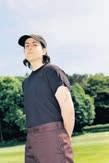
Later in the month, Scotland’s international conference of hip-hop and underground culture, PITCH takes place at Drygate (22-23 Aug). Numerous panel discussions will take place during the days while evening showcases will feature performances from Psweatpants, Paque, Big Blu and more. Bookending August nicely, the 31st sees the brand new Interesting Things festival taking place at Stirling’s Tolbooth featuring artists like ML Buch, Isa Gordon, Susan Bear and Konx-Om-Pax. And sidling giddily out of August, Sunday 1 September sees the bi er and better return of Edinburgh Psych Fest to the capital with Pigs x7, La Luz, NewDad, Lime Garden, Cloth and more playing the multi-venue epic.
Speaking of Edinburgh, there’s also the small matter of the Edinburgh festivals. The Edinburgh International Festival features a contemporary programme that includes Jordan Rakei at the Usher Hall (8 Aug), while Tirzah (19 Aug), Lisa O’Neill (21 Aug), Nadine Shah (22 Aug) and Bat For Lashes (23 Aug) all play The Queen’s Hall. Meanwhile the Fringe features interesting shows at the the Acoustic Music Centre at the Ukrainian Community Centre on Royal Terrace from the likes of Chloe Matharu (20 Aug) and Iona Fyfe (21-23 Aug). Fyfe also plays as part of the Wide Days showcases that form part of this year’s Made In Scotland programme. The annual conference hosts will platform a further seven Scottish artists – comfort, Gallus, Indoor Foxes, Nimbus Sextet, Gnoss, The Big Day and Zoe Graham – across two nights at La Belle Angele (14 & 15 Aug).
At the recently reopened Jazz Bar, The Gil Scott-Heron Songbook takes place from 10 to 14 August courtesy of local talent Aki Remally and Fraser Urquhart, while Press Start! A Live Video Game Music Experience is also worth checking out in the basement venue (7-9; 19-20 Aug). Elsewhere, Outwith Words sees the Tinderbox Orchestra and Loud Poets take over the Edinburgh Central Library’s Reference Library for a series of performances throughout the month (8-10; 15-17; 22-24 Aug), the Ligeti Quartet perform the music of Anna Meredith at The Queen’s Hall (16 Aug), and a collective of creatives from Scotland, Iran, Chile, Brazil, Yemen and Syria combine for The Other, a multimedia performance exploring culture and displacement, at the Scottish Storytelling Centre (14-16 Aug). There’s also a whole load going on smack bang in the city centre with the St James Quarter Sessions (16-25
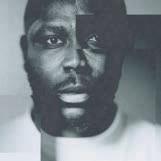


Aug) featuring Scottish talent like DARA DUBH, Djana Gabrielle, EYVE, Fergus McCreadie, NATI., Kohla, Leif Coffield and more. Outwith all of that, there’s tonnes more happening on a local level throughout the month. Sneaky Pete’s have their annual Central Belters series with Red Vanilla (8 Aug), Swiss Portrait (20 Aug) and Brodie Barclay and Nikhita (21 Aug) all playing, Alice Faye plays Ghillie Dhu (10 Aug) and Hamish Hawk plays an Assai Records outstore at The Liquid Room (31 Aug). In Glasgow, both King Tut’s Summer Nights and The Hug & Pint’s endless summer series continue. Catch Lewis McLaughlin (10 Aug) and Carsick Charlie (15 Aug) at the former, and Zerrin (2 Aug), Hound (5 Aug) and Day Sleeper (13 Aug) at the latter. There are also local launches to check out from Tina Sandwich (Nice N Sleazy, 8 Aug) and Nightshift (Mono, 10 Aug), while a number of touring artists swing through town too. Our top recs include Deerhoof (Room 2, 1 Aug), Loyle Carner (SWG3, 15 Aug), Pixies (O2 Academy, 20 Aug), Souls of Mischief (Saint Luke’s, 21 Aug), The Postal Service and Death Cab For Cutie (OVO Hydro, 23 Aug), Killer Mike (QMU, 23 Aug), Yo La Tengo (SWG3, 27 Aug), and Sleater-Kinney (O2 Academy, 27 Aug). [Tallah Brash]
If you’ve not had the chance to check out Offline, the relatively new DIY cinema and exhibition space in Glasgow’s Govanhill, then you’ve plenty of reasons to head there this month. First, there’s (DIS)COMFORT: Paradoxes of the Heart, a weekend-long exhibition delving into the psychological and emotional intricacies of art-horror. Two masterworks are screening as part of the weekend: Dario Argento’s Suspiria, which opens the exhibition on 1 August, and Andrzej Zulawski’s Possession, which brings the exhibition to a close on 3 August.
Also at Offline in August there’s CineRoma 2.0, the second edition of the Roma film festival presenting a diverse selection of films by Roma people. The festival kicks off with Carmen, No Fear of Freedom on 8 August, and closes with Latcho Drom on 10 August, with a host of features, shorts and events in between.



It’s a busy month at Glasgow Film Theatre too. There’s an unmissable season dedicated to the undersung talents of American indie filmmaker John Sayles, featuring Matewan (5 & 7 Aug), City of Hope (25 & 28 Aug), Eight Men Out (11 & 14 Aug) and his wonderful Lone Star (16-22 Aug), which is getting a wider rerelease too. If you prefer your films to be brilliantly bleak, how about Hungarian master Béla Tarr? GFT’s mini Tarr retrospective includes Werckmeister Harmonies (2-8 Aug), Damnation (9-15 Aug), The Turin Horse (17&21 Aug) and his seven-hour epic Sátántangó (24 Aug) – a must-see on the big screen.
Elsewhere, GFT pays tribute to two icons of 70s American cinema who died in July. Donald Sutherland is honoured with screenings of Ordinary People (6 Aug), Invasion of the Body Snatchers (8 Aug) and Don’t Look Now (13 Aug). And the incomparable Shelley Duvall is remembered with the wonderful 3 Women (26 Aug).
Cameo is busy playing host to Edinburgh Film Festival in August (see p82-89), but there much more going on at this ace cinema. For one, they have a very fun 80s season happening at the minute. As well as bombastic films of Reagan-era excess like Predator (3 Aug) and Top Gun (10 Aug), there are also a few examples of the genre that hit its zenith in the 1980s: the mid-budget romantic comedy. Three of these gems screen: Moonstruck (7 Aug), Broadcast News (28 Aug) and Desperately Seeking Susan (2 Sep).
And to top all that off, Hayao Miyazaki’s My Neighbour Totoro gets a wide rerelease from 2 August. If there’s a better movie in Scottish cinemas this month, then I’m a flying cat bus. [Jamie Dunn]
Enjoy early evening ambient and experimental on Thursday with Special Guest DJ & Ben Bondy for co:clear at The Dream Machine (1 Aug). On Friday 2 August, Hot Chip throw down dancefloor fillers at Fringe by The Sea from 7pm in North Berwick. Later, Glasgow’s intimate basement channels low end for Lezure with Skillis + Feena b2b Sloan at La Cheetah (Fri 2 Aug). Linking up at Lost in Leith, Club Signal & GRDN presents: Linkwood & Telfort to ease in the festival; Katelate, Ria, and Potpurri stage Summerhall for Femmergy at the Fringe! following 2023’s sell-out, alternatively, head on over to Sneaky Pete’s for EHFM’s Annual Festival Party (Sat 3 Aug). On


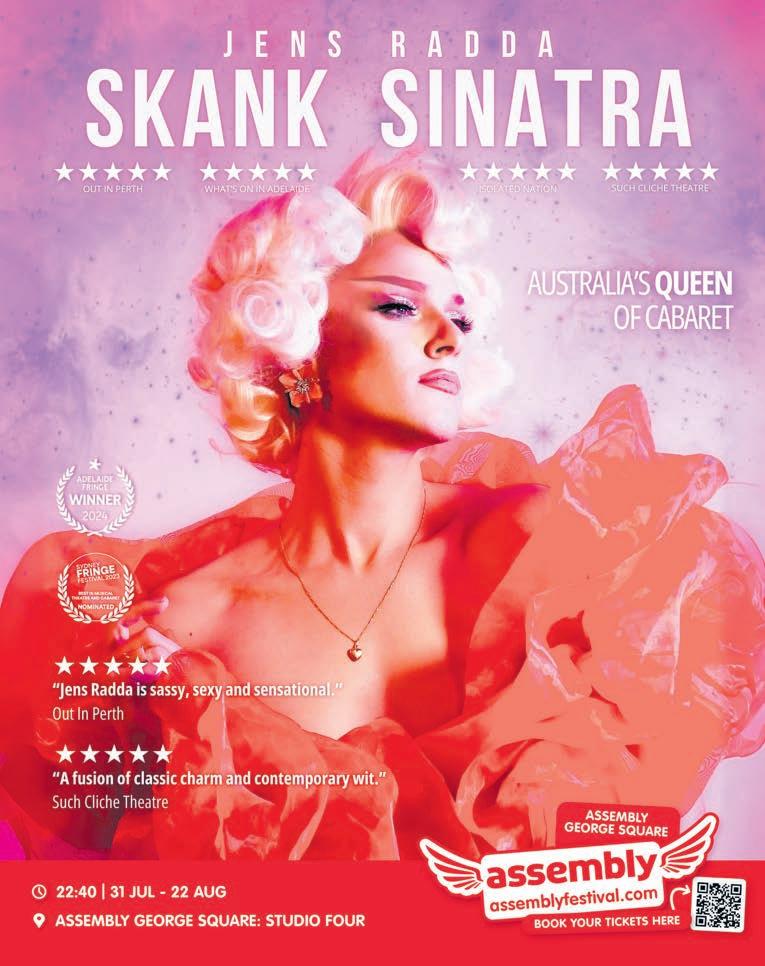
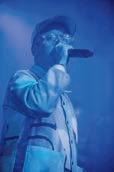
Sunday, Scotland’s big-room techno prodigy brings packs Funktion-One sound for Frazi.er 360 at Ovo Hydro (4 Aug).
For disco and high-nrg classics in the capital, sweat it out with Simontron all-night-long at the Hot Mess Sumerhall Fringe Party on Friday; while in Glasgow, it’s a HEALTHY summer with Manuka Honey + Mun Sing at The Berkeley Suite (Fri 9 Aug). On Saturday, jay jay, Revlon, 3MR., and HUNTRESS provide a taste of authentic ballroom culture at Edinburgh’s Summerhall for the Q’iwa Vogue Night – dress to impress; while in Glasgow friends and residents gather day till dawn across Chinaski’s and The Berkeley Suite for the Loose Joints Summer Party (Sat 10 Aug).
On Friday 16 August, OPTIMO ESPACIO set up at Summerhall for their first East Coast party of the year, while in Glasgow, expect rough, scuffed house grooves from L.I.E.S and Non Stop Rhythm affiliate Tom Carruthers for Rush at The Berkeley Suite. On Saturday 17 August, from the belly of the swamp rises Shrekdale, a Shrek-themed party at La Belle Angele – karaoke and costume comps; at Jupiter Artland, Edinburgh Art Festival enlist Femmergy in dancing the night away as part of a Queer Summer Fête not to be forgotten; while in Glasgow, Scandal calls out keen selectors for Stereo Open Decks. On Friday, techno-heritage Dave Clarke stops at Sub Club with Gary Beck for the Archive One Tour Glasgow (Fri 23 Aug). On Saturday 24 Aug, throw it back with Paul Oakenfield, Irvine Welsh, and 808 State at SWG3 for the STREETrave Summer All Dayer. Otherwise, Broadcast opens its doors to electro and extra-terrestrial tech for Atmosfera presents... Reptant [Live + DJ] (Sat 24 Aug). On Monday, get down to Headset’s Gay Garage Fringe Closing Night with Skillis, Lara Sinclair, and Sweet Philly (Mon 26 Aug). [Cammy Gallagher]
The programme for this year’s Edinburgh Festival Fringe offers over 1,500 theatre (and theatre-related) shows for audiences to comb through. Fringe favourites Xhloe and Natasha, who won their second consecutive Fringe First award last year, return with What If They Ate the Baby? (theSpace @ Niddry Street, 2-10 Aug) and their new show, A Letter to Lyndon B Johnson or God: Whoever Reads This First (theSpace @ Niddry Street, 2-10 & 12-24 Aug). The new show features more of the pair’s captivating signature style, promising a heady mix of clowning, physical theatre, comedy and devastation. Also playing at theSpace is Rat King Gospel (theSpace on the Mile, 4-24 Aug) by Cup of Teatre and New Celts Productions. Created by four Edinburgh Napier students, the play explores the way our childhood games and fantasies follow us into adulthood. As three reunited childhood friends unpack what happened to them at school, mysteries and memories of a monstrous head teacher and a fictional Rat King are woven together.
James Rowland finishes his Songs of Friendship Trilogy with James Rowland Dies at the End of the Show (Summerhall, 1-26 Aug except 12 and 19).

Following its critically-acclaimed predecessors, Learning to Fly and Piece of Work, Rowland’s new show is an hour-long solo piece about joy, life and death. Summerhall will also host Cosmos, a solo show by contortionist Ashtar Muallem. Through the piece, Muallem seeks a connection with the Divine and explores memories of growing up between Palestine and France. This multigenre show blends comedy, movement and storytelling. (1-11 Aug)
At the Scottish Storytelling Centre, audiences can find an ambitious and original mix of storytelling, theatre and poetry for Fringe-goers aged 2-6. Niall Moorjani’s children’s show, Grow, returns after a sell-out run last year (1-25 Aug). Sinéad O’Brien combines Irish epics and personal storytelling in Hero/ Banlaoch, a heartfelt piece about myth and family (1-25 Aug). Jess Aquilina brings her multi-genre show, The Tree and Her Tale, to the George Mackay Brown Library. Told through puppetry, music and storytelling, the piece explores friendship and the bond built by stories (1-13 Aug). [Rho Chung]
Art
Edinburgh Art Festival (EAF) celebrates its 20th birthday this year with an exciting and timely programme that platforms artists and collectives responding to the bi est global crises of our times. Highlights include an opening performance titled through warm temperatures by dancer, artist and choreographer Mele Broomes at the Custom House in Leith on 9 August; a performance by Prem Sahib titled Alleus, which disrupts and re-directs an anti-immigration speech by Suella Braverman (Castle Terrace Car Park, 16
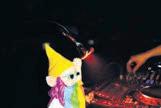



August) and Platform, an exhibition of four emerging Scotland-based artists, held this year at the City Art Centre (opens 9 Aug).
Elsewhere in Edinburgh, many galleries that are included in EAF’s programme keep their exhibitions open after the festival ends on 25 August. Highlights include: Tayo Adekunle’s exhibition Stories of the Unseen at Edinburgh Printmakers (until 10 Nov), an exciting opportunity to see the works of El Anatsui at Talbot Rice (until 29 Sep) and the first ever Scottish solo show by Ghanaian artist Ibrahim Mahama at Fruitmarket, famous for his evocative large-scale installations that speak to the cultural and social effects of post-colonialism (until 6 Oct).
There is also plenty to see away from Edinburgh, particularly in some of Scotland’s coastal and rural areas. At the recently opened Wyllieum in Greenock, Angelo Picozzi will present a series of works reflecting on George Wyllie’s wartime experiences and the visit he made to Hiroshima a few months after the dropping of the atomic bomb which devastated the city. Dates to be confirmed – check The Wyllieum’s website for further details.
In Dumfries and Galloway, Cample Line launches two exhibitions for the summer. The first, by Turkish artist Aslı Çavuşoğlu, centres on a 2020 textile work titled Pink as a Cabbage/ Green as an Onion/ Blue as an Orange, produced in collaboration with fifteen Turkish agricultural cooperatives and associations using the produce that they cultivate. At the same time, visitors can catch Scottish artist Claire Barclay’s exhibition RAWLESS, which sees Barclay engage with the raw materials, land practices and machinery traditionally associated with wool production in a new installation. Both exhibitions continue until 8 September.

Opening on the last day of August, Mount Stuart presents a solo show by Irish artist Oisín Byrne, his first time exhibiting in Scotland. The starting point for Byrne’s project is of the less well-known collections at Mount Stuart: its Gaelic and Irish books and pamphlets. Continues until 20 October.
[Harvey Dimond]
Books fight it out with theatre (and art, and music, and comedy, and film) in August, with multiple festivals dedicated to all things literature and poetry to fill your days. Plucky grassroots festival Book Fringe makes a return, run once again by Edinburgh bookshop stalwarts Lighthouse Bookshop, Argonaut Books and Typewronger Books, with a gorgeous programme of fiction, nonfiction and poetry events to fill your days and evenings (and they’re all free? Crazy). Events we’re particularly excited for include Chitra Ramaswamy and Leah Hazard in conversation about motherhood and pregnancy at Argonaut Books (9 Aug), K Patrick and Rachael Allen in conversation at Typewronger (23 Aug), and poets Nat Raha and Harry Josephine Giles talking all things trans poetics at Lighthouse Bookshop (12 Aug).
Meanwhile, Edinburgh International Book Festival also makes a splash with a packed programme of events at their new home of the Edinburgh Futures Institute. Find the likes of Palestinian author Adania Shibli talking about her remarkable novella Minor Detail (11 Aug), video game writer turned novelist Holly Gramazio running a workshop on rules-based writing (10 Aug), Tommy Orange on the wealth of Indigenous literature (14 Aug), incredible translator Emily Wilson on her follow-up to The Odyssey (The Iliad, natch, 14 Aug), and critic, poet and academic Helen Charman on her blazing non-fiction book Mother State (24 Aug). There’s also some big names taking over McEwan Hall, from Salman Rushdie (17 Aug) to Alan Cumming and Forbes Masson (10 Aug).
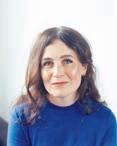
And while Edinburgh definitely gets the bulk of the bookish glamour this month, Glasgow also has some gems on: Emily Wilson also appears at Waterstones Sauchiehall Street (15 Aug) and Helen Charman also launches her book at Glasgow Women’s Library (29 Aug). Also at Waterstones is Jen Hadfield launching her memoir Storm Pegs (14 Aug), and Rachelle Atalla launching her new book The Salt Flats (28 Aug). And for something delightfully DIY, Glasgow Zine Library are launching three publications by Osmosis Press authors – Jac Common’s wetbulb, David Gaffney’s Whale, and Saskia McCracken’s Common Name – in a gorgeous celebration of DIY poetics and small presses. [Anahit Behrooz]


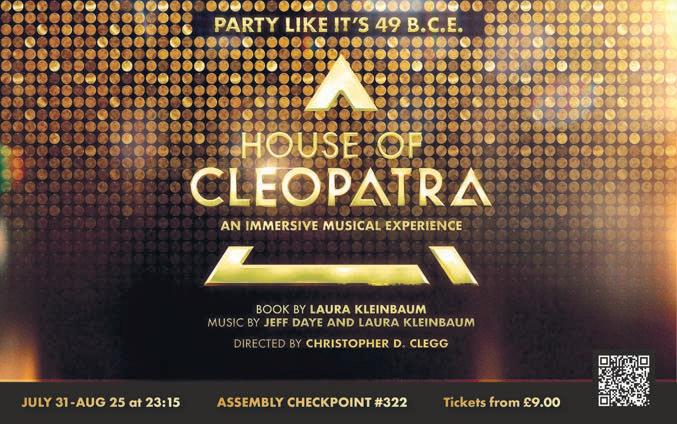
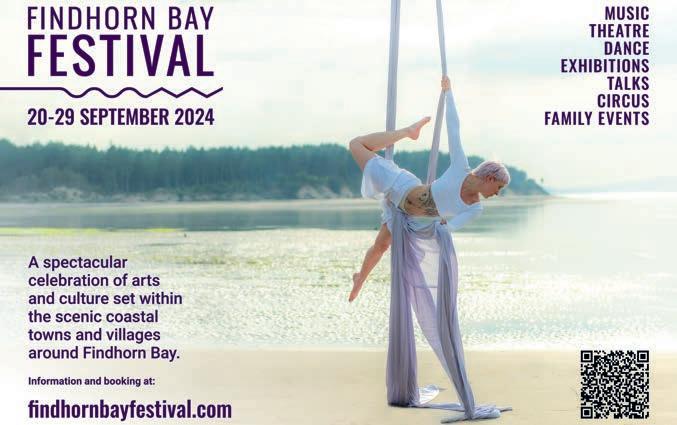
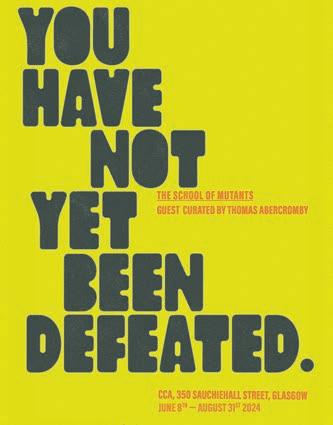
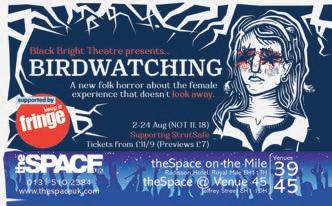
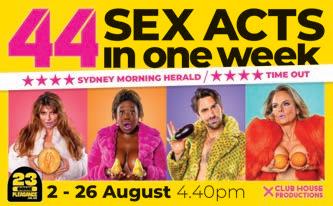
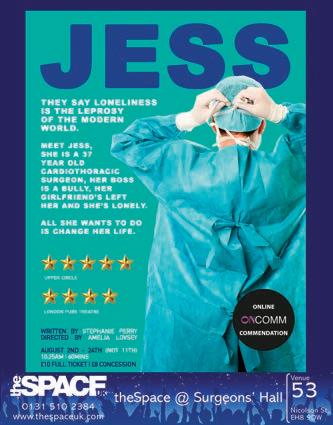



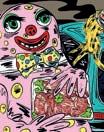
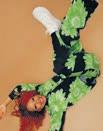
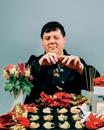


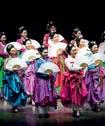
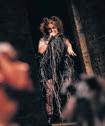
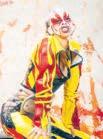


28 Edinburgh Festivals Special! We talk to the folk from The Elysian Theatre, LA – the venue behind some of our favourite recent Fringe hits.
31 As she prepares to bring her fourth solo hour to Edinburgh, Sarah Keyworth talks peoplepleasing and compassion.
32 Yorkshire’s bi est bastard Frankie Monroe (aka Joe KentWalters) transports us back to 1977 for a Dream Gig.
35 Hotly-anticipated debutante Kemah Bob discusses Fringe anxiety and joy.
40 We meet four theatre companies bringing food-flavoured productions to the stage
42 Writer, actor and theatremaker Isla Campbell on Edinburgh, the Fringe, class and creativity.
45 We speak with some of the artists bringing Palestinian theatre to this year’s Fringe.
46 One writer journeys across the globe for a preview of ARI: The Spirit of Korea
49 Irish musician and theatre artist Ois O’Donoghue introduces HYPER.
50 Wet Mess on drag spectacle TESTO.
52 Edinburgh Makar Hannah Lavery on her new collection Unwritten Woman
56 Edinburgh-based poet Andrés N. Ordorica introduces debut novel How We Named the Stars
59 British-Palestinian author N.S. Nuseibeh on her essay collection Namesake, and connecting her life and experiences with her warrior ancestor.
63 Poet Iona Lee discusses risoprint zine Beasties, an otherworldly examination of the dark side of scientific progress.
66 We meet three participating artists and collectives contributing to Edinburgh Art Festival’s 20th birthday programme.
70 Four emerging visual art critics meet the four emerging artists whose work forms this year’s Platform showcase.
75 As Fruitmarket gallery celebrates its 50th birthday, we have a rummage in their archive.
78 We chat to Carla J. Easton to find out more about new documentary Since Yesterday: The Untold Story of Scotland’s Girl Bands
81 Lisa O’Neill talks about the importance of documenting sociopolitical issues and nature in her music as she prepares for EIF.
82 German writer-director Nora Fingscheidt talks to us about turning Amy Liptrot’s The Outrun into cinema.
86 American indie director Nathan Silver on his ninth feature, Between the Temples
90 Sneaky Pete’s Sunday club night, Postal, discuss clubbing during the Edinburgh Festivals.
98 We catch up with two-thirds of Belfast rap group Kneecap ahead of the release of their eponymous biopic.
100 We speak to Sleater-Kinney’s core duo Corin Tucker and Carrie Brownstein as they prepare to return to Glasgow.
On the website...
Haha even more Festivals stuff if you can believe it. Loads of comedy, theatre and music reviews from across the Fringe, EIF and beyond, plus news of our Besties festival awards and an EIFF preview special of The Cineskinny podcast. Oh, and our weekly new music Spotlight and Music Now playlist, if you don’t wanna get festive/are not in Edinburgh.
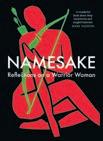

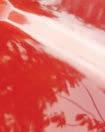
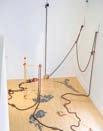

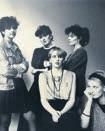
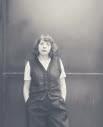

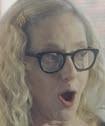



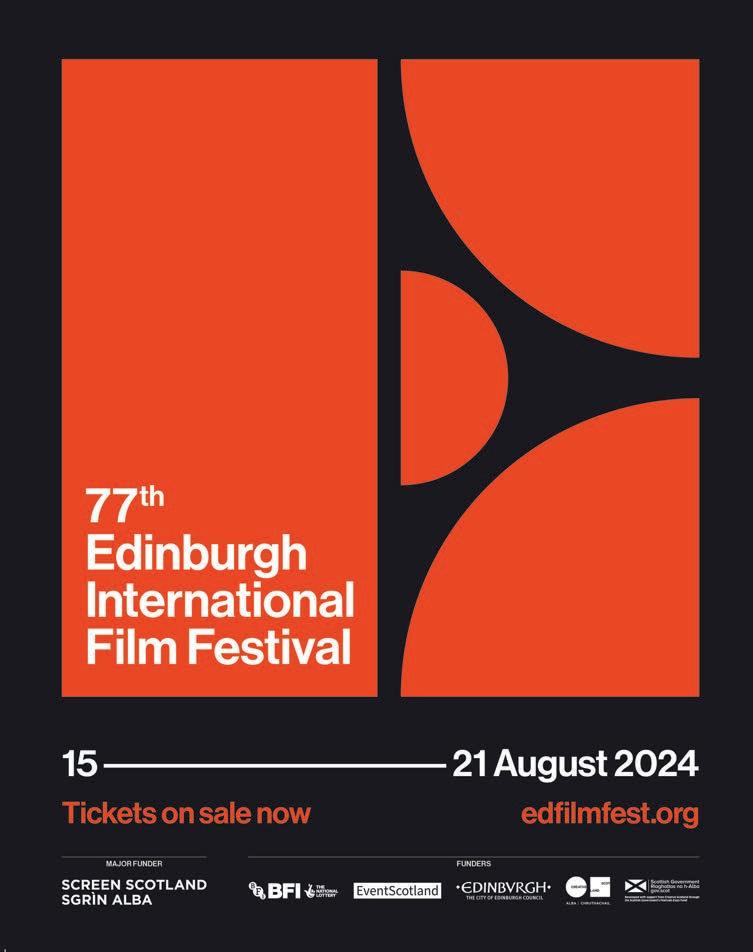
Anthony Gerace
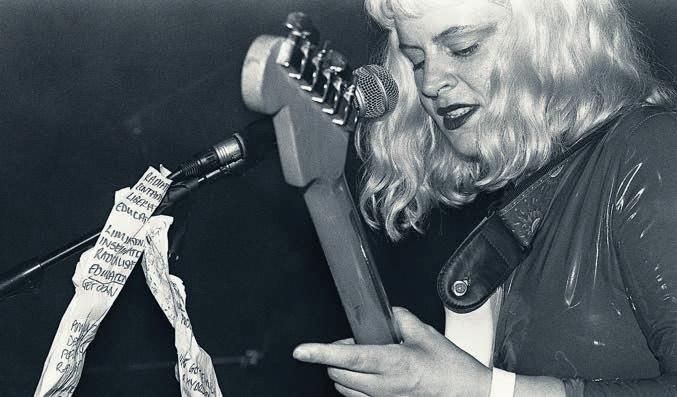
Across
1. (Vocal) critic (7)
5. Hack – take advantage of (7)
9. Soft – schmaltzy (5)
10. Behaviour (9)
11. Public transport rails – part of a tennis court (9)
12. Discordant – mean (5)
13. Bases for busts (7)
15. Likens (7)
17. Gluten intolerant (7)
19. Anticipate (3-4)
21. Devour (3,2)
23. Little scenes – event gist (anag) (9)
25. Histrionics – a male dorm (anag) (9)
26. Delay – kiosk (5)
27. Texts (7)
28. Find them on fezzes (or nipples?) (7)
Down
1. Overact – a hut imp (anag) (3,2,2)
2. Discard (4,5)
3. Devoted (5)
4. Rats (7)
5. All together (2,5)
6. Theatre – toy building? (9)
7. Aroma (5)
8. Lights (7)
14. Caught out – stumbled (7,2)
16. Do something risky (5,4)
17. Articles – pillars (7)
18. Vacates (anag) – disclaimers (7)
19. Parade (7)
20. Scuffles (7)
22. Lighter (5)
24. Alleviates – facilitates (5)
Compiled
by
George Sully
Feedback? Email crossword@theskinny.co.uk
Turn to page 7 for the solutions









In this month’s advice column, one reader wonders how to open up a relationship successfully
Me and my partner are thinking of opening things up. Do you have any advice on how to do this in a healthy way and to limit any jealousy?
Ah, polyamory. The 1960s had the swingers, the millennials had It’s Complicated on Facebook, and we have the mainstream-ification of polyamory, ethical nonmonogamy, and a series of increasingly confusing acronyms on Feeld. What I’m not going to do here is try and persuade you to do it (“it’s kind of fucked, really, to control someone else’s sexual autonomy”) because I am not in the pocket of Big Polyamory, nor am I going to try and talk you out of it (“listen, it’s a very utopian idea but how many successful examples have we actually seen”) because I am not a Tory. But what I will do is gently prod this idea that difficult feelings need to be limited or dispensed with if you’re to have the relationship structure that you want.
What if I told you that you don’t have to get rid of your jealousy! What if it didn’t have to be this shameful emotion, but rather a way of processing your feelings, and an opportunity to sit with your partner and allow you both to tend to whatever anxieties it represents! What if we could understand jealousy not as a crisis response but a natural product of the ways we’ve been socialised to understand love as scarcity, and as an opportunity to reframe that!
I just wonder if it’s time to decouple this strong association we have between polyamory and jealousy – I’ve been in monogamous relationships that gave me far more to be jealous of, and polyamorous relationships that were tended to with tenderness and care. It is, arguably, more important how your partner helps you manage those feelings, than crafting artificial situations where you can pretend those feelings don’t exist. Like, on a practical level: go to couples therapy (and see it not as failure but as support), be honest with yourself about what you want, maintain strong boundaries and lines of communication. But maybe also be OK with the jealousy. If Inside Out and Inside Out 2 taught me anything – and boy did they – it’s that sometimes, we have to welcome our most difficult feelings, accept that they will always be there, and realise that that is no bad thing.
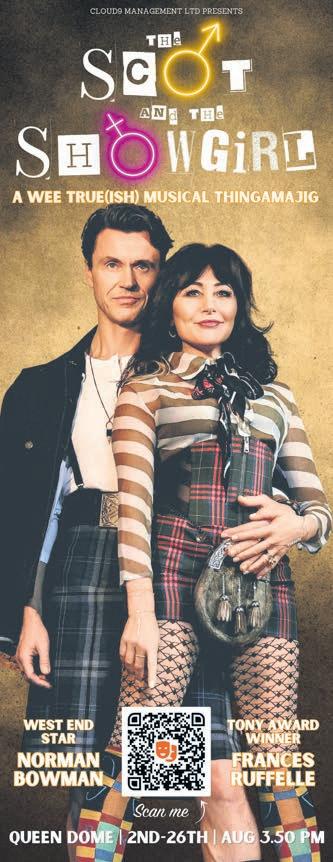

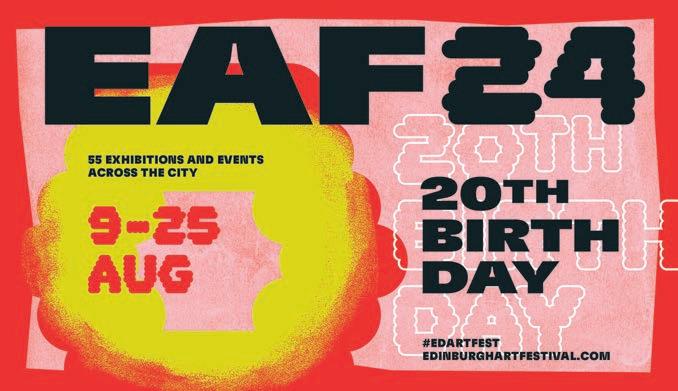

POSTER (p64-65)
This month’s poster is by Rosie’s Disobedient Press, a collaborative project by artists Lisette May Monroe and Adrien Howard with designer Mitchell F. Gilles, part of the project they’ve developed for Edinburgh Art Festival’s 20th birthday. They have been working with archives and organisations local to Edinburgh to look at language and words as a historical act of resistance, bringing this into our modern-day circumstance. Rosie’s will present works of textual intervention, which will appear in print, on clothing, and across windows and banners throughout the city, including at the EAF24 Welcome Space, City Art Centre, 9-25 August.
Illustrations: Sara Arosio
August’s theme is a mega one, extending all the way back to p90 as we take the deepest of dives into the many festivals arriving in Edinburgh this month. We’ve got Comedy’s picks of the Fringe programme, including interviews with Sarah Keyworth and Kemah Bob plus a Dream Gig from Frankie Monroe aka Joe Kent-Walters. Theatre looks at the representation of Palestine on stage, takes a trip to actual South Korea for a peek at ARI: The Spirit of Korea and talks to Ois O’Donoghue about hyperpop and the trans voice.
Books is excited about the Edinburgh International Book Festival, talking to some of the writers appearing including Hannah Lavery, Nisha Ramayya and N.S. Nuseibeh. For Edinburgh Art Festival, we have the culmination of our
collaboration with EAF that pairs emerging writers with emerging artists from the Platform showcase, plus a load of highlights. The centre pages host a very special pull-out poster that links with the programme.
Music meets Lisa O’Neill, appearing at Edinburgh International Festival, and Carla J. Easton, whose documentary on Scottish girl bands, Since Yesterday, closes Edinburgh International Film Festival. Film looks at festival highlights The Outrun and Between the Temples, and we close the theme pages with some words on Edinburgh clubbing and the local relationship with the festivals courtesy of Postal.
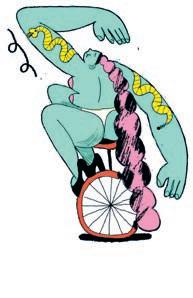
We chat to folk at The Elysian Theatre, LA – the venue behind some of our favourite recent Fringe hits
In Greek mythology, the most heroic souls resided in Elysian Fields. In modern day LA, the Elysian fields are a local park in which resides the Dodgers stadium and a small hill. In the shadow of that hill sits The Elysian Theatre, a century-old silent cinema turned 135-seat independent comedy venue whose Board of Directors includes Natalie Palamides and John C. Reilly. Despite not yet being three years old, the theatre has already played host to Netflix is a Joke Festival and given a home to a community of nouveau clowns and alternative comics in the city. The name’s fitting, really – who could be braver than a clown?
But The Elysian isn’t strictly a clown theatre. They stage shows in every conceivable comedic format, with an emphasis on new work, experimentation, risk. As they put it, “there will be hits and there may be misses, but never boredom.” If you catch something weird this Fringe, chances are it’s only a few degrees of separation away from The Elysian.
was a hit last Fringe and who dramaturges Paulina Lenoir’s debut this year, is one of the first UK acts to perform at The Elysian. He identifies three things which make it different to any venue in the UK. Firstly, the physical space – everyone who’s been mentions how beautiful its stage is. It’s plain and black, but wide and open – the kind of thing that Britain’s mediae val cityscapes just don’t allow for.
exits, ways to hide on the stage, and weird little holes in the walls… it’s literally designed for clowns to play around on.”
organisation itself, run predominantly by performers and clowns. “It feels really homemade in some ways… the best thing about that is
everyone who works there is so up for making your ideas work.”
Like a lot of clown shows, Voices of Evil requires buy-in from the sound desk – the techie needs to feel confident interrupting, creating a game or coming in with a sting whenever Werner starts to flop. “It’s so tricky to make someone understand that, unless they know how to play with you,” says Werner. This relationship is rare, but does exist – Jonny Woolley for example, who techs (and directs) Stamptown, studied clown at Gaulier.
Lastly, it doesn’t feel like there’s the same appetite for show development from UK audiences. At The Elysian, punters are keen to see how a show develops.
Words: Laurie Presswood
“Behind the best wild work, behind the most hilarious things, is a lot of labour, a lot of repetition, a lot of thought and care”
Jacquelyn Landgraf
“They make it quite affordable for audiences to see that development as well… here, increasingly, if you put on a work in progress, you’re paying so much for a venue that you can’t afford to sell tickets cheaply… You can’t be as experimental with what you’re doing, because you’re so aware that people are paying high prices to see a show.”
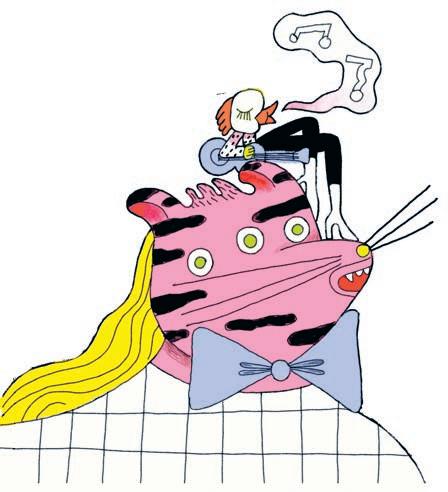
Process is at the very heart of The Elysian’s new initiative, The Edinburgh Percolator. It’s run monthly since April, and aims to support and exhibit the development of shows destined for Fringe. Each Percolator hosts five slots and tickets are $10 for the day. Each session is wild and slapdash, with 15 minutes between acts during which the Mission Impossible theme plays as one artist breaks down their set and the next sets theirs up. Bagpipe music blasts through the speakers, audience members rotate in and out, and acts are encouraged to practise their flyering on the crowd.
When Jacquelyn Landgraf started as the theatre’s Artistic Director on 1 August 2023, she had never been to Fringe (although that’s set to change this month, as she directs Three Sisters Not By Chekhov on the Free Fringe). She wanted to create a nurturing space for the Edinburgh-curious and -committed, so established the Percolator, and its informal after party, Edinburgh Anonymous. The latter sees experienced Fringe acts, both those who’ve had incredible experiences, and artists who have found it really rough, deliver a crash course to prospective Festival-goers.
“It’s really important, I think, as part of The Elysian to be like: behind the best wild work, behind the most hilarious things, is a lot of labour, a lot of repetition, a lot of thought and care,” says Landgraf.
It was natural, then, to let audiences experience the effect of that repetition. Natasha Mercado and Griffin Kelly were already talking with The Elysian about their Fringe plans – Mercado had reached out especially to ask what the theatre could do for work in progress shows. Both performed their shows #1 Son and Ladies Ladies Lotion Time at every iteration of the Percolator.
“You could really follow the bouncy ball development of their shows,” seeing the Percolator as the centrepiece of four months of development for Mercado and Kelly.
Mercado’s been performing #1 Son for over a year now, but always knew she wanted to develop it at The Elysian: “People that are clown-curious float to the Elysian somehow and it really has…
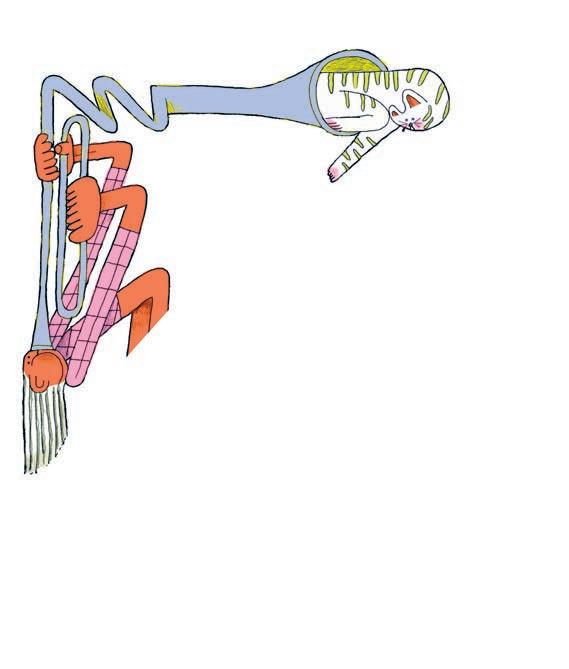
original design for #1 Son on the grounds of it being “too sexy” – the new version features a zipped-up hoodie which Mercado AI-imposed over her six pack. She explains that she never set out to skewer religion – this is just an expression of how a clown looks at the world.
“I didn’t set out to be antagonistic but in hindsight I’m realising it has so many [religious] symbols in it that people take very, very seriously. I asked my Grandma who lives in Bolivia (she’s Christian): is this bad that I’m doing the show? And she’s like, ‘No, God loves to laugh.’ So if my Grandma can say that, then it’s fine.”
#1 Son - Natasha Mercado, Underbelly Cowgate (Iron Belly), 1-25 (not 12), 11.10pm, £7-11
Paulina Lenoir: Puella Eterna, Assembly Roxy (Downstairs), 31 Jul-25 Aug (not 12,19), 10pm, £7.50-12.50
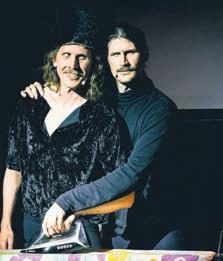
sounds like a storm of all kinds of comedy with shades of clown, stand-up and multimedia. Joz Norris and Ben Target are named as having some input on the show too, which sounds like a stamp of approval to us.
Silly Aussie boy Josh Glanc (Monkey Barrel (MB1), 31 Jul-25 Aug (not 7,14), 3.20pm, £5-8) is also here. In Glanc’s latest he faces a choice – should he settle down and become a Family Man or is the late night comedy-party life more alluring?
Finally, we’d be remiss not to mention that Mr Chonkers makes an appearance at Fringe for TWO NIGHTS ONLY. The cult Skinny-fave is at Monkey Barrel 7 Aug (MB4, 5pm) and 19 Aug (MB3, 11pm, both shows £10). Chonkers also hosts Pi y Time (Monkey Barrel (MB1), 1-3 Aug, 11.55pm, £10), his madcap showcase which boasted spots from Natalie Palamides, Furiozo and The Duncan Brothers last year (all of whom have their own shows this Fringe too).
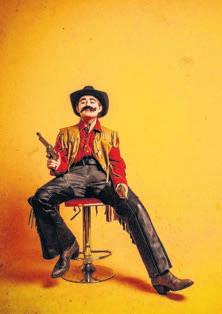
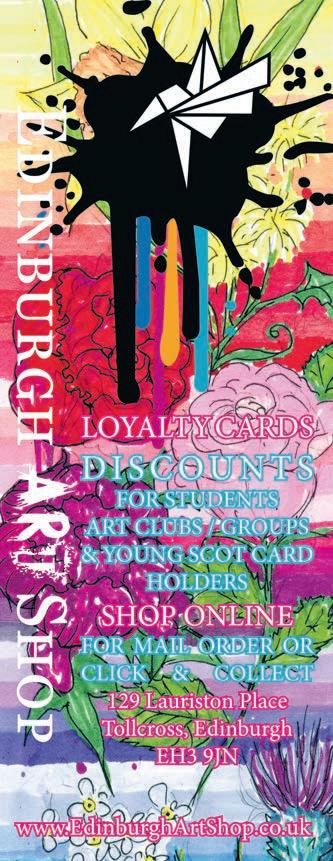

Scampish Sarah Keyworth brings their fourth solo hour to the Fringe and it’s set to be this summer’s scorcher, packed with cheeriness and compassion
Words: Sarah Hopkins
Sarah Keyworth is a self-proclaimed “people-pleaser,” and it’s somewhat evident; not just in their stand up, but in this interview (“I spoke for so long,” they say, after speaking for a perfectly acceptable amount of time, “I’m so sorry!”).
Keyworth has been on the circuit for well over a decade, but their online presence in recent years has bolstered their popularity to dizzying heights. Clips of their crowd work often go viral, not just for the usual quick-witted swipes at hecklers that audiences are perhaps used to seeing from experienced comics, but more for the fact that the interactions are genuine. They’re born from curiosity, and the breezy humour which is seemingly inherent to Keyworth’s character is simply an added bonus.
“I always loved the spontaneity of live standup when I watched it when I was younger… those moments of artists talking and you feel like it’s exclusively happening with those people in that space, I always found that to be the most exciting.” Keyworth is keen to make sure their audience is having a good time, and in their latest hour My Eyes Are Up Here, a show which Keyworth claims is their “most cheerful yet”, a good time is all but guaranteed.
Being a people-pleaser isn’t to say, however, that Keyworth shies away from the topics that a more intolerant (read: ignorant) crowd would find displeasing. My Eyes Are Up Here is a direct exploration of their decision to undergo top surgery, and, more specifically, their family’s response to that.
“Luckily,” Keyworth reassures us, their family “are all very loving. They’re funny without being horrific or traumatic.” The love is apparent: one of two phone calls Keyworth receives during our chat is from their mum – “my brother’s getting married in August, and you’d think my mum is getting married in August” – and the other is from a food delivery company about a care package Keyworth is trying to send one of their mates.
It’s a rare but refreshing insight into a standup’s real life, and one that isn’t fraught with worry or distress. Keyworth loves and is loved in return, and the security that offers is palpable. And now, thanks to their virality and the years of solid graft, Keyworth can enjoy an already pretty much sold-out Fringe run, and deliver an hour that’s just won Most Outstanding Show at the Melbourne International Comedy Festival with confidence. “It’s lovely,” they say, about having a crowd that
“Nothing gets commissioned at 4am in the Pleasance Dome. Go to bed”
Sarah Keyworth
knows them now. “It’s good to be like ‘I’m exactly who you thought I was gonna be.’”
As a Fringe veteran, Keyworth has some sound advice for those just starting out – “Don’t.” Then, if you must, try not to fall prey to FOMO.
“There’s sort of this mythology of the Fringe of people getting discovered and careers being made in conversations at bars, of deals being done – nothing gets commissioned at 4am in the Pleasance Dome. Go to bed.”
They emphasise how important it is to stay well during a gruelling, month-long run a couple of times: “Look after your body and brain,” their words laced with what now feels like their trademarked genuine thoughtfulness.
My Eyes Are Up Here yields no big surprises, not that Keyworth can remember anyway, and is a step away from themes of loss, grief, and sexuality that we’ve seen from Keyworth before. Touching on a topic like gender identity (although not the crux of the show), which already suffers intense scrutiny and speculation, means that a big twist or a sucker-punch isn’t really necessary. Perhaps, compassion and care are what’s actually needed instead, and we’re certain Keyworth will deliver on that front, with some excellent punchlines to boot.
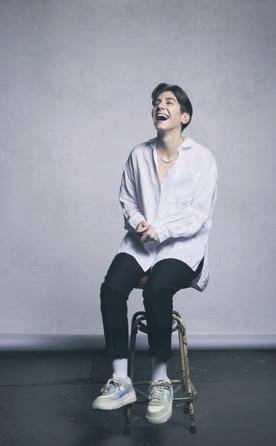
men? There’s gotta be some men. There’s gotta be. And there’s men – go see the men,” with Dan Tiernan getting a look in too.
Finally, while they’re up in Edinburgh, Keyworth’s keen to shout out some of the acts they’re really looking forward to seeing. Louise Atkinson and newbie Dee Allum both get an early mention and the likes of Lara Ricote, Ania Magliano and Olga Koch all quickly roll off their tongue. Suddenly, they realise. “Have I said any
£12
Also touring to Glee Club, Glasgow, 23 Oct
@sarah_keyworth on Instagram and @sarahkeyworthcomedian on TikTok
Yorkshire’s bi est bastard and BBC New Comedy Award Winner Frankie Monroe transports us back to 1977
Illustration: Jack Murphy
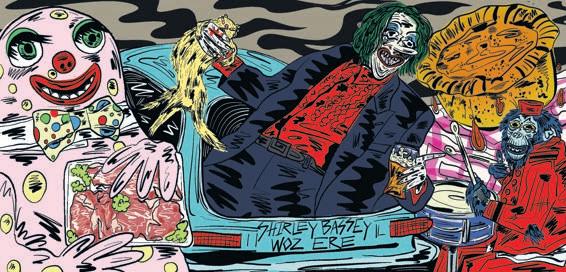
Ever since I was a young lad I had dreamed of performing at Batley Varieties. For the uninitiated, Batley Varieties was Yorkshire’s answer to Vegas, but less Elvis and more meat pies – heaven on earth! In 1977 I had my first time performing at the club. I’d caught the attention of the promoters after appearing on the TV show Opportunity Knocks with a routine involving three spoons and a thirsty ferret – while the routine never made it to broadcast for legal reasons, word had spread of my unique act.
Before I’d even arrived at the venue my showbiz dreams were starting to fizzle into reality – a car had been sent to pick me up! Well, not just me, they had also collected four members of the catering staff who were taking up the main passenger seating, so I got thrown in the boot. As I lay there in the darkness, I could just about see something etched into the rusty tin lid of the vehicle. It read ‘Shirley Bassey woz ere’. I took a big whiff, Bassey’s iconic scent filled the trunk; Lambert and Butler cigs, wafer thin ham and just a hint of stale piss. I smiled, Frankie was home.
Next thing I knew I was sharing a dressing room with some of the bi est stars of the day. There was Bobby Davro, Elsie Doubloon and Billy Batter, whose act was to deep fry any item the audience brought along. Legend has it he once battered a whole Ford Escort! But the time for gawping was over. I had to grab it by the horns, get on stage and show Batley what I was made of. The show itself was a blur. All I remember is the smell of ferret blood, the sound of screams and the feeling of strong buff arms carrying me off the stage. What a night!!
After the incident in Batley I was banned from most clubs on the northern circuit, even Barnsley wouldn’t have me! So I had no choice but to let the audience come to me and start my very own club in Rotherham, The Misty Moon Working Men’s Club.
That would be the location of my dream gig, a beautiful home crowd gathered within my own murky depths. Of course,
I’d have a few special guests dotted around the audience: Chris Tarrant, Blobby and perhaps that plucky young lad who nearly won the darts.
I would be the compere of course but as this is my dream gig I’d like to make a big entrance. The curtain would rise to reveal a gigantic meat pie, its pungent scent filling the room. Onto stage hobbles a very handsome chimpanzee dressed like a little bellboy (something for the mums), who makes his way over to a snare drum stage left and begins a drum roll.
As the roll reaches its climax, the lid of the pie begins to twist open like a manhole cover. The pie lid flings off into the crowd and they begin to ravage it like a pack of wolves, it’s gone in seconds. Attention turns back to the stage, the whole pie is gone too!! In its place there I stand licking my gravy-covered chops. With a cheeky smile I shout out my catchphrase, “Whose pie is it anyway?” The audience cheers – the show has begun!
In terms of acts, I’d love to get on Bully the Bull from Bullseye. I’m not sure if he’s got a club act but I reckon he’d do a cracking cover of Sex Bomb (another thing for the mums!)
Unfortunately, a lot of my favourite acts are dead. But I think I’d like to take the living halves of both the Chuckle Brothers and Chaz n Dave then smash them together as ‘Chuckle Dave.’ Perhaps they could just pass a guitar between them in a comical way, or sing Snooker Loopy but Paul Chuckle has forgotten the balls!
Naturally we’d have a classic meat raffle – grand prize, some Taste the Difference lamb (difference is, it’s mutton).
After the gig I’d celebrate how I always do, nothing fancy, just a mug of hot Bovril and a Neighbours omnibus on the box!
Joe Kent-Walters is Frankie Monroe: LIVE!!!, Monkey Barrel (MB2), 29 Jul-25 Aug (not 14), 11.35pm, £7-12
@joekentwalters on Twitter and @joe_is_frankiemonroe on Instagram
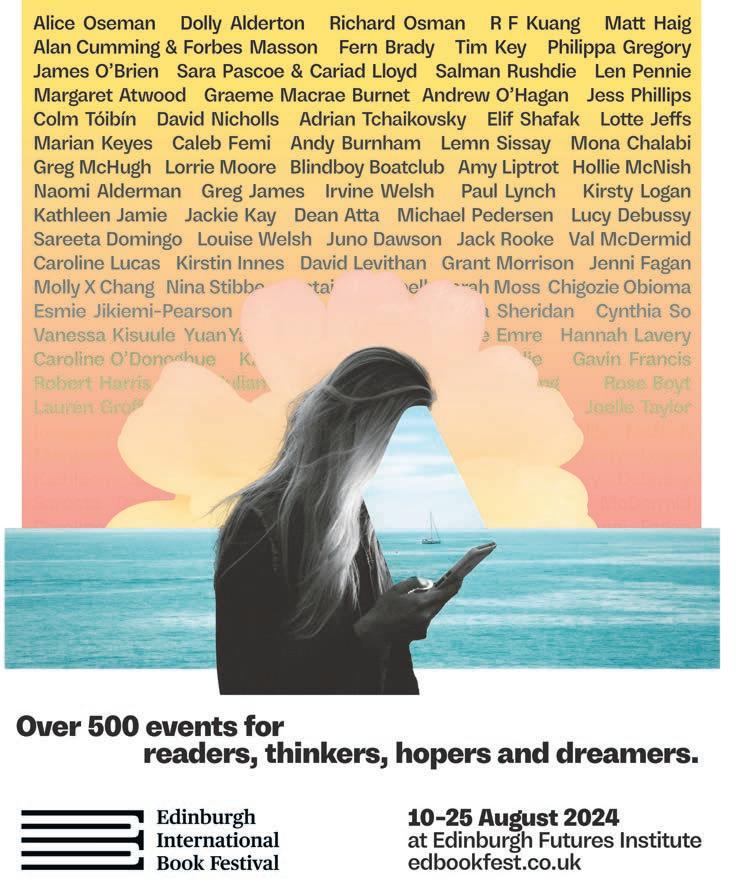
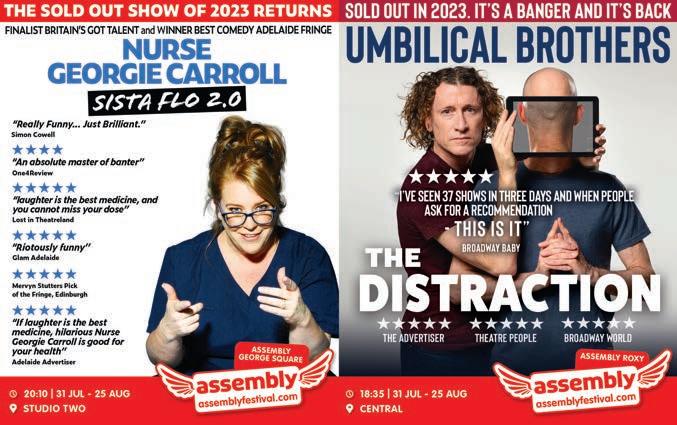
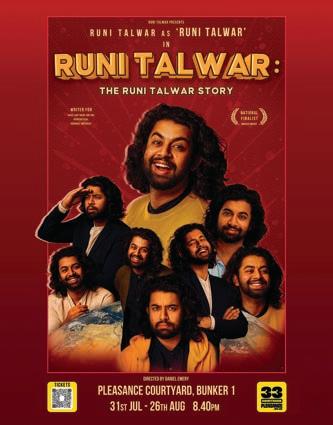
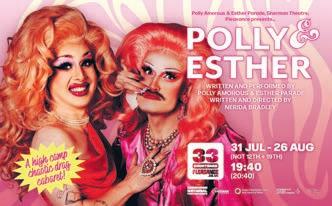
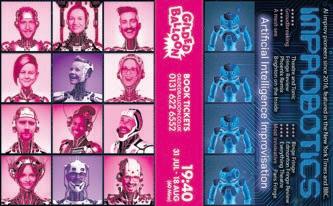
We chat anxiety, tiny crowds and supporting marginalised artists with hotly-anticipated Fringe debutante, Kemah Bob
Words: Polly Glynn
Already a notable voice on the UK comedy scene, it feels like Kemah Bob should have brought her debut hour, Miss Fortunate, to the Fringe ages ago. She sees her festival absence (until now) as an act of “self-preservation... It is a stressful time and I don’t like stress. I’m allergic to it.”
“I’ve had the Fringe described to me like war. People just in the trenches”
Kemah Bob
Bob first came to the Fringe in 2018. After her friend landed a dream job, their two-hander quickly became a reworked compilation show starring pals on the circuit, including Alison Spittle who was at the first gig. “There was an audience of three or four people. And I hated it. I almost pulled out. And Alison was like ‘No. We can do this.’” A tiny audience can be even more nerve-wracking than a huge crowd. “When you’re performing to thousands of people, it’s just like ‘Cool. If I get 70% of the room, that’s a huge win.’ But when it’s four people, that’s three of the four people!”
But it’s not just small audiences which gives them the fear. “I’ve had the Fringe described to me like war. People just in the trenches.” Bob cites the soaring highs and crushing lows friends have experienced, being surrounded by industry people who are always ‘on’ and finding space to recharge alone as her bi est stressors.
There’s also the party vibe which takes over the city. “I’m concerned about the fact that bars are open until like 4am. I have a real hard time going home,” she emphasises.
Bob is excited about the festival though, she promises. “I’m looking forward to sharing what I’ve created and what I’m still creating,” as well as “having the opportunity to establish my voice in a way you can’t do in five, ten, 20, 30 minutes.”
Bob is keen to keep their show fluid, leaving room for change and honing throughout the month. “If the show was cemented at this point, I might get bored.” Fun, too. “I feel like
it’s so cliché, but fun is contagious and joy is contagious. And I’m trying to create something that I care about and that I emphatically look forward to sharing and performing so that I can do it for however many days in a row.”
There’s also the tricky line between silly and meaningful which most Fringe comics contend with. Once she finds the bridge between them, she’s worried she’ll say something which will “suck some of the joy and silly out” and disrupt the balance she’s skillfully built.
Loath to give too much away, Miss Fortunate revolves around something life-changing happening on a trip to Thailand. “You don’t really know, until you experience first hand, how crazy and dangerous and insidious the world can be. I have so many friends who’ve had really joyful experiences like petting elephants and doing yoga and shit in Thailand, and I thought I was gonna have that and I did not.”
Bob’s also known for regular night FOC It Up, which celebrates comedians of colour who aren’t cis-men. Although it won’t be coming to Fringe this year, so Bob can focus on their own show, curating lineups has become much easier since the gig started. “It feels like the general comedy landscape is changing,” opening more doors to artists of
colour and comedians from marginalised genders.
Yet for marginalised artists to thrive at the Fringe, they need more specialised financial support to make and present work at the festival, and to encourage diverse audiences to attend. In turn, the artists will feel more supported by “performing to people that remind you of yourself or that are a reflection of you.”
These artists work harder to connect with their crowds, Bob says, which can be isolating and offputting for newer acts. Then you get diverse audiences not wanting to attend the festival because of the prohibitive costs, and not seeing themselves represented in the programme. “It’s a tough cycle,” she sighs.
As for surviving the Fringe, Bob’s been advised to “get out of the bubble, go explore the beauty of the city,” emphasising that Edinburgh exists all year round. “There are [other] things to engage in. Go to the cinema. Go see some shows that aren’t comedy (but also go see some comedy)”, excited at the prospect of being inspired by other artists’ work. “What I don’t want to do is wait for the buzz to tell me what to see,” Bob says.
7:05pm, £9-£14
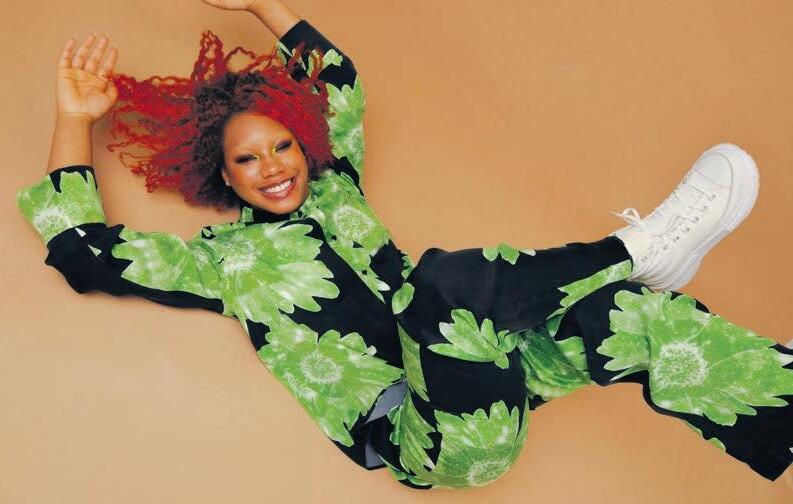
Two acts debuting at this year’s festival, Hannah Platt and Amy Mason, take five minutes to give themselves some sage Fringe advice
Dear Hannah,
At the last work in progress you did when writing this, someone called the show ‘a bit northern’ (it isn’t, you’re northern and they’re a prick). I’m only reminding you of this to say, some people are stupid. And stupid people like the sound of their own voice, so you’re more likely to hear them.
“Some people like camping and onions, and they’re wrong”
Hannah Platt
Not everyone will like your show at the Fringe, because you don’t want everyone to like it. Some people like camping and onions, and they’re wrong. If everyone liked it, it would be bland, inoffensive, and more importantly, no one would LOVE it. The shows you’ve seen, that you’ve been obsessed with, have felt like they spoke directly to you. They felt like they captured something unique and had a point of view – by definition, not everyone can like that. There are people who will see that Rolling Stone cover with Kristen Stewart and remain attracted to men regardless. Yeah, some people will hate it. Some people will project what they think of northerners, women, queerness and mental illness onto you, and that’s their issue. You’ve made this show for you – the big deal was to do it in the first place, and to put it out there –there are people who are too scared to do that, and let’s be honest, you’ve been one of them for ages. You’ve made the show now, and how it’s received is not your business. Art is subjective, and you’re at an arts festival, so your show’s art, alright?

Don’t be daft, have a two drink maximum, go swimming, see your real friends, eat hot pot from that place near the Meadows, and focus on how fun it is to do a show every day. Every day! The amount of shite jobs you’ve done and you get to do your favourite thing every day. Enjoy it, you miserable prick.
Xoxo, Hannah
Dear Amy, You’re about to take your first comedy hour to Edinburgh Fringe, and you’re a blob of excitement and nerves. Getting to this point hasn’t been easy, financially, emotionally, or creatively and you should be proud. Now try not to get off with someone in the first week and make things weird all month. Ignore the pressure to sell out your shows and get great reviews. Instead, make goals you can control; try a new shampoo! Eat at least one great sandwich! Splash out on a new pair of socks!
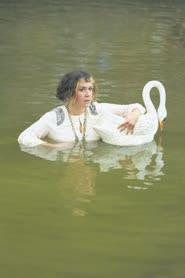
You have wrestled with this show (my God, have you), its focus shifting, until it’s become something that feels as much like the truth as anything can be, while still being funny. Perhaps debuting at 42 made things harder in some ways; you have lived so much life! So much of it ridiculous! Where to begin? You’ve settled on dissecting the past few years since coming out as queer and separating from your husband. It feels like, in some ways, telling this story again and again might even be healing (future Amy laughs a bitter, hollow laugh at her naïvety here).
Eleven years ago you took a piece of theatre to the Fringe. It was a show you remain immensely proud of, but you were totally unprepared for the relentless, exhausting work that is a full run. Now, you are older, way more tired, and much less likely to stay out all night and lose your mind.
You don’t know what the next month will bring. Try to stay focused on the work, the audience, and keep your head. Ignore the chatter and the twats, hang out with mates, eat loads of crisps, laugh. It’ll be over before you know it.
Amy xx
Hannah Platt: Defence Mechanism, Pleasance Courtyard (Cellar), 31 Jul-26 Aug (not 12), 8pm, £9-12
@hannahtheplatt across all socials
Amy Mason: Free Mason, Pleasance Courtyard (Cellar), 31 Jul-26 Aug (not 12), 8pm, £9-12
@amymasoncomedy across all socials

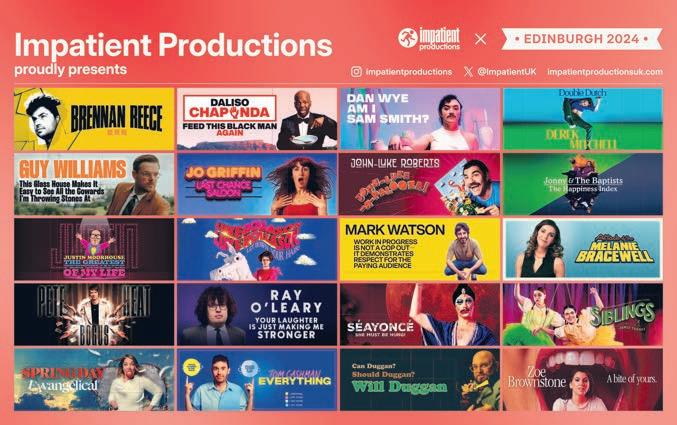

More funny shows than you can shake a stick at...
With over 1500 shows in the Fringe’s comedy section, it’s hard to know where to start. We’ve already talked up Scotland’s best talent, picked some more alternative shows, and would heartily recommend everyone we’ve featured in July and August’s issues (*deep breath* Kathleen Hughes, Sam Lake, Dean T. Beirne, Alex Franklin, Hannah Platt, Amy Mason, Kemah Bob, Sarah Keyworth, Natasha Mercado, Paulina Lenoir (via Lachlan Werner), Joe KentWalters and The Duncan Brothers)...
But just when you thought your spreadsheets were full and your ticket budget maxed, along came these piping-hot recs:
Debuts
We’ll be seeing Jin Hao Li (Pleasance Courtyard (Below), 31 Jul-25 Aug (not 14), 7.10pm, £9-12) early doors. His first Fringe hour will be a softly-spoken, razor-sharp success.
Dee Allum should also have a stellar year. The ex-Pleasance Reserver’s Deadname (Pleasance Courtyard (Below), 31 Jul-25 Aug (not 13), 4.30pm, £9-13) is a love letter to her pretransition self through theatre kid beginnings, teen crushes and coming out at an all-boys school.
From Australia, Mel & Sam (Pleasance Courtyard (Below), 31 Jul-25 Aug (not 12), 9.50pm, £8-14) bring a chaotic tangle of music and sketch to Fringe. Hotly tipped in Adelaide and recommended by big Aussie comedy names, it’s one for the unhinged girlies.
Martin Angolo (Underbelly Bristo Square (Clover), 31 Jul-26 Aug (not 12), 5.25pm, £8-12) is already well known back in Ireland, having appeared on telly alongside Catherine Bohart and Aisling Bea. His Fringe debut promises no nonsense observational standup about Irish culture and its quirks.
Returners
Lou Wall’s 2023 show was a sleeper hit – her terminally online, multimedia stylings garnering a cult following. This year it’s The Bisexual’s Lament (Pleasance Courtyard (Beneath), 31 Jul-25 Aug (not 15), 10.20pm, £10-15), a spiralling tale of heartbreak and worse. Despite no Delightful Sausage this Fringe, we’re excited to see its main ingredients have their own solo shows: Chris Cantrill’s (Monkey Barrel @ The Tron (Tron), 31 Jul-25 Aug (not 12,13), 12.10pm, £5-10) is a daft dive into male friendship and isolation, while Amy Gledhill’s (Monkey Barrel (MB1), 13-25 Aug, 6.10pm, £10) will be a charming confessional about romantic mishaps and bin bags.
Glasgow-based Amelia Bayler is in town with Easy Second Album (Scottish Comedy Festival @ Waverley Bar, 2-14 Aug, 12.15pm, £5-15 PWYW). Expect an upbeat, energetic show with, undoubtedly, some proper club bangers about snacks.
Back Again
Crazed Regency gal Clementine (Underbelly Cowgate (Iron Belly), 1-11 Aug, 6.40pm, £8-12) is back for a second time. Rosalie Minnitt’s 2023 character show is a wild quest for love featuring some (surprise) Sylvanian Families.
Not content with creating one brilliantly-titled hour, John-Luke Roberts (Monkey Barrel (MB4), 31 Jul-25 Aug (5, 12, 13 and 19), 2.10pm, £10) revisits all his past shows in order until the Fringe ends. We’re desperate to see Stdad-Up again, the brilliant clown hour which laid bare his relationship with his late father, and several of his other shows we missed.
WIPs
Last year’s Best Newcomer, Urooj Ashfaq, returns with a short-run WIP (Assembly Roxy (Downstairs), 16-25 Aug, 12.30pm, £8). Her endearing stage presence will add sparkle to this show’s new beginnings.
Glenn Moore (Monkey Barrel (MB1), 30 Jul-12 Aug, 11.05am, £10) also has a Work-in-Progress at Fringe. One of the master joke crafters in UK comedy, it’ll be a densely packed hour of quickfire laughs.
Post-midnight, we’ve spotted the Underground Monk Show (Banshee Labyrinth (Chamber Room), 4-8 and 11-15 Aug, 12.15am, Free/PWYW) – absurdist clowning from the cream of LA’s scene (including The Amazing Banana Brothers’ Bill O’Neill and Mr. Chonkers – John Norris). We’re giddy thinking about this chorus of late-night stupidity.
One-Offs & Short Runs
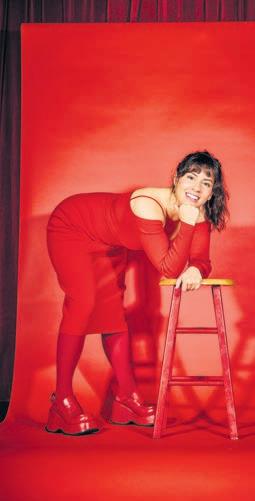
tickets quickly.
Late Night with Terry Wogan (Assembly George Square Studios (Studio 1), Fridays (2,9,16,23 Aug), 11pm, £16) will be a gonzo highlight – a riot of anarchic guests and character comedy perfect for Friday nights at Fringe.
Chunks regular Richard Brown appears with a new show for one afternoon (Monkey Barrel @ Hive (Hive 2), 14 Aug, £8). Close-to-the-bone humour with an alternative edge – snap up your
Finally, we’d recommend Bedlam Lates (Bedlam Theatre, Thu, Fri, Sat (not 1 Aug), 12.30am, £10). Programmed by Liebenspiel Presents (folk behind the Terry Wogan shenanigans), each one-off show is a slice of alternative fun spanning comedy, cabaret and performance art. Our interest’s piqued by Blokenite, a Drag King pageant co-hosted by Kathy Maniura and Frankie Thompson’s Midnight Movie Marathon
Cooking is a demonstration of care, at once a balm and a bridge – we meet four theatre-makers bringing food-centred shows to the stage this August
Words: Josephine Balfour-Oatts
Sierra Sevilla is recounting a potent childhood memory. She is 11 years old, sitting with her family in a tinned-roof house, while a super typhoon seethes outside. “I just remember the lights being off, us having candles, some torches. Mum was making us Spam.” Despite the fear that she felt at the time, she looks back on moments such as this with fondness. “I used to literally pray for storms to happen, so that I could have Spam. I loved it so much and Mum would only make it during a storm – in my head, I associated those two things.”
On moving to the States aged 18 to attend university, Sevilla was shocked to find that Spam was regarded with suspicion, and widely perceived as a ‘mystery meat’. She was shunned by her peers for cooking it, and often resorted to eating Spam in secret. Their scorn implied that she had historically enjoyed ready access to fresh food, which was not the case. The U.S. owns over 30 percent of Guam’s land (which is only 30 miles long and eight miles wide) and as a result, the island lost its ability to be self-sustaining.
As Spam is a U.S. product, Sevilla often questions whether its status as a cultural identifier indicates rebelliousness or submissiveness on the part of Guamanians. It is an idea that she explores at length in her show, For the Love of Spam, which is set to cause a scene at the Edinburgh Fringe this year. Sevilla’s husband’s aversion to Spam was a direct inspiration for the making of the play – as with her university cohort, she experienced his distaste as an affront. A rejection of some core part of herself.
Made in collaboration with her friend and director, Izzy Rabey, the show comprises myriad disciplines. Borne out of their shared personal experiences of colonisation (Rabey has Welsh heritage) and training in Applied Theatre, their combined approach seeks to break away from rigid structures of thinking. Here, audiences are invited to share the stage with Sevilla, share a meal, and embark on an act of liberation the likes of which the people of Guam have yet to experience.
Sean Wai Keung’s A History of Fortune Cookies is similarly generous in its design. What started as an attempt to contain the story of his grandparents (who previously owned a Chinese takeaway), soon turned into a fascination with fortune cookies, which are notable for being without a set identity, and no one place or time of origin. It is an echo of the Chinese takeaway – also representative of liminality. Neither Chinese nor Western, it exists someplace in-between.
The play sees Keung make and bake an array
of fortune cookies for an intimate audience of ten. A meticulous 30 minute timeframe provides one part of a regimented artistic framework. The recipe Keung uses is simple – comprising flour, sugar, and water, he uses e -replacement powder to complete the batter, eschewing whole e s in favour of making the theatrical experience more inclusive. While he doesn’t practice veganism, or have any food-sensitivities himself, Keung is sensitive to flavour. “The whole point of food is community,” he says, and he sounds as if he is smiling.
The most chaotic part of the show involves folding the fortune cookies into their characteristic crescent shape. Keung is quick to leap to the overlap between restaurant culture and theatre here: “I’m really interested in hospitality,” he says. “It is such a caring thing. It takes so many shapes. When you are giving someone food, they have to feel safe with you, they have to trust you.” While Keung has never had any formal food training, he has always had a great passion for the art of cooking. He has never seen himself as a theatremaker – rather, it is the connective possibilities of food that excites him.
“The whole point of food is community”
Sean Wai Keung
There are few surviving records attesting to the genesis of the fortune cookie, and Keung sought to supplement his historical research with interviews. That the piece offers audiences the opportunity to choose between writing their own fortunes, or writing a fortune for someone else (imagined or otherwise) adds an element of freedom to his otherwise inflexible creative structure. The eating of the cookies provides an opportunity for nurture. “The act of feeding yourself can be a particularly intimate form of self-care,” he says. In our contemporary food climate, sweet treats in particular are maligned, often surrounded by stigma and shame. Keung notes the elitist, classist implications of this line of thinking, and he invites audiences to enter into his performance space with a more nuanced attitude.
As with For the Love of Spam, the relative ‘mysteriousness’ of the fortune cookie risks becoming a negative qualifier, proof of the deepseated biases that exist around the cultures attached to it. When reckoning with the idea of ‘not belonging’, an empathetic approach is required. It is this practice of empathy that provides
the backbone for Ugly Bucket’s Stuffed – here described not as a show about food, but about food banks.
In 2020, during the height of the pandemic, when the known world ended for a while, one member of Ugly Bucket took it upon themselves to volunteer at the Wirral Coronavirus Helpline. The service was stormed with calls relating to the distribution of emergency food, with people in varying states of financial crisis requiring regular and immediate assistance. “As a company who give platforms to social issues or to taboo topics, we felt this pull for this to be our next venture,” co-artistic director, Grace Gallagher, tells me.
The company embarked on a year-long research and interview process, recording hours of testimonials from food bank front-liners, before sampling their recordings into music. Ugly Bucket’s trademark physical vocabulary (which derives from practices of clowning), provides an additional theatrical layer. So far, the experience of making Stuffed has been reminiscent of their 2022 show, Good Grief, which examined bereavement. The company found audiences were often conflicted, caught between laughing and crying. “Stuffed feels similar,” Gallagher says. “Except the audience doesn’t know whether to laugh or scream.”
During their Edinburgh run, the company has plans to engage in a weekly online discussion panel. They will also be giving out pamphlets after each performance, under strict instruction that these not be opened until the morning after. “If you come and see Stuffed, what we actually encourage audiences to do, is to do nothing. To leave, to have a rest, to sleep.” Inside the pamphlet, you will find several teabags. One is for you – the other serves as an invitation to share your newfound knowledge with someone else.
The pamphlet also outlines options for engaging with the cause, which can be tailored to fit one’s capacity. “There are some people who have more money. There are some people who have no money, but more time. And there are also people who have no money, no time, and there are still options.” The company encourages audiences to think deeply about their skills and the ways in which they can be applied to help make a positive difference – the overarching example being Ugly Bucket themselves.
That this company refuses to content themselves with pointing fingers, working instead to provide practical solutions, is as epic as it is refreshing. “It would have been far too easy, especially as a company from Liverpool, to make a show that just goes: FUCK THE TORIES FUCK THE
TORIES FUCK THE TORIES, for an hour,” she pauses. “We really thought about that, and I think it would have been justified, but it also would’ve been too easy.”
Through making the show, and in speaking with as many service users and front-line workers as they have, the company realise that there is no one answer to solving this crisis. The task of the new Labour government is to operate in such a way as to enable material social change. The challenge for Ugly Bucket is to balance their fury with forward-looking movement. So, the company will also be taking food donations every day, and each item will be implemented onstage to help create the set. “It’s quite powerful for audiences,” Gallagher notes. “By the end, there’s this realisation that part of the solution has been there the whole time.”
Ugly Bucket will be working with the Edinburgh Food Project, amongst other food banks in the city, and donations will be divided equally among these partner organisations. Accessibility is key in Stuffed – as well as being captioned, audio description will be available at every show. Elements of sign-supported English will also be incorporated into the piece, and Gallagher hopes this will inspire other companies to do the same in the future.
My English Persian Kitchen also takes as its subject these dual themes of crisis and hope. Based on the true-life story of Atoosa Sepehr, and co-produced by the Soho Theatre and the Traverse, it was Soho’s Head of Theatre, David Luff, who approached Hannah Khalil to write the play. She was sceptical at first. “Initially, I was a little bit ambivalent,” she concedes. “I don’t have any connection to Iran; my heritage is Palestinian-Irish.”
After meeting with Sepehr and Luff on Zoom, Khalil was convinced. “The thing is, the show isn’t really about Iran. It’s about what it is to start again.” This is a story that Khalil knows well – after her parents divorced, her mother was forced to leave the Middle East for the UK to rebuild her life and community from scratch. And so, this is also a story that interrogates what it is to be two things. To occupy the here and the there, the now and the then, the native and the new.
While the story is told in both Farsi and English, food acts as the foremost means of communication in the play. Both Sepehr and Khalil taught themselves to cook in their later years, and for them, food remains a mode of transport, a fast track to the places they cannot travel to physically. Khalil goes on to describe the Persian noodle dish, Ash-e
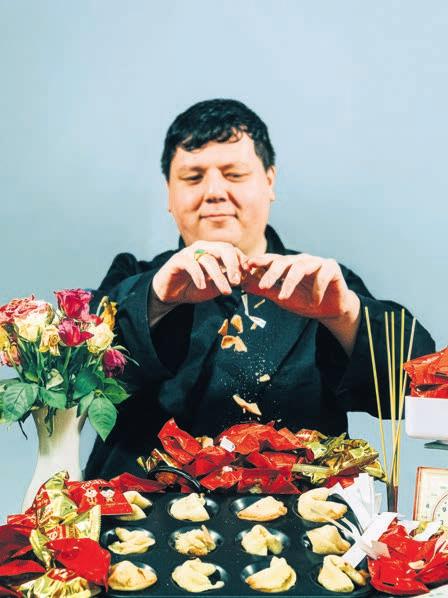
This was the last meal
had before fleeing an abusive marriage and, by necessity, her homeland. Khalil lists the necessary ingredients, cradling each image as she does so, loving them into shape, as one would a growing child.
Khalil is passionate about the potential for food as a conduit for love. Food is incredibly dynamic, and this fact feeds into the rhythms of the piece itself. “It’s not a talking-head play, it’s very physical,” Khalil confirms, referring, somewhat obliquely, to the set – here, a “deceptively domestic” kitchen space. She applauds the director and dramaturg, Chris White (who also happens to be her husband), and the play’s sole actor, Isabella Nefar. “She’s so focussed, so rigorous, so detailed…” Khalil trails off. “And she can cook!”
Soon, Khalil must disappear, away to the rehearsal room. But first, she offers one final reflection: “There’s a very Western idea that there’s this formula to playwriting, that there’s this recipe.
I’ve always pushed against that. There’s something much more sensual about breaking those rules, that has softer edges, that meanders and flows, as opposed to adhering to a very strict structure.” Her willingness to push against artistic boundaries puts me in mind of Sepehr’s strength of character, and I say so. “Atoosa’s a really inspiring person,” Khalil says, firmly. “She really wants people to come away from the show, knowing that life can change. That you can change your life.”
For the Love of Spam, Pleasance Courtyard, 31 Jul-26 Aug, 2.10pm, £9-16
A History of Fortune Cookies, Summerhall, 12.15& 12.50, 1-26 Aug, £10-12
Stuffed, Pleasance Courtyard, 31 Jul-26 Aug, 2.25pm, £10-16
My English Persian Kitchen, Traverse Theatre, 1-25 Aug, £15-22.75
Writer, actor and theatremaker Isla Campbell writes about their experience of the Fringe as a working-class Edinburgh local, and about Shark Bait’s new show, Tartan Tat
When I was 15 years old, I was walking down the Royal Mile to my grandma’s council flat after school. I was approached by a sweaty performer who thrust a flyer into my hand and said to me, “Love the costume, what show are you doing?” I was in my school uniform.
Growing up in Edinburgh is a wildly unique experience, for better or for worse. One month a year your home city becomes a bustling hub of the creative industries, the arts capital of the world. However, for the other eleven months of the year you see how painfully underfunded the arts are. With backbones of the grassroots theatre scene like Page2Stage losing their Creative Scotland funding this year, it’s hard to not feel disenfranchised.
Within the hubbub of the festival, it’s easy to forget the working class soul of Edinburgh and how inaccessible the city is becoming. We see so many articles about how the Fringe is becoming too expensive for performers and accommodation too pricey; meanwhile, I have childhood friends that can no longer afford to live in Edinburgh – despite growing up here and living here for their whole lives – because rent is too high. Whole streets of flats that once were council flats are now lined with lockboxes, creating a vacant wasteland of what used to be a community. Yet for many local young people, the most accessible jobs are within the tourism industry, creating this strange cycle of feeding the beast; making money from the tourism industry, while the reason we can’t afford to live in this city is because of the tourism industry.
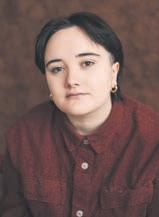
As a working-class creative, I want to centre this feeling in my work. Me and my writing partner, Lex Joyce, took this into mind when writing our 2024 Fringe show, Tartan Tat Tartan Tat is a new comedy about a tourist trap gift shop on Edinburgh’s Royal Mile and the characters that work there. The show shines a light on the real people behind this city and brings a mirror to the Fringe itself. My feelings as an Edinburgh local are all told through the character of Orla, who I won’t go into detail about – you’ll have to see the show to find out yourself!
Tartan Tat is also about online controversy when it comes to trans rights: how things can spiral out of control and how the media uses culture wars to distract people from the true failings of our societal leaders. The minorities within society are not the reason that young people can’t afford houses, that bills are too high or for the general cost of living crisis. As a trans person myself, this was important for me to write about and I feel this relates to the discussion of Edinburgh’s gentrification. The issue is not the Fringe itself nor the creatives involved – it’s the greed of people higher up the chain.
Growing up working-class in Edinburgh while also being a creative creates a weird identity crisis; having all this artistic goodness on my doorstep in August is amazing and I’m so lucky for it. However, for the other 11 months of the year – for the past 23
“I was approached by a sweaty performer who thrust a flyer into my hand and said to me, ‘Love the costume, what show are you doing?’ I was in my school uniform”
Isla Campbel
years of my life – I’ve seen the soul be ripped from my hometown. I love Edinburgh with my whole heart, but I fear that in the future it will become an empty corpse, adorned with a see-you-Jimmy hat, Gryffindor scarf and an AirBnb lockbox.
Tartan Tat, by Shark Bait Theatre, theSpace @ Niddry St, 2-20 Aug (not 11), 2.10pm, £8-112.10pm (50m) £11/8
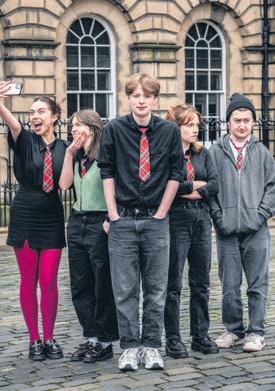
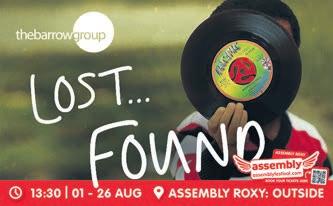


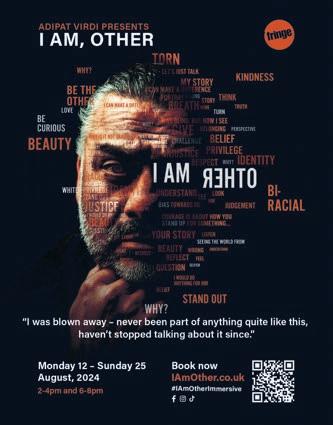
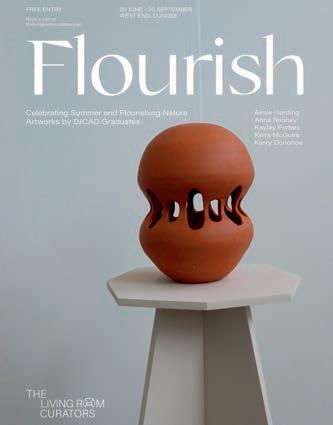
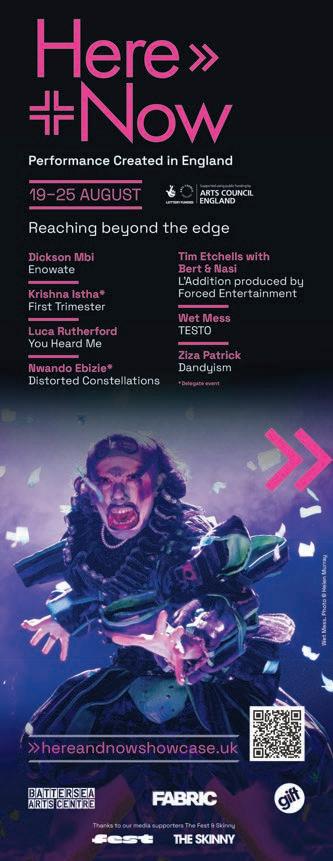

We speak with some of the artists bringing Palestinian theatre to this year’s Fringe
Words: Eilidh Akilade
While spending recent months attending protests, emailing MPs or donating funds, many have inevitably looked to the arts amid the ongoing genocide in Palestine – whether to learn, support or hope. At this year’s Fringe, theatre speaking to and from Palestine offers much-needed time and space to bring our solidarity to the stage door and beyond.
Over at Summerhall, Jerusalemite artist Ashtar Muallem brings Cosmos, a piece which combines dance and physical theatre to explore seeking and finding spirituality amid life’s complexities. With humour and grace, Muallem presents a balancing act between her life lived in Palestine and in France. “What sets me apart as an artist is my awareness of these influences; I am continuously reflecting on my existence and expanding my understanding,” Muallem says. “My art reflects who I am at any given moment, moulded by these experiences.” Drawing on her memories of her grandmother, Muallem centres her connection with her own heritage in the present moment, allowing it to reach, bend, or curve in times to come.
Similarly looking to her past, Amena Shehab is a Palestinian-Syrian-Canadian actor, playwright and community leader, soon to perform the eponymous role in Hagar: War Mother at theSpace. The play follows a mother attempting to escape Syria with her infant son, seeing her tried and tested at every obstacle. For Shehab, stepping into the role of Hagar has not been easy, given her own similar experiences. “It is a challenging role to perform, because it is hard to leave it at the stage door. I was born a refugee in a Palestinian camp in Damascus, and then found safety from the Syrian war in Canada,” she says. Bringing the show to the Fringe for the first time, Shehab is nervous about performing and fears Hagar’s narrative may be lost amid the scale and noise of the festival. “But I truly believe art can change the world. It’s the way I make sense of things that otherwise I do not know how to express. It is my way of taking action and of taking power and of finding a way through the darkest of times.”
Starring Khawla Ibraheem and directed by Obie Award-winner Oliver Butler, solo show A Knock on the Roof sees Gaza-based Mariam ‘practice’ evacuating her home ahead of Israeli demolition. With only 12 shows at the Traverse this August, the show will be heading to Broadway in January 2025 for a much-anticipated run. “With this piece, I am inviting the audience to simply exist in the same space as Mariam and embrace the complexities and contradictions that all of us face in our own lives as she navigates the banality,
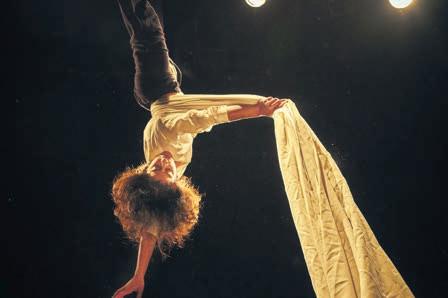
frustration, and humour of making thousands of decisions as war approaches,” says Ibraheem. “And I believe this can inspire a personal relevance for the audience that will outlast the current headlines in the news.”
Amid Western news reporting, the personhood of Palestinians is cruelly sidelined in an intentional and violent act of neglect. Through theatre, we can attempt to reflect upon refugees’ lives in their entirety, rather than solely via the lens of their oppression. As Shehab notes, “in the play Hagar becomes a refugee, but before that she is a woman and a mother, so I hope this play appeals to a wide audience. Her strength is inspiring.”
A Knock on the Roof similarly centres the personal. “To me, solidarity and protest deal with the spontaneous temporary reactions of a large collective in support of a cause or community,” says Ibraheem. Rather, she’s keen to take a closer look. “I approach my work from the opposite direction – rather than writing in response to or in conversation with a political or social movement, my artistic impulse is to capture the individual human level.”
Theatre inevitably has its limits. “I’m sceptical of the power of theatre to effect social or political change; a play won’t stop the ongoing war on Gaza, for example,” says Ibraheem. With an international stage comes an international
audience, and as such, the Fringe is no mean feat to navigate. “But I do think that inviting an audience from different backgrounds to spend real time laughing, crying and even breathing together at the same moments while listening to a story of a person they never met (and who exists hypothetically in their imagination), can create affinity.” For Ibraheem, politics may not bring total unity, but connecting through theatre and its comedy is possible, “Because we all know what it takes to convince a six-year-old to take a bath.”
As Muallem notes: “We are like dough or material, shaped by the life experiences we endure and the challenges we encounter.” And art, too, shapes us – if we allow it. This August presents an opportunity to give our attention to Palestine, its diaspora, and their theatre, carrying their stories with us.
Cosmos, Summerhall, 1-11 Aug, 9.15pm, £10-17
Hagar: War Mother, theSpace on the Mile, 2-10 Aug, 2.20pm £8-10
A Knock on the Roof, Traverse Theatre, 13-25 Aug, various times, £5-22.75
We take a trip to South Korea’s Gangwon region to learn about the Jeongseon Arirang which comes to the Edinburgh Fringe in ARI: The Spirit of Korea
Jeongseon may only be a few hours from Seoul by car but in many ways, it feels like another world. Located in the mountains in the eastern part of South Korea’s Gangwon region, it’s an area characterised by its striking natural scenery, limestone monuments and colourful temples, as well as being home to a ski resort and the only domestic casino that is open to South Korean citizens. Culturally though, it’s a region of great significance to Korean culture, having birthed the Jeongseon Arirang, a popular local folk song handed down through generations. Translating roughly to ‘my beloved one’ in ancient Korean language, it is said that the song was composed by scholars during the Joseon Dynasty, but its origins largely remain a mystery.
Pulling into the remote, mountainous landscape on which the Jeongseon Arirang Centre sits, there is a peacefulness in the view of the traditional houses of the adjoining Arari Village. It’s a suitable precursor to what will be a day full of introductions to Korean cultural heritage, starting with our reason for this trip – a performance of the creative musical Ari Arari. In this production, which made its debut during the PyeongChang Winter Olympics in February 2018, the traditional tale of the Jeongseon Arirang is subverted to provide a modern twist. The original story follows a man and a woman in love but separated by two rivers, ending in tragedy. Ari Arari, however, places its focus on a family and unites the couple in marriage, with their child singing a new version of the Arirang that their parents used to sing, to emphasise its pull across generations.
“ARI is more than just a performance; it’s a journey into Korea’s rich cultural heritage”
Angella Kwon
“We created this piece with the hope that by modernising comprehensive aspects of Korean traditional culture, including music, dance, and instruments, it can be enjoyed by people around the world,” the show’s writer and director JungHwan Yoon explains.
“All the music in our performance is based on the melody of Arirang, but we have adapted it with modern instruments and arrangements to make it enjoyable for contemporary audiences. We hope the fundamental melody of Arirang will feel familiar and comforting to international audiences as well. Even within the modern instrumentation and arrangements, traditional instruments are subtly embedded.”
Words: Arusa Qureshi
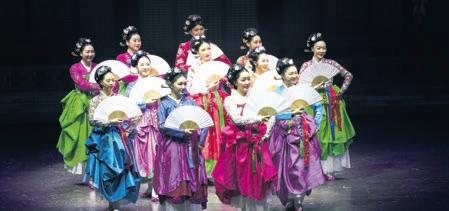
The production includes Korean dance, martial arts and drumming, all of which unite to offer a colourful spectacle that draws attention to the wide array of talent on stage. Following the performance, actor Hyeon-Uk Gye tells us more about the make-up of the cast: “In our performance, there is little distinction between the lead roles and the ensemble. Over the past seven years, I have taken on both ensemble and lead roles, and this season, I have the responsibility of playing the lead character, Gimok.
“This character must embody Jeongseon Arirang through performance, which brings a strong sense of duty to perform well,” he continues. “To master Jeongseon Arirang, I lived in Jeongseon for seven years, learning and practising at a place called Jeonsugwan.”
The sheer commitment required to master this artform is evident in the quality of the performances on stage, but also in the passion with which the actors discuss Arirang and the success of the production, both locally and abroad. This is echoed by the Mayor of Jeongseon, Seung-Jun Choi, who greets us at the Jeongseon Arirang Centre and later explains the importance of the folk song.
“As it has been passed down orally, Jeongseon Arirang has become a symbolic cultural heritage of Jeongseon County, and its value continues to be recognised to this day,” he notes. “Over the past decade, performances in Budapest and Adelaide have demonstrated that Jeongseon Arirang can transcend language barriers and resonate emotionally with local audiences.”
Having won the accolade of Best Physical Theatre at the Adelaide Fringe in 2023, Ari Arari, renamed ARI: The Spirit of Korea, will soon be arriving at the Edinburgh Fringe, as part of the Korean Season, produced by AtoBiz and the Global Cultural Exchange Committee.
“With ARI: The Spirit of Korea, we aim to provide audiences with an authentic and
immersive experience of traditional Korean culture,” Angella Kwon, Artistic Director of AtoBiz, says. “We hope that audiences will gain a deeper appreciation for the beauty and intricacy of Korean traditional music, dance, drumming, and martial arts. ARI is more than just a performance; it’s a journey into Korea’s rich cultural heritage.”
For Kwon, who has been producing Korean work at the Edinburgh Fringe since 2015, ARI is a perfect amalgamation of traditional and modern Korean culture. By bringing it to Edinburgh, her hope is that it fosters a deeper understanding between cultures and sparks a sense of curiosity in audiences who may have little knowledge of East Asian arts. Likewise, for Mayor Seung-Jun Choi, the production’s journey to Edinburgh marks a momentous step in its ambitions.
“Participating in this festival with the Jeongseon Arirang performance is a significant opportunity to showcase the symbolism and value of Arirang to an international audience,” he says. “It will also allow us to understand how foreign audiences interpret and connect with our performance, helping us identify the needs and preferences of diverse audiences. This participation is crucial in promoting Korean traditional culture, or K-culture, on a global scale.”
As we leave Jeongseon, we’re each handed a gift bag to commemorate our visit. Inside is an ornate music box with a figure on top, which, when twisted, plays the central refrain from the musical. It serves as a reminder of not only a special trip, but of the way music can travel centuries and borders, with new generations continually working to keep traditional artforms alive and thriving.
ARI: The Spirit of Korea, Assembly Hall (Main Hall), 1-25 Aug, 1.30pm, £18
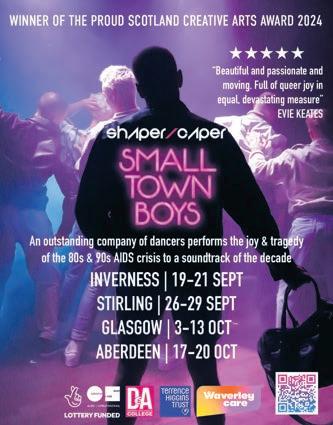

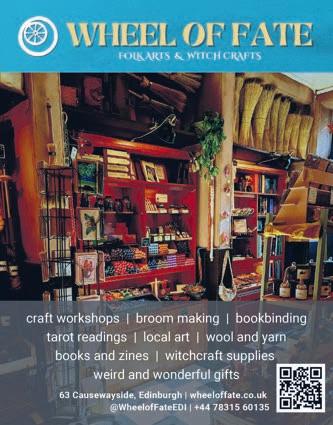
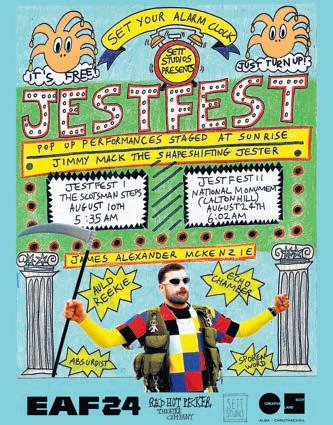
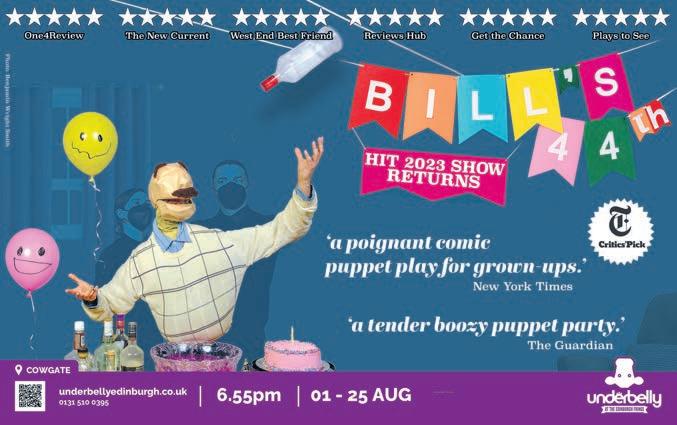

Ois O’Donoghue’s HYPER isn’t art about transness; it’s trans about art
Words: Rho Chung
With a new, posthumous album from SOPHIE on the horizon, the pop-consuming public has her influence on the mind. Beyond hyperpop giant SOPHIE, trans artists – from Wendy Carlos to 100 gecs – have dominated the scene for as long as the computer’s bleep bloops (my term, not an official phrase) could be music.
Irish musician and theatre artist Ois O’Donoghue says that Wendy Carlos played the computer like a violin, eliciting raw and organic sounds from binary zeros and ones. This August, O’Donoghue stakes her own claim in hyperpop with HYPER (Jaxbanded Theatre), a play-withmusic about a pair of bandmates and besties Saoirse and Conall. When Saoirse comes out and begins transitioning, the band must grapple with her changing body, voice and life.
O’Donoghue says: “I suppose for me, HYPER is fundamentally about the really complicated relationship trans people often have with our own voices. I think we’re in a time where we’re being made incredibly visible, and as a result being pressured to speak a lot and speak out a lot, which is an important thing. And I think it’s interesting how that meets up with a lot of us, like, physically, fundamentally not loving the sound of our own voices, and how that can kind of mesh with that.”
Much of HYPER focuses literally and figuratively on the trans voice. O’Donoghue talks about SOPHIE’s use of the vocoder as itself an instrument – not of disguise, but of expression. For trans people, the voice can be a serious site of gender dysphoria. Some of us go through voice training and medical intervention to make sounds that are affirming to us. In cisnormative culture, the “trans voice” is a site of gendered discongruity.
“The show is quite specifically about what it is to be trans in Ireland,” O’Donoghue says. “I think the voice is massive in how people think about you, and how people gender you here. It’s really interesting, in that I can pass most of the time, until I start speaking, and then everything falls apart, you know? And it’s really interesting watching the eye-drop happen there.”
Vocoder and autotune have often come under fire for being ‘dishonest’, or for being a cheat code for vocalists of less than satisfactory quality. In hyperpop, though, voice editing is just another digital instrument. Through hyperpop and voice editing, the trans artist has the opportunity to create “yourself as you exist in your head,” O’Donoghue says. It brings the voice into the immaterial world of the computer’s bleep bloops.
“There’s a lot of inside-ball jokes for trans people,” O’Donoghue says of HYPER. “I think about voice training and voice training phrases, and the kind of repetitive, robotic nature of trying
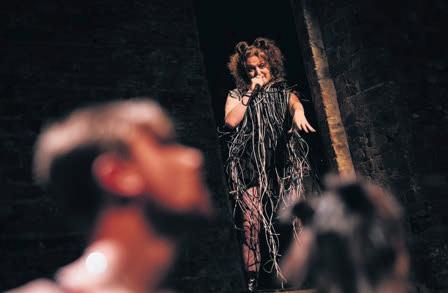
to do, like, ‘Heat from fire, fire from heat,’ and applying that to then the actual electronics we often put our voices through… So I think, for me… it’s breaking down gender barriers, while also allowing you to enact yourself in a kind of magical way, which is wonderful. But I think the show is also about kind of coming to feel like you can enact yourself in that way without the electronics. Sometimes, it’s about trying to marry those two worlds in your head. It’s not about disguising yourself. It’s about trying to be, like, ‘No, this isn’t a thing with me. This is a thing with how you’re perceiving me.’”
In HYPER, the role of Saoirse is shared between O’Donoghue and cis actor Fiona Larmon. O’Donoghue says that this casting innovation was born out of a desire to shield the trans body from the (re-)enactment of violence against it. “There are elements of the story where I was like, ‘I would like to discuss some of the darker things that happen as a result of the voice,’ but also I don’t want to enact them upon my own body, but also and upon trans bodies, because I don’t like that that’s how we exist in media culture… If I can put a cis body here, we can point out how both absurd it is that this happens, but also we can point out that, like, ‘This is the only way I see you.’ I think it’s more evident, then,” she says. Larmon’s presence in O’Donoghue’s place for those darker moments not only diverges from the trope of the trans body as nothing but an object of tragedy, but it also highlights the absurdity of transphobia; it forces
“HYPER is fundamentally about the really complicated relationship trans people often have with our own voices”
Ois O’Donoghue
us as the audience to confront what it is that we see as different between trans and cis women.
HYPER touches on a panoply of topical things, but more than anything, it depicts a deep and changing friendship. “I suppose I always think of bands as expressing a togetherness in a really visceral way. In saying that we’re a band, we’re saying that we’re besties… I think it’s complicated, because when you’re in the band, [music] then becomes the point of expression of your friendship. It’s like, where are we right now? What does that mean? That’s what you’re saying through your tunes.”
HYPER, Summerhall (Former Women’s Locker Room), 1-26 Aug, 8.15pm, £10-17
We chat with drag artist Wet Mess about their blazing experimental show TESTO and the blurred lines between performance and authenticity
Can you tell me about TESTO? How did it come about?
TESTO came about from wanting to develop beyond five minute drag acts. I wanted to push myself to make something longer and be able to take the audience on more of a journey than what you are limited to in nightlife. It’s my first full length solo show. The show is about testosterone, non-binary transition and the edges of drag. How we use the stage to dream and re-create ourselves and the blurry lines of trying to bring that into reality.
I’m really interested in this idea of dreaming and recreating the self. There’s a really interesting tension between authenticity and performance here – they’re often seen as being in a binary but drag works to blur the lines.
It’s interesting as drag is often seen as a character separate to oneself. I think a lot of queer/trans people can relate to the experience of recreating [and] redefining themselves on stage. Maybe there’s a more authentic feeling on the stage than ‘real life’ where we get to be free from the restrictions society can put on us. Drag has been very tied up with my personal gender journey, as someone whose drag name has become their real name. I very much know and feel the beautiful messy cycle of imagining oneself again and again. Gender is a performance on and off the stage.
“One of my mottos is ‘everything is sexy nothing is forever.’” Wet Mess
I really love this idea of drag and performance being a kind of liberation – do you find this same liberation in your other practices, like choreography and costuming?
I feel like they are all so intertwined, actually. The costume helps the drag, the movement is a release. But yeah, sometimes the stage can feel like the freest place to be. I think especially for gender non-conforming people, public interactions can be difficult; although you’re highly seen on the stage, somehow lots of other rules don’t apply.
You’ve described your drag work elsewhere as straddling the line between the sexy and grotesque. What is the significance and value of the grotesque when exploring sexuality and desire?
I think it is probably tied to normative expectations of what is attractive and who and where and how you’re allowed to express desire. I think the best work is sexy. What is grotesque? What is
sexy? You decide.
What does sexy mean in the context of your work?
I think perhaps it’s quite heavily influenced from working as a gogo dancer. There is such a power to enjoying your body [and] nudity for others to watch. I think a lot of people disregard the power of sexuality in performance, I think sex work is a form of art really. One of my mottos is ‘everything is sexy nothing is forever.’
That is such a baller motto. I want to think about the titular testosterone – there’s a line in Paul B. Preciado’s Testo Junkie that says “I’m not taking testosterone to change myself into a man or as a physical strategy of transsexualism; I take it to foil what society wanted to make of me” – thinking of hormones not as a catalyst towards assimilation but as a disruption. Does this speak to your work?
It’s interesting we have very little public knowledge/discourse around testosterone and often it is very binary: “You want to become a man.” I am definitely interested in blowing that wide open and making it more human. I think hormones can give the autonomy to disrupt society’s expectations. Through the process of the show I interviewed a lot of people about their experience of taking T, from some people being on and off it to someone taking it since the 90s. I used the show to kind of do the research I needed for myself. It truly is different for everyone.
Was there anything that surprised you from people’s testimonials?
Words: Anahit Behrooz

That I gained more talking to them about their lives than about the practicalities of their transition. We often started out talking about hormones and then would just expand to life chats.
I’m really interested in complicating this straightforward narrative of testosterone as just about “wanting to become a man.” I was thinking a lot of Donna Haraway’s Cyborg Manifesto when encountering your work and meeting points of human and “machinery.” I’m interested in how testosterone can become a kind of technology that allows us to break past preconceived boundaries in a liberatory way? Like is it almost about going beyond definitions?
Yes, I think it’s Preciado that talks about ‘hacking gender’ or being a ‘lab rat’. Our understanding of hormones is very tied up with binary cultural narratives and stories. All hormones are non-binary. When we start to understand the vast expansiveness of gender we can start to see how hormones are all just ingredients in the delicious gender soup.
In the words of my pal Santi: “I want to go home and soak myself in a bathtub of testosterone, while gnawing on an oestrogen sandwich in my glitter Speedos.”
TESTO, ZOO Southside, 11-25 Aug (not 12 & 19), 8.30pm, £1316, part of the Here & Now Showcase
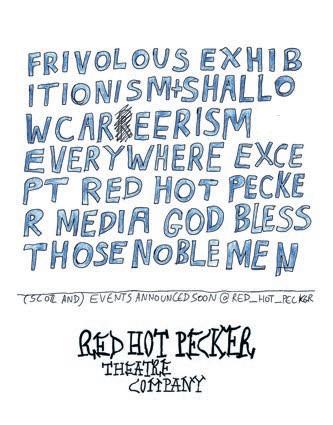
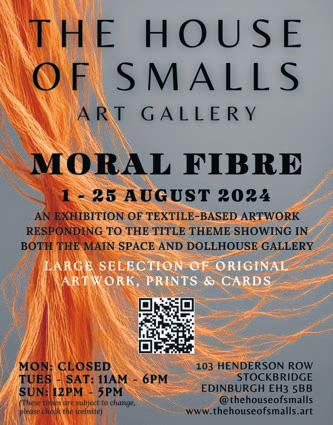
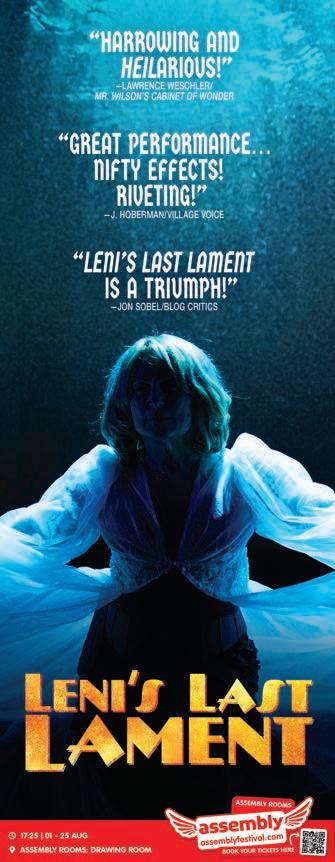
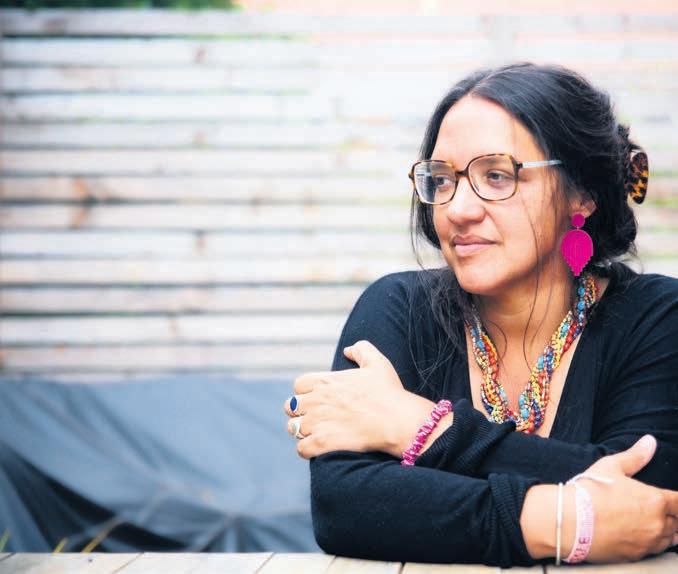
We chat with Edinburgh Makar Hannah Lavery about her new collection Unwritten Woman, the power of retelling, and the ongoing influence of Edinburgh in her writing
Words: Eilidh Akilade
“It felt right to be singular in that way, I suppose,” says Hannah Lavery, commenting on the title of her new collection
Unwritten Woman. Distinctly less autobiographical than her debut collection Blood Salt Spring, a plethora of voices come together – chorus-like and rousing. “It feels like I’m pushing out of myself and into other personas... But I don’t want to say that I’m speaking for all of the unwritten women because that would be ridiculous.”
Following on from her debut collection, published in 2022, Edinburgh’s Makar returns with Unwritten Woman, a fiercely tender exploration of women in the margins. A study in duality, the collection is split into two halves: the first gives a voice to the women of Robert Louis Stevenson’s The Strange Case of Dr Jekyll and Mr Hyde, the second explores Lavery’s experiences as a woman of colour in Scotland, particularly looking towards her relationship with institutions at large. Amid a continuous call and response, Edinburgh as a city is told and retold from the perspective of a mixed race
“When people of colour speak in Scotland, it’s for a moment. It feels like it’s a shining moment and then it slowly gets enveloped and gets lost”
Hannah Lavery
woman. Dualities strike and carve and fold themselves within the collection; Lavery allows them this and plays with it, delighting in the oppositions.
Back in spring 2021, Lavery wrote a retelling of the Jekyll and Hyde tale from the perspective of the women characters for Pitlochry Festival Theatre; upon finishing the play, she realised she wasn’t quite finished exploring their stories. Although the novella is hailed as an exploration of the human condition, presenting humanity in all its filthy complexities, it largely excludes women, their characters barely heard from the margins of the text.
“As a woman and as a woman of colour, we’re given these canonical texts – usually by white men – and we’re told to find a way of connecting and how to understand them. So we spend a lot of time reading work where we’re not centred,” says Lavery. In retelling, however, there’s a radical potential to not only re-centre and understand oneself but also to engender new possibilities for the text in its entirety. For Lavery, reading Jean Rhys’s Wide Sargasso Sea was a revelation; Jane Eyre never quite resonated because, for Lavery, she was the Woman in the Attic, not Jane. With Unwritten Woman, Lavery sought a similar solace. “I find myself in the edges, these silences and absences, so I just wanted to write those back in. I think it’s almost an experiment in being a reader. ‘How do I meet this text? How do I read this text?’”
Despite this silencing, women’s roles in Jekyll and Hyde are crucial to any understanding of humanity within the novella. “When men are revealed as being monsters, there’s always a woman or a group of women that have gone, ‘We’ve been telling you this,’ or, ‘We knew that so it’s no surprise to us.’” In this, Unwritten Woman gives breath to unsung knowings – those of women, those of people of colour. Such knowing is not the stuff of Edinburgh’s Enlightenment; rather, it’s a shared instinct, relentlessly tu ed outwards through the very experiences of existing as a marginalised person.
“I’m generalising but for women, our duality is actually around our anxiety. It’s around our fear.
It’s the fact that we present a certain way in our world, but we actually have to hold a lot of our own fear, a lot of our anxiety,” says Lavery. Growing up, young girls are fed dangers as both fact and fairytale. Such is carried with us into womanhood, but always hidden and unspoken. Although Jekyll and Hyde is set in London, it’s a novella ever bound to and associated with Edinburgh; in both parts of the collection, Lavery situates these anxieties carried by women in this city and its dark history.
Coming to the end of her time as Edinburgh Makar, Lavery was keen to look at the city she calls home and its poetics. “We have a certain veneer of respectability, or we have this politeness that we have to serve but underneath there’s this whole other thing,” she laughs. The Edinburgh neatly packed and parcelled for an international audience – private schools, cobbled streets, shortbread tins – is not all that honest. As Lavery notes, “we hold up the Enlightenment and yet so much of the Enlightenment is what led to so much underpinning of racism and colonialism.” In Unwritten Woman, Lavery calls to home-truths outwith the visitors’ centre. It’s a little filthy, certainly uncomfortable; but it’s also full of its own warmth, and a joy like no other.
As in Blood Salt Spring, the haar – the city’s somewhat beloved coastal fog – draws Lavery in once again. “I grew up in Edinburgh, in Portobello, so I was always under the haar. The haar is a very physical thing,” says Lavery. In mid-air, her hands roll, slowly, around each other; the haar coming in and out. In gesture and in poetry, she writes it anew. “It’s about being separate within a space and the way that envelops you but also the way in which it smothers you and holds you under so there’s a sense of being under something.” The very ecosystem of the city becomes a metaphor for the experiences of people of colour within it; that is, a city with a past (and present) of contributing to and utilising their oppression.
Ever hopeful, the collection offers a different map – a less white map – by which to navigate Scotland’s culture. In the second part, we begin with Jackie Kay; end with Young Fathers; find Alberta Whittle along the way. Cultural touchstones are placed and replaced, and it’s something to celebrate. “I wanted to be in conversation with other artists,” Lavery says. Rejecting an artistic individualism, she is keen to present her creativity in community with that of others; here, solidarity is tangible and demands our witness. “When people of colour speak in Scotland, it’s for a moment. It feels like it’s a shining moment and then it slowly gets enveloped and gets lost.” And so, Lavery writes them into permanence in this collection, remembering them in the present tense and refusing a future loss.
Speaking to contemporary working lives, Lavery explores the difficulties put upon this
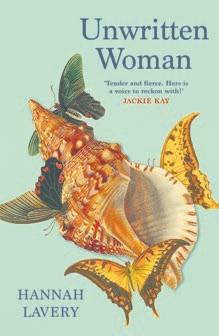
community. In the second part of the collection, a number of Theatre Announcements act as a drum beat, inserting themselves between every poem. Cutting and inciting, the announcements echo the everyday racist rhetoric endured by people of colour in Scotland’s creative scenes.
“I’m calling them Theatre Announcements but, in a sense, they’re Institutional Announcements,” says Lavery. Thinly veiled with anti-racist-training lip service, prejudice seeps through – subtly and then all at once, and certainly laughably so. “When you’re an artist of colour, when you work with institutions, it’s those little moments... Those little interjections felt to me very much like the way in which I speak with other people of colour. It’s that exhaustion, but also the humour and the rage of it.”
Humour sits nicely in Unwritten Woman (particularly for readers with certain marginalised experiences). “I was having a lot of fun and mostly it was just the way the poems came out – they were asking to come out that way and to be looked at that way. I hadn’t set out to be experimental,” she explains. Somewhat a stylistic departure from Blood Salt Spring, Unwritten Woman was edited by Joelle Taylor and Lavery is thankful for these interventions, encouraging her to have confidence in her poetic instincts. Working with Taylor allowed her to “push the poem as far as it could go,” a sentiment which is palpable on each and every page.
With Unwritten Woman, we’re unafraid of our own rage. Lavery doesn’t offer hollow whitewashed feminism; rather, she pulls at an intersectional feminism, studying how it looks, feels, moves. It’s a calling to take another look, re-read that line, and question where the women are – especially those of colour – and how we may hear their stories. As if Lavery’s talents needed any further preaching, Unwritten Woman hails her as a triumph.
Unwritten Woman is out with Birlinn Ltd on 1 Aug. Hannah Lavery will be appearing at the Edinburgh International Book Festival alongside Salena Godden on 11 Aug at 5pm

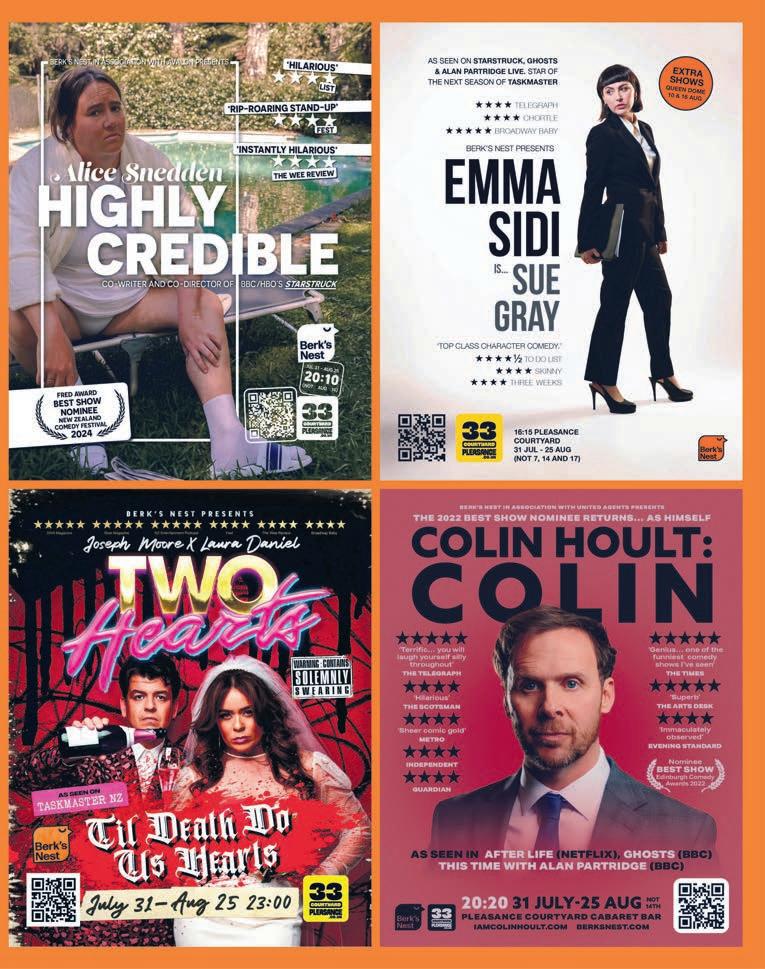
Edinburgh-based poet Andrés N. Ordorica’s debut novel retells the quiet queer awakenings of two lovestruck college freshmen in one’s eulogy to the other
Words: Louis Cammell
On the day I catch up with Andrés N. Ordorica, ahead of the UK launch of his debut novel How We Named the Stars, he is, in his own words, “dealing with horrible jetlag”. He has just returned from the US, visiting his family in Northern California, where they emigrated from Mexico in the 1960s, he explains. It is a heritage he shares with his debut novel’s central character, Daniel de La Luna.
A shy, overthinking college student whose family moved to the US a generation ago, Daniel is in his freshman year at a fictional college in Upstate New York; a year that proves to be transformative when he meets his blonde-haired, all-American and resolutely straight-seeming roommate Sam Morris. At first, the gulf between their worlds seems unbridgeable. But something exists between them that late-bloomer Daniel isn’t yet equipped to recognise.
Daniel and Sam’s respective quiet, queer awakenings happen in snatches: stolen glances and ambiguously charged hugs, the kind that only happen in the unique combination of forced closeness and perpetual drunkenness of a college campus. For an overthinker like Daniel who narrates the story, the idea that they are deliberate advances from Sam is so inconceivable that the story benefits from the temporal vantage point of being retold in past tense; in which a version of Daniel who is a little older and more assured can look back and see the obvious. Or, at least, what his friends have since told him is obvious.
“[Daniel] can be very pedantic sometimes,” says Ordorica. “And so I think [his friends] help to shake him up and be like: ‘Okay, get with it, Daniel. Because if you just stay in your head, you’re going to miss out on all of this stuff. You’re an idiot. Please wake up.’” Daniel’s friends are, Ordorica admits, his way of tipping his hat to his group of girl friends from his own university days who were perpetually telling him how annoying he was, pining over people while missing all the cues, such was his own introverted nature.
Ordorica recalls his own freshman year of college as a revolutionary time. “Before I went to university, aside from my uncle, I did not know any gay people,” he says. “I grew up in a very military, religious setting… Suddenly there were all these liberal middle-class kids who had barely turned 18 and had been out since they were 15! Like, how do
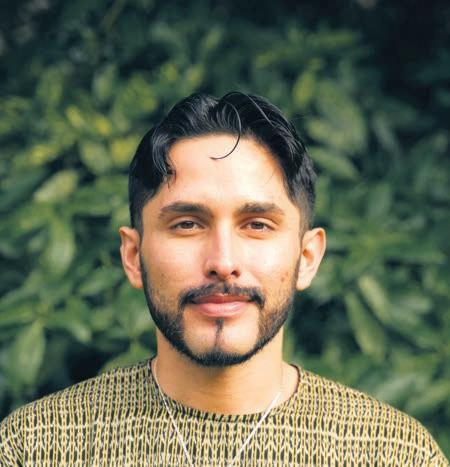
“My central question was, What if the first person you fall in love with is the person who [will force you] to face your first personal loss?”
Andrés N. Ordorica
you know that, and how does it shape your worldview? I really wanted to capture that, that a college campus [lets you meet] people who have different lived experiences.”
But it would be burying the lede to say that this is the only reason for this novel to be told in past tense. For all the joy and tenderness that the book exudes, it all follows the admission on only the third page (so it is far from a spoiler to reveal it here), that Sam Morris passed away six weeks ago. This fact looms over the boys’ interactions, simultaneously bracing us for the shock and imbuing every missed opportunity, every time the boys tell each other they have “all the time in the world” with a horrible sadness. Reflecting on their first night together, the first time they cross the threshold from best friends to lovers, Daniel describes the grief that is heading his way as ‘a wave of both growth and destruction.’
“My central question,” says Ordorica, “was, What if the first person you fall in love with is the person who [will force you] to face your first personal loss?” But Ordorica knew early on that Sam’s death needed to happen as quickly as possible, lest it become the hooky, gut-punching plot device that becomes the main talking point. “I realised that for me, it was more about showing how someone is left,” he says. “What happens when you’re left behind, and how do you make sense of it? Especially a relationship in which you and the other person who has now passed are the primary guardians of those memories.
“[Daniel is] trying to wrangle with the fact that, aside from a few scatterings of friends who were around while Daniel and Sam were in the same room together, a lot of what he is holding is ultimately just between him and Sam. [When] your grandparent passes you can speak to your parents, or if you have siblings, or if you have cousins, you can sort of share those memories of that grandparent. You can figure it out together and there can be a collective grief, whereas ultimately, this very specific version of Sam is held only by Daniel.”
How We Named the Stars is written in the second-person, placing you, the reader, into the shoes of the late Sam Morris. It is as if you are his ghost, hearing Daniel’s version of this story posthumously. Ordorica says that after having drafted a more traditional present-tense version, the secondperson past tense was a good frame in the sense

that, “there are parts of the story that are probably idealised or being told through rose tinted glasses, but I think that makes sense because it’s coming from one person in mourning to their lover.”
It also felt appropriate given the aforementioned cultural and religious background that the character shared with the author. Ordorica describes having grown up, like Daniel, in an all-Mexican family with a particularly Latin version of Catholicism in which it is common to speak to the dead. Ordorica’s novel showcases the benefits of this kind of eulogy, delivered not about someone for the benefit of others, but towards the person, as if picking up where you left off when they were alive. It gives space for the good to sit alongside the bad, the speaker not beholden to honouring their memory but instead free to exorcise the necessary pain that remains. When Daniel asks Sam questions like, ‘What stopped you from opening up with me?’, we feel his relief in finally being able to get the question off his chest, even if he will never have a definitive answer.
When Daniel hears the devastating news of Sam’s passing, he is in Mexico visiting his grandfather who is himself grieving the decades-old loss of his son, Daniel’s uncle. Daniel knows very little about him, other than he bears his name, that is until Daniel finds out that his uncle was gay too. The revelation comes in the form of a gift from his grandfather, a box of the late Daniel’s diary entries. While Daniel previously thought himself to be the first queer person in his family, the box proves to be the catalyst for our protagonist to realise that he has been functioning under many false presumptions.
“There's such a beautiful history of queer writing in which it’s the character against the world,” says Ordorica, but he knew he didn’t want this book to reinforce that. He continues: “For me and how I grew up, [I realised that] I had a lot of preconceptions [about] what I thought was the truth.” How We Named the Stars became an opportunity for Ordorica to impart what he learned, to anyone who might feel like Daniel: “[That] we often aren’t the only one. Even in family histories, not all stories will have been passed down. Maybe people had to live in the closet or in lavender marriages, or maybe there were versions of people that [existed] but were not passed on.”
It is on the plane back to college that Daniel de La Luna begins to write the story that will become How We Named the Stars. Over a sevenday writing stretch, he will go on to lay out his uncle’s journey at the beginning of each chapter. It is a tale of self-assured defiance; of refusal to apologise for his desirous thoughts about the tradesmen in the street; of finding his tribe among the activists who shed light on the AIDS crisis and learning to live authentically.
We get the sense that the story emboldens Daniels to tell his own; one of overcoming loss and opening oneself up to love. Steeped in grief and yet resolutely uplifting, Daniel’s story is one of a young man realising that pain is universal, but so too is beauty. Things move forward, and as they do, we learn to hold grace for the many versions of people and of ourselves. “We all exist with multitudes,” says Ordorica.
How We Named the Stars is out now with Saraband. Ordorica will be appearing at Book Fringe in conversation with Eris Young at Argonaut Bookshop on 14 Aug, 6.30pm
Producer Mark Ashmore of Future Artists talks about working with the Tartan Tabletop team to bring Dungeons & Dragon Comedy: The Never-Ending Quest – The Return to Gilded Balloon after selling out in 2023 and success at Adelaide Fringe

As someone that has produced theatre at the Fringe for over a decade, how have you seen the Fringe landscape change over time?
Wow, a decade at the Fringe! I guess you can look at it as pre-COVID, post-COVID and then whatever this bit is in 2024 – cost of living post-COVID. The Fringe is always a space for theatre and performance to surprise, experiment and entertain. I would say pre-COVID, themes were autobiographical, lots of Fleabag-esque shows, and then post-COVID, I have started to see shows that re ect politics and technology, shows are becoming more interactive and shorter. The audiences post-COVID are looking for instant sharp hits, they want it to be fun and funny, maybe you can sneak a few messages in there...
What important lessons have you learned over the years?
For me as a producer, I always tell my artists that the audience comes rst: we are creating for them, not ourselves. The Fringe is about the audiences and they do change each year. For example, with fewer student audiences out here, the average ticket holder is 40+. So if you are in your 20s, what theatre or show are you going to create to connect with that audience. I watch documentaries about the Fringe, and see how it was set up to be anti-establishment by students back in the day – I guess the spirit of that is here – so the lesson here is, the Fringe changes, and over a decade of producing, one of my key jobs is to anticipate this change, as we go into production a year before the festival. My job is to imagine what audiences might want to see, before they even know! As you can guess, I am more of a creative producer with a time machine.
As a producer, what do you nd special about Tartan Tabletop?
I discovered Tartan Tabletop playing their D&D comedy improv show on the Free Fringe. The entire crew had talent for improv – I thought it was scripted as it was beat perfect comedy
and everyone played a role, the dynamic was perfect. I found out later they had a popular podcast, and the Free Fringe was their rst outing as a show. That was 2022. I said to them, look if I can work with you, and we can hone this into the perfect 50 minutes, make it interactive, make people feel part of something, like an indie band, then I think we have something. The lesson here is, always nip in for a pint, no matter the time of day, and talent is often found in a backroom somewhere.
Why is the Free Fringe an important element of the festival ecosystem?
For Tartan Tabletop, Edinburgh is in their backyard, as half the crew are from here and the other half are from Glasgow, so it’s home turf, but they are priced out – the Free Fringe gave them the space to actually perform at the Fringe in their own city! Crazy right? I’ve seen lots of cool, talented stu on the Free Fringe, and every year I always check it out for moments like this, discovering people I am going to work with for a couple of years. It’s the best social networking in the world – try it.
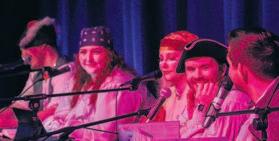
What are you hoping this year’s Fringe and the return to Gilded Balloon will bring for Tartan Tabletop?
Gilded Balloon took a risk with the show last year, I really had to blag it – a D&D comedy? Who would come? And we sold out our run, with audiences coming back three or more times to see the story unfold. We then invested everything we had and went to Australia to the Adelaide Fringe, and again, the show sold out and we got our rst real reviews. So this year, the adventures are new, but we have some returning characters. Noblin the Goblin is back and each show they are played by a di erent guest comedian from the Fringe – so this unknown makes the show a comedy tightrope. If you saw us last year, you will know what we mean!

For tickets head to gildedballoon.co.uk and follow @Tartantabletop on Instagram and Twitter
We chat with British-Palestinian author N.S. Nuseibeh about her essay collection Namesake, and connecting her life and experiences with her warrior ancestor Nusayba Bint Ka’ab
Words: Venezia Paloma
It was months before October 2023 that N.S. Nuseibeh finished writing Namesake, a collection of essays connecting her life and experiences as a British-Palestinian born in occupied Jerusalem with those of her ancestor, Nusayba Bint Ka’ab – a legendary female warrior and one the first converts to Islam in the seventh century. But while the book would not be published until the beginning of 2024, Nuseibeh’s examination of cultural identity, religious violence, and the baseless rhetoric behind anti-Islamism is more relevant now than ever.
Because of the way Nuseibeh broaches these topics, from both a personal and a historical perspective, Namesake is as vulnerable as it is informative; it serves as a bridge, not only between Nuseibeh the author and Nusayba the mythical figure, but also between the East and the West, between modernity and tradition. “I thought about using my ancestor as a kind of doorway into this early Islamic history,” Nuseibeh tells me during our Zoom call. “I wanted to find aspects of this character that either resonated or jarred with contemporary values and ideas [...] for others who, like me, know Islamic culture quite well but also for people who might not know [it] well at all. What I hope I do in the book is to make this seventh-century Arabian warrior woman feel contemporary and interesting, and, in that way, make Islam and Arab culture become more contemporary and interesting too.”
At this she undoubtedly succeeds, in part because of the candid specificity with which she juxtaposes scenes of virtual Seder celebrations and cooking breakfast with her family in Jerusalem with those of warrior Nusayba in battle, or refusing to break her fast for the Prophet Muhammad. More significantly, Nuseibeh uses these stories to illustrate the larger picture. “I find that looking at the stories that have been passed along generations suddenly makes the world feel so much smaller and more intimate,” she shares. “For instance, the fact that [Nusayba Bint Ka’ab] is said to have gone into battle with her sons, that she encouraged them to fight, that brought up a lot of questions about motherhood for me, and about what good motherhood looks like in times of conflict or under oppression.”
One of the topics that interests Nuseibeh the most is feminism within Islam. “Women suffering under the patriarchy is definitely not something unique to Islamic culture or tradition. In fact, I try to highlight in the book just how much feminism is to be found in many aspects of Islam,” she explains. In Namesake she writes about headscarves as symbols of personal autonomy, about how many of the earlier converts to Islam were women
“I find that looking at the stories that have been passed along generations suddenly makes the world feel so much smaller and more intimate”
N.S. Nuseibeh
seeking the power and freedom other local religions would not offer. “My cultural identity as a Palestinian Muslim woman feels very aligned with my feminism. Although it’s true that women [in Palestinian society] face difficulties, the bi est obstacle to female liberation isn’t anything to do with Islamic tradition, it’s the Israeli occupation and its consequences for our culture.”
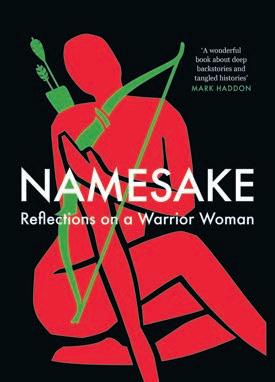
Since the autumn of 2023, the increased extreme violence of this occupation has made it to the forefront of global news sites and the collective consciousness. I ask Nuseibeh about how Namesake can be recontextualised in light of the past ten months. “Ever since the genocide began, I’ve felt pretty dispirited about the role of culture,” she admits. “I haven’t really felt able to think about or celebrate my book at all. It has felt like such a non-thing in the midst of all this. It barely feels real, if I’m honest with you,” she adds with a dispirited smile.
“The context in which I wrote and conceived of the book was one in which the question of Palestine had become less urgent and interesting to many people. It seemed like the progression of the Israeli project was kind of slow but inevitable and no one really cared,” Nuseibeh continues.
“Since 7 October, two things have happened in tandem: a renewed passion for the Palestinian cause, and the re-vilification and dehumanisation of Palestinians, Arabs and Muslims. So maybe the
last months have gotten more people interested in the Palestinian experience, which means they might find something worthwhile in a book that looks at the particular experience of growing up Palestinian in occupied East Jerusalem.”
More than just a record of Nuseibeh’s experiences as an Arab in and outside of Palestine, Namesake is a testament to the mechanics of apartheid and the humanity of resistance. “I would definitely feel less helpless if my book was getting outsiders to think differently about Palestinians,” she reflects. “I have had some really nice messages from people who said that they felt seen or less alone because of the book. For me, that’s the most important thing, to bring comfort to anyone in this time feels wildly precious. If my book can be a bit of a source of comfort, then that’s all I want from it.”
Namesake is out now with Canongate. N.S. Nuseibeh will be appearing at the Edinburgh International Book Festival in conversation with Mairi Oliver on 18 Aug at 5.30pm
We talk with poet and academic Nisha Ramayya about her latest poetry collection Fantasia, and the constellation of influences and touchstones that inform her practice
Words: Tara Okeke
Let’s begin at the end: Fantasia concludes with acknowledgements that are a wonderful survey of the collection’s fantastical ‘experiments’, from close friends to a range of influences like Édouard Glissant and Don Cherry. The artist Moki Cherry – Don’s wife and another acknowledged name – once called fantasy a “very important word”. What does the word mean to you?
[The acknowledgements] are the essential coordinates of Fantasia: everything begins and ends with the people in there. With Moki, I was struck by the dream she and Don had to create a space for people to come together, make music together and raise children together. There was no distinction between art and life. We all dream – whether we’re
“We all dream –whether we’re dreaming about possible futures or trying to rewrite the past – and it can be incredibly powerful when we put our dreams together”
Nisha Ramayya
dreaming about possible futures or trying to rewrite the past – and it can be incredibly powerful when we put our dreams together. Ultimately, that’s what Fantasia represents: an interplay between the spontaneity and intent that fantasy allows.
The collection balances being thoroughly outwardlooking yet also strikingly intimate. What aspects of yourself do you find you’ve claimed, reclaimed or even renounced through working on it?
I was born in Aberdeen, but my parents moved back to India with me for two years and then we moved back to Aberdeen, and then Glasgow. Sometimes people would say, “Oh, where’s Scotland [in your work]? It’s all about India;” and other people would say, “Oh, you don’t sound Scottish.” Like with my first book, States of the Body Produced by Love, [although Fantasia’s] not autobiographical, it still
comes from my experiences as well as an exploration of history that’s mediated through family, Indian, and colonial history.
I’d been trying to find ways to form my own relationship with India, whether that was through particular figures or texts I was translating from Sanskrit to English. But, the more I did this, the more I was coming up against things that I didn’t want to claim and, instead, wanted to denounce. Then, I found the work of Fred Moten and I had a real falling in love moment. He helped me understand I needed to break away from this trap of either having to claim or denunciate a cultural background. There was this other model that was much more about a social life and the possibility that we can still form these unruly, unwieldy, weird shapes together.
How has being part of the academy informed your writing and the ways in which you listen? Well, you’ll be familiar with the state of the higher education sector at the moment: the humanities in particular have been quite actively decimated by the Tories and by managers who run universities like businesses; [meanwhile], students have been subjected to some particularly punitive treatment by institutions that [should] protect and educate them. My academic practice has mostly become centred around trying to figure out how we can do something within these exclusionary and violent structures – how can we create little bubbles of real thought and support? People have an image of teaching as imparting knowledge. That’s not it. Really, [it’s about] learning how to listen and letting the silence in.
I love the tension you’ve underscored here – of sound and silence, of independence and interdependence, of being part of something but also resisting it – as it feels key to reading Fantasia The way you figure musician Alice Coltrane throughout the collection feels central to this. What drew you to Coltrane?
What I found interesting is the way that Alice [initially] figured herself as being in service to John, to her children and, later on, to her spiritual community. She had this extreme modesty: she stopped playing for a while after John died, but she started playing again with his bandmates [a few years later]. Then, she went on a trip to India and underwent [a series of] revelations. When she came back, she set up the ashram, became a swamini and started experimenting, doing things that no one else was doing musically. With Alice, there was this

mix of a private practice – her spiritual austerities – and a collective practice. I started to wonder about what it would be like to be a swamini and to be elevated in this way – because when you’re put on a platform, you’re also set at a remove.
And what drew you to Star Trek – which is also given an honourable mention in Fantasia’s acknowledgements(!)?
I like sci-fi but I came late to Star Trek: it was during the first lockdown. And – even though the first few series are really appalling politically – I really did love the notion of the Enterprise. The symbolic notion of the Enterprise is: this requires work. There is labour involved in maintaining this vision, this social life, and we have to figure out ways of doing this together. And so, with Fantasia, I wanted to see what it would be like to include a range of work without making it enter a churn where it just becomes the same; to be the Enterprise, not the Borg!
Fantasia is out on 1 Aug with Granta. Ramayya will be appearing at the Edinburgh International Book Festival on 14 Aug at 6pm and 15 Aug at 5pm


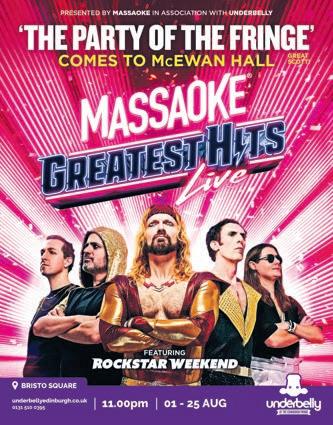

Created out of a residency at Typewronger Books, poet Iona Lee’s risoprint zine Beasties is an otherworldly examination of the dark side of scientific progress
Words: Eleanor Bally
“My inclinations are always towards the macabre,” says Iona Lee from her kitchen table, as we chat over Zoom. “I’ve done a lot of work on witchcraft and the witch trials, magic and the occult… that is just naturally where I end up.” Lee is not exa erating. From Away With the Faeries, her film poem retelling of the fairy ballad Tam Lin (for which she won the John Byrne Award) to her first solo collection Anamnesis which deals with nostalgia and lost moments, Lee is not a poet to shy away from darkness.
Her new zine is no exception. Created as part of her three-month residency at Typewronger Books, Beasties draws inspiration from the grizzly world of animal testing, alchemy, cabinets of curiosity and the underbelly of medical science. “What has been on my mind in the last year and a bit is this dark history that Edinburgh has, and its connection to medical study and scientific advancements,” Lee explains.
As an Edinburgh-based poet, Lee has a deep font to draw from. When she is not writing and creating, Lee is a tour guide, introducing tourists to Edinburgh’s many tales of murder, ghosts, ‘witch’ trials and, of course, body snatching. “Obviously, one of the stories I have to tell on my tour is Burke and Hare. The medical schools were making use of poor people as a means to an end, and that was who was ending up on the dissecting tables. That’s what I was trying to get at [in Beasties], the way that we use each other, and animals, in order to advance ourselves.”
Beasties was inspired by the gory history of Summerhall (née the Royal Dick Veterinary School), where students, teachers and researchers
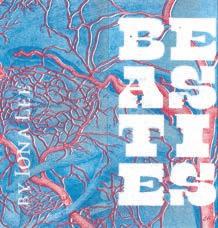
left behind textbooks, beakers, bones and (if the rumours are true) bloodstained cages. “[Poet] Michael Pedersen told me that when Neu Reekie first started doing their gig in Summerhall not long after it opened, you could go into a bit where there were cages that still had blood in them,” Lee explains eagerly. “An elephant was dissected in the room where we all now go clubbing.”
In contrast, the zine is a lovely thing. Sitting neatly in the palm of the hand, its blue and red risograph pages concertina out into one long sheet. It can be read like a book or – if the reader is inclined to unfold it to its full length – a mini-fresco, interspersing stanzas with images of vessels containing small creatures, filled with gore, wrapped in veins. This encounter between different media is not a new way of working for Lee. From her band Acolyte to her recent project with StANza Poetry Festival, in which she created a poem from binary code (originating with jacquard loom patterns), Lee is not one to be contained to a single artform.

“I have always naturally been interdisciplinary… I always want to add music, or add art,” she explains. For Beasties, she draws on her art school training and Masters degree to create the risograph collages and text design that spill throughout the pages, with elements collected (with kind permission) from the alchemical esoterica section of her friend’s shop, The Royal Mile Gallery, which stocks antique maps, prints and reproductions.
“In my Masters I studied alchemy… or I tried to,” says Lee. “It’s esoteric and mysterious on purpose: so many of the illustrations are secret codes because the alchemists were trying to hide their work from other people. What I was mainly drawn to was the alchemical drawings. They’re so gorgeous. Most things appear in vases, or ‘aludels’ – the glass vessels they would do the experiments in. It’s something to do with the mother and creating new life. Everything is a metaphor in alchemy, which is another reason why I was looking into it, because it’s kind of visual poetry.”
The visual invention of Beasties has much in common with Lee’s debut collection Anamnesis and its rich imagistic sensibility, but the process for making them could not be further apart. “The book took me about five years,” Lee reminisces,
“because, well, I had to get better as a writer. I think what I would have published five years ago would have been not so good.” Beasties, on the other hand, emerged with an organic kind of inevitability, as image and text worked to mutually shape each other. Lee’s illustration background gave her a confidence with the form, a confidence she still feels hesitant about when it comes to writing.
“Sometimes I feel like there’s a secret shadowy school where people who studied writing go, and then they get taught all the secret rules that make a good poem,” she says. “And if you didn’t learn that, then you don’t quite know what you’re doing. I always have this silly little insecurity of like, maybe I don’t know what I’m doing and it shows.” Is there a kind of freedom there? “It’s a slightly different brain,” Lee muses, a way of approaching poetry with fewer boundaries, and a greater scope for creativity. Looking at Beasties, Lee’s otherworldly, lyrical collage of Edinburgh’s past and present, it’s hard to disagree.
Beasties is out now with Typewronger Books. Iona Lee will be appearing at Book Fringe at Typewronger Books on 24 Aug at 6pm

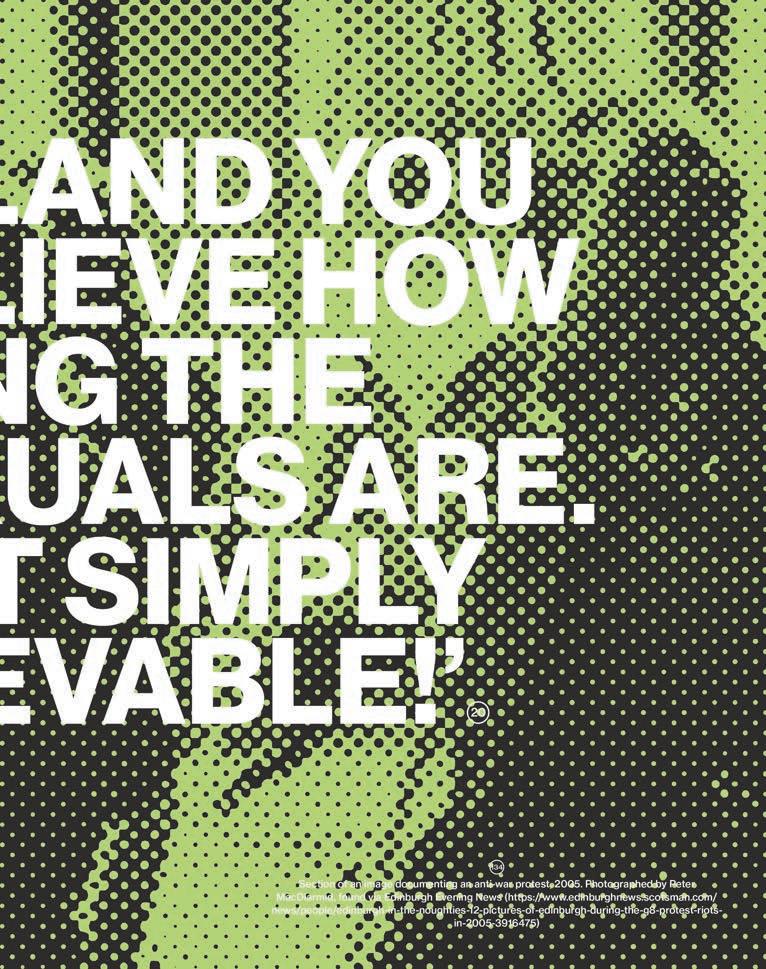

Edinburgh Art Festival celebrates its 20th birthday this year, with a programme that explores the most pressing crises of our times. In advance of the festival, The Skinny meets three participating artists and collectives to talk about their contributions
Words: Harvey Dimond & Shalmali Shetty
EAF’s programme this year seeks to tackle the many urgent political, ecological and moral crises facing humanity. The festival will face these issues head-on in their opening event, a roundtable discussion at Edinburgh College of Art on 11 August which will take the shape of a proposition of how to nurture creativity and use art as a force for good in an increasingly fragile and polarised world. Holding space at the roundtable will be Cooper Gallery (DJCAD, University of Dundee), a distinctive platform in Scotland for challenging practices and critical discourse in contemporary art and culture; Falastin Film Festival, a volunteer-run collective bringing Palestinian art to Scotland through cinema, music and cuisine; Haven for Artists, a
Beirut-based cultural feminist organisation rooted in intersectional feminism, racial justice, and decolonial practices; and Lighthouse Books, Edinburgh’s activist, queer-owned bookshop and community space.
The Colombian collective Más Arte Más Acción (MAMA) will also join the roundtable, alongside the presentation of an exciting new installation at Edinburgh’s Royal Botanic Garden (RBGE). MAMA, who are based in Chocó on Colombia’s Pacific Coast, was formed in 2011 in collaboration with the Dutch artist Joep van Lieshout, with the aim of using art and ecology “to facilitate conversations about the climate emergency,” the collective tell us. Their physical space was crafted from a fallen tree and is nestled in the
rainforest, primarily acting as a residency space for artists from the global south.
The collective speak to us from Rwanda, where they are attending the 60th Association of Tropical Diversity and Conservation conference. While in the country, they will be making recordings and co-designing a circular table with students from the University of Rwanda. This, alongside their exhibition for EAF, builds upon their collective’s interest in tables as previously exhibited in the 2022 edition of documenta, where the collective built a table around a magnolia tree, inspired by the negotiating tables in the United Nations building in New York City. The table comes to symbolise not only a space at which “to negotiate and make decisions,” but also exists at

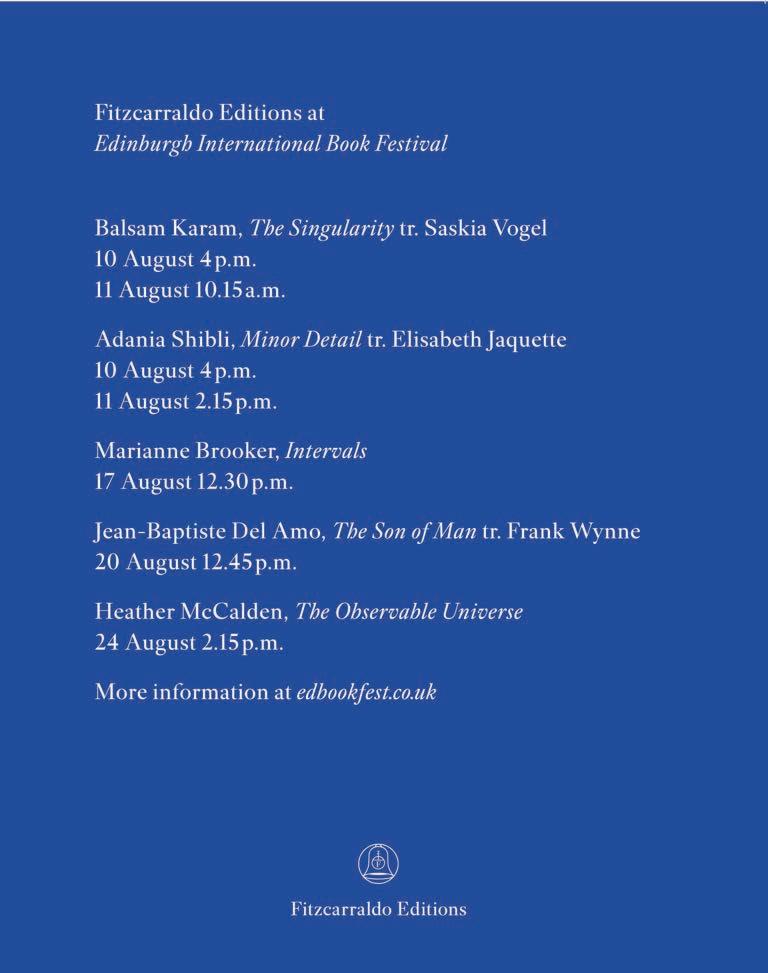
the “convergence of nature, community and future decision making.” For the original installation, the collective fashioned the table and stools from spruce trees that had been killed by bark beetle infestations, which are killing vast tracts of forests across Europe – a phenomemon which is being accelerated by climate change.
For their EAF exhibition, the collective have created a table which circles a tree in the Botanic Gardens. The table is set around a young Portuguese Oak tree planted six years ago near Inverleith House. The table is built from a tree that had been planted in 1859, the collective tell us, upon the su estion of the RBGE – the tree had been killed by a fungal infection, which also “opened up questions about tree-health.” The installation will be accompanied by a soundscape titled Around a Tree, created as a result of an invitation by botanical scientists to formulate and disseminate an oral archive and creative response to climate change conferences. The soundscape will be shared at events taking place in tandem with the COP16 Convention on Biological Biodiversity in Colombia this year and at the COP30 Climate Conference in Brazil in 2025.
Meanwhile, at Edinburgh Printmakers, Tayo Adekunle returns to Edinburgh with her exhibition Stories of the Unseen. Featuring works from 2020 onwards, the exhibition also includes exciting new digital photographs, photogravures and textile works created this year. In advance of the exhibition opening, Adekunle tells us that Stories of the Unseen explores older concerns in her practice, such as “decolonising history and providing alternative narratives,” while newer works explore aspects of Yoruba spiritual practices which “explore the power that storytelling holds in preserving and celebrating cultural history, in spite of misrepresentation.” This exploration takes the form primarily of photographic works, but also in a textile work “inspired by the map of Africa and how borders were created and changed over time – the most dramatic division occurring during the Scramble for Africa.”
The human figure remains central to her practice – evident in works such as Acceptance of Duality, where the artist also takes a deep dive into Yoruba spiritual practices. Particularly poignant is the exploration of the Orisha Èṣù, who Adekunle describes as “the divine messenger between the human and the gods… known to be playful and often play tricks on both the gods and humans.” However, when European missionaries arrived in what is now known as Nigeria and translated the Bible into Yoruba, Èṣu's name became the translation for the devil. This stigmatisation of Èṣù, to Adekunle, “is representative of how Yoruba spiritual tradition is negatively regarded as a result of repetitive misrepresentation.” In response this, the artist started creating works in order to “share stories of Èṣù to provide more insight into a complicated and misunderstood figure.”
Over at the City Art Centre, Renèe Helèna Browne will present new film installation Sanctus!, commissioned for EAF in collaboration with the University of Edinburgh Art Collection. The title, derived from the Latin word for ‘holy’, references the Christian hymn recited during the Eucharist or Holy Communion in Catholic Mass, where the priest offers a glass of red wine to God in the form of blood atonement. The hymn is about remembrance,
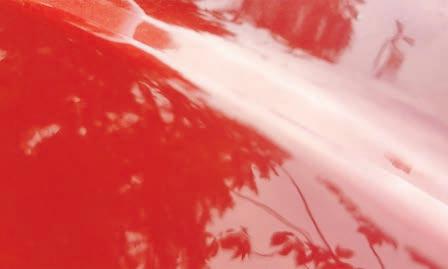
‘Interwoven through Sanctus! are moments of reality, imagination, fiction, memory, and speculations on what might have been before one’s birth’
consecration, praise and sacrifice – themes that are heavily embedded in the film.
Browne has long been fascinated by origin stories of European languages, particularly Latin, as well as the act of translation that accompanies it. This is tied in with their interest in portraiture, a gesture that is imbued with the passage of time, and a representation that is inherently imperfect and incomplete in its approach to understanding someone, even when sharing the same space. The film thereby reflects on both the translator and the artist — exploring the acts of translation through portraiture and the limitations that come with it. Through this, Browne seeks to comprehend relationships with people around them.
This narrative primarily focuses on their relationship with their mother. Browne delves into new territory in the history of their relationship through occasions of shared activities – such as visiting newspaper archives in Donegal in search of newspapers printed on the day their mother was born; or watching the short video Little Works by Andrea Büttner, which explores care and community among nuns. Consequently, through the sharing of space, acts of care, and fragile moments of mother-child bonding, the film elaborates on notions of grief, devotion, faith, love and martyrdom in the process of world-building. Browne assumes the role of the interviewer, and through conversation, delicately unravels their mother’s memories through stories. This process draws a particular portrait of a
woman born in 1960s Ireland, and revisits instances such as her upbringing within a Roman Catholic family and community; the significant influence of religion in shaping her reality; and memories of her brother, Browne’s uncle John, a renowned rally car racer in Donegal.
Interwoven through this are moments of reality, imagination, fiction, memory, and speculations on what might have been before one’s birth, and what may be in the afterlife – ideas that Browne and their mother don’t necessarily agree upon. A significant motif in the narrative is the circle – the idea that you end from where you begin, in a way as to orbit around someone through a sense of curiosity; in a way as to learn how to share that space with someone; to then pull away from the source and reflect upon it, yet to return to get a deeper understanding of it. This process is quite obscure in the film and constitutes what Browne calls “a full methodology of the project.” As part of the development of the project, Browne collaborated with Poh Linn Lee, a Narrative Therapy Consultant based in Canada to establish an ethical framework for the project.
The 28-minute film, shot across Donegal and Wexford in Ireland, will be projected in a purposebuilt space within the gallery. The soundtrack features Browne’s deconstructed version of Hotel California by The Eagles, a song their mother is very fond of. The room will further consist of walls upholstered in red pleather, reminiscent of their uncle’s red car and leather seats, accompanied by three drawings depicting religious figures. These drawings are viewed behind red acrylic sheets, imbuing a sense of memory, remembrance and grief in the viewer; and serve as a means of storytelling, presenting biblical figures both as they are portrayed in the Bible and as they are fictionalised in films.
Edinburgh Art Festival Opening Provocation, Edinburgh College of Art, 11 Aug, 11am-3pm, £12
Tayo Adekunle: Stories of the Unseen, Edinburgh Printmakers, 27 Jul-10 Nov
Renèe Helèna Browne: Sanctus!, City Art Centre, 9-25 Aug
Edinburgh Art Festival's's Platform exhibition returns for the festival's 20th birthday year with a fresh cohort of four emerging artists. This year, each artist has been paired with a writer from the EAF x The Skinny Emerging Writers programme to explore their practices
Words: Gabrielle Tse, Rory McMillan, Ella Williamson and Celeste MacLeod-Brown
Alaya Ang
For their Platform presentation The Fingers Pulling
The Thread, Singaporean artist Alaya Ang has created a floor-based multimedia piece displaying hand-dyed textiles produced in Indonesia and Scotland. A meditation on textile craft, lineage, and creative labour, the installation explores how personal and collective memories are woven into what we wear.
Not long before our conversation, Ang had travelled to Indonesia, learning how to dye fabric with natural materials such as mud, jackfruit trees, and mangrove barks. The artist has been researching mud-dyeing techniques since their last installation, Unravelled Gathering, which was exhibited at Edinburgh’s Talbot Rice Gallery. “I was drawn to the rope’s dyed maroon shade without knowing why,” says Ang. “Afterwards, I learned that in Shunde, Guangdong province – where my mum’s side of the family is from – people made mud-dyed silk, called gambiered silk, in that exact shade.”
This discovery prompted Ang to dig deeper into the connections between textile and lineage. Compared to historical records, textiles share a particularly tactile connection with communities, as styles, craftsmanship and materials all reflect multi-stranded histories of trade and industry. During our discussion, Ang raises the example of tea leaf-dyed fabric, which tells, to involved listeners, the fraught histories of commercial espionage in Sino-British trade. “The body is a territory,” explains Ang, “and our ways of dressing have traditionally reflected our histories and origins.”
As vessels for indigenous landscapes and practices, mud-dyed textiles became Ang’s research focus. “When you wear mud-dyed clothes,” Ang says, “you carry your soil with you, long after leaving your native land.” To Ang, textiles form part of a network of relationships, as significant to communal memory as language, food, and space. The installation also reflects its Scottish setting, having been dyed with soil from the River Esk and the West Lothian Shale Bings. Coloured with iron ore and mining waste, the fabrics testify to Scotland’s environmental degradation over the past decades.
To the artist, whose parents own a tailoring business in Singapore, textiles carry a personal significance. “I grew up listening to the cutting of fabric,” recalls Ang. “My mum made our clothing and curtains!” Recordings of the shop’s ambience will play in the installation. Invited to become tailors themselves, audience members will be encouraged to cut and mend fabric scraps, producing a final piece that reflects collective processes of creation. Ang says: “I want visitors to be
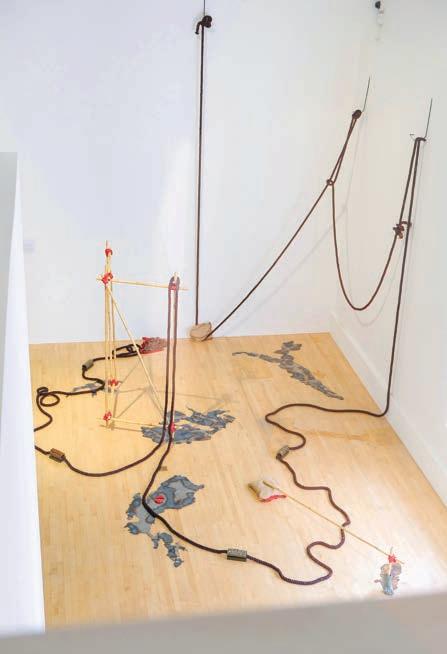
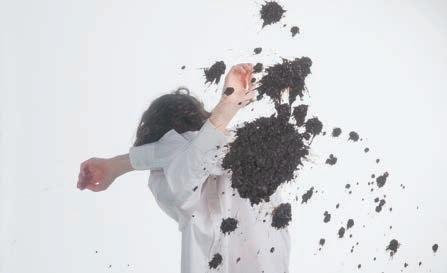
involved in this collaborative process of continual change, especially since my family is also a part of this artwork.”
The installation is part of a long-term project titled The Sea, The Heat, The Rope, and The Fingers Pulling The Thread, which Ang envisions in the form of a “deconstructed musical”. “There’ll be sculptural elements,” Ang explains, “but also live performances, sound pieces, and more.” Currently, the artist is collecting a vast assortment of culturally significant miscellanea – such as woven baskets, paper money, and bamboo leaves –objects that “make sense to me,” Ang says with a light laugh. “This has been a period of homecoming,” reflects Ang, who has just returned to Scotland after a period of rest in Singapore. “My daily experiences are encoded in these materials.” [Gabrielle Tse]
Edward Gwyn Jones
Glasgow-based artist Edward Gwyn Jones, exhibiting at Platform 2024, engages with moving image, text, and printmaking to explore persisting social, technological, and personal histories. His work reframes seductive and latent artefacts, examining their role in shaping collective and individual perceptions. Jones discusses how he's using this opportunity at Platform to investigate these ideas. Can you tell us about the work you will be exhibiting at Platform?
My work for Platform is a video installation and a series of mirrored prints that centre a motif of a performer having various materials hurled at them from behind the camera. E s, mud, cream pies and gunge don’t hit the performer, and instead impact a clear screen revealed between their tense body and the camera. These materials reference contemporary and historic substances used to humiliate subjects in acts of both persecution and protest, implicating the screen, the mediated image, and its viewership as complicit in persecution, but also su esting the screen’s potential for resistance. Resistant and irresistible. Previously you’ve worked with subjects such as queer film dialogues and 70s-80s pop music. Can we expect similar choices in the subjects and artefacts that you work with in Platform?
The motif in this work is a recreation of a sequence from Alan Clarke’s 1974 gay
coming-of-age folk-horror film Penda’s Fen. In a lot of my work I appropriate what I refer to as ‘artefacts’ from various histories as a way to interrogate how unreliable material informs our social, cultural and political ideas. With this motif I hope to engage with sexual practices of humiliation, where a potentially violent gesture is reclaimed and disrupted. I guess I also see the false screen as speaking to a pornographic subjectivity where a viewer is both in control and gives up control to an image.
Your work often emphasises the role of the viewer. In this piece, what specific experience or reflection do you aim to provoke in the viewer?
In this work, the viewer’s perspective from behind the camera is that of the assailant – the prosecutor or protestor. The viewer then switches roles to become the humiliated subject when they are reflected in the mirrored prints accompanying the video work.
How do you see your work relating to the context of Edinburgh and its institutions, like the City Art Centre? How does exhibiting at the Edinburgh Art Festival enhance the relevance or impact of your work?
I’m excited by the civic-modern interior of the City Art Centre because it relates to the publicness of the gestures I’m referencing and the political infrastructures that legislate and police them. To me the feudal contexts of Edinburgh also complement the work, with its lore of early-modern torture and Victorian waste mismanagement, the City Art Centre towering above the former polluted Nor Loch where Waverley now stands. [Rory McMillan]
Kialy Tihngang
I met with Kialy Tihngang at the site of her duo exhibition with Josie KO for Glasgow International 2024. Entitled fir gorma, Gaelic for ‘blue people’, the work explores the historical and mythical presence of Black people in Scotland. Tihngang’s contribution, Neyinka and the Silver Gong, was born from her exploration of ‘Scottishness’ and, more so, her own diasporic presence among the remains of a colonial history. The film, part
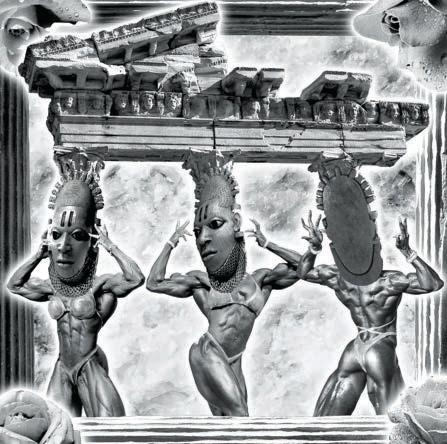
Braveheart, part Nollywood, is an extended trailer of sorts in the style of a fantasy blockbuster. Tihngang observes Braveheart’s ahistorical elements, which highlight the imbalances in the treatment of African histories: marginalised, and rarely canonised, leaving Tihngang to speculate outwards to redress this disparity.
While filming Neyinka and the Silver Gong, Tihngang road-tripped around rural Scotland, yet could not escape her discomfort as a Black person in the predominantly white landscapes. “Scotland in particular purports itself to be this real open tolerant country, but then I’ve experienced the same racism I’ve experienced my whole life within it.” Take high fantasy (Tihngang admits to being a huge fan of Narnia and Harry Potter). Despite the magical ability to create the impossible, these lands remain blindingly white. While trailers cherry-pick the most enticing elements of a plot to sell tickets, mythologies like Braveheart pick out the best parts of a history to sell an identity, a “virtuous, brave, really incredible depiction of Scottishness” completely divorced from their complicity in colonialism.
Tihngang’s research departs from the distant mythology of Scotland and pivots towards exploring colonial-era ethnographic photography – specifically its fetishisation of Black women and their breasts. With the “Black woman’s body in constant servitude, whether that’s to nurture, titillate, or labour,” Tihngang anchors this to her own Cameroonian heritage and understanding of regional tradition. In the run up to Platform, she’s begun to survey the practice of breast ironing, where prepubescent girls’ chests are massaged with hot stones to stunt their growth and development – “a protective mutilation so that they can get an education, not be married earlier, and to be protected from sexual violence.” Her understanding has been partly influenced by Instagram infographics and self-proclaimed TikTok experts, a phenomenon of aestheticising traumatic information pervading each new ‘social media activism’ movement. In order to be made digestible to digital audiences, this reduction can take many forms, as Tihngang notes the absurdity, total disconnect and commonality that, “nowadays someone makes an infographic in a few different colourways to match your feed.”
Tihngang shares with me that she had a breast reduction a few years ago – in a way replicating the process of breast ironing on herself – tying together her understanding and experience of her own body with a cultural practice. Embedding the modern diasporic within traditions

that reach us orally, digitally or otherwise, “the internet is such a vessel of Black History: of contemporary Black history and of historical Blackness”. It is how this information is corrupted, transmuted and made palatable that is beginning to underpin Tihngang’s work. [Ella Williamson]
Tamara MacArthur
Tamara MacArthur’s work for Platform will forge a site dedicated to centring care and emotional vulnerability, in response to the artist’s environment. MacArthur’s practice often balances along the edge of a façade, relying on an audience not only to engage but to suspend disbelief in the artist and their construction of intimacy. It manifests as something like a sequinned paper theatre, a glittering figment of the artist’s desires for sharing connection and extending the ability to believe in one another, our capacity for closeness.
The work will exist across multiple facets of an installation, featuring drawings that serve as sensually attuned self-portraits, a thickening dispersal of curtains, and a private booth that will also host interactive performances by the artist on 17 and 23 August. The space, bathed in a warm glow, will bear the responsibility of greeting guests, caressing them as they make their way towards the private booth, introducing a soft physicality to the experience and enticing them into a new intimate situation. Inside, audience members will find themselves encased in a glittering room, a haven of comfort dedicated completely to making them feel special. During the
performance dates, MacArthur will offer a moment of connection through a song-length private dance, extending gestures that inhabit and reach around the borders of intimacy, holding eye contact with viewers and initiating limited touch. Outside of performance times, the essence of this experience will be captured within a sound work played in the booth, retaining elements of the artist’s presence.
While verging on the fantastical, the work gains its depth through its criticality and engagement with ideas of devotion and our ability to exchange love and affection, striking a particularly poignant chord between social themes and those concerned directly with emotion. MacArthur brings into play their own experience as a stripper but expands more broadly on our perceptions of intimacy, exploring the links between acts of service and human connection. These efforts will seek to disrupt the current environment that perpetuates disconnect and the media’s attempts to restrict and control human nature and empathetic response. In the artist’s words, they will be “creating a space that honours our foundational, unifying needs for intimacy and understanding.” This work will operate on a different frequency of intensity, allowing for assured vulnerability and emotional permeation. It’s an invitation for connection and unique proximity that exhibit visitors should seek to accept. [Celeste MacLeod-Brown]
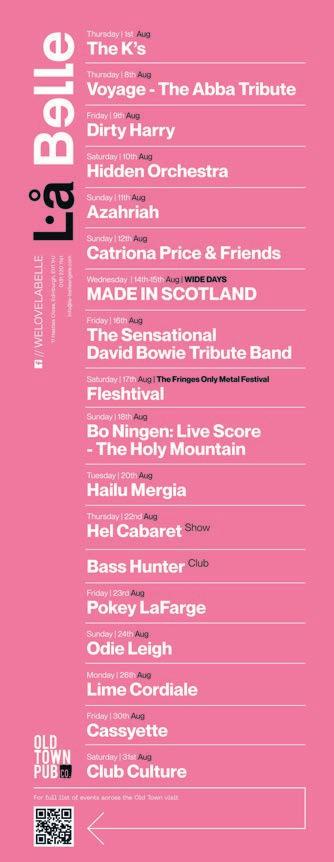
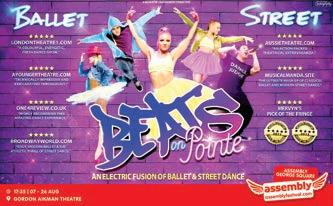



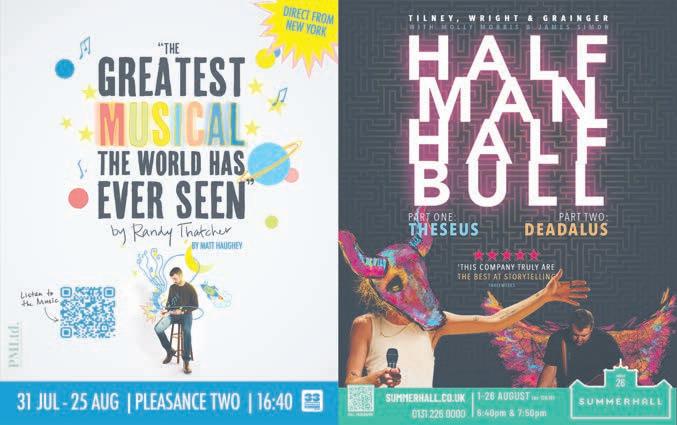

As Fruitmarket celebrates its 50th birthday this year, The Skinny takes a deep dive into the archive for a look at five of the gallery’s pioneering exhibitions – from the 1970s to the 2010s
Words: Harvey Dimond
1970s: Tamara Krikorian
Fruitmarket opened at its current site, above Edinburgh’s Waverley station, in 1974, operating initially from just its ground floor space. During its early years, the gallery’s curatorial focus largely revolved around male British and American artists, while also looking to Europe, with exhibitions by Polish, Finnish and Dutch artists. Looking back through Fruitmarket’s archive, it is fascinating to see how much this early programming contrasts with the diversity and global reach of Fruitmarket’s exhibition programme now.
Tamara Krikorian was the first woman to have a solo exhibition in the gallery since the gallery’s founding. Born in Dorset to Armenian parents, Krikorian was an Edinburgh-based artist who became recognised for her pioneering video works. In 1979, Fruitmarket showed two of her new works in a solo show: Vanitas (Or an Illusion of Reality) and Tableau. Unusually, Krikorian’s ‘television sculptures’ did not seek to alter the hardware of the television, but instead took cues from forms of image-making such as 17th-century Dutch painting, to question the authority of broadcast as the sole means of using the television.
Krikorian was a notable figure in the development of video art in the UK during this period. In 1976, she presented Video: Towards Defining An Aesthetic at the newly opened Third Eye Centre in Glasgow (now The Centre for Contemporary Arts), the first exhibition of video art to take place in
Scotland. In the same year, she also co-founded London Video Arts, which would later merge with another organisation to become LUX. During this period, The Third Eye Centre and Fruitmarket shared many values and maintained a reciprocal working relationship; artists who were invited to show their work in Glasgow would often be invited to tour to Edinburgh to exhibit in Fruitmarket, and vice versa. Earlier in 1979, Krikorian had already exhibited her installation An Ephemeral Art in Glasgow before the opening of Eye to Eye: Video Installations at Fruitmarket later in the year.
1980s: Jean-Michel Basquiat
1984 saw a shift in Fruitmarket’s curatorial ambitions, with Mark Francis becoming Director and the gallery taking over the upper floor of the building. Francis’s ambitious programme brought in many world-renowned artists from Nancy Spero to Dan Graham, while also giving space to Scottish artists such as Steven Campbell and Gwen Hardie. At this time the practice was to curate two shows alongside each other – one upstairs and one downstairs – making for some evocative juxtapositions, such as John Cage shown alongside JeanMichel Basquiat in 1984.
The iconic New York painter’s exhibition came at the height of his success and only four years before his tragic and untimely death in 1988. Paintings 1981–1984 was the first showing of Basquiat’s work in the UK – an exciting moment for the new Directorship, for Fruitmarket and for Edinburgh. Basquiat shot to fame as part of the artist duo SAMO with Al Diaz, who together made artworks in the cultural hotbed of Manhattan’s Lower East Side. As a solo artist, Basquiat captured the more macabre side of New York life; the sta ering class divides, racial inequality and continuing spatial segregation. At the same time, Basquiat’s practice was deeply introspective and textual, reflecting on his own experience as an African-American man, but also as the child of


a father with origins in Haiti and a mother from Puerto Rico. The exhibition featured 16 of Basquiat’s large works on canvas, many of which have become some of his most recognisable works: including Leonardo da Vinci’s Greatest Hits, In Italian and Hollywood Africans
Later in the 1980s, Fiona McLeod took on the Directorship, exhibiting works by artists including Richard Hamilton, Max Ernst and Marie-Jo Lafontaine. A key exhibition during this period was the group show From Two Worlds in 1987, which featured the works of Sonia Boyce, Rasheed Araeen and Lubaina Himid, among others.
1990s: Seydou Keïta & Malick Sidibé Seydou Keïta and Malick Sidibé are both globally recognised for their contributions to contemporary photographic practice on the African continent. The two photographers lived and worked in Bamako, Mali’s capital city, capturing thousands of portraits in their commercial studios in the city. Their photographs are both snapshots and archives of life in the period marking the end of French colonial rule in Mali and the promise of independence.
While Keïta had retired in the 1970s, following a stint working as a government photographer,
his works weren’t shown internationally until 1991, when his photographs were shown anonymously at the Center for African Art in New York City. Four years later, his works were being shown at Fruitmarket alongside Sidibé’s (who had his first international exhibition in 1994). Sidibé had also been working in Bamako, capturing the party and club scenes in a newly independent and flourishing Mali. For Fotofeis ’95, the second Scottish International Festival of Photography, Fruitmarket Gallery presented the photographs of Keïta and Sidibé together. The exhibition had originally been shown in two parts at the Fondation Cartier pour l’art contemporain in Paris, but the curatorial decision was made to merge the works of the two artists into one show. This pairing allowed for both similarities and contradictions to emerge between these two photographers, who were working in the same city in the second half of the 20th century, albeit in vastly different national contexts. There are certainly similarities in the way that both artists intuitively and effortlessly deploy pattern and style as photographic devices and in their investment in the potential of the classic studio format – but also differences, in the contrast between Keïta’s interest in cosmopolitanism and more formal compositions versus Sidibé’s more candid, playful images of young people and hedonistic party-goers.
2000s: Ellen Gallagher
Fiona Bradley took over the Directorship in 2003. Her programme continued to build on the strengths
of the gallery’s history of showing Scottish and international contemporary art and notably giving high profile exhibitions to women artists.
One of these women artists was the American multi-disciplinary artist Ellen Gallagher, famous for her collaged and painted works. Gallagher’s paintings and collages are filled with repeated motifs and regardless of the medium she works with, are full of motion and fluidity. The exhibition, titled Orbus, was staged at Fruitmarket at the end of 2004 and into 2005. It featured older and new works, selected in close collaboration with Gallagher herself. The artist often uses biomorphic and oceanic forms to represent the Black body and experience, such as in Watery Ecstatic, inspired by the aquatic, afrofuturist world created by the musical duo Drexciya. This underwater kingdom is populated by enslaved African women and children who were murdered by being thrown off ships during the transatlantic slave trade – the musical duo pays homage to their loss by imagining their survival and their creation of this new world. Orbus featured three works on this theme, including a film titled Murmur made in collaboration with the Dutch artist Edgar Cleijne, which directly references Drexciya. The exhibition also made space for new concerns in Gallagher’s practice. This took shape in the presentation of her film Monster, where the artist scratched, drew, slowed down and sped up footage from a Cold War-era science fiction film, quite literally changing the narrative to create a new story about alien visitations. In another film titled Super Boo, Gallagher combined animations and drawings with cutouts of Bruce Lee and Jim Kelly
from adverts in Ebony magazine, who move and pose across the screen.
2010s: Karla Black
In 2011, Fruitmarket had the honour of curating Scotland’s representation at the 54th Venice Biennale (Scotland + Venice). Karla Black was selected to represent Scotland in the same year that she was nominated for the Turner Prize. The artist presented a series of sculptures, which she described as “almost objects”, over nine rooms in the grand 15th century Palazzo Pisani, which sits pride of place looking out over Venice’s Grand Canal. Black’s distinct, instantly recognisable immersive sculptural installations are made with everyday materials such as nail polish, soap, cotton wool and toothpaste. Her sculptures, often made intimately in situ, feel live and fluid – they hang, spread and stretch, very much drawing our attention to the spaces that they inhabit. The duality of these ‘live’, transforming and tangible works and their setting in traditional gallery spaces, which can often feel rigid and static, makes for a highly engaging and immersive viewing experience. In 2021, Black was the first artist to be invited to exhibit in all of Fruitmarket’s gallery spaces (which had been refreshed and redeveloped alongside the construction of the brand new Warehouse space) following its closure due to the pandemic. The retrospective featured over 30 works spanning two decades (including works from the 2011 Venice Biennale) and set the scene for many more years of exhibitions and events in Fruitmarket’s stunning galleries.
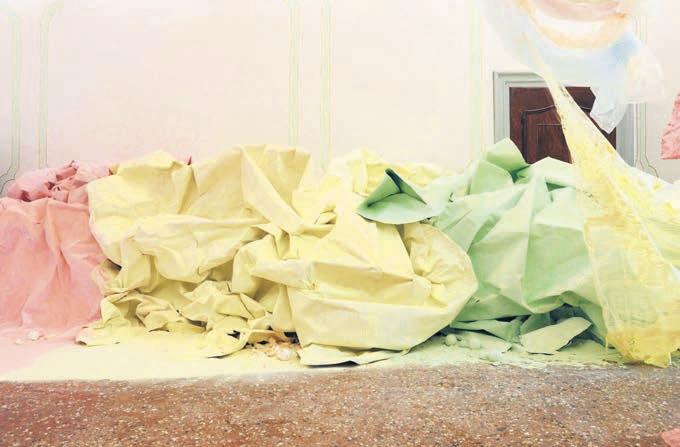
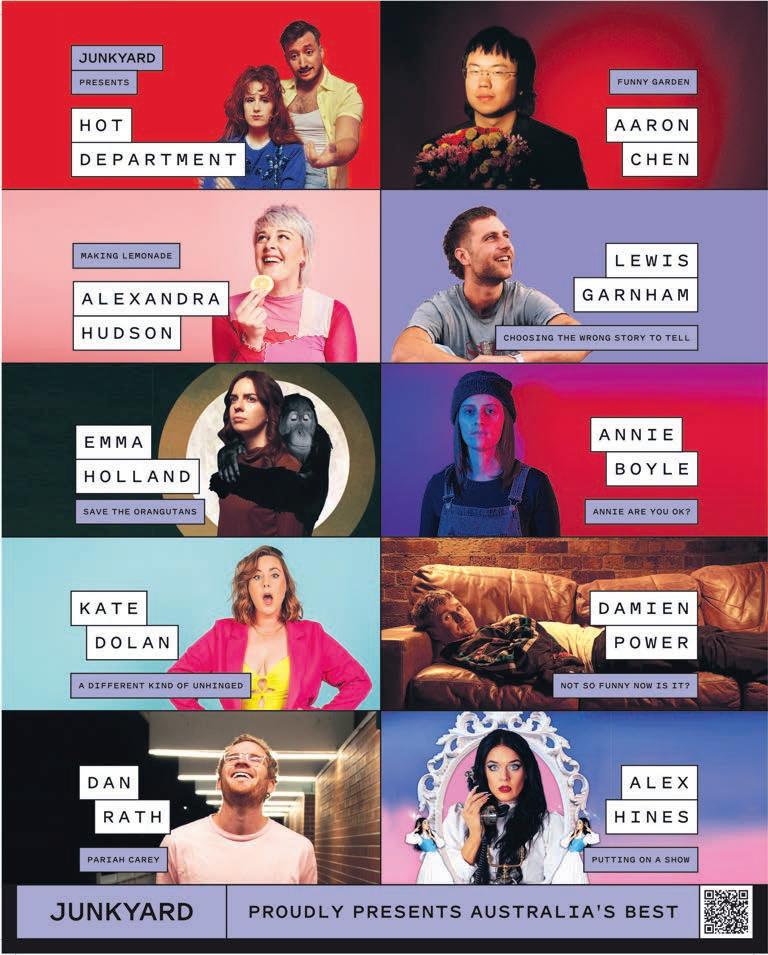
Ahead of its world premiere at the Edinburgh International Film Festival, we chat to Carla J. Easton to find out more about new documentary Since Yesterday: The Untold Story of Scotland’s Girl Bands
“What did you want to be when you grew up? Who did you see that made you think, I could do that too?”
Scottish artist Carla J. Easton says, “For me, that was girls making music together, so in Scotland, where were they?” This question is brought forward in the upcoming documentary Since Yesterday: The Untold Story of Scotland’s Girl Bands, made with co-director Blair Young. It’s a question I have asked myself many times; whether looking for them on the walls of King Tut’s or at the top of today’s TRNSMT lineup – where are all the women, and more specifically, where are all the girl bands?
This is what Easton and Young have been searching for in the archives for eight years now. Since Yesterday is a celebration of their findings; of the voices who were left out of Scotland’s world-renowned musical canon until now. It’s been a long, slow process for the two, launching a Kickstarter in 2018, pausing through COVID-19 in 2020, sifting through 1,500 artefacts of the archive including Jill Bryson from Strawberry Switchblade’s old white polka dot suitcase full of photographs, and now premiering the documentary at the Edinburgh International Film Festival on 21 August. Easton assures me it’s a journey that has been worth it.
“My first and foremost worry is that the women in the film are happy with it,” Easton explains. “It’s their story, their film and each band deserves a documentary in their own right. You just hope that the message of the film, the push for change, is apparent, without ramming it down people’s throats.”
And what is the message of the film? “Well, I think for me, we need to redefine what success is,” Easton su ests. “Because the film shows there are successes, and there are successful girl bands. But because you’re a woman or non-binary or a Black artist or artist of colour, you can only maybe reach here. Look at The Ettes: they never released a record at all and recorded one demo tape. If we look at their contribution to women making music: that’s three teenage girls who got up on stage when sexual assault was common in the audience for any gig, and were like, ‘Fuck that.’ They saw the guys there and thought, ‘We’re going to do that too’, and they wrote songs about how difficult it was being a young girl at that time, just experiencing everyday misogyny. One hundred per cent we should be celebrating that and a hundred per cent that’s successful because when the odds were against them, they got up and they did it.”

The documentary does not restrict itself to one genre. We hear from the likes of Sophisticated Boom Boom!, Strawberry Switchblade, The Ettes, The Twinsets, and Lung Leg. While their sounds differ from 60s harmonies to bedroom punk, they are united through their loyalty and experiences of mistreatment and sexual discrimination by the industry. The documentary focuses on “the phenomenon of all-girl bands,” as Easton puts it. Our filmmakers question what it means to be a girl band today, and what it meant then. Easton and Young look at this global issue

“It’s their story, their film and each band deserves a documentary in their own right”
Carla J. Easton
through a local lens from the 60s right up to the present day.
“It became quite apparent to me that all these women do have success,” adds Easton. “They do have successes; they’ve got top ten hits, they’ve supported the Beatles and the Stones, they’ve played Wembley and had multiple John Peel sessions, magazine covers, and world tours, yet they’re not in the general rhetoric of documentaries, films, or exhibitions that celebrate Scottish music.”
It’s emotional hearing from these women today. Easton is right, they have a multitude of successes in their experiences and bravery. It’s a shame that we live in a society that rewards outcome over perseverance. We should reward The Ettes for recording a demo for John Peel with a drum kit made out of cardboard boxes; three teenage girls who got up on stage and wrote songs about how difficult it was being a young girl at that time; The McKinley Sisters supporting The Beatles and The Rolling Stones on tour.
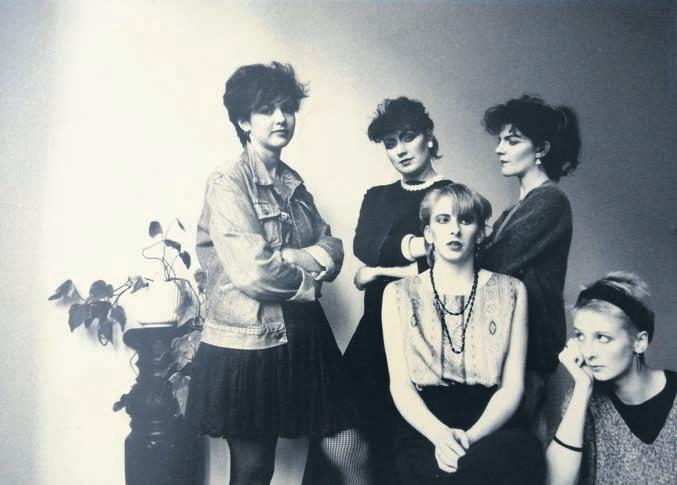
“You know, by interviewing Sophisticated Boom Boom!, you realise that they’re the first band to ever play the Barrowlands because they were the support band,” Easton says. “They’re the first band that played on the stage, as we know it now, this iconic venue that’s recognised throughout Europe, and there’s still no mention of them within the building.”
Since Yesterday does not look back at history with rose-tinted glasses. Some glasses are crooked and cracked, and some are stuck together again with glittery tape. Seeing strong women, many over 60, talking on screen should not be unusual but it is. These women come united, fearless, and bold, with similar experiences of discrimination and similar barriers that stood in the way of their routes to ‘success’. Much of this came down to not being taken seriously enough or wanting to start a family – it came down to the realities of being a woman. It seemed that one could not be both a mother and a pop star. It seemed that the music industry did and still does not know how to support girl bands. And why not? The most shocking part was that in 2010, The Hedrons were told big labels weren’t willing to take a risk on them in case one of them became pregnant. This is discrimination.
Easton adds: “And it wasn’t even that they were fired or dropped for becoming pregnant. It was the fact that the majors weren’t signing them because they might. That’s in 2010, it’s not even that long ago. In any other workplace that would be illegal so why is it still okay in the music industry?”
“Sophisticated Boom Boom! [were] the first band to ever play the Barrowlands... there’s still no mention of them within the building”
Carla J. Easton
These are questions you can’t quite believe we are still asking in 2024. Questions that people at the top of the industry tend to ignore and leave up to grassroots organisations to find solutions to. Organisations such as Hen Hoose Collective, Popgirlz and Fanny Riot have built a community for women and non-binary artists to feel heard and supported in their music. “It was a really conscious decision to include the organisations of today because you don’t want to make a film that’s just a nostalgia trip,” Easton explains. “I don’t think that’s responsible filmmaking with the recent stats published on women making music. Look at all the people involved in those projects. It’s all grassroots and DIY.”
The documentary celebrates the untold stories of Scotland’s pop pioneers but doesn’t hide the fact that there are still major issues today. It’s a push for change and an urge for viewers to reassess their own actions. “I just hope if you watch the film, you’re going to look at your own record collection or your own playlists and be like, is this diverse?’” Easton adds, “If I’m buying tickets for events, am I buying tickets for the same sort of people that are always on stage in the same sort of genres or what can I do at a grassroots level as a consumer of music? Whose voices am I not hearing? Really sit and ask yourself that because we don’t do that.”
Where the music industry praises top charts and money-making names, Since Yesterday asks punters and the music industry to look at perseverance, talent and bravery. We want young people to see themselves in our artists, venues and festivals today. It’s a call to change. Easton adds: “I hope that the perseverance shines through from all the women. I’m not going to sugarcoat the challenges and the perseverance across the decades, and I would hope that the film ends on a note of hope and the possibility of what can be achieved.”
Since Yesterday: The Untold Story of Scotland’s Girl Bands gets its world premiere at EIFF, Cameo 1 & 2, Edinburgh, 21 Aug sinceyesterdayfilm.com

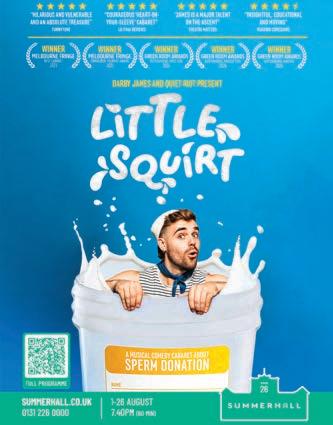
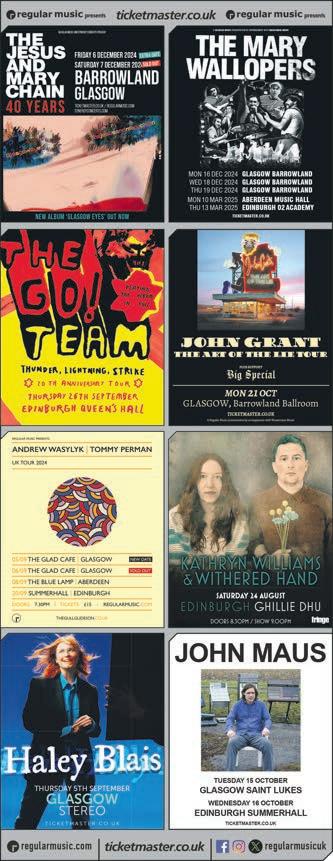
Ahead of her appearance at the Edinburgh International Festival, Lisa O’Neill talks about the importance of documenting sociopolitical issues and nature in her music
The writer Ian Maleney said upon discovering the poetry of Seamus Heaney that it was the first time he felt the place he was from could be “a place of poetry”. Such is the same feeling one gets upon listening to Lisa O’Neill for the first time – that there is a certain magic to the place. The Cavan-born songwriter infuses every song with the Irish tradition of storytelling, seamlessly weaving together a blend of poetry, music and the art of the scéal.
Off the back of her acclaimed fifth album, All of This Is Chance; a recording of Bob Dylan’s All The Tired Horses for BBC’s Peaky Blinders (one Cillian Murphy counts himself among her many fans); and a beautiful rendition of Fairytale of New York with Glen Hansard at Shane MacGowan’s funeral, O’Neill lands in Edinburgh this August to play the International Festival, in what will surely be a magical evening and the perfect escape from the madness of festival season.
It’s no secret that traditional music has seen a renaissance in the last few years – from Scotland’s many traditional music festivals (covered in this very magazine), to acts like Lankum, Ye Vagabonds and Niteworks all gaining unprecedented popularity. What is driving this resurgence? Perhaps a hankering for a simpler, softer existence? “I think it never went away,” says O’Neill. “I think it’s always been part of our education. We tapped into the older songs, you know, but it seems to me, it’s just popular now. It seems to be reaching the bi er stage, and the media are on board with it… but it never died.”
“Our planet is in trouble, we’ve clocked out, we take it for granted that it’s just there”
Lisa O’Neill
Take a wander over to your local’s trad sesh of an evening and you’ll see this to be true – it’s an education, passed down through generations, a way of continuing the great oral tradition. As O’Neill says, “songwriting is about storytelling,” and what a story she tells. Her music is the kind that stops you in your tracks, makes you slow down, appreciate that which is around you.
Nature is a pervasive theme, the wind, trees, flowers and birds becoming recurring characters throughout her work. They are songs that feel at once new and fresh and also as though they have been with us for centuries, imbuing the natural world with a sense of wonder. “An ecologist told me recently, it just kind of blew my mind, that
two-thirds of life on Earth is below the soil,” says O’Neill. “We’re so aware of our immediate, of what’s going on right around us, but there’s a sense of of everything else below and above and around us. So I think it all starts with that and then you take it from there and try and follow that, the universe and just nature, you know, to see that a leaf, a tree is alive, is a being, that a river flowing, is alive. And that mirrors our own existence, it really does.”
It goes without saying that a huge part of loving our natural world is protecting it, something O’Neill is vocal about – “And I think that’s probably the lack of staying in touch with it, and being distracted,” she says. “Our planet is in trouble, we’ve clocked out, we take it for granted that it’s just there – it is, but we’ve got to look after it.”
A part of that looking after is learning from the generations who came before us, a lesson we can borrow from traditional music itself, and one that is present in O'Neill's music. “Times have changed, and the older generation know a different world, and that world is really valuable to us.”
Part of what that generation has given us are the stories we tell, from the folk tales we grew up with, passed on, to the story of their own day to day lives. Something O’Neill is passionate about in her own music, is documenting the, as she puts it, “social problem” of today. What is folk music, if not a conduit for social change and liberation?
“I don’t understand how we’re being told, on the one hand, that we’re a very rich country, when our people are not rich. They’re stru ling. There’s a homeless problem in Dublin that is getting worse. So it’s important for us to keep our eye on that stuff and document it, write about it in our time,” she says. “I would hate to think of people looking back at the music and the arts
Words: Emilie Roberts
and what people were writing in the 2020s, and not see a sign of the truth.”
It is hard to listen to O'Neill and not see shades of the great Irish artists that came before her, those who were dedicated to documenting the truth of the world they lived in against the odds, in particular Sinéad O’Connor, who spent her life speaking up for those without a voice. We may have in the past year lost pillars of the Irish music scene, but in Lisa O’Neill, we have certainly found another.
Lisa O’Neill plays the Edinburgh International Festival at The Queen’s Hall, Edinburgh, 21 Aug lisaoneill.ie eif.co.uk

Nora Fingscheidt’s adaptation of Amy Liptrot’s The Outrun will open this year’s Edinburgh International Film Festival. The German writer-director talks to us about turning Liptrot’s prose into cinema, shooting on Orkney and the talent of her lead actor, Saoirse Ronan
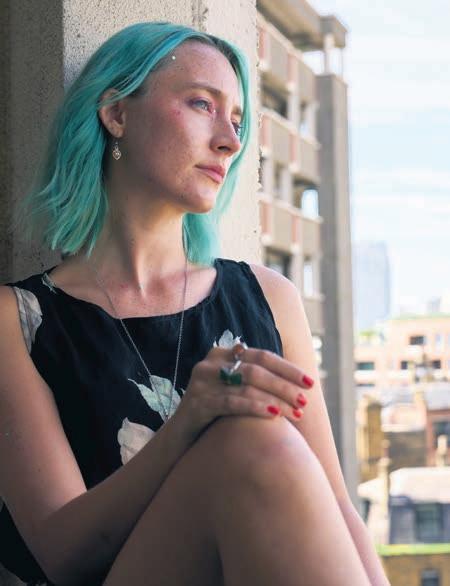
SWords: Carmen Paddock
ince its publication in 2016, Amy Liptrot’s memoir The Outrun has won readers’ hearts along with plenty of critical acclaim. Her unflinching, poetic book covers her early years in Orkney as the child of English incomers; alcoholism and drug abuse during her university and graduate years in London; and her return to Orkney to anchor herself in sobriety. It’s a life story interwoven with so much Orcadian history, geology and community, and you’ll be hearing a lot about it over the next few weeks thanks to two major adaptations coming to Edinburgh this August. There’s a stage adaptation by Olivier Awardwinning playwright Stef Smith, which is premiering as part of the Edinburgh International Festival, and a film adaptation, which will open this year’s Edinburgh International Film Festival. In this screen version, Irish actor Saoirse Ronan gives a bravura performance as Rona (Liptrot’s stand-in), while German filmmaker Nora Fingscheidt – best known for System Crasher and The Unforgivable – directs and has co-written the script with Liptrot. Fingscheidt signed onto the project after Ronan was attached, and her first step was figuring out how to turn Liptrot’s nonlinear narrative – interweaving memories, reflections, nature writing, and mythology – into cinema. “It’s almost like journal writing, very personal,” she explains, “but the narrative is unusual – it goes back and forth and jumps in time.” Fingscheidt went on what she describes as a “solitude retreat” to Los Angeles where she read, re-read, and colourcoded the book’s sections. At the end of this months-long process, she had a guide of where events happened in time (childhood, teenage years, the book’s present), space (London, Orkney), and outwith both (science, folktales). Next, Fingscheidt wrote the parts she wanted to include in the adaptation on index cards. “After a couple of weeks, I started arranging them into a structure,” she says. This index card structure turned into a ten-page beat sheet condensing each scene into a couple of lines. This document was sent to Liptrot for input, after which the pair began to collaborate. “I wanted to work closely with Amy,” Fingscheidt says, “but I also knew, in order to have a clear vision for the film, I had to make it my own while respecting her life. I spent hours and hours on the phone with Amy. She was the bi est inspiration and the bi est guidance.


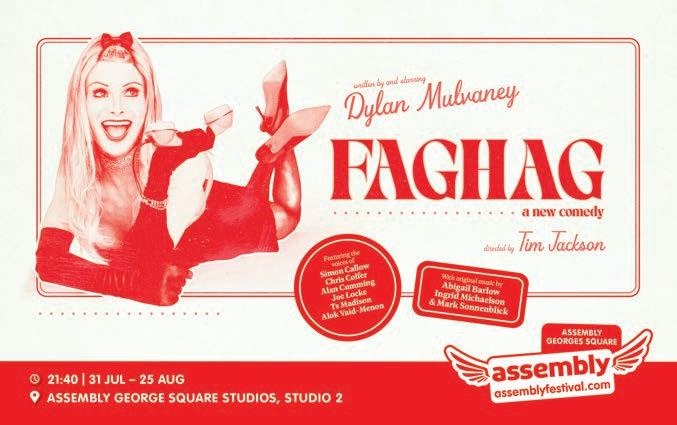

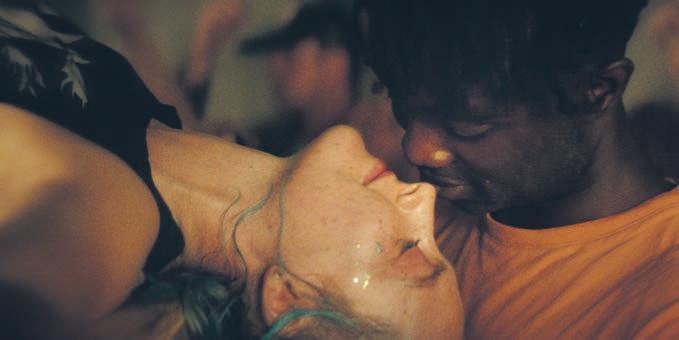
“A feature film is like a short story, not a novel,” Fingscheidt continues, explaining that many of the book’s events and characters have been condensed for the screen, although its jumbled chronology, jumping between past and present, remains. “I wanted Amy to be in line with every creative decision.”
Fingscheidt hadn’t been to Orkney before signing on to The Outrun, but she went to the islands before production and then five times – one research trip and four shoots – while filming. “For me, it was something very new,” she says. “I started to listen to Radio Orkney to get a sense of the language, the rhythm and the melody. I started to read books about Orkney and fiction from Orkney, to zone into Orcadian culture. But I learned the most when we were there. Nature is such a big character.” There was an April trip to capture lambing season, a June trip for nesting birds, an August-September trip to see the seals swimming, and a February trip with a mini-unit for winter weather.
The archipelago’s changeable weather challenged Fingscheidt’s team – but for unexpected reasons. “During the summer, we had the opposite problem,” Fingscheidt explains when I ask about the filming conditions on-location. “We needed roughness and harshness and had a very mild and sunny summer. We had days where there was no wind at all. But it couldn’t be too stormy, because it’d be too dangerous to go near a cliff and tricky for the equipment. So that was a balance for our first assistant director [Andi Coldwell] to ju le, to be flexible and adapt our shooting schedule to nature.”
Fingscheidt sees the film’s themes as relatable, even if one does not share Rona’s experiences. “Everybody knows somebody who stru les with alcohol,” she says. “There are lots of stereotypes and clichés, and a lot of people feel safe – they see alcoholism as a problem for other people that would never happen to them. The reality is more complex, and alcoholism of young women isn’t taken seriously.”
“Saoirse is a fantastic actress. She can brush her teeth and it’s fascinating and interesting”
Nora Fingscheidt
After screenings, many young women have shared their experiences of alcoholism with Fingscheidt: they are commonly told alcoholism is a man’s disease, they just like to drink, and the phase will pass. “It’s such a fine line when one person cannot handle something others can,” says Fingscheidt, “and for a young person, it’s tricky not to drink if you want a social life. It’s a drug that is everywhere, yet its potential danger isn’t fully processed, because it is such a part of life. Amy’s book is brutally honest: it can happen to you... life can get out of control. You can be very young when you hit rock bottom.” Other aspects of The Outrun also strike familiar chords, including familial mental illness and the sense of always being from somewhere else – or as Fingscheidt describes it, “belonging and not belonging.”
The director has nothing but praise for her lead actor and her magnificent performance. “I read the book for the first time with Saoirse in mind,” Fingscheidt says. “She’s a fantastic actress and has this magical presence where you can watch her by herself. She can brush her teeth and it’s fascinating and interesting. It was a relief knowing Saoirse was going to play a character who spends almost half the film by herself on a remote island.”
Fingscheidt’s previous work prominently features stories about difficult women: System Crasher is about a boisterous, troubled girl in an inadequate care system and The Unforgivable is
about a woman released from prison after serving a murder sentence. Like Rona, they are uncompromising and sometimes hard to love. Fingscheidt is fascinated by these protagonists, but their gender is not a factor. “I would do such a story in a heartbeat about a man,” she says. “What’s interesting to me is to tell a story about characters’ inner demons.”
She notes that stories of good versus evil are important for children “to give the illusion of a moral system in the world” but human nature is far more complex. “We all have this reality inside us, and that can be scary,” Fingscheidt says. “I don’t know why I’m drawn to these troubled characters, but I feel for them. I want the audience to like them and love them. It gets interesting when you force the audience to identify to a certain point with a character who behaves in a certain way.”
To her, the medium of cinema is especially powerful at communicating this empathy. “You can’t just say, ‘Oh, I don’t want to watch it.’ You have to endure it,” she explains. Books can be set down, television shows unfinished, but a film is an event – especially in a communal cinema environment.
Fingscheidt notes that, despite Rona’s stru les, The Outrun is about healing: “You go through hell with her, but you also go through heaven. If you know Amy’s story, she’s 12 years sober, has a family, and travels with her children, including to Papa Westray. She hasn’t become nice and neat. She is still drawn to certain extremes but transforms the destructiveness into constructiveness. That’s what’s inspiring.” Like the real lives at its heart, The Outrun cannot be simplified into genres or messages.
The Outrun (the film) opens EIFF on 15 Aug, with additional screenings on 16 Aug, and is released 27 Sep by StudioCanal
The Outrun (the play) runs 31 Jul- 24 Aug at Church Hill Theatre
Nathan Silver has long been one of the most exciting voices of American indie cinema but his fiercely intelligent films have not received the wide recognition they deserve. His fantastic ninth feature, Between the Temples, should change that
At awards ceremonies, filmmakers’ acceptance speeches will often include a loving thank you to their parents. Should the electric dramedy Between the Temples prove an indie heavyweight come awards season, director Nathan Silver will have more reason than most to highlight his mother: she inspired the entire project. “She’d been in a lot of my films and I cut her out of one and she wouldn’t forgive me,” Silver tells me of his mum, Cindy Silver. “So, in order to make it up to her, I made a documentary series about her [titled Cutting My Mother], and while shooting it, I learned that she was going to get her Bat Mitzvah. She was taking B’nai Mitzvah lessons when she was 65. I was shocked because I had no idea. She’d grown up in this socialist household and religion was never her thing. I relayed the story to a friend, [producer] Adam Kersh, and he said, ‘You need to make some version of this where a character like your mother is getting her Bat Mitzvah and falls in love with either the cantor or the rabbi. You make a riff on Harold and Maude.’”
Silver and co-writer C. Mason Wells – the latter of whom apparently dislikes Harold and Maude – went with a depressed, recently widowed cantor in upstate New York: Ben (Jason Schwartzman), who’s undergoing a crisis of faith when his grade school music teacher, Carla (Carol Kane), re-enters his life as his new adult Bat Mitzvah student. As Ben and Carla secretly form a curious bond, Ben’s two mothers (Caroline Aaron and Triangle of Sadness scene-stealer Dolly De Leon) try getting Ben back on the dating scene, with Gabby (Madeline Weinstein), the daughter of the local rabbi (Robert Smigel), being the only woman to get close to a connection.
Silver’s previous independent features (Exit Elena and Uncertain Terms among them) are full of excellent performances, something Between the Temples continues with particularly gorgeous turns from Schwartzman, Kane and Weinstein. And the new film is notably the director’s first to feature big American movie stars – excluding Anjelica Huston’s narration for 2017’s Thirst Street
“It was written for Jason,” Silver tells me, “and we couldn’t see anyone else playing the part. Luckily, my good friend, [French actor] Damien Bonnard, had worked with him on Wes Anderson’s Asteroid City. Damien put in a good word. He had this whole spiel that I think helped [Jason] actually read [the script].”
The character of Carla wasn’t written with a specific performer in mind. Luckily, an answer for the casting eventually came to Silver via the novel coronavirus. “During a fever dream [when] I had COVID, Carol Kane popped into my
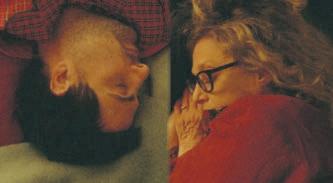

head,” says Silver. “Duh. She was always right there but we were looking past her. Luckily, she’d been wanting to work with Jason since she’d seen Rushmore. When we got them together on Zoom for our initial meeting, I could see a movie with those two faces and the way they already had this immediate rapport. I can’t imagine the [film] without these two actors. They are the movie.”
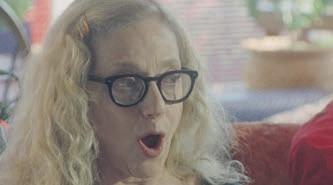
Kane apparently had some trepidations about some of the film’s improvisatory aspects (“the fact that she wouldn’t see the actual scripted pages until
closer to the shoot”), but there’s no trace of those worries in the completed film. And the living legend still has one of the great smiles of American cinema, her wide grin being one of this movie’s secret weapons. “It bursts through the screen,” agrees Silver. “You have that vulnerability and sensitivity that she brings to the character, which is necessary, along with her screwball energy.”
Kane’s breakthrough role, for which she received an Oscar nomination, was in Hester Street (1975), in which she plays a Russian-Jewish immigrant stru ling to assimilate in 19th-century New York. That film’s director, Joan Micklin Silver (Between the Lines, Crossing Delancey), is one of two late artists to whom Between the Temples is dedicated, the other being David Berman, founder of the band Silver Jews.
“[She] looms large in my brain,” says Silver of his fellow Silver (no relation). “She brought such warmth and intelligence to romantic comedies, with this humanist bent that really moves me. David Berman’s music we listened to obsessively while writing it, thinking of him as a person as a model for Ben’s character.”
Elsewhere, the quick energy of filmmakers like François Truffaut and Arnaud Desplechin inspired abrupt, idiosyncratic touches in the 16mm cinematography (by The Sweet East director Sean Price Williams) and editing (by John Magary): “[Sean and John] embrace that playfulness where the unpredictability of the characters is matched by the unpredictability of what might happen within a given scene. It’s key to making it fun to actually make the movie, but also fun when you’re watching it, because you never quite know what you’re in for.”
Between the Temples has its UK premiere at EIFF, 16-18 Aug, various venues
Between the Temples is released across the UK from 23 Aug by Sony
Starting this summer, visitors to the National Galleries Scotland: National will be able to view a rare, newly acquired painting, Bessie MacNicol’s The Lilac Sunbonnet (1899). The work is freely accessible in the National's new Scottish galleries on the Mound. We speak to Charlotte Topsfield, Senior Curator of British Drawings and Prints, to find out more about what makes this work and this artist so very special
Who was Bessie MacNicol as an artist?
Bessie MacNicol was born in Glasgow in 1869 and trained at the Glasgow School of Art (GSA) between 1887 and 1892. Glasgow in the late 19th century was an industrial and economic powerhouse, o ering rich opportunities for artists and designers, and the GSA was one of the most advanced art schools of the time. Under the leadership of Francis Newbery and his wife, Jessie Rowat Newbery, the school o ered a broad curriculum in art and design and was particularly supportive of female sta and students. It must have been a fantastically dynamic and creative place to study – MacNicol’s contemporaries included Charles Rennie Mackintosh, Margaret and Frances Macdonald, and Katharine Cameron.
The GSA nurtured individual talent and MacNicol ourished there, winning prizes for painting. By comparison, when she went on to study in Paris at the Académie Colarossi, she found the training quite restrictive. She was delighted, however, to be able to study great paintings in the Paris museums and she is said to have ‘haunted the galleries’!
What do we know about the subject and creative context of her painting The Lilac Sunbonnet? What makes it such a special piece to you?
The light in the painting is beautiful but I actually love the girl’s assertive pose! Her appearance is pretty and fashionable but she looks in control and slightly quizzical. We think The Lilac Sunbonnet was inspired by a romantic novel of the same title by the Scottish author S.R. Crockett. The book was a massive bestseller in the 1890s – it crops up frequently in contemporary newspaper articles and people even went to fancy dress parties as ‘The Lilac Sunbonnet’! In the novel, Ralph Peden, a prim divinity student, falls in love with golden-haired Winsome Charteris, a farmer’s granddaughter and owner of the lilac sunbonnet. In the process his ideas about women get shaken up a bit – I think the girl in this painting knows her own mind enough to challenge prejudices.
Are there any contemporary parallels you would draw with MacNicol’s work in terms of subject and composition?
In paintings such as The Lilac Sunbonnet, MacNicol explores the e ect of sunlight, broken and dappled by foliage, on her subject, a farmworker. Painting rural life – and working outdoors – was popular among Glasgow artists from the 1880s onwards, in uenced by the realism of contemporary French and Dutch art. Her interest in capturing ickering sunlight was shared with Glasgow Boys James Guthrie and David Gauld, who was a friend and had been a fellow student at the GSA. MacNicol was also friends with another Glasgow Boy, EA Hornel – they exchanged ideas about painting and she visited him in Kirkcudbright. She painted a wonderful portrait of Hornel, which belongs to the National Trust for Scotland.
This is a rare acquisition – why are MacNicol’s works so sought-after? And how was this piece secured for the collection?
Bessie MacNicol was original, experimental and technically accomplished, and she was recognised by her contemporaries as a major Scottish painter. She ran her own studio in Glasgow and she exhibited internationally in Munich, Ghent, Vienna, Venice and the USA, all within four years.
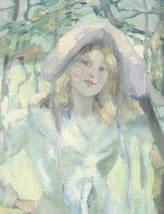
Tragically she died while pregnant with her rst child, aged 34, and much of her work was lost or dispersed after her death. Her paintings rarely appear on the market – we were lucky enough to bid successfully on The Lilac Sunbonnet at auction.
This is the latest in a series of works by pioneering Scottish women artists to enter the collection since the Scottish galleries’ opening last year. What are the hopes around building the collection and redressing the balance in representation?
We are actively trying to address the gender balance of our displays at the National and to highlight the contribution of women artists to Scottish art. Since 2020, we have acquired works by Scottish women artists ranging in date from about 1810 to the 1930s. These include groups of drawings by Phoebe Anna Traquair and Mabel Royds, watercolours by Alice Boyd and Elizabeth Leveson-Gower, Duchess of Sutherland, and prints by Ethel Gabain and Flora Macdonald Reid. It is an ongoing process – the challenges faced by women artists in training, exhibiting and joining professional societies often mean that their careers are less documented and their work can be harder to track down. But it is so exciting when the right picture, like The Lilac Sunbonnet, comes along and we have the chance to tell a di erent story!

You can enjoy the dappled light of The Lilac Sunbonnet at National Galleries Scotland: National Open daily 10am-5pm Free
To nd out more visit www.nationalgalleries.org

With easy to book, 24/7 access rehearsal, DJ and recording studios located all over the world, Pirate Studios are the creative home for musicians in Glasgow and Edinburgh
Words: Tallah Brash
Bedroom bops have become all the rage in recent years, but they of course come with their limitations, and not everyone in a band has the garage space and access to tech à la excellent ctional teenage band Wyld Stallyns. When you’re starting out on your musical journey, or even if you’re already decades in, you need all the help you can get. Finding the right rehearsal and recording space where you can truly let rip and get creative is key, ideally one that will slot into your schedule and not the other way around. If that sounds all too familiar, Pirate Studios could be exactly what you’re looking for.
“Pirate was the rst network of self-service, 24/7 music studios that o ered anyone from a curious creative to seasoned professional musicians a ordable studios with professional equipment in just a few clicks,” Pirate Studios' Global Events and Community Manager Emmavie Mbongo tells us.
“Our studios sprung up quickly across the UK, Ireland, Berlin, New York and Los Angeles, and now we serve over 470k creatives in 37 locations, with more on the way.” Mbongo continues: “I think what makes Pirate di erent is we’re a part of the routine of a huge segment of the UK’s music scene. Artists in New York make up 10% of our overall customers so we’re becoming a part of the fabric there too.”
Having launched in Bristol in 2013, Pirate Studios are proud to run a network of over 700 recording, rehearsal, and DJ studios all over the world, including right here in Scotland, with studios in Edinburgh and Glasgow. The Site Manager for the Scottish locales, Ross Gordon tells us that while “Edinburgh is a calm rehearsal space with a hum of tunes and laughter,” in Glasgow there are “more options for studio types, with ve DJ rooms, two recording rooms and a urry of band rehearsal rooms.”
He continues: “The beauty of Pirate and why I personally love it so dearly. is the continuous ow of anyone and everyone coming through the doors. From drag queens, pipers and percussionists, to locally loved DJs, ravers and those who just enjoy some loud beats with a few cans. There is no shortage of good vibes, networking and most notably talent.”
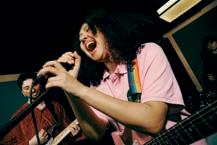
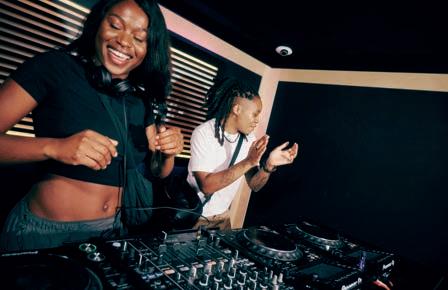
Some notable talent in Scotland already using Pirate Studios include Aberdeen’s Chef the Rapper, who has been using their studios since 2019 for a mix of rehearsals, recording and writing. Chef says Pirate Studios have “always given me what I needed. It’s a space that you can just walk in, set up quick and get to work.” He also likes the fact “it’s a creative and social space, as well as a workspace,” noting that he’s had conversations with other creatives while there that have been inspiring.
Glasgow out t Uninvited have been using Pirate Studios since they rst formed in 2020. Alex and Gill from the band tell us that they use the studios for weekly rehearsals and to write new songs. They also love the fact that Pirate Studios have sites all over the country. “We’ve used Pirate on the road whenever we feel like we need another practice,” they tell us, “which is really handy.”
When we ask why they choose Pirate Studios over other similar spaces, they say: “We like the fact that there is an online assistant that is always available to help with any questions we [ have], or entry to the supply cupboard [for equipment], for example. We feel safe and looked after in Pirate Studios as there are security cameras on at all times and locks on the doors. You never have to feel as though someone will intrude.”
As well as o ering a safe and secure space that’s easy to book 24/7, community and artist development are a big part of Pirate Studios' values. They’ve started to run a number of regular inperson and online events that include everything
from DJ open decks nights and live music open mic nights, to music sharing and networking events as well as informative talks on all manner of topics, from music law to how to get a record deal.
Pirate Studios are dedicated to helping artists build sustainable careers in the music industry, and a few years ago they launched their Pirate Residency programme. “In the rst year, we launched The Project Fund where we gave three creatives a year’s worth of studio time to ful l their projects,” Mbongo tells us. “We then did a di erent o er every month in partnership with di erent brands such as Mixcloud and Virtuoso, o ering packages for DJs and producers etc. In year two we struck up partnerships with many major festivals and radio stations to o er almost 40 artists, bands and DJs the opportunity to perform what would have been most’s rst festival performance.” This year alone they were able to select 34 artists to perform at festivals like The Great Escape, Cross The Tracks, Parklife and more.
As you can see, there’s so much more to Pirate Studios than just being a space where you can create, record and rehearse – if you dig deep enough you might just nd some buried treasure.

For more information about Pirate Studios, or to book one of their spaces, head to pirate.com
Get a 20% discount o your rst booking with the code PIR20SKINNY, available Aug-Oct 2024
Ten recommendations from this year’s Edinburgh International Film Festival Words:
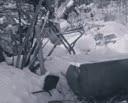
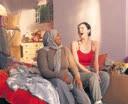

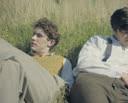

Black Dog
Guan Hu is best known for epic war film The Eight Hundred but he’s working in a more intimate register here in the moody noir Black Dog, which follows a man who’s returning to his desolate hometown in Northern China after a spell in prison. He’s trying to escape his criminal past but along the way finds a bit of redemption when he befriends a whip-smart whippet, one of the hundreds of stray mutts that have overrun the town. Word is this is a dream movie for dog lovers. 16-18 Aug
Bogancloch
Ben Rivers has been documenting the life of Jake Williams, a former sailor who now lives a solitary life in the Scottish wilderness, for almost two decades. First, in the 2007 short This Is My Land; then in Rivers’ first feature, Two Years at Sea, from 2011; and now in its followup, the brilliantly titled Bogancloch. Like the previous films, expect gorgeous natural imagery, extraordinary 16mm photography that looks pulled from the silent era, and a deeply humanistic fascination with Williams’ anachronistic lifestyle. 18-19 Aug
Lilies Not for Me
Will Seefried announced his talents as a director a few years ago with his inventive short Homesick, a Freudian comedy-thriller about a man who goes through a process to relive childhood. Seefried’s debut concerns a similarly dubious but unfortunately all too real procedure: gay conversion therapy in 20s Britain. Fionn O’Shea, a sparky actor who’s been on the cusp of a big break since the lovely Handsome Devil from 2016, stars alongside Robert Aramayo (Elrond in The Rings Of Power). 16, 17 & 21 Au
Lollipop
With her feature documentary Half Way, DaisyMay Hudson told of Britain’s hidden housing crisis by documenting her own experience living in a hostel for a year. Hudson is still concerned with
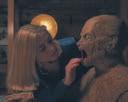
the lives of people on the margins in her fiction film Lollipop, which follows a young woman who’s been released from prison and is stru ling to regain custody of her children from the state. 20-21 Aug
My Favourite Cake
This beguiling anti-authoritarian comedy-drama from Iranian filmmakers Maryam Moghaddam and Behtash Sanaeeha was one of the hits of this year’s Berlin Film Festival. It concerns a 70-yearold widow attempting to carve out a little slice of happiness for herself when she sparks up a romance with a divorced taxi driver, knowing full well such a relationship will cause her trouble with authorities in Tehran. 16, 17 & 20 Aug
Oddity
This year is looking to be a banner one for horror, and word is Oddity is right up there with 2024’s best. It’s the second feature from Irish writerdirector Damian McCarthy, who made the deeply unsettling Caveat and this follow-up should be similarly creepy. Taking place mostly within a remote cottage where a horrible murder occurred a year earlier, it’s a claustrophobic thrill ride and only the victim’s psychic twin sister and her haunted life-sized mannequin talisman can unravel the mystery. 16 Aug
Two Brian De Palma films are being revived at this year’s festival. There’s his operatic take on the Eliot Ness v Al Capone saga, The Untouchables, and the more personal and idiosyncratic Phantom of the Paradise. Both are brilliant, but if you can only see one, make sure it’s the underseen latter film, which sees De Palma smash together themes from Phantom of the Opera, The Picture of Dorian Grey and Faust, and turn the resulting concoction into a go-for-broke glam-rock musical which deserves to be watched with a packed cinema. 18 Aug
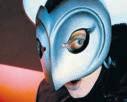
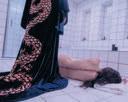
There are many reasons to see The Substance. It’s the second film from the talented French director Coralie Fargeat, whose gory thriller Revenge was a jaw-dropper, and this one sounds even more audacious. It’s reportedly got a great turn from Demi Moore, an underappreciated actor who’s been in the wilderness for too long. And its bodyhorror plot, following a Hollywood star who takes an experimental drug to create a younger version of herself, was the most argued about at this year’s Cannes. Sign us up. 20&21 Aug
The most well-known person competing for the festival’s new award, The Sean Connery Prize for Feature Filmmaking Excellence, isn’t a filmmaker but comedian and ventriloquist Nina Conti. Her first step into film, Sunlight, sounds intriguing. Set in New Mexico, it’s an absurdist road movie centred on a woman who hides herself away from the world inside a monkey suit. Those familiar with Conti’s ventriloquism act will know it features a foul-mouthed monkey who’s not backwards in coming forwards. With Sunlight, it sounds like she’s using the character to explore something a bit more thoughtful than fisting gags. 17-20 Aug
Alice Lowe’s 2017 debut feature Prevenge, a delirious horror comedy filled with gorily mordant gags, announced a totally unique voice in British cinema, so we’re over the moon to see Lowe’s second effort making its UK premiere in Edinburgh, and it sounds equally bonkers. With a premise that su ests Groundhog Day by way of Cloud Atlas, the film stars Lowe as a woman trapped in a series of reincarnations where she falls for the wrong guy and dies horribly, forever repeating the same mistakes. 17-21 Aug
EIFF, various Edinburgh venues, 15-21 Aug. Full programme at edfilmfest.org
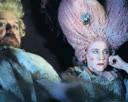

As Edinburgh collectively anticipates the return of the Festival, night owls across the city await 5am licensing amidst new faces on the dancefloor. Ready to show visitors what a Cowgate night is all about are John Irvine aka ji_2000 and Peter Smith aka Smiff, the duo behind Postal – Sneaky Pete’s Sunday club night.
This August marks three years since the pair put down roots in Edinburgh’s music scene, marked by Scotland’s clubs reopening postpandemic. “My first gig was the second day clubs opened, for Midnight Bass,” Irvine recalls, “by the time COVID was over, [I] had loads of tunes [and] had nothing but time to practise.” Smiff’s experience was similar, banking a gig with Headset a few weeks later, “I’m so glad I had that period…. I got into the niche that I was interested in,” he says, “when they reopened the novelty was crazy.”
Postal’s founder, McKinley Breau-Taylor, staged the night’s earliest incarnations during these uncharted times. “It was different,” Irvine remembers attending an early Postal, “people [were] sitting down, drinking margaritas and eating pizza.” A natural harmony was found between the pair behind the decks, “[Breau-Taylor] was always booking us to do b2bs, so we were DJing together all the time,” says Irvine. “John plays a lot of grime and old school stuff,” Smiff adds, “I play percussive, Latin drumming stuff and it brings this interesting Venn diagram that people seem to like.”
The two were respectively boosted to residents, before taking the helm as Postal’s organisers just over a year ago. Smiff describes their music policy as “play whatever... It’s no frills,” he explains, “we’re in an age where everything is about getting the hype crowds [or] getting the big social media moments... whereas people don’t care on a Sunday, you just come in to have fun.”
That being said, Postal have had their fair share of heavy hitters and sell-out nights. The likes of Yung Singh, Ross from Friends and Neffa-T have graced the booth. Irvine experienced a full circle moment when Postal booked jungle superstar Sherelle last February. “My first time seeing Sherelle was in SWG3,” Irvine recalls the artist’s high energy Boiler Room set at the end of 2019. “[She] was one of my favourite DJs when I first started going out.”
While ba ing the big acts is great for Postal’s reputation (and brings in some new faces to their sessions), their priorities remain firmly local. As Irvine puts it, “We can give local DJs a chance to support a big [artist]... It validates those playing local sets all the time.” This ethos extends to up-and-comers in Edinburgh’s close-knit scene. “We give people their first sets,” Irvine says, “it’s good for DJs coming through to play at Sneaky’s, it’s got amazing sound and set up.” Smiff agrees, “The walk-ins are a reluctant crowd sometimes... the way of developing yourself is through playing to those people and working out what makes them want to go and buy a beer.”
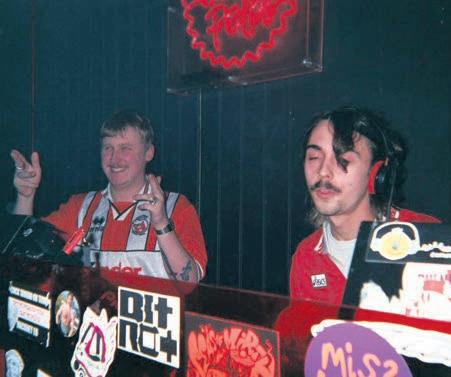
“People make clubs fun… and people coming from all around the world makes everything more interesting!”
John Irvine
So, with the Festival set to turn the city on its axis once again, how does Postal feel about the upcoming Fringe? “It’s great!” Smiff remarks, “The city transforms.” Irvine shares this sentiment: “Not every city has something like that, stop moaning about it!” Their attitude is refreshing amongst a sea of dissent from locals, already irked by packed pavements and cruise liner tourists. For Irvine, it’s simple, “people make clubs fun… and people coming from all around the world makes everything more interesting!”
The relaxing of nightclub hours is an added benefit, with licences extended to 5am for the month. It offers Postal the chance to experiment with programming their night. “You can let people play longer sets or stack up a lineup,” explains Smiff, “[extended sets are] a completely different way of playing…. it’s less pressure, you can accept the fact that crowds peak and trough.” Irvine comments: “People all go out for a smoke at the
same time, then twice as many of them come back!”
The increased August footfall provides an opportunity for Postal to make their mark on visitors. “People up from London start talking about Sneaky’s when they go back,” Smiff says. The pair had a surprise after Irvine came across a tourist’s TikTok last year. The video creator’s clubbing recommendation? “Sundays during August at Sneaks!”, Irvine exclaims, “I was like ‘that’s me!’”
For as much as the pair love to share Postal nights with all who descend on Edinburgh for the summer, their objective remains the same yearround. “[Give] people chances to play and support local,” Irvine concludes. And as for the punters? “It’s for hospitality, it’s for young people,” says Smiff, “[it’s] the regulars plus a bunch of pissed people in kilts.”
In that case, you can count us there.

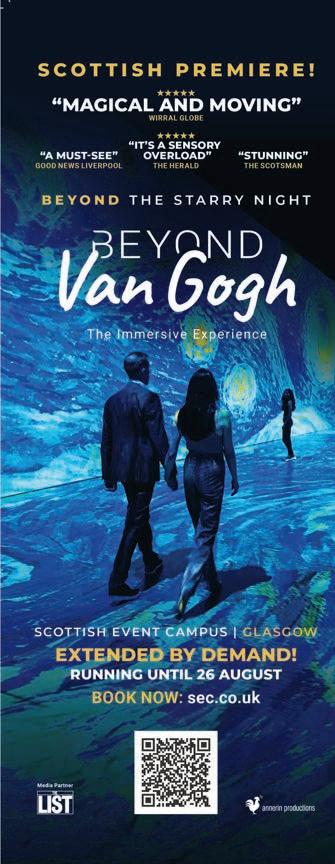
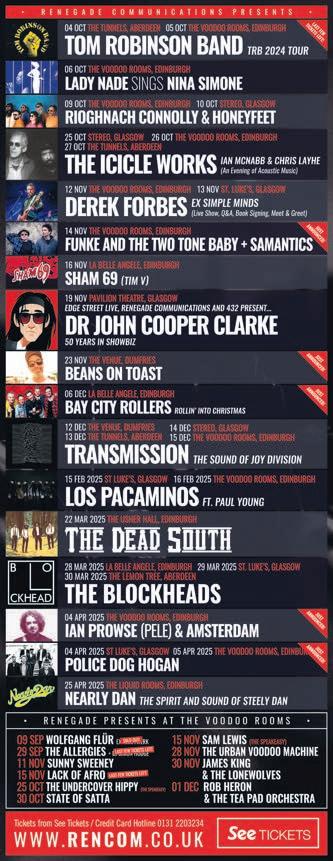
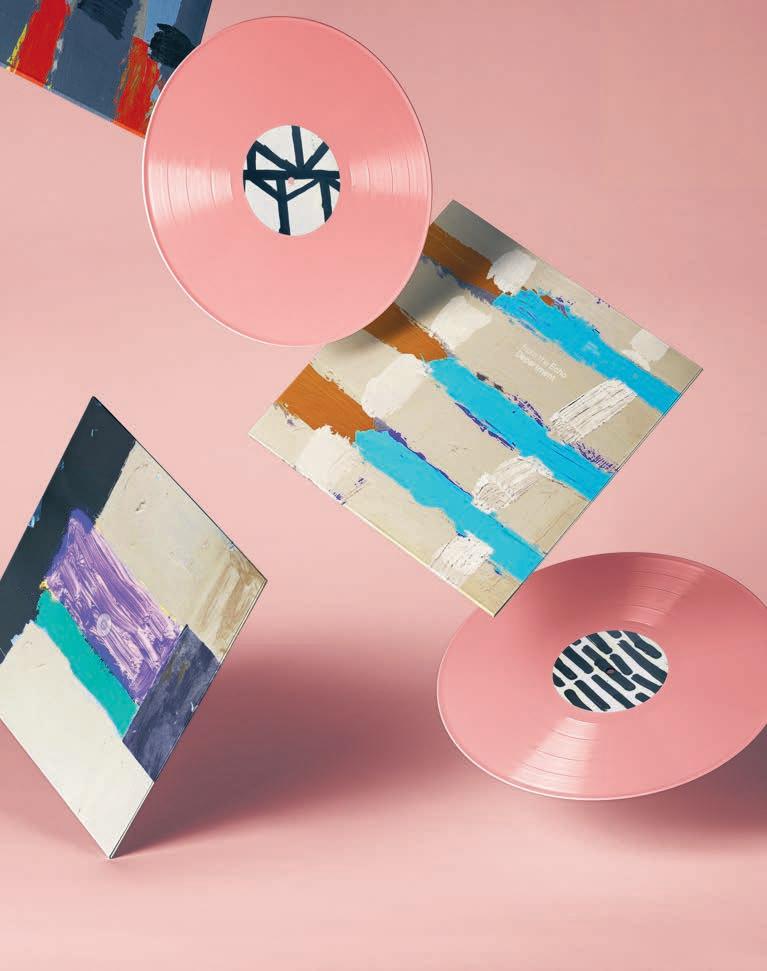
Before becoming established as one of Scotland’s leading graphic designers, Daniel Ibbotson’s name was known primarily to the electro and deep house scene, something that might surprise his clients – a diverse cohort that ranges from start-ups and solo operations to global brands such as Paul Smith, BBC and Channel 4.
During the late 90s and early 00s Ibbotson released records with various labels including Language, Clear, Reel Discs, Compost, Soma/ Fenetik and Glasgow Underground before ultimately committing to design and co-founding the internationally renowned agency Graphical House.
Ibbotson has kept the two disciplinary identities fairly distinct from one another until now, with the release of from the Echo Department, a double LP available to pre-order. The album artwork is a collaboration with acclaimed artist and designer Fraser Taylor. It contains 13 tracks produced over the last few years, with all profits going to two cancer research charities. Ten years ago, Ibbotson himself was diagnosed with multiple myeloma – a form of blood cancer.
“It’s not curable but it is fairly treatable so over the last decade I’ve had six kinds of chemotherapy, two stem cell transplants and a multitude of tests and scans. You name it, I’ve had it. This has all come at great expense to the NHS and the organisations that support it. Throughout all of this I’ve been making music, as some kind of therapy I suppose or maybe just a distraction when I’ve needed it. It’s possibly a bit of a cliché – but I wanted to be able to give something back. I’ve produced this new album with the idea that all proceeds will go to The Beatson Cancer Charity and Myeloma UK, organisations to which I owe a great deal.”
For Ibbotson, the intersection between design and music has always been an inspiration. His collaboration with good friend Fraser Taylor on the sleeve artwork is a fitting creative partnership.
“Fraser makes work that is so far beyond what I can do. The immediacy and energy of his mark making just felt like the perfect fit. Also the texture, rhythm and surface detail. The layers of visuals reflecting the layers of the audio. Of course there was a curatorial element to this, selecting what images to work with, then the more formal structural design elements. This is where the collaboration takes shape.
“To me it’s always felt more interesting when album artwork is a response to the music by someone who didn’t make it. Fraser is an amazing individual with a long history of great work dating back to the late 1970s. He’s an artist/designer/ painter/printmaker/polymath and has been involved with some music industry icons over the years – particularly during his time with design collective The Cloth working with Wham!, Altered Images, Spandau Ballet, Aztec Camera, The Bluebells and Friends Again, to name a few.”
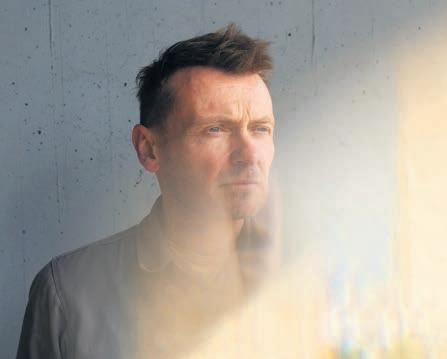
The records are being manufactured by Seabass Vinyl near Edinburgh (whose goal is to become the most sustainable vinyl pressing plant in the world). It will feature a 5mm spine sleeve with two printed inner sleeves pressed on coloured vinyl. A limited edition version of just 50 copies of the LP will be pressed on a special marbled vinyl and contain an editioned print by Taylor.
Ibbotson wanted to press the record as locally as possible for environmental reasons but also to draw attention to high quality manufacturing in Scotland.
“Seabass is the first ever vinyl pressing plant in Scotland and clearly motivated by good design. They were so enthusiastic and supportive of the project when I first got in touch, that kind of enthusiasm and joy is really important with any project, especially a very personal one like this.”
What does it sound like? Electronica is a kind of catch-all term, says Ibbotson. Some tracks are a little more clubby; “Deep House was often the banner I would fall under back in the day.” There are sounds from all kinds of places woven into the textures of the tracks. The guitar and keyboards are played by Daniel himself rather than being programmed, lending an immediacy and intimacy to the music.
“While there is some kind of story to my music, or at least there are sounds, textures, words and ideas that relate to my life, I hope it also has a more universal appeal that will allow the listener to connect with it in their own way.”
Growing up, his first interest in design came from a book series of record-sleeve art called the Album Cover Album owned by his parents. For Daniel this was the starting point, both in terms of his career as a designer, but also as a musician.
“A lot of my reference points have come from the combination of music and design. Record sleeves, posters, t-shirts. My first real obsession
was with the work of designer Vaughan Oliver and the work he made for the record label 4AD, home to bands like Pixies, Lush and This Mortal Coil. Although these are aesthetically quite a long way away from the work I make as a designer, they were my first real taste of what design and music could do together. Sitting on the bus on the way home from town, taking the record out of the sleeve, looking at the images, the booklets, the sleeve notes – it’s the first step of your relationship with the music, before you’ve even heard it.”
“This relationship evolved for me through gig t-shirts, like the iconic Nirvana smiley one or the Sonic Youth Goo shirt. Imagery that ended up having a life of its own way beyond its original intention. And then through to flyers and club posters and more record sleeves by designers like Peter Saville, Designers Republic, Tom Hingston or Julian House, even the more homemade – but equally (if not more) interesting stuff that Optimo were doing in Glasgow and perhaps DFA in New York.”
Finally, these reference points and inspirations have come together in the form of a physical entity.
“A record, like a book, is a beautiful object that tells a story in its own way. A record collection is an autobiography. Rather than just su esting that people donate to these charities, I wanted to make something that people could hold and enjoy, a physical thing that had its own life.”
He’d like to sell as many copies as possible – “500 copies would generate over £10k for the charities which would be an incredible result.”
Ibbotson is pre-selling the LP at Shopify as well as on Bandcamp via the site of another good friend Rory Hamilton, aka Hammer, who has his own label Remmah. The pre-sale will stay open for all of July and August with all profits going to the charities.
echodepartment.myshopify.com
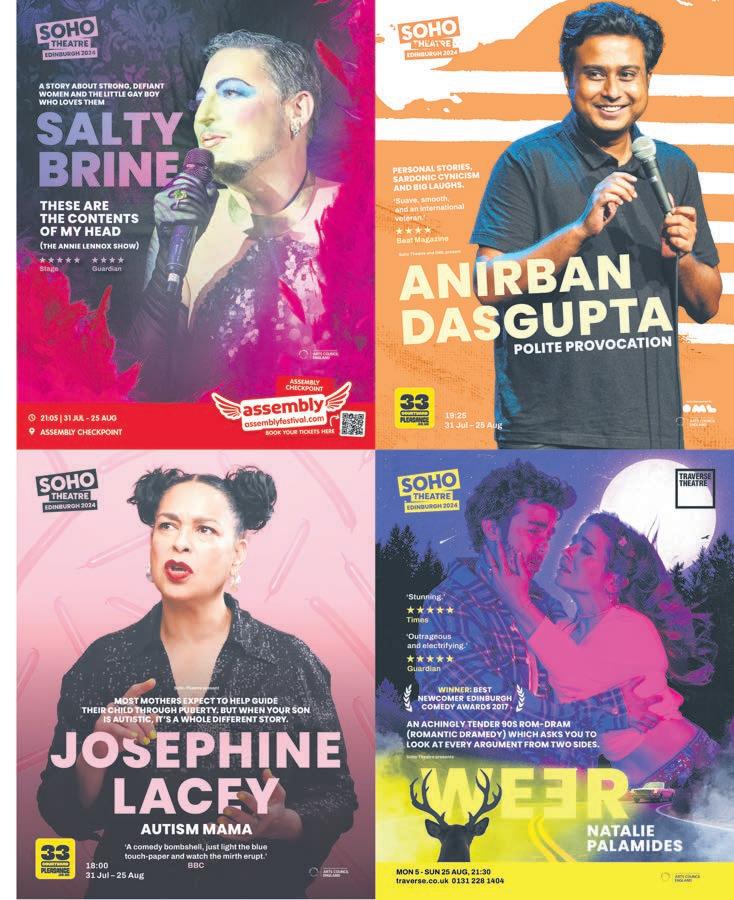


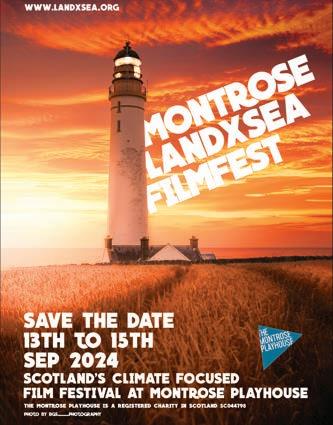
Glasgow DJ and producer Xaia Chimera fights through the fire and the flames on her fervent third album Infernal Rapture
Glasgow’s Xaia Chimera is a sonic alchemist and her latest endeavour – her ambitious 30-track third album Infernal Rapture – is a synesthete’s wet dream. Marrying the sounds of both the natural and man-made world with an intense, emotive electronic style inspired by the likes of KAVARI and Blood of Aza, Chimera moulds a delicate dystopia which is sure to delight and challenge listeners in equal measure. We catch up with her ahead of the album’s release to delve deeper into her creative process and ethos.
Your sound is very tactile and textural. How do you create such vivid, tangible soundscapes? Texture is my favourite thing in music. I feel like my mission is to marry the natural and the electronic. I don’t know why we can’t hear birds tweeting in the club? I don’t know why we can’t hear whalesong in the club? Why aren’t we hearing birds and whales in the club?!
I think it’s fun to just get your phone out and record random ambience. I’ve got recordings from churches, traffic lights, fields, and sometimes I’ll just put those in raw. You can turn anything into anything, though. The Lidl checkout could be a hi-hat if you want. That’s not my tea, but… yeah.
This album embodies an apocalyptic reckoning of sorts. Can you speak a bit about the world you are trying to create here?
Well, my albums are all connected to each other. My last album ended with the tracks Wrath of the Phoenix and I Shattered the Moon, left on the image of a charred, destroyed sky, and that’s where this album starts with Blackened Sky. Fractured Earth is in the middle and Ocean Obliterated is at the end so those are the different segments, I suppose.
I wanted a story, as I do with all of my albums. It might sound a bit wanky, but with this album, I wanted it to feel almost like the non-linear structure of a dream. I’d say the first two thirds of the album follow quite a strict story but then things become sort of abstracted and fluid.
How does Scottish folklore or religious imagery influence your art?
Firstly, I use religious imagery because it’s cunt. But I also think it’s powerful to take imagery or ideas from societal structures that have been historically used to oppress me as a trans woman of colour and use them for my own creative expression.
I’m very inspired by Scottish folklore. Growing up, I was really into fantasy books and things like that. I also think, for someone like me, I’ve been very divorced from Scottish culture and it’s difficult to find an identity within that. Having
these themes in my art is my way of claiming a space within Scottish culture and mythology.
How did the features on the album come about? For the collaboration with Huntress, I’ve always liked her DJing and my thought process at the time was, “I don’t know if she makes music but I know she can!” She had this program that had all of these old instruments, effects and drum machines in the one place, so we just blasted this song out using all of this ancient equipment on her Mac with a little Sphynx ornament sitting watching us go crazy. I asked Huntress to pick a title from a list I had that she thought would fit and she chose Resurrection, which I think works so well as it follows the track The Shape of Death and totally revitalises the sonic journey of the album. It’s clubby, it’s thuddy, it’s fab.
Again, for Rend with Salam Kitty, I really love their DJing and I was just like, “You’re getting in the studio with me and we’re gonna cook, honey!” So we sat down and the first thing they said was that they liked bubbly, squeaky sounds. We went into Splice and searched for ‘bubbly’ and ‘squeaky’ and in the space of an hour we had pretty much finished the song.
Words: Jack Faulds
Can you tell us about your show Underbelly on Subcity Radio?
Basically, I contacted them because I wanted to do a show but I didn’t have an idea for what it would be. They got me in for an interview and they asked what I wanted my show to be, and on the spot I was like, “I could do something based on or influenced by different club nights in Glasgow.” And they were like, “Wow, that’s such a great idea! Sometimes people come in here unprepared!” I was just like, “That could never be me!”
Also I was not getting booked, so this was also my way of showing these club nights that they should have booked me! I’ve made two albums, these people know who I am. I’ve seen white people in the same stage of their careers as me getting booked left, right and centre. Fundamentally, it is an issue of racism and transphobia. With Underbelly, I’m able to showcase nights that I believe are worth going to and worth supporting.
Infernal Rapture is released on 17 Aug; follow Xaia Chimera on Instagram @xaiachimera

We catch up with two-thirds of Belfast rap group Kneecap ahead of the release of their boisterous and politically sharp eponymous biopic. They discuss the Irish language, Belfast movie clichés and Michael Fassbender’s inappropriate apparel
Mo Chara is on a roll: “The fact we rap in Irish, where we’re from, is inherently political. And the reason that’s political is because of 800 years of colonialism, and the penile laws that outlawed the Irish language…” “Penal,” interrupts Moglaí Bap. “Penal laws.” “Penal?” asks Mo Chara. “What was I saying? Penile? Is that like your cock?”
Both members of West Belfast rap trio Kneecap (minus their tricolour balaclava-wearing producer DJ Provaí) are now in hysterics in a backroom of the Glasgow Film Theatre – wearing trackies and necking pints – ahead of a screening of their smart and irreverent eponymous biopic.
This is what it’s like to speak to the Kneecap lads. They’ll sophisticatedly recount the history of how Irish culture has been stamped down by British imperialism, and then fall about laughing at a dick joke. They’ll discuss the sectarian divide in Belfast and in the west of Scotland, and how their music has succeeded in bridging that gap, while – as they did at the GFT – burping and farting. Passion and knowledge punctuated by a lowbrow punchline and their larger-than-life personalities.
That’s one of the reasons they’re so convincing playing heightened versions of themselves in Kneecap, and why their unashamedly ‘Brits out’ music has won a fervent following, and criticism that almost amounts to censorship from the humourless authorities (their songs have been banned on RTÉ, and former business secretary Kemi Badenoch recently intervened to stop them receiving a UK arts grant). The film expertly ties their public arc and the storytelling in their songs together.
Written and directed by Rich Peppiat, Kneecap eschews the standard biopic formula and steers away from straight documentary to get at a larger truth about the boys and their musical origins – but also about trauma, family, community, class, religion and geopolitics. Stranger-thanfiction details – like the opening scene depicting Moglaí Bap’s baptism at a wooded Mass rock under police helicopter lights – and plotlines involving a hapless paramilitary group called the Radical Republicans Against Drugs swirl in the mixer until it’s unclear what’s real and what’s creative licence (at least until the credits roll). In style, it’s kaleidoscopic and kinetic, like Nida Manzoor’s work on We Are Lady Parts, and in concept, it’s closer to Todd Haynes’ I’m Not There.
“[Peppiat] understood we’d been building this world of characters,” says Mo Chara. “So many people were approaching us to make a film or a TV series, but none of them got that we’re performers and tell stories [like Peppiat did]. He saw that potential in us.”
The plot follows Mo Chara and Moglaí Bap as they have run-ins with the “peelers”, dissidents,
Words:
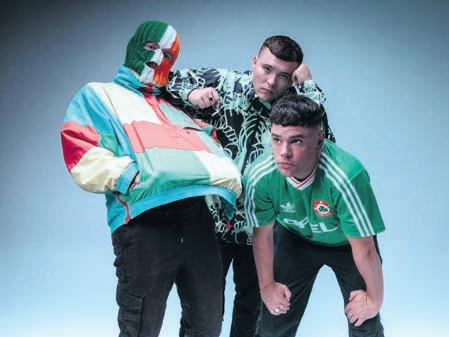
and a teacher who became their producer. The film doesn’t spoon-feed you the history of the Troubles. Instead, it follows Kneecap as they carve out a space for their music and try to transcend the politics of where they were born. It opens with the rote image of a car bomb, before Mo Chara butts in to tell the viewer directly this won’t be that kind of Belfast film.
“Every play, film, and TV series set in Belfast is normally set in the 70s and 80s, during the Troubles,” says Mo Chara. “But it’s a bit of poverty porn. ‘Poor war-torn Belfast, where they’re all fucking idiots.’ We didn’t want that. These characters are political against their own will essentially because of where they’re from.”
Moglaí Bap’s dissident dad is played by Michael Fassbender, who sends up his portrayal of Bobby Sands in Hunger, bringing a comedic over-seriousness to the role. The film is ridiculously funny, and both are excited to witness how it goes down with a Glasgow audience.
Perhaps no joke is as funny as the anecdote Moglaí Bap tells me about Fassbender’s trip to Belfast bar Madden’s: “They don’t let you in if you’re not wearing the right clothes. And here Fassbender rocks up wearing a tracksuit. And there’s the wee fella Tom on the door – he’s tiny, but he’s strong as fuck. Scary dude. He’s like to
me, ‘No, no, he’s not getting in with that on.’ I don’t think he even knew who he was.”
Mo Chara chimes in: “He wouldn’t give a fuck anyway – he’s not getting in with that tracksuit!”
What the film does tackle earnestly is Irish speakers’ campaign to have the language legally recognised. Moglaí Bap didn’t speak English until he went to school, and the film – and Kneecap’s existence as an Irish-language rap group – is bringing overdue attention to communities that want (and need) the language’s resurgence to continue.
Back to those penal laws. “Politicisation of the language has been forced upon us by the oppressor,” says Moglaí Bap. “It’s seen as IRA culture warfare, when actually all we want is not to feel ostracised, for all government-provided services to be in Irish so a mother can take her child to the doctor without a fucking intermediary to translate. I was raised speaking Irish, just like you speak English. It should be just a language people survive in, socialise in, make art, music, community – and that’s it.”
Kneecap is released 23 Aug by Curzon
The band will be at GFT on 20 Aug for a preview of Kneecap
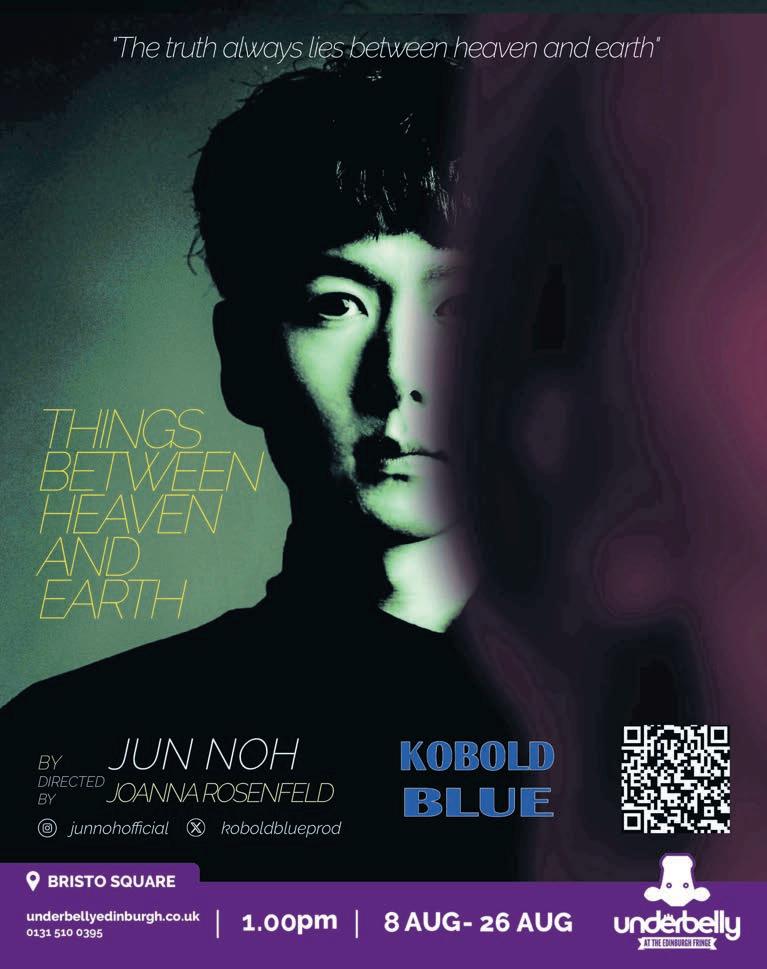
Sleater-Kinney are coming back to Glasgow in August as part of their tour for latest album Little Rope. Ahead of that we speak to the band’s core duo Corin Tucker and Carrie Brownstein
Words: Lewis Wade
Little Rope was made against a backdrop of personal grief for the band, resulting in one of their most intimate offerings from the past 30 years. It features subtle, intricate arrangements along with the typically electrifying riffs and bombast the band are best known for. Released back in January, the dust has settled on the album and they’ve been road-testing the material for a couple of months already. “Little Rope has landed really hard for people,” says Corin Tucker. “People have responded pretty viscerally; it’s a raw, intense album. They’ve shared their own stories with us, of grief, of burdens from the past few years. Hopefully the goal with music is being able to give people a space to work things out and let things go.”
The band’s current tour unsurprisingly features the bulk of Little Rope, though 2021’s Path of Wellness has been jettisoned almost completely. Creating a cohesive set with eleven albums and change to choose from can’t be easy, but despite its occasionally challenging themes, it seems like the new album will feature for some time to come.
(2014-present). Condescending phrases like “return to form” or back-handed compliments like “surprisingly strong late-career album” abound, with little assessment of a new project’s standalone merits. Brownstein agrees that “all of the late-period albums are being assessed within the larger context of the band... obviously it’s hard to avoid the sense of comparison. But we don’t approach the songwriting that way, using the 90s as the fulcrum from which to deviate. We’re bringing our present selves to the process.”
“Art can have strong opinions... but who it’s there for is hard to dictate. Ideally, art helps move the needle”
Carrie Brownstein
“It slots well into the lineage of SleaterKinney,” says Carrie Brownstein. “Some albums are kind of anomalies. The Hot Rock, for instance, was always tricky to translate into a live setting. Path of Wellness has an insular/introverted quality to it that’s difficult to combine with the current iteration of our setlist. That introversion, there’s a meditative quality when you listen on your own, but we have a hard time conveying that quietness/ subtlety live because we’re always drawn to the bombastic ones.”
“We work through a lot of feelings onstage,” Tucker adds. “It is work. But you’re not going through it alone. The audience always wants that catharsis. You’re going to difficult places, but the audience wants to go with you and you come out changed on the other side. That’s the goal of a great live show.”
Due to the influence and impact they’ve had, much that’s written about Sleater-Kinney contrasts the first period (1994-2006) with the second
Brownstein continues: “There’s no version of 2015 Sleater-Kinney had it not been for the 1997 version, so it’s hard to know how we’d be perceived... But I remember when Monster came out, and I read that Michael Stipe said that if R.E.M. had been a new band then this would’ve been a huge album. At the time I didn’t understand wanting people to assess a mid or late period album with the same fervour/naïvety/openness that they do with an earlier album. But now I understand that feeling. You can’t separate, but you might wish you could put out a version of No Cities to Love or Little Rope as an opening statement.
“But for us as progenitors, it does feel like a new variation on a theme, a new beginning, but for most it’s not. However, one of the most rewarding aspects of putting out this album was that when we did record store signings around the release there was a lot of young fans, or older fans who’d just discovered us. It’s nice to remember that for certain people this is the entry point to the band. So you want it to be as invigorating/eye-opening for them as it was for the people introduced to Sleater-Kinney through Dig Me Out [in 1997].”
Though it might seem like the legacy of 30 years would weigh heavy, Tucker doesn’t feel like the ba age is anything to hold them back: “We write for someone who’s never heard the band. We try not to alienate... it’s really about making something that excites us first and foremost. I think we’ve really felt that, especially in response to Little Rope. It feels like people more than ever relate to the ideas and stories we’re telling. They want to hear from our perspective what it’s like having been in a female band for 30 years and going through all these stages. I don’t feel like the legacy is a burden, but something that lifts people up, the fact we’re still doing it. Maybe they see a map for themselves that maybe they wouldn’t see with other mainstream acts.”
The political and the personal have always been interwoven in the music of Sleater-Kinney, and although the scales may have shifted away from their overtly political early material, it still runs through their newest music and is inseparable from the band’s identity. However, despite the critical renown and mass crowds they command, Tucker and Brownstein still see themselves as outsiders compared to the acts whose music is likely to be co-opted.
“There’s an ongoing dialogue we’re willing to be part of,” says Brownstein, “but no political parties/companies that misalign with our ideologies have used Sleater-Kinney’s music... probably because our music is not really fit for mass consumptions,” she laughs. “Not everyone finds our music palatable, we’re a bit niche. [We have] a feistiness, an irascibility, a more rarified listen. We haven’t had to prescribe who can or can’t use our music officially. But unofficially, it’s obviously for everyone. Art can have strong opinions, the art can be explicit in its beliefs/ideologies, but who it’s there for is hard to dictate. Ideally, art helps move the needle. It becomes part of the progress, part of changing hearts and mind, shifting the narrative towards something more inclusive, so you don’t want to close off that possibility at the onset.”
And nowhere can these political concerns be more keenly felt than in 2024 USA. The band’s
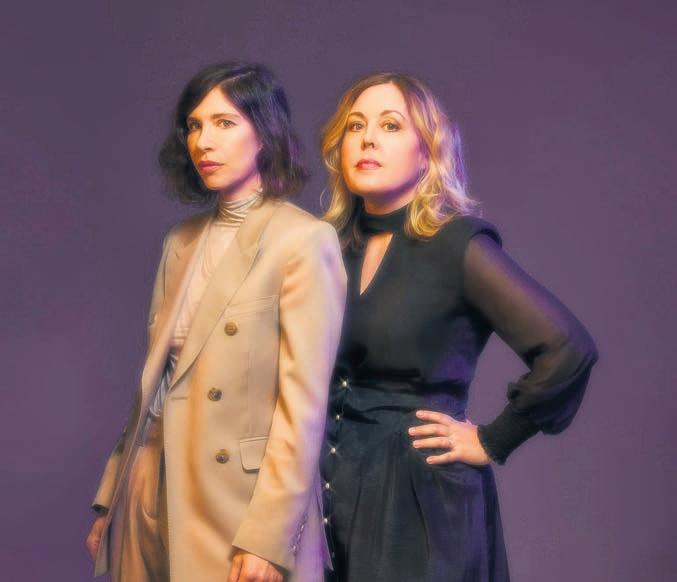
longtime home of Portland, Oregon can sometimes be held on a pedestal as a progressive safe haven, but the divided nature of the country is easy to see for those venturing beyond the comfortable walls of one’s own locale. “There are pockets of progressivism, like in our corner of Portland,” Tucker concedes, “but if you drive 20 minutes you’ll be in a very different political-affiliated area that feels forgotten by the progress, the money, the resources that big cities have. A lot of rural Oregon feels forgotten, resentful... It’s very tense here.”
Politics aside, on the UK leg of their upcoming tour, Sleater-Kinney will be joined by the legendary Gina Birch of The Raincoats. With clear admiration, Brownstein remembers how “those early Raincoats albums were some of the hardest to track down, they felt like the holy grail records you’re always on the hunt for (before reissues became ubiquitous). Raincoats always held a mythology for us, a certain specialness. We’ve admired Gina as a visual artist, an activist, an ally for a long time. We love her newest album and its distinct voice, both literally her singing voice and
in terms of perspective; it was a natural fit to get her on board for these shows.”
And although this show will only be the third in Scotland post-Sleater-Kinney reunion, the band have plenty of experience playing here from their earlier phase, with numerous visits to The 13th Note and King Tut’s along the way. “We’ve always felt an affinity with Scotland, particularly Glasgow,” Brownstein comments wistfully, and is quick to acknowledge the loveliness of Edinburgh as well. “There’s always been an analogue between Glasgow and Olympia [Washington]. Bands like The Pastels had a relationship with the Olympia record labels, and it was almost a predetermination to feel a kinship with Glasgow.
“Then in our era there was Bis, Yummy Fur, Belle & Sebastian,” she says, “bands that we connected with early on, and it was nice to feel like we were part of a broader community despite living so far from each other. There were so many incidences where we’d go to Scotland with the excitement and enthusiasm to reconnect with friends, which is not necessarily the case with
“The goal with music is being able to give people a space to work things out and let things go”
Corin Tucker
other far-flung countries. It felt like we were returning to a place familiar and welcoming. That instilled in us a real affection and warmth towards the country. It makes it quite unique compared to some countries we visit.”
Little Rope is out now on Loma Vista; Sleater-Kinney play SWG3 TV Studio, Glasgow, 27 Aug sleater-kinney.com
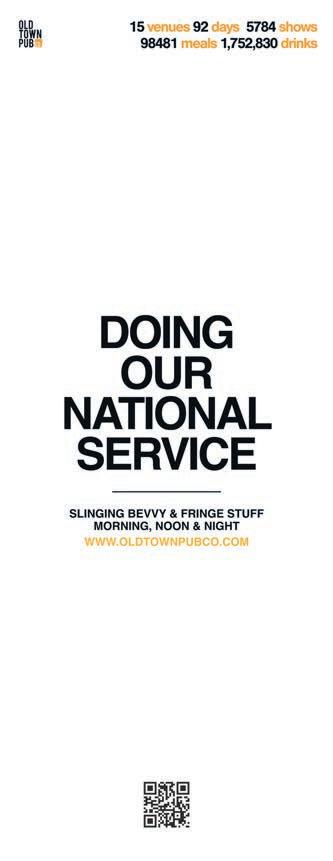

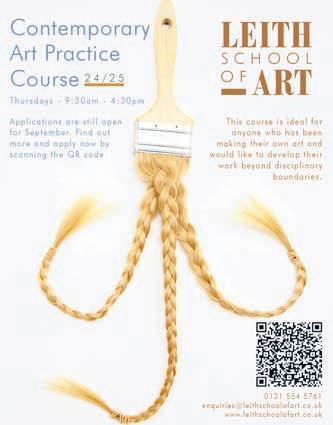
It’s festival season (in case you weren’t aware) and the hustle and bustle can be a little draining, to say the least. One writer explores facing fears of creative inadequacy and questions how we can reconnect with our inner artist amid artistic excess
Edinburgh in the summer always finds me having a weepy, doubting moment in the face of the many, many festivals. Every August, the city is overrun with artists and their audiences; acrobatics scaffold the Meadows, props crowd buses and pierced out-of-towners with DIY sound systems set up at my favourite Haymarket cafe. As a person who loves the arts and wants to ‘create’, it’s invigorating – but it also points me terrifyingly back to my own blocks. I feel this inadequacy often, but it’s during the Fringe that I feel the curtain slip most between the art-filled life I want and the numbed 9 to 5 life I live.
I’ve spent an inordinate amount of time agonising over why I don’t feel the urge to ‘create’ anymore, and why when I sit down to try to produce something ‘creative’, I can’t. Probably everyone I know has had this feeling before, but it eats at me in an existential way. After a few breakdowns, I was determined to figure it out: how do I fulfil my long-time desire to be creative? I’m the type of person that Googles my feelings, and I’ve gotten to the bottom of the Internet. I knew that this Fringe, to protect myself from a fatal hit to my self-concept, I had to act. So, I put myself in some of Edinburgh’s existing creative communities to explore these questions.
I began with a life drawing class at Summerhall, led by Topaz. Entering the Anatomy Lecture Theatre, I bolted up the steps to the top-tiered row to ensure my paper couldn’t be peered over. I remembered the write-up for this class saying that people who have ‘absolutely no artistic abilities are especially welcome.’ If I were well-adjusted, I would simply be proud of my beginner status. But instead I sat there, clenched, remembering a day when I made someone laugh for three straight minutes at a Pictionary drawing.
It was a special session. This week, the model was posing in Shibari suspension ties. I arranged my charcoal and watched as the tying began. As the model was being bound over the chest, his head collapsed back onto the ri er’s shoulder, gentle and submissive – and I began to breathe. I worked on the poses, silent for nearly two hours as music played and the model rose into the air. Relaxed, and moving more freely, I reflected on stillness and attunement: what it takes to be with something, to respond rather than react from the societal scripts in our minds and bodies.
Bearing witness is a given right now – whether it’s to a friend’s pain, the everyday violence of this country’s systems, or the very present genocide in Gaza – but attunement isn’t. It takes slowness to actually sit with something, and any person under capitalism will have trouble with this. I realised that, in part, I’ve had trouble expressing meaningfully because I’ve had trouble existing in the world meaningfully. The first step towards a more creative life might, therefore, be a step into true presence and response.
Words: Maria Morava Illustration: Amy Lauren
‘I’ve had trouble expressing meaningfully because I’ve had trouble existing in the world meaningfully. The first step towards a more creative life might, therefore, be a step into true presence and response’
Life drawing was more terrifying to me than therapeutic dance, the next class I took, led by Lauren McGonagle in North Merchiston. It may be more vulnerable, but I’ve never made someone laugh with my dancing. Each week is different, but this class was about resistance. Beginning with a free-association writing exercise about a part of myself I felt resistant to, I was led to move improvisationally. I wrote about my numbness: the culprit, I believe, of so much of my creative blockage. I’d already understood that my chronic numbness – of the Sad Girl variety – had given my lack of creativity its existential charge: if I’m not feeling anything, I must have nothing to express. What kind of a person has nothing to express?
But Lauren told me to make my numbness a movement; it was then that I realised my numbness was not absence, but an enormous presence. I began to duck my head, blunt my limbs at a bend and step heavily. My numbness took over all of me, an expression in itself. I thought about this creative nemesis differently afterwards. Maybe numbness, like many of our most hated feelings, cannot
be expressed in words. Maybe it can only be embodied. It’s a start: an unsteady but definite expression. It means I am someone even when I feel like I’m not.
I’ve had other creative experiences in the past few weeks. I was creative when I made a playlist, when I cooked dinner for my lover and when I read tarot for my friends. I know, logically, that I am ‘creative’ every day, but these microexpressions don’t feel enough when I stack them against the shiniest Fringe posters.
These classes didn’t awaken my inner creative potential with the paradigm shift I wanted. They did, however, nudge my beliefs about creativity back into a malleable space. I was finally able to handle the very things that block me. They haven’t disappeared, but I can shape them now – and that act of shaping is, perhaps annoyingly, the most meaningful creative act. So, this festival season, I won’t be walking past the Meadows with some horrible existential longing. I’ll be walking to the places I’ve found in the cracks of the everyday, where we never fully achieve something – and that’s the good part.

Fences, bureaucracy, new-builds – your local skate park is under threat. We chat with Scotland’s DIY skate parks about the stru le to find (and keep) skating space
Sitting in one of Leith’s only remaining skate spots, Dalmeny Park, I spend a Monday evening with Ruari, 34, a prevalent figure in Edinburgh’s DIY skatepark scene. Since his early teens, Ruari has been dedicated to building ledges, rails, and ramps and has played a major part in pretty much every community-driven DIY skateboarding project in Edinburgh over the last ten years. His latest DIY project in Leith, a wooden ramp constructed in an empty lot, has had to close its doors after its proximity to a recently built substation was fla ed up by Scottish Power.
“Things like this are a testament to the skate scene and the skate community in Scotland”
Tam, Kingston DIY
“It’s just the risk you take when you don’t want to wait for all the planning and fundraising. There’s a horrendous amount of bureaucracy and red tape to get through to get a facility built,” says Ruari. Spaces like Leith DIY have been appearing and disappearing for years now, built in somewhat of a legal grey area, where those involved in the construction do not necessarily have the right to build but local authorities stru le to justify their demolition (at least for a few years). Speaking of ‘Rat City’, a 2017 project that he and several others worked on down by Ocean Terminal, Ruari recollects how it existed in this awkward position of legality: “While one part of the council was funding us, another part of the council basically gave us a cease and desist, and then eventually tore it down.”
Scotland’s DIY skatepark scene has recently garnered national attention after Glasgow’s Kingston DIY, built by a group of friends during COVID, was closed to the public in June. Sitting under a section of the M8 flyover, the space has been fenced off by Transport Scotland, citing ‘high volumes of anti-social behaviour, fire raising, vandalism, graffiti, [and] drug use.’
Tam, 27, joined the Kingston DIY project a few weeks after its first obstacles were set in concrete and helped transform an area once devoid of value into a thriving community hub. “There was just loads of needles, and it was just kind of grim, but then as soon as a couple of things were built there... it became a spot where kids would go down with their parents,” says Tam. “People from across the street would come down and build community planters... It became this really thriving community space that Kingston didn’t really have before.”

The closure of Kingston has not only affected the local area’s community space, but it has also impacted the wider Scottish skating scene. In an attempt to salvage past work, parts of Edinburgh’s now dismantled Leith DIY ramp have migrated to Kingston, where they now lie fenced off. “The rest of it’s all sitting in a yard here,” says Ruari. Speaking about the future of the Leith DIY project, Ruari expresses frustration: “I don’t know what I can do at this point.” Without adequate space to relocate the Leith ramp, the hard work of the DIY’s volunteers will be wasted.
Projects like these not only give purpose to undeveloped land, but they also generate outside interest in places where there previously was none. Back in March, the American skateboard company AntiHero released Turbo Island, a video which saw their professional team tour across the UK. Both Kingston DIY and Leith DIY received a visit from the AntiHero team. “Literally the best skater, the greatest of all time, Grant Taylor […] checking out our DIY spot and at the same time kids seeing skateboarding for the first time and having a go,” says Ruari. “It’s inspiring in itself to me.”
Ethan, 22, a semi-pro skateboarder for Focus Scotland reflects this attitude towards getting kids involved in the sport. As Ethan notes, “It was very nice seeing kids learn a new skill and flourish within that new skill.” Ethan worked for Transgression indoor skatepark from 2020 up until
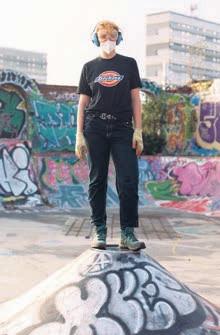
its closure in 2023 as a coach for younger skaters.
As reported by the Edinburgh Evening News, as part of Ocean Terminal’s redevelopment plan to transform the admittedly vacant shopping centre into flats and amenities, Transgression – the capital’s only indoor skatepark – is set to become a bingo hall. “Replacing this safe, relaxed environment for kids from all around Edinburgh and the Lothians and replacing it with a bingo hall... it’s a travesty, for lack of a better word. It’s really, really rubbish,” Ethan begrudges.
Although Edinburgh has seen two closures in the last year, and Glasgow is losing one of its immensely popular DIY spots, the public response to Kingston’s closure has been overwhelming, with over 4,000 people (at time of writing) signing a petition on Change.org to keep the space open. Tam is still hopeful for Scotland’s skating future: “I think things like this are a testament to the skate scene and the skate community in Scotland. Of course, it’s terrible when the council threatens to shut down a spot, but it’s really beautiful to see the reaction that it gets from the community and the general public.”
Responses such as this are encouraging for community projects across Scotland, and it seems that the DIY scene will keep trying whether or not local authorities deem the practice palatable. However, the decisions made by those in power will ultimately decide if the scene will sink or swim.

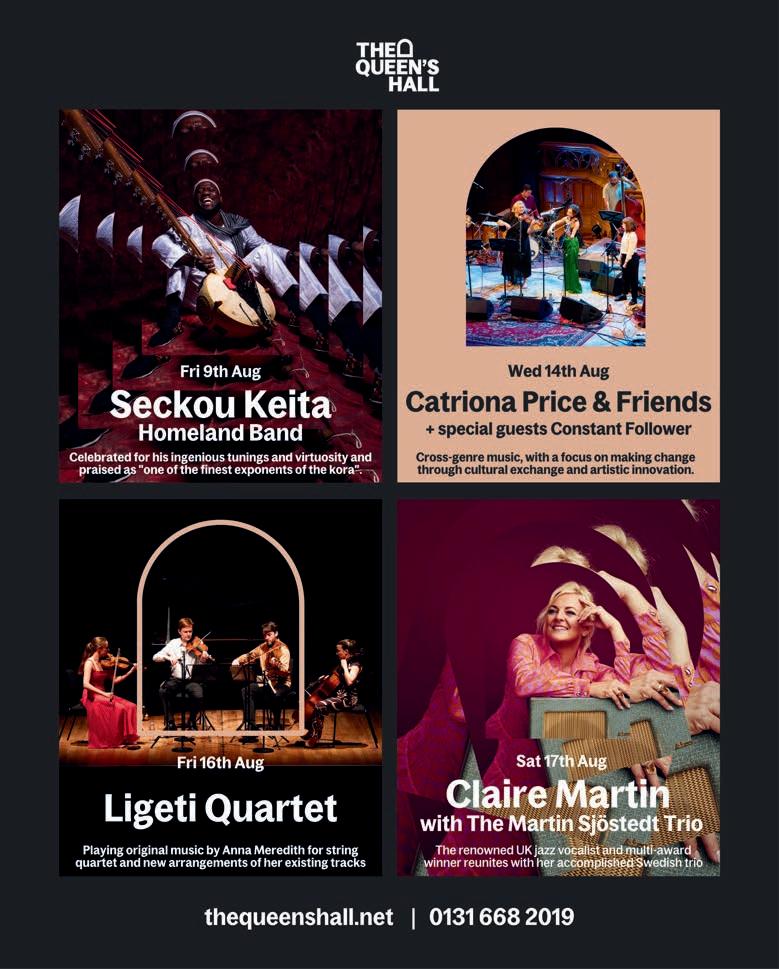
Released 16 Aug by SO Recordings rrrrr
Listen to: Juliet as Epithet, Big Cat
Tattoos, Nancy Dearest
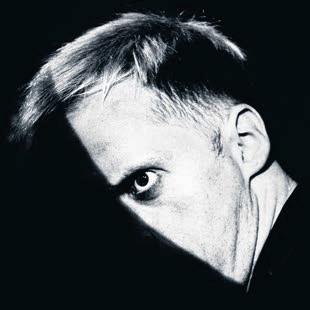
Following 2021’s Heavy Elevator and last year’s Angel Numbers was sure to be no easy feat, but with A Firmer Hand Hamish Hawk has pulled off a hat-trick.
The coyness of the previous albums left by the wayside, A Firmer Hand is utterly steeped in an authenticity and forwardness of the most soulbaring variety. Seamlessly woven throughout each and every track is a sense of heartfelt honesty, first taking the form of a charmingly gentle sincerity in opener Juliet as Epithet. The same honesty, however, morphs into something quite different, changing gear as the vicious directness of Machiavelli’s Room kicks in. This is a song more sexually charged than anything in Hawk’s repertoire so far, and such lyrical composition compounds with discordant minor chords and inescapable pounding beat into a powerful, yet distinctly disquieting song.
Not limited to Machiavelli, mention of popular figures from Kafka to Cooper (Tommy, that is) crop up throughout. As always with Hawk, this album is laden with songs full of reference: literary, lyrical, tongue-in-cheek, cryptic and, of course, musical. Callbacks to the likes of The Smiths, Talking Heads, Franz Ferdinand and more can be heard as Hawk creates an enticingly poetic musical mosaic. Each song with a distinctive
Find reviews for the below albums online at theskinny.co.uk/music


energy, yet all with a sharply synchronic cohesion. There is a perfect blend of atmospheric reflections, such as stripped back piano number Christopher St., intermingled with dangerous diatribes and lusty boisterous highs.
Lead single Big Cat Tattoos is one such song – irresistible in its fierce vibrancy, this almost-80s-dance-in-sound anthem exudes a biting wit in its sardonic lambasting of a figure of affected machismo. The songs that follow are enticingly tumultuous, before finally settling into a trepidatious self-acceptance in the closing track, The Hard Won (an intentionally irreverent pun, no doubt). With this track Hawk shifts the focus inward, signalling a coming to terms with the bewildering nature of one’s own existence. It is, in a sense, a coming of age. He finishes with an assertation that there is ‘No explanation’, yet this feels a comforting statement as the album draws to a close: perhaps an explanation is not always required; perhaps it is enough to simply be.
A Firmer Hand is an album in which Hawk daringly takes a searchlight to the complexities of the relationships with men in his life (‘friends, lovers, family, colleagues’) and, by extension, to the complexities within himself. The result is dazzling.
[Mia Boffey]




Melt-Banana 3+5
A-ZAP Records, 23 Aug rrrrr
Listen to: Puzzle, Code, Stopgap
Melt-Banana is God’s tinnitus. Putting 3+5 on while driving will have your car travelling at speeds where hitting a guardrail would instantly weld it to your front bumper upon impact. In the realm of white-hot noise-rock, all that contacts the plasma hurricane of their sound is liquified and emphatically danced upon. Its abrasion is a natural quirk, its riffs are funhouse torture devices, its ethos incomparable. In a musical age where 30-minute “micro albums” are EPs in trenchcoats passing themselves off to Spotify, MeltBanana infuses nuclear wind into microseconds, leaving every minute an escapade worthy of analysis.
While not as sparklingly euphoric as their previous album, 2013’s Fetch, their long-expected return is a collection of brazen, seering energy beams, like being hunted with a dragon’s breath shotgun in Akira’s Tokyo. It’s decidedly muddy, underscored by squelching synths and piston-engine drumming; there is also a non-zero possibility that any one of this record’s guitar riffs could insight a group of pacifists to riot. The image of a CRT monitor strapped to a guitar being driven into my head is apt; I come to Melt-Banana for the most welcome of brutalizations. [Noah Barker]
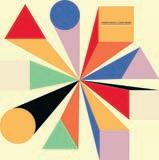
Becomes a Beam, Be
The Tay estuary may not quite be as luscious as the Mediterranean. But through the imaginative minds of Dundee-based creatives Andrew Wasylyk and Tommy Perman, anything is possible. Wasylyk’s cinematic aura and Perman’s experimental intuition fuse magically on their debut collaborative album. Its influences are wide-ranging, including Yoko Ono’s Grapefruit, as the pair improvised compositions through random instruction cards such as, “if it’s wet outside: 100bpm. If it’s dry: 70bpm.” These abstract permutations push each artist’s creative output to new heights, especially on Spec of Dust Becomes a Beam – a beautifully layered track with subtle brass and emotive keys which drifts into a dance-fuelled crescendo. Communal Imagination blends the pair’s individualities further, with Wasylyk’s graceful keys floating harmoniously atop Perman’s juddering rhythms. A further stroke of genius comes from Aidan Moffat, featuring on album closer Be the Hammer with a defiant mantra that channels the album’s idiosyncratic ethos: ‘Walk with us or around us, you might find nothing to see here / But come tomorrow, we’ll still be here’.
Hopeful, forward-thinking and brimming with imagination, the Tay estuary could be paradise with this as its soundtrack. [Jamie Wilde]
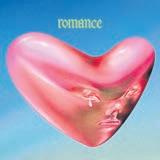
D.C. Romance XL Recordings, 23 Aug rrrrr
Listen to: In the Modern World, Bug, Romance
With a snowballing media profile, Fontaines D.C. capitalise on inevitable ‘Song of 2024’ Starburster’s critical success, the lead single and amuse-bouche of Romance, an album of impeccably considered concepts championed by songwriting that refuses to let the Dublin outfit down. Musical allusions are fired indiscriminately though the album never errs remotely on pastiche: pinpointing Nirvana amidst Fontaines’ lean-in to grunge entirely, while The Cure, Placebo, The Smiths all exist in the liminal space at the fringes of the album’s downtempo captures; even Lana Del Rey on In the Modern World. The eponymous track offers an almost inverted instrumentation of the Us trailer’s orchestral take on Luniz’s 5 On It, surging to whiplashing orchestral hits reserved for the advertisement of horror films. Nostalgia is more than wellearned, guided by gridiron songwriting that offers no reprieve of excitement. Most notably, however, Romance is an album of internal change: its textual references run the gamut – the imagery of Otomo’s Akira through Joyce’s Ulysses – galvanising into the boundless, ceaseless vitality of the 11 breathless songs which leave the concepts of romance and apocalypse precariously intertwined. [Rhys Morgan]
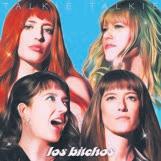
City Slang, 30 Aug rrrrr
Listen to: Hi!, La Bomba, Kiki, You Complete Me
After introducing the world to their cumbia surf-rock fusion on 2022’s Let the Festivities Begin!, pan-continental rockstars Los Bitchos are back. Introducing new elements of disco and synth-pop into the fold with song titles that read like chaotic in-jokes, Los Bitchos are prioritising fun on Talkie Talkie
Only a handful of words are uttered throughout the album; all of them in album opener Hi!, and almost all of them ‘bitch’. After that, they focus on conjuring up a sunny day spent dancing with the people you love through their rich, textured instrumentals; they lean more heavily into disco on tracks like Open the Bunny, Wasting My Time and the nonsensically-titled Naughty Little Clove; they resurrect the guitar-heavy surf-rock of their debut on 1K! and there’s retro film soundtrack riffs on Kiki, You Complete Me.
Each musical influence is filtered through the musical expertise of the band, twisting it into something fresh and joyful. The merry, danceable energy never lets up, from the meandering guitar work of Hi! to the album’s rousing finale, Let Me Cook You. Talkie Talkie sees Los Bitchos return with more polished, vivid and delightfully camp soundscapes. [Vicky Greer]
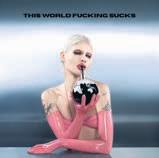
Cassyette
The World Fucking Sucks 23 Recordings, 23 Aug rrrrr
Listen to: Ipecac, When She Told Me, Over It
Fresh from supporting Bring Me the Horizon on their latest arena tour, Brighton-based Cassyette is set to unleash her debut album, This World Fucking Sucks. Tackling a number of hard-hitting subjects, such as the loss of her father and substance and alcohol abuse, Cassyette channels past traumas into a 15-track musical kaleidoscope of pure and raw emotion.
Winning the 2022 Heavy Music Award for Best UK Breakthrough Band hasn’t stopped Cassyette experimenting with different sounds on the record. Sex Metal and Degenerette Nation reveal a drum’n’bass/techno sound, while Over It is a powerful pop-rock anthem. But it’s not until Four Leaf Clover where Cassyette’s powerhouse voice comes to the fore; a love letter to her late father, the ballad focuses on the relationship between the two. However, it’s When She Told Me, with its heavy rock backing, that sees Cassyette lyrically at her most vulnerable, sharing how her mother told her about her father’s passing. The cut-deep lyrics throughout the record paired with well-crafted sounds are sad, yet comforting. Cassyette has created an album that lyrically feels like a shoulder to cry on while sonically is an empowering outburst of rock.
[Emma Cooper-Raeburn]
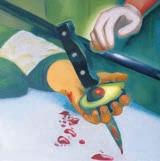
SPIRIT OF THE BEEHIVE YOU’LL HAVE TO LOSE SOMETHING Saddle Creek, 23 Aug rrrrr
Listen to: STRANGER ALIVE, EARTH KIT, FOUND A BODY
If you’ve listened to SPIRIT OF THE BEEHIVE for more than a minute their defining style makes itself very clear. Songs assembled from a steady stream of left turns, a constant upending of what has come before it. When it works well on the record it’s sublime. Take STRANGER ALIVE for instance, which moves through bristling electronics into breezy indie-pop, all the while drawing seasick brass and twanging Bond theme guitars into its orbit. However, when it doesn’t connect, as on THE CUT DEPICTS THE CUT, these mutations feel needy, like they’re born out of a fear the listener will get bored if there aren’t fireworks every 15 seconds. It is unfortunately a feeling that rears its head time and again on YOU’LL HAVE TO LOSE SOMETHING. The record is at its best when they allow an idea time to breathe as on FOUND
A BODY and EARTH KIT, the latter ebbing and flowing through a murky creek of synth and string to marvellous, moving effect.
There is something enlivening about a band so committed to following their nose at any given moment, but it does mean that this changeable quality is a necessary inevitability. [Joe Creely]
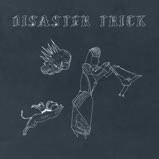
Horse Jumper of Love Disaster Trick Run For Cover, 16 Aug rrrrr
Listen to: Snow Angel, Lip Reader, Curtain
In 1964, queer, atheist, communist Pier Paolo Pasolini made a nearfaithful transposition of the Gospel of St. Matthew to film. From the outside, these things don’t seem to add up. On Horse Jumper of Love’s new record, the Italian artist served as a way in for frontman Dimitri Giannopoulos, observing: “In order to make something good, you have to destroy a belief in some way.”
Horse Jumper... are at the forefront of the equine-band-name to slowcore pipeline. The trio can play gloriously slow – on Wait By The Stairs, John Margaris and James Doran’s rhythm section is in beautiful, lumbering lockstep. On Disaster Trick, in keeping with Pasolini’s influence, they tend towards melancholy in volume – a break from last year’s Heartbreak Rules – guitars seared to melting point, in the lineage of Hum and Bedhead. It’s the first Horse Jumper... record that feels like a band stepping out of its own shadow.
Giannopoulos’ writing here has a dark intensity. But by closer Nude Descending, he has opened up to softness: ‘I felt like needing your embrace’. The guitars are suddenly frolicking and playful. It’s that crack of hope that permeates the best slowcore. [Tony Inglis]
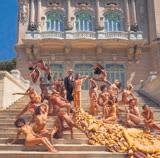
SOFI TUKKER BREAD
Ultra Music, 23 Aug rrrrr
Listen to: Goddess in Disguise, Spiral, Throw Some Ass
BREAD is the third studio album from the North American Grammynominated group SOFI TUKKER. Comprised of Sophie Hawley-Weld and Tucker Halpern, the EDM duo’s infectious brand of house music has always relied on a mixed bag of musical influences, and this record is no different: Spanish guitars, surf-rock, 00s pop, Brazillian brass and classic Europop are all on display here. It’s a strange swirl of sounds, all pulled together into something very coherent by driving electronic beats and Hawley-Weld’s syrupy vocals.
Songs like Goddess In Disguise (featuring Brazilian singer MC Bola) and the straightforwardly funny Throw Some Ass feel tailor-made for sunny outdoor clubs and festivals. The only moment of near-quiet comes on the delicate Hey Homie, a twinkly song about a fragile relationship (‘Somebody would get hurt if we took it further / Let me love you low-key’) which evokes a sunset vibe.
BREAD is a very fun album, that energy and playfulness even captured in the title – BREAD in this case is an acronym for Be Really Energetic And Dance. And it is easy to oblige in the sun-soaked party landscape that SOFI TUKKER have created. [Tara Hepburn]
It’s another busy month for Scottish releases, with new music from Hamish Hawk, Tina Sandwich, Tamzene, Lewis McLaughlin, Alliyah Enyo and more
Words: Tallah Brash
Before we get into the meat and potatoes of this month, some of what we missed in July is worth committing to paper. Traversing genres, there were EPs from established acts like Robin Guthrie (Atlas) and newer artists like Samuel Nicholson (Further Listening) and Paque x Supermann on da Beat (DOT (Don’t Over Think)). Anna Meredith released the original soundtrack for Daina O. Pusić’s directorial debut, Tuesday, and singersongwriter Peter Johnstone released his debut album Heart Felt. There were also excellent singles from Fourth Daughter (Look What You’ve Done), AiiTee (Rewind), Zoe Graham (Even Though I’m Scared), Citizen Papes (Unbelievable), Post Coal Prom Queen (Protomartyr), Kirsty Grant (Jupiter) and, well, the list goes on.
When it comes to August, if you turn back to our album review pages, you’ll find complimentary words on A Firmer Hand, the latest album from Edinburgh wordsmith and songwriter extraordinaire Hamish Hawk, who has landed in our Album of the Month top spot. There are also some very positive words on Ash Grey and the Gull Glides On, the debut collaborative effort from Andrew Wasylyk and Tommy Perman

Back at the top of the month, one of our favourite experimental ambient artists Alliyah Enyo returns. Originally conceived as part of an installation at the Edinburgh Sculpture Workshop in 2022, her just shy of 22-minute vocal layered ambient work, Selkie Reflections, gets a limited vinyl and digital release via Somewhere Press on 2 August. Side A goes on a journey through 11 sections that hum and soar, stutter and stick. A hypnagogic loop at its midpoint is akin to a needle skipping, stuck in a groove; the only thing taking you out of this dreamlike glitch is the swelling hum that rises in the background. Side B takes on new shapes as Berlin artist Angel R plays with Enyo’s archival recordings, stretching them out and piecing them back together to create three distinctly different soundscapes. Selkie Reflections is eerie, otherworldly, ethereal, soothing and discombobulating.

Another record we’re loving this month is For the World, the new EP from Glasgow-based artist Tina Sandwich. Due for release on 8 August, World Moves gets things off on a calming first foot as seagull chatter and a vulnerable vocal set the next 15 minutes up beautifully; when the arpe iated synths kick in, and Tilly O’Connor’s vocals become more pained and muscular, you want nothing more than to hear this live and in the flesh. I Want is a spiky pop-punk whirlwind that feels like going ten rounds with Mike Tyson; think Dream Wife meets Paramore with a sprinkling of Gwen Stefani vibrato as O’Connor takes aim at consumerism and complacency. Before long, 4TW strides into view, a peppy number that could easily have been included on the 10 Things I Hate About You soundtrack had it been released *coughs* 25 years ago… Closing out the EP, Joni is another exquisitely structured, coming-of-age delight. For the World is an exciting debut from Tina Sandwich, a piece worth sinking your teeth into.
The following week, Cromarty singer-songwriter Tamzene releases In Any Weather (16 Aug). Across the EP’s seven tracks, Tamzene expertly deals with experiences of work, youth, love and relationships, with heartbreak and heartache a recurring topic. Tamzene’s voice is pure and powerful, and when she blends her Jamaican and Irish heritage with her formative influences across R’n’B, re ae and soul, it’s a truly winning formula (see: opener What Sundays Are For). Elsewhere, her songwriting could give Adele a run for her money. Of course, that could be down to the influence of working with Adele collaborator and Ivor Novello Award-winner Eg White on the record, alongside other big guns like Steph Marziano and Jimmy Hogarth.
On the same day, Edinburgh singer-songwriter Lewis McLaughlin releases A Hope In Fear via Monohands Records (2 Aug). Backed by a talented group of musicians – Euan McLaughlin, Donald Barker, Chloë Bryce, Finlay Johnston and Steven Stark – moments of full instrumentation create an infectious toe-tapping party that makes you feel like you’re down the local miners club of a small town, while on the less party-forward tracks, McLaughlin’s deeply introspective lyricism, unique and captivating vocal delivery truly shines. There’s an unmatched intimacy across this record, that no matter the song, it always feels like McLaughlin is singing just for you.
Elsewhere, Scottish quintet Modern Vikings (featuring Fergus McCreadie) are set to release their debut album Tales of the Skald. A week later, alt-rockers Twin Atlantic release their seventh album Meltdown, and The Raeburn Brothers release their debut EP, Household Names, while the 23rd brings Fawns, the latest EP from Hector Shaw. Singles-wise, on the 2nd there are new releases from Joe Hearty (Believe In Something) and Pommes Frites (Lady). The 9th brings new music from Constant Follower (Whole Be), Amy Papiransky (Isabella) and Gurry Wurry (Hairline), before Andrew J Brooks releases Kernel (15 Aug). On the 23rd, Gates of Light release I Keep Reaching For the Sun and Brontës release the second of two August singles (Strange Town), before the end of the month brings latest single Big Bones (30 Aug) from Edinburgh riot grrrl duo The Twistettes

Scan the QR code to follow and like our Music Now: New Scottish Music playlist on Spotify, updated every Friday
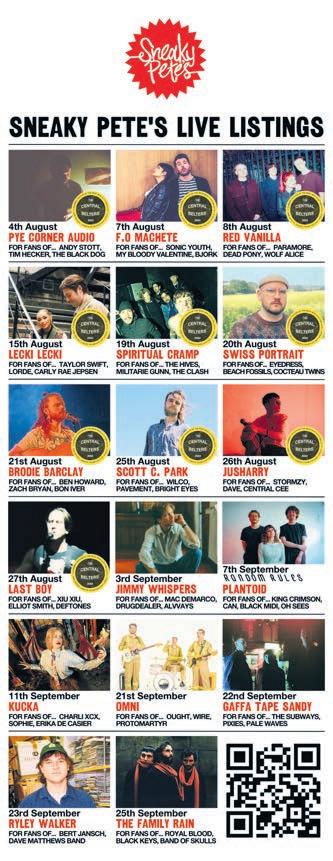

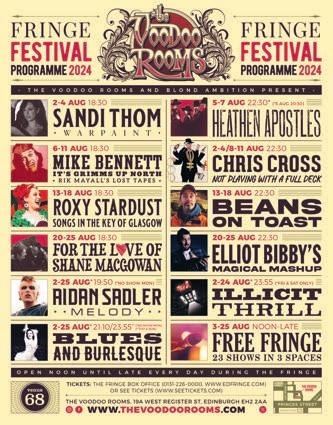

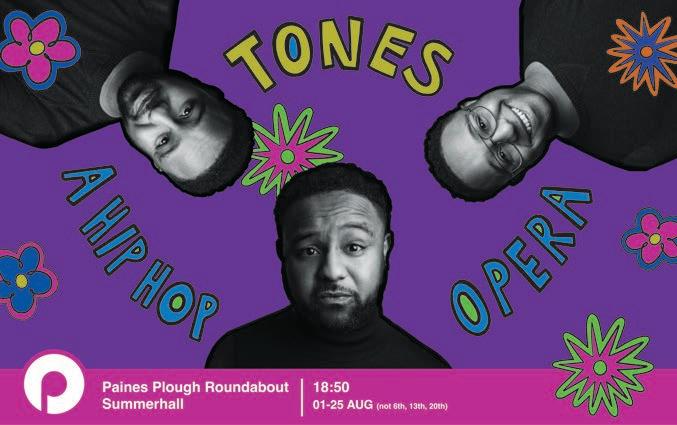

Director: Rich Peppiatt
Starring: Liam Óg Ó hAnnaidh, Naoise Ó Cairealláin, JJ Ó Dochartaigh, Michael Fassbender, Josie Walker, Simone Kirby
RRRRR
Released 23 August by Curzon
Certificate 18
theskinny.co.uk/film
Rich Peppiatt’s ferocious feature Kneecap is rarely concerned with the specifics, nor a balanced argument for that matter. Its fuel is the power of audacious storytelling. “Nations are built from stories,” and in turn, “stories are built from language,” says one of the characters, signifying the film’s anchorage to the Gaelic language and its innate yet overlooked importance in Irish identity. Making the sullying point that every story about Belfast starts with ‘The Troubles’, Peppiatt’s brazen-faced biopic chooses to follow a different path, in the myth-making of a new generation in political protest and musical sacrilege.
Set in modern Belfast, we see the – sometimes fictitious – rise of Irish hip-hop band Kneecap through the eyes of best friends and local Belfast drug dealers Liam and Naoise (also known as Mo Chara and Móglaí Bap), as they battle increasing conflicts with the ‘peelers’ (Belfast slang for the police), the Orange Order and local gang men. When arrested, Liam pretends he can’t speak English, only Gaelic, causing the police to rope in local music teacher and Irish speaker JJ (also known as DJ Próvai) to translate. Quickly deciding “which side of the table” he’s on, JJ proceeds to help Liam out of a barrage of scrapes and discovers the youngster’s Gaelic lyric book, eventually convincing him to make music together. With Naoise now in tow, the trio go from playing empty rooms to pubs of angsty youths to a warehouse full of fans, preaching the ‘good’ word of sex, drugs and vengeful humour.
A significant theme of oppression is concealed tightly within the narrative. Whether it be JJ masked in a Celtic
balaclava or Naoise’s fugitive father Arló (Michael Fassbender) on the run from the police, the generational trauma of Belfast’s past remains in force. More than a satisfying nod to his role in Steve McQueen’s Hunger, Fassbender’s absent terrorist father is the catalyst for Liam and Naoise’s Gaelic speaking, which is presented to them by Arló as “the light that guides [them] to [their] freedom.” As such, their story is told through a mash-up of Gaelic and hip-hop composition, giving an accessible mouthpiece to their idle rage alongside surrealist cinematography and multi-substance multimedia. On each trip we take with the band, the film descends deeper into hyper-saturated, drugfuelled chaos not far from the depths of YouTube hell. It’s an innovative style that drives the narrative without losing sight of its very real morals (Whether the boys have any left by the end of Kneecap, though, is highly debatable).
At its core, Peppiatt’s film indicates the importance of culture, community and the increasing necessity of protest. Decidedly about more than just daft wee lads doing drugs and making music, Kneecap is a statement of freedom and independence in its mother tongue: something as important now as it’s ever been. Whether you like their music or not, the band’s anarchic voice and perceptive wit are hard to ignore, providing a masterclass in taboo smashing and a radical take on the tiresome biopic formula. [Heather Bradshaw]
Released 23 Aug by Curzon; certificate 18
GFT hosts a previews of Kneecap followed by a Q&A with the band on 20 Aug
Every time we blink it seems Mark Cousins has made a new film. The prolific Edinburgh-based director is back with a documentary celebrating the undersung talent of Scottish abstract artist Wilhelmina Barns-Graham
Words: Jamie Dunn
Filmography (selected): Cinema Has Been My True Love: The Work And Times Of Lynda Myles (2024), A Sudden Glimpse to Deeper Things (2024), The March On Rome (2022), My Name Is Alfred Hitchcock (2022), The Story of Film: A New Generation (2021), The Story of Looking (2021), The Storms of Jeremy Thomas (2021), Women Make Film: A New Road Movie Through Cinema (2019), The Eyes of Orson Welles (2017), Stockholm, My Love (2016), Atomic, Living in Dread and Promise (2015), I am Belfast (2015), A Story of Children and Film (2013), Here be Dragons (2013), What is this Film Called Love? (2012), The Story of Film: An Odyssey (2011), The First Movie (2009), The New Ten Commandments (2008)
t: @markcousinsfilm
It’s not every day that a filmmaker invites you to “see my two Willies”, but that’s the proposition I received from Mark Cousins ahead of this interview. The “Willies” in question, you’ll be relieved to hear, are two pictures by the Scottish abstract artist Wilhelmina Barns-Graham, the subject of his ecstatic new documentary A Sudden Glimpse to Deeper Things It’s a typically passionate piece of work from Cousins, who appears to have suddenly got in the habit of making striking films about creative people, even if that’s not been his intention. “Yes, I said I would do no biographical films,” says Cousins, “and somehow now I’ve done five of them.”
Those five are The Eyes of Orson Welles (2017), The Storms of Jeremy Thomas (2021), My Name Is Alfred Hitchcock (2022), this Willie Barns-Graham film and an upcoming documentary on producer and former EIFF director Lynda Myles. They’re far from your standard biographical docs though. “In each case, I tried to look at their imagination rather than their life,” Cousins says of his approach. “Obviously you drop a bit of life in there, but for me, it’s the imagination – particularly the visual imagination – that’s the most interesting thing.”
This is one of Cousins’ talents: getting inside his subjects’ heads. Elsewhere on his CV is a more personal cine-essay called The Story of Looking, but that title could aptly apply to these documentaries; in one way or the other, they’re about how their subjects see the world. “I have always been fascinated by that,” says Cousins. “How can lots of people look at the same thing and see something entirely different? That’s close to the question of what creativity is, I think.”
Barns-Graham certainly seems to have seen the world differently than most. For one, she had synesthesia, a neurological quirk that causes sensory crossovers in the brain. In her case, this manifested as an extreme sensitivity to colour, and
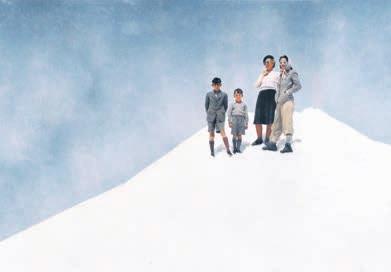
even as a child, she described seeing the world through colour, shapes and lines. Cousins first encountered Barns-Graham’s work when he was a student in the late 1980s. “I saw her retrospective at Edinburgh’s City Art Centre and I was totally wowed,” he recalls. “Her work had the combination of the rigour and the structure and all that mathematics stuff that I talk about in the film, but also a kind of lyricism and total abandon.”
This collision of order and disorder clearly appeals to Cousins. It characterises the work of his movie faves – “if I think of my own taste in cinema, Orson Welles, [Yasujirō] Ozu, these are people that are massively interested in structure” – and it’s there in his own films too, which are often rigorously delineated into distinct chapters, but within these constraints there’s a free-wheeling quality, filled with poetic flourishes and imaginative leaps between ideas.
As well as biography, A Sudden Glimpse to Deeper Things is a work of advocacy. Throughout the film, Cousins makes a compelling case that Barns-Graham’s considerable genius has been overlooked by the art establishment. “I’ve made films about famous people,” says Cousins, “but a lot of what I’ve tried to do is say, ‘Look at all these other people that we haven’t heard of, and they’re equally great, and maybe even better in some ways.’”
Cousins slyly invites audiences to be as dismissive of Barns-Graham as the sexist, ageist art world was. The film opens with a series of photos of Barns-Graham in her dotage, wearing unglamorous, practical clothing: anorak and comfy shoes; green Mac and muddy wellies. “I wanted to start with prejudice, in a way,” he explains. “Like, ‘Look at this wee auld woman, she looks like a Morningside lady you might see on the bus who’s just been into the Cats Protection.’ You want to start with an outsider perspective to sort of express the prejudice of, ‘How can she be interesting?’ And then of course, once the film gets going, you want people to think, ‘Oh my God! Oh my, God! This woman is amazing!’ Once you get beyond the wellies and the old lady glasses and everything.”
Cousins wears his ardour for Barns-Graham on his sleeve – quite literally. When Cousins says he owns two “Willies” – one a print, the other an original he was given as a birthday present – that isn’t quite true. There’s a third on his left shoulder in the form of a tattoo based on Geoff and Scruffy, the series of paintings Barns-Graham did of her friend and his dog, with the man depicted as a wonky pentangle and the canine a squashed half-circle. He got inked part way through making the film. “I felt that she was really getting to me,” he says. “Fuck the film, it was more than that. I just couldn’t stop thinking about her and her obsessions.”
Of his growing list of tattoos of artists, Cousins has said: “They, in a way, live in me. They colonised me.” Barns-Graham joins fellow painters like Paul Cézanne and Albrecht Dürer, as well as the likes of Sergei Eisenstein, Virginia Woolf and Le Corbusier to name a few. Watching A Sudden Glimpse to Deeper Things will go a long way to convincing you that BarnsGraham belongs alongside this illustrious company.
A Sudden Glimpse to Deeper Things has its UK premiere at Edinburgh International Film Festival, Cameo, 21 Aug, 1pm, and is released later in the year by CONIC
Between the Temples
Director: Nathan Silver
Starring: Jason Schwartzman, Carol Kane rrrrr
Offbeat and outrageously tender, Nathan Silver’s Between the Temples centres on the relationship between a cantor and his adult Bat Mitzvah student, who happens to be his childhood music teacher. Both widowed and a generation apart, 40-year-old Ben (Jason Schwartzman) and the kindly, older Carla (Carol Kane) are two intense and sensitive individuals with complementing quirks. She’s ditsy and he’s depressed – both are spiritually lost. Attentive communities orbit them but cannot really understand them; as they nurture one another’s idiosyncrasies, they carve out a bizarre intimacy that is all their own (“Do you ever feel like your brain is just having a heart attack?” “All the time.”)
Kane’s deep-set eyes accuse and fixate as much as they panic and

I Saw the TV Glow Director: Jane Schoenbrun Starring: Justice Smith, Brigette Lundy-Paine, Ian Foreman, Lindsey Jordan, Helena Howard, Fred Durst, Danielle Deadwyler, Conner O’Malley, Emma Portner rrrrr
In I Saw the TV Glow, cripplingly anxious Owen (Justice Smith) recalls a childhood obsession with The Pink Opaque, a Buffy-coded YA TV series he’s introduced to by fellow outsider Maddy (Brigette Lundy-Paine). The grotesque demons within the distorted CRT TV provide texture and superficial scares, but the real horror of the film is the concept of time wasted, of living in denial of one’s true nature. Either because of the potency of late-90s small-town conformity culture or fear of his oppressive father (Fred Durst), Owen feels a need to distance himself from this “show for girls.”
Told out of order by a character too scared to question his own story, the film is a coming-of-age gone
forgive, while Schwartzman’s enduring boyish quality elicits endearment as his awkwardness borders on distressing. Sweet, funny little aberrations, like accidental hallucinations at pitchedup, x2 speed in which Ben chases his younger self, balance more weighty moments, like a truth-bombed family meal that is a crescendo of discomfort (anxious tension at a dinner table is the key to memorable cinema, folks). Accordingly, beautiful nu ets of dialogue strike with alternating humour and devastation (“In Judaism, we don’t have heaven or hell, we just have upstate New York” or “I could just jump into your heart and live in there, if that’d be okay with you”).
Between the Temples warmly encourages running towards what’s meaningful to you, and always being open to the eccentrics out there – they’re usually the ones with the bi est hearts. [Lucy Fitzgerald]
Released 23 Aug by Sony; certificate 15
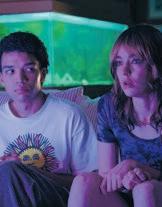
wrong, twisted up in unreliable narration, time skips and a dissolving membrane between “real life” and The Pink Opaque’s Midnight Realm. Director Jane Schoenbrun’s previous feature, We’re All Going to the World’s Fair, set a precedent in alienated, adolescent protagonists, suburban backdrops and escapist media’s offer of identity and belonging. I Saw the TV Glow renders these themes in ultraviolet colour palettes, and more vividly depicts the monstrous entities working at the fringes of the fantasy.
The allegory of trans repression is patent, even without Schoenbrun divulging their intentions in interviews. More abstracted is mortality; life, death, self-harm and suicide all take on disguised meanings. A Cronenbergian thrill ride and a domestic nightmare, I Saw The TV Glow is a multi-channel mind-fuck.
[Ellie Robertson]
Paradise Is Burning
Director: Mika Gustafson
Starring: Bianca Delbravo, Dilvin Asaad, Safira Mossberg, Ida Engvoll rrrrr
Mika Gustafson’s drama follows three sisters in a working-class community in Sweden who are left to fend for themselves after their mother leaves. As we watch them enjoy sun-soaked pool parties, bubble-covered slip-and-slides and living room dance parties, it feels as though we are witnessing sibling intimacy that thrives without the watchful eye of adult norms. The tenderness between the sisters, combined with the soft beauty of the cinematography, gives the film a sense of playfulness that centres their adolescent experiences over the pain of their mother’s absence. However, the flip side of this adult-free existence is dark. The eldest sister, Laura (Bianca Delbravo), is under constant pressure

Only the River Flows Director: Wei Shujun
Starring: Zhu Yilong, Chloe Maayan, Hou Tianlai, Tong Linkai, Zeng Qi, Huang Jun, Kang Chunlei, Wang Jianyu, Moxi Zishi, Liu Baisha, Zhou Qingyun rrrrr
Since the first detective stories, there has been a pact between the storyteller and their audience: a crime will be committed, and the mystery may seem unsolvable, but the culprit will be revealed in the end. Only the River Flows delights in breaking that contract, but stru les to replace the reveal with something similarly satisfying.
Wei Shujun’s film begins in a familiar fashion: a body is found by the river; seemingly incongruous items litter the crime scene; a detective (Zhu Yilong) is brought in to solve the case, and finds himself chasing red herrings and uncovering secrets best kept hidden in a small community. Inevitably there is pressure from above, and a prime
to avoid the looming visit from Social Services and act as a parent to her younger sisters. Amid this situation, she meets Hannah (Ida Engvoll), an older woman who accompanies her on break-ins to rich homes, where they parade around in other people’s clothes, read their diaries and eat their food.
This mutual escapism from their daily lives embodies the film’s many paradoxes: a house with no parent, yet filled with love; fancy homes with no one in them; sibling love and hate. The knife edges of life’s emotions are explored in Paradise Is Burning with a nuance that always manages to centre joy. This is led by the quiet ferocity of each sister’s sense of survival – that Gustafson manages to coax these performances from such young actors is a gift to this tender film.
[Anna Ireland]
Released 30 Aug by CONIC; certificate TBC
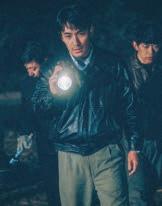
suspect emerges, but the detective believes something more is afoot. So far so procedural, but Wei is more interested in mood than plot. And what mood? Everything looks cold and damp, the lighting is low, and the set design evokes 1990s China so completely that it sometimes seems like the characters have travelled back in time.
As the detective investigates, his sanity appears to start slipping. Impossible dreams haunt him. His relationship with his pregnant wife grows rocky, and he begins hallucinating. It’s more unusual than your common variety whodunnit, but not quite as satisfying. This descent into madness proves to be the meat of the film. Yet, in depriving us of a clear solution, Wei stru les to find an equally interesting climax. Only the River Flows is a deeply evocative mood piece, but fails to land the killer blow. [Nathaniel Ashley]
Released 16 Aug by Picturehouse Entertainment; certificate 15
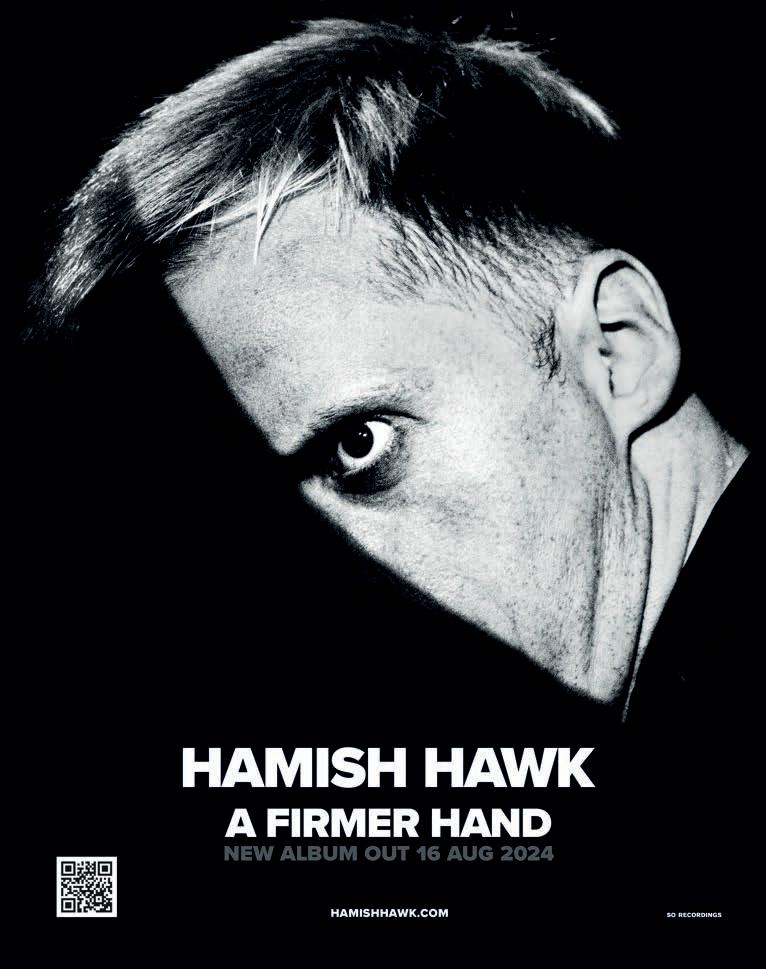
Mootz bring some sparkling and surprisingly sizeable schiacciata sandwiches to Stockbridge
AEH4 1HJ
Mon-Sun, 10.30am-4pm (closed Tue)
@mootzgeneralstore on Instagram
nother month, another big sandwich. But while Kofi Kade in Glasgow offered a fairly unique (and delicious) take on the sandwich last month, August’s contender is working in more familiar territory. Mootz is a new Italianinspired sandwich spot and ‘provisions shop’ on the high street in Stockbridge – and yes, by ‘provisions’ they basically mean ‘olives’ and ‘olive-adjacent stuff’. It’s a slightly weird set-up to be honest; there’s a big, lovely, open bit of counter by the door, but you don’t order there, you order at the other end. There are seats for having your sandwich, but they are kinda in the way of folk coming in and out. Still, there’s a nice minimal vibe inside – gotta love a paint effect and some dark green wood – and loads of light from what can only be described as an enormous set of windows.
The absolute enormousness is a running theme throughout Mootz,
starting with the paving slabs of bread that make up their sandwiches. The bread is schiacciata, the Tuscan bread best described as focaccia’s flatter, more aerodynamic cousin. Out the gate, this has its advantages. Good focaccia is pillowy soft and deliciously bouncy, but it’s also quite tall and structurally challenging (short version: “my sandwich is big, but it keeps falling apart!”). Schiacciata is much more compact and manageable, sacrificing a bit of height for practicality; you could put one of these in your bag confident that it will not unfold itself the second you try to cross a road. And you might need to pack some for later, because these sandwiches are absolute units. The size is truly deceptive, it’s almost an optical illusion or a trick of the olive oil-flecked light (“my sandwich is big, but it looks less big!”).
As for fillings, the menu is devoted, by and large, to takes on
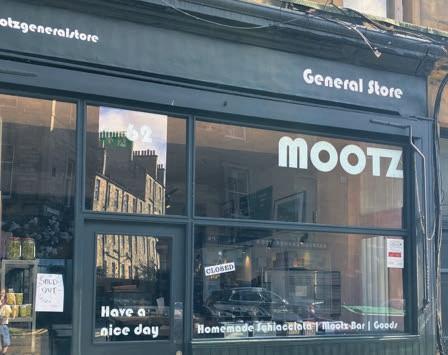
Italian deli classics (we would have tried the e plant lasagne sarnie, but couldn’t risk a half-day in the office covered in Milanese sauce). The eponymous Mootz sandwich (£12) is a pretty great take on that one viral sandwich with the mortadella and creamy cheese and pistachios. All the pieces are in place – the mortadella is thin, savoury and piled more than high enough; the stracciatella is creamy, faintly sweet and perfectly white. Lift the top and you’ll find an honestly surprising number of pistachios in the pesto, so hats off to that. It’s a fresh, delicious bit of lunch, only slightly undermined by hot honey that is neither hot, nor hot. A bit of spice would have elevated everything even further, but the extra untempered sweetness doesn’t add a huge amount. Your mileage may vary, but we’d recommend asking, in your nicest serious-food-person voice, exactly how ‘hot’ the honey is and going from there.
The prosciutto sandwich (£12) is a very, very solid example of the form. It’s more immediate and less complex than the Mootz – the prosciutto is saltier, the chimichurri olive spread has a briny punch, and the rocket brings a touch of bitterness to proceedings. These sandwiches are intriguing but not confrontational, imposing but not impossible. They’re exciting but not hugely surprising, which is alright by us – show us a dependable Italian deli-type sandwich within walking distance of the office and we’ll show you a Looney Tunes-style outline where that sandwich used to be. And these are high-quality as well; great ingredients, fresh bread, those lemon-scented hand towels for dabbing yourself down after running through a humongous oily sandwich. Sometimes when you go out you want to explore the farreaching possibilities of food, but sometimes you want a treat lunch that’s just a great version of what you might have tried at home, and Mootz fits that slot pretty damn well.

By Thomas Stewart rrrrr
Depending on the time in your life you encounter it, poetry can connect in a way which verges on the visceral. That’s the case with Thomas Stewart’s debut collection Real Boys. These poems examine themes of identity, masculinity and sexuality, but it’s the inquiries into the complexities of grief and guilt (inspired by the death of his father, to whom the book is dedicated) which hit hardest. From the opening Give Me My Grief Back, arresting imagery is married to serious intent. What follows are poems written with beauty, insight, and a warmth and wit which makes them all the more impactful. Reminiscent in some ways of the poetry of Edwin Morgan – and not just because in One Cigarette and Tobacco respectively they have written memorable smoking-related poems – both use everyday imagery, often from the natural world, to convey emotion and sensuality. In Real Boys there are seeds, bees, conkers, acorns; the ubiquity of the objects allowing for greater empathy and understanding. There are also references to contemporary culture. It was unexpected to discover poems entitled Gladiator(s), Babadook, and even Sister Act II. Real Boy alludes to Pinocchio and asks questions of just what makes a boy ‘real’, and the expectations which allow masculine stereotypes to pertain, a theme which runs throughout. With Real Boys, Thomas Stewart has offered us a collection of intensely personal, often painful, but ultimately lifeaffirming poetry. [Alistair Braidwood]
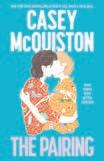
By Casey McQuiston rrrrr
In the grand tradition of classy Americans in Europe, The Pairing brings a new world freshness to the sometimes stuffy romance novel. While we all love a little Mills & Boon now and then, there is something expansive about The Pairing that feels novel, like Gertrude Stein smoking cigars in a seedy Paris bar, Josephine Baker’s banana skirt, or even a big, juicy Napa Valley red. It begins, unexpectedly, at the end of a relationship. Kit and Theo are exes. Major exes. Exes that haven’t spoken a word to each other in four years. It is something of a surprise, then, when they find themselves on the same European food and wine tour, and sparks fly as they challenge themselves to a hookup competition to prove that they’re over each other. But between the brioche mousseline, the Ligurian focaccia and the limoncello, Theo and Kit begin to find one another again. The resulting tension is delicious, and the sex scenes are egalitarian and deeply horny. The book begins with a quote from E.M Forster’s beautiful (perfect) A Room with a View. Forster is famous for the care he gives to our tender, wobbly humanity. There are moments when The Pairing meets Forster in this care, showing us that to love well is to respect and love the whole of the person standing before us.
[Eleanor Bally]
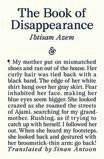
By Ibtisam Azem, trans. Sinan Antoon rrrrr
Ibtisam Azem’s second novel The Book of Disappearance depicts the reality desired by the ongoing project to ethnically cleanse Palestinians and erase Palestine, imagining the ineffable horror that is the land without her native people when all Palestinians one day disappear.
The novel’s structure kindles the reader into bearing witness to a collective and ongoing history of trauma. Like the Palestinian people, it is patient. It savours the slow characterisation of evil in order to portray its dreadfulness rather than impulsively exposing it. Azem cultivates gravitas by depicting reality’s absurdity, shifting between the protagonist’s diary and his progressively unbearable settler friend. This character and colonial entity he represents become impositions and impediments to the greater Palestinian stru le for rights, dignity and land.
Azem’s multiple characters and perspectives, dense as they are, do not complicate the narrative for the reader; rather, they illuminate the eminent truth that is the undying hope in Palestinian justice. Undying too, in The Book of Disappearance, is Palestinian memory. While Palestinian memory is censored and criminalised in the narrative, Azem deploys this poetic grappling with memory, guilt, and paranoia to depict the significance of stories being told instead of disappeared.
The occupation of Palestine has scarred the land and people, from the river to the sea. Azem’s speculative craft pays tribute to the concurrent love and mourning of life that permeate Palestinian existence amidst a soulless and artificial colonial entity. [Maria Farsoon]
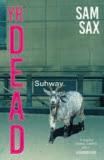
By Sam Sax rrrrr
From the opening of Yr Dead, you know that Ezra dies at its end, engulfed in flames in a final act of protest after the 2016 election. With each page turn, Sax’s words propel you towards this inevitability.
In his final moments, Ezra remembers his 27 years of life in fragments. His mother’s abandonment; a teenage romance with a boy, now dead; his college years marred by violent domestic abuse; his father’s late uptake of Orthodoxy and holy water salesmanship; his twenties spent in an often-medical haze. Not just his life, but his ancestry; centuries of Jewish-American diaspora before his family tree collapses into the singularity of his death. These memories come in a dizzying achronology, varying in voice and experimenting with form, and Sax is unmistakably and relentlessly a poet throughout; “When at last I die, my xylem floods with all these stories at once and I’m so full I break into scripture”.
To have spent years writing about self-immolation, only for the book to be released the year that such acts make headlines, perhaps burdens Yr Dead with the onus of providing answers. Of course, this is an impossible task. But, while Ezra’s road to suicide is not exclusively political, Sax skillfully captures the affect of a culture in crisis, where the overwhelming urgency to act meets structurally-enforced powerlessness to produce a spectacle of human desperation. [Paula Lacey]
Polygon, 1 Aug
Macmillan, 6 Aug
And Other Stories, 1 Aug
Daunt Books, 15 Aug
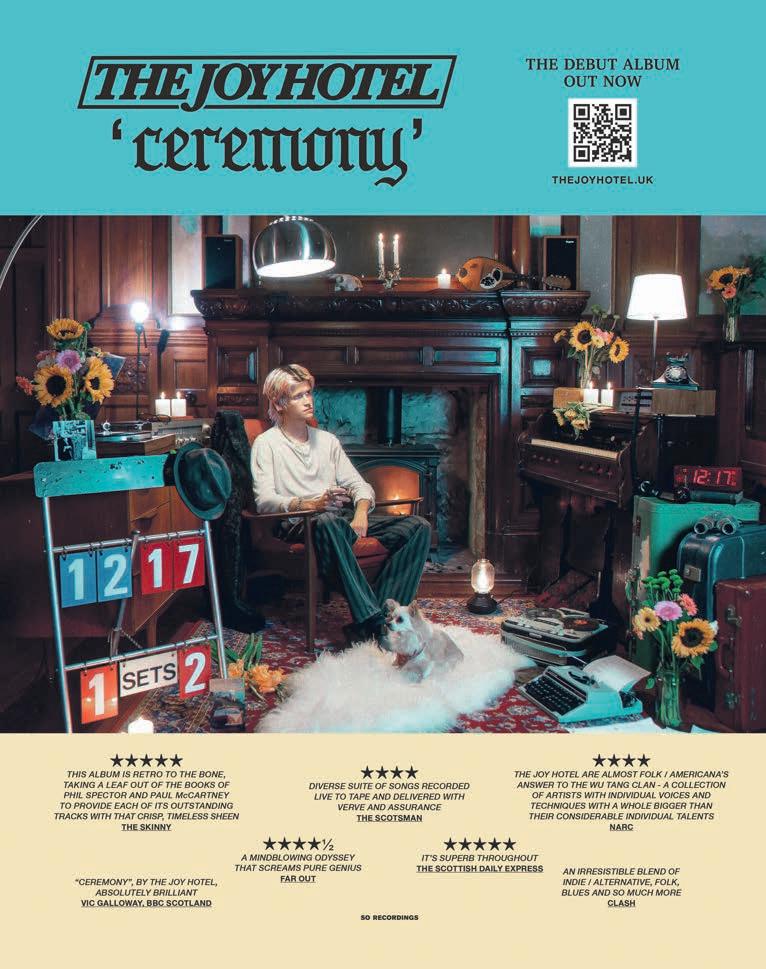

Looking for something to do? Well you’re in the right place! Find listings below for the month ahead across Music, Clubs, Theatre, Comedy and Art in Glasgow, Edinburgh and Dundee. To find out how to submit listings, head to theskinny.co.uk/listings
Tue 30 Jul
ALKALINE TRIO
O2 ACADEMY GLASGOW, FROM 19:30 Punk rock from Chicago. WAXAHATCHEE QUEEN MARGARET UNION, 19:30–22:30 Country folk from Alabama. NEVERFINE (ZERO ONE + RENOVATIONS) THE HUG AND PINT, 19:30–22:30 Pop rock from Glasgow.
Wed 31 Jul
MANNEQUIN DEATH SQUAD BROADCAST, 19:00–22:30 Indie from Melbourne.
AX FACTORY (ONE NINE EIGHT + TANZANA + MARF) STEREO, 19:00–22:00 Alt rock from Glasgow.
POSSIBLY JAMIE (THE LOWEST BITTER + PLEASURE TRAIL) THE HUG AND PINT, 19:30–22:30 Pop from Glasgow.
Thu 01 Aug
CREEPING JEAN THE GARAGE GLASGOW, 19:00–22:30 Indie rock from Brighton. ROSA GOOD (COLDSVILLE) THE OLD HAIRDRESSERS, 19:30–22:30 Folk from Scotland.
JACOB ALON THE GLAD CAFE, 19:30–22:30 Singer-songwriter from Scotland.
DEERHOOF ROOM 2 19:00–22:30 Indie from San Francisco. Fri 02 Aug
ALAN FLETCHER ORAN MOR, 19:00–22:30 Country from Australia. THE RAMPANTS (RESISTER + HITLIST + THE KARAVATS) KING TUT’S, 19:30–22:30 Indie rock from Kilmarnock. HOMEWORK (SLACKHEAD INCIDENT + WESTBOUND FOXES) THE FLYING DUCK, 19:00–22:00 Indie from Glasgow.
DERVISH ST LUKE’S, 19:30–22:30 Trad from Ireland. KING RIB (JULEN SANTAMARIA + S. WARD) THE GLAD CAFE, 19:30–22:30 Alt Americana.
ZERRIN (LE FAUX CHAT + JACK FINGLAND) THE HUG AND PINT, 19:30–22:30 Art pop from Glasgow.
EMMA DUNLOP + JUST SOMEONE WHO CARED + TANITH BAVAIRD + MAY TERRA ROOM 2, 19:00–22:30 Eclectic lineup.
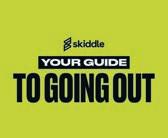
Sat 03 Aug
FOREIGN2 (RED VANILLA + CASEVETI + GAMBIT)
KING TUT’S, 19:30–22:30 Psych rock from Scotland. PYE CORNER AUDIO (MANIATRIX) BROADCAST, 19:00–22:30 Electronica from UK. W.I.T.C.H - WE INTEND TO CAUSE HAVOC STEREO, 19:00–22:30 Psych rock legends from Zambia.
SHIMMER ‘94 (HOLY SNAKES + MAJORCA) THE RUM SHACK, 19:00–22:30 Sun 04 Aug
THE SKINS (VACANT PAVEMENTS + NAKED ACTRESS + VOITURES) KING TUT’S, 19:30–22:30 Indie punk from Inverclyde. Mon 05 Aug
HOUND (STANNINGTON + BULLION TRAIN) THE HUG AND PINT, 19:30–22:30 Indie from Glasgow. Tue 06 Aug FO MACHETE (GURRYWURRY + MOONSOUP) BROADCAST, 19:00–22:30 Rock from Glasgow. JAZZ AT THE GLAD (PRUNE KARLEN + CLÉMENT WAQUET) THE GLAD CAFE, 19:30–22:30 Jazz pop.
SACUL (AMY AYTCHI + SARAH FORREST) THE HUG AND PINT, 19:30–22:30 Indie from Scotland.
Wed 07 Aug
FRANKIE MORROW (CARIE MOLLINS + BELLY RACHEL) BROADCAST, 19:00–22:30 Alt rock from Scotland.
DIGNITY ROW THE GLAD CAFE, 19:30–22:30 Indie pop from Glasgow. BOY* (ALXROMANCE + LILBON) THE HUG AND PINT, 19:30–22:30 Indie.
Thu 08 Aug
ABBIE GORDON (HANA JANE + KATIE NICOLL + SINÉAD TAIT)
KING TUT’S, 19:30–22:30 Singer-songwriter from Irvine. DISORIENTATIONS
BROADCAST, 19:00–22:30 Post-punk from Belgium. RAR (PUPPET MIDNIGHT + JORDAN PLAYFAIR) THE GLAD CAFE, 19:00–22:30 Alt folk.
Fri 09 Aug
AIM FOR TWO (3P SLOT MACHINE + ANTYPHIA + CHEAP ESCAPE)
KING TUT’S, 19:30–22:30 Rock from Scotland. THE GATHERING (CLOUD HOUSE + THE SKETCH + THE ROADRUNNERS + NERVOUS HABITS) SWG3, 19:00–22:30 Local Glasgow lineup. GEORGE CLANTON BROADCAST, 19:00–22:30 Electronica from the US. SAINT VIENNA STEREO, 19:00–22:30 Modern emo from Glasgow. FIDRA (CURLEW) THE GLAD CAFE, 19:30–22:30 Folk from Scotland. Sat 10 Aug
LEWIS MCLAUGHLIN (BRODIE BARCLAY + AMY PAPIRANSKY )
KING TUT’S, 19:30–22:30 Indie from Edinburgh.
ORNUM STEREO, 19:00–22:30 Alt rock from Glasgow. CONNOR MCGLAVE
ST LUKE’S, 19:30–22:30
Singer-songwriter from Glasgow.
SECKOU KEITA & THE HOMELAND BAND
CCA: CENTRE FOR CONTEMPORARY ART, 19:30–22:30 Jazz pop from Senegal.
COMING OUT TO PLAY
2 (MEGAN BLACK + BETH MILLER + LORNA LYNNE + RUTH MARTIN)
THE GLAD CAFE, 19:30–22:30 Eclectic lineup. TIDAL END (THE HIGH FLATS) THE HUG AND PINT, 19:30–22:30 Pop rock from Scotland. Sun 11 Aug
KIRSTEEN HARVEY (ANDSOFIA + ALANNAH MOAR + DARA DUBH)
KING TUT’S, 19:30–22:30 Folk pop from Glasgow. ELLIOT GREER SWG3, 19:00–22:30 Singer-songwriter from Scotland.
CRYPTA THE GARAGE GLASGOW, 19:00–22:30 Death metal from Sao Paolo.
SANAM STEREO, 19:00–22:30 Post-folk from Beirut.
HIP HOP SCOTLAND: IRE X SCO TAKEOVER THE GLAD CAFE, 19:30–22:30 Hip-hop lineup. SHY, LOW (A BURIAL AT SEA) THE HUG AND PINT, 19:30–22:30 Rock from Virginia.
Mon 12 Aug
ROSS MILLER BAND THE HUG AND PINT, 19:30–22:30 Trad from Scotland. Tue 13 Aug
EXPLOSIONS IN THE SKY
SWG3 19:00–22:30 Post-rock from Texas. MICHAEL MCGOVERN & BAND
THE GLAD CAFE, 19:30–22:30 Singer-songwriter from Scotland.
DAY SLEEPER (PALE FIRE + BONZO SUNDAI) THE HUG AND PINT, 19:30–22:30 Indie from Edinburgh.
SHEER MAG ROOM 2, 19:00–22:30 Rock from the US.
Wed 14 Aug
SIGH CATHOUSE, 19:00–22:30 Metal from Tokyo.
THOMAS DOLBY ST LUKE’S, 19:30–22:30 Electronica from the UK. CORNELIUS BOOTS + JOHN GARNER THE OLD HAIRDRESSERS, 19:30–22:30 Acoustic. SICK PAY (LIFEGARDEN + HOLISTICS) THE HUG AND PINT, 19:30–22:30 Rock from Scotland.
Thu 15 Aug
CARSICK CHARLIE (VIRGINIA COAST + MARIGOLD + FRASER MACCALLUM) KING TUT’S, 19:30–22:30 Indie folk from Scotland. AUGER NICE ‘N’ SLEAZY, 19:30–22:30 Dark rock from Blackpool. LOYLE CARNER SWG3, 19:00–22:30 Hip-hop from the UK. BELLA (CORIN + FELLOW MAN) THE HUG AND PINT, 19:30–22:30 Singer-songwriter from London.
Fri 16 Aug
ALESIA (THE CROLLAS + LOW RISE + SOLASTA) KING TUT’S, 19:30–22:30 Indie from Glasgow. MARC REBILLET SWG3, 19:00–22:30 Electronica from the US. THE LINES THE GARAGE GLASGOW, 18:30–22:30 Alt indie from Glasgow. EACH CONFIDE THE OLD HAIRDRESSERS, 19:30–22:30 Dream pop from Glasgow. HAIVER CCA: CENTRE FOR CONTEMPORARY ART, 19:30–22:30 Indie rock from Glasgow.
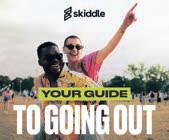
CONSCIOUS PILOT THE HUG AND PINT, 19:30–22:30 Post-punk from Glasgow. Sat 17 Aug THE SQUINTS (UNDER REVIEW + ALDOUS + THE FEAR) KING TUT’S, 19:30–22:30 Indie from Glasgow. TULSAQUEEN (LES JOHNSON + ME, KENNETH NOAH BLAIR) BROADCAST, 19:00–22:30 Country from Scotland. LOUIS BERRY STEREO, 19:00–22:30 Rock. THE GLAD CAFE'S 12TH BIRTHDAY THE GLAD CAFE, 19:30–22:30 Eclectic lineup. MOLLY PARDEN THE HUG AND PINT, 19:30–22:30 Indie pop from Nashville. Sun 18 Aug
SARA RAE (GIRL UPSTAIRS + MADELINE TULLY + NIAMH MORRIS) KING TUT’S, 19:30–22:30 Indie from Glasgow. MAZ AND THE PHANTASMS (SAINT SAPPHO + ROSEWOOD) BROADCAST, 19:00–22:30 Psych punk from Glasgow.
MARTHA MAY & THE MONDAYS (SALT + DREAM JOURNAL) THE HUG AND PINT, 19:30–22:30 Folk from Scotland. Tue 20 Aug PIXIES
O2 ACADEMY GLASGOW, 19:30–22:30 Alt rock from the US. RED CLAY STRAYS SWG3, 19:00–22:30 Americana from Alabama. KAI REESU (BECCA SLOAN + RACHEL DUNS) BROADCAST, 19:00–22:30 Nu-jazz from Glasgow. KING RIB (MONICA + QUINCEY MAY BROWN) THE HUG AND PINT, 19:30–22:30 Alt Americana.
Wed 21 Aug
SOUTHALL (KYLE DANIEL) KING TUT’S, 19:30–22:30 Country from the US. FLEW THE ARROW (CHLOE MATHARU + MIMA MERROW) BROADCAST, 19:00–22:30 Folk from Scotland. SOULS OF MISCHIEF ST LUKE’S, 19:30–22:30 Hip-hop from California. LOUISE BICHAN THE GLAD CAFE, 19:30–22:30 Trad from Orkney.
SWISS PORTRAIT (POLLY + CAMERON STEWART GRANT)
THE HUG AND PINT, 19:30–22:30 Dream pop from Edinburgh.
Thu 22 Aug
HONEY (FAT SALAMI + THE NAUTICS + TWOHEADED CALF)
KING TUT’S, 19:30–22:30 Indie rock from the UK.
LAST BOY (KILGOUR + MAGPIE BLUE)
BROADCAST, 19:00–22:30 Rock from Glasgow.
LITURGY STEREO, 19:00–22:30 Black metal from Brooklyn.
ONLY THE POETS
ST LUKE’S, 19:30–22:30 Rock from Reading.
Fri 23 Aug
BANDIT COUNTRY (CURDLE + INSIDER TRADING + GUEVARA)
KING TUT’S, 19:30–22:30 Post-punk from Scotland.
KILLER MIKE
QUEEN MARGARET UNION, 19:30–22:30 Rap from the US. LAMAYA
SWG3 19:00–22:30 Soul from Scotland.
STANLEY WELCH (OTIS
JORDAN + CURTIS MILES) BROADCAST, 19:00–22:30 Indie from Scotland. THE TUMBLING PADDIES
BARROWLANDS, 19:30–22:30 Trad from Ireland.
LOLA KIRKE
STEREO, 19:00–22:30 Country from New York.
TERROR BIRD
THE FLYING DUCK, 19:00–22:00 Dark synth pop from Canada. THE POSTAL SERVICE + DEATH CAB FOR CUTIE
THE OVO HYDRO, 18:30–22:30 Indie from the US. HOSPITAL CORNER (BAD KNEES + THE CHOSEN LONELY ) THE HUG AND PINT, 19:30–22:30 Rock from Edinburgh.
GAVIN FORBES (FREE ROAM) ROOM 2, 19:00–22:30 Experimental from Dundee.
Sat 24 Aug
LIP CRITIC BROADCAST, 19:00–22:30 Electro punk from New York.
Sun 25 Aug
MSPAINT
KING TUT’S, 19:30–22:30 Rock from Mississippi.
WASTED4U2<3 SWG3, 19:00-22:00 Rap lineup from Scotland.
Mon 29 Jul
PIP BLOM THE MASH HOUSE, 19:00–22:00 Indie from Amsterdam.
Tue 30 Jul
POTBELLY (JOHNNY COSMIC & THE NIGHTTERRORS + TCCL)
BANNERMANS, 19:00–22:30 Metal from the US.
Thu 01 Aug
ALAN FLETCHER [KARL KENNEDY FROM NEIGHBOURS]
BANNERMANS, 19:00–22:30 Country from Australia. KEANE O2 ACADEMY EDINBURGH, 19:00–22:30 Alt rock from the UK. THE K’S LA BELLE ANGELE, 19:00–22:00 Pop.
Fri 02 Aug
DRIVEN SERIOUS (BIRD CAGE THEATRE + STAN SMITH)
BANNERMANS, 19:00–22:30 Folk punk from the UK. CONSCIOUS PILOT SNEAKY PETE’S, 19:00–22:00 Post-punk from Glasgow.
Sun 04 Aug
HANDSOME DICK MANITOBA
BANNERMANS, 19:00–22:30 Punk rock from New York. PYE CORNER AUDIO (FAEX OPTIM)
SNEAKY PETE’S, 13:00–16:00 Electronica from UK. THE SAPIENS (SILVERTONE + ROUGHLY 4000 GEESE)
SNEAKY PETE’S, 19:00–22:00 Indie rock from Aberdeen.
Mon 05 Aug
DYING GIANT (PUPPY TEETH + DO YOU LIKE BUTTER + HENDRIX KNIGHT + SO BORING)
BANNERMANS, 19:00–22:30 Dreamo from Glasgow.
Tue 06 Aug
STANNINGTON (SICK PAY + BULLION TRAIN)
BANNERMANS, 19:00–22:30 Indie from the UK.
Wed 07 Aug
YOUR BEST NIGHTMARE (RAISING RAVENS)
BANNERMANS, 19:00–22:30 Rock from New Jersey. F.O. MACHETE (THE NEW SHADE + QUITTER) SNEAKY PETE’S, 19:00–22:00 Indie from Glasgow.
Thu 08 Aug
THE WIZARDS OF PROG (RAISING RAVENS)
BANNERMANS, 19:00–22:30 Prog rock from the UK. JORDAN RAKEI USHER HALL, 19:00–22:30 Singer-songwriter from Australia.


INSPIRAL CARPETS THE LIQUID ROOM, 19:00–22:30 Rock from Manchester. RED VANILLA (RODEO CLUB + NASTY NESTO & THE SADBOIS) SNEAKY PETE’S, 19:00–22:00 Alt rock from Dundee.
Fri 09 Aug
SECKOU KEITA & THE HOMELAND BAND
THE QUEEN’S HALL, 20:30–22:30 Folk from Senegal. THE RAEBURN BROTHERS (BÜTTER + CLAY RINGS)
SNEAKY PETE’S, 19:00–22:00 Indie rock from Edinburgh. Sat 10 Aug
LINDISFARNE
THE QUEEN’S HALL, 20:00–22:30 Folk rock from the UK. HIDDEN ORCHESTRA
LA BELLE ANGELE, 19:00–22:00 Experimental from Edinburgh.
Sun 11 Aug
FLEETWOOD MAC’S ‘RUMOURS’ WITH THE TRANSATLANTIC ENSEMBLE THE QUEEN’S HALL, 20:30–22:30 Pop rock from the UK.
DAZED & CONFUSED (THE CASES + FISHBOWL)
SNEAKY PETE’S, 19:00–22:00 Rock from Scotland.
AZAHRIAH LA BELLE ANGELE, 19:00–22:00 Pop from Hungary.
Mon 12 Aug
ABANDONED STUFF (THIS QUESTIONABLE LIFE)
BANNERMANS, 19:00–22:30 Garage rock from Edinburgh.
DECLAN MCKENNA THE EDINBURGH PLAYHOUSE, 20:00–22:30 Pop from the UK.
Tue 13 Aug
NAMELESS ONES (HOLLOW TOMB + STOLEN ORDER + CHEKHOV’S GUN)
BANNERMANS, 19:00–22:30 Metal from Canada.
YOUSSOU N'DOUR USHER HALL, 20:00–22:30 Mbalax from Senegal.
Wed 14 Aug
STAY FOR TOMORROW (NEW DIMENSION + REVELATION 23)
BANNERMANS, 19:00–22:30 Alt rock from Dunfermline. CATRIONA PRICE & FRIENDS + SPECIAL GUESTS CONSTANT FOLLOWER THE QUEEN’S HALL, 20:30–22:30 Folk from Scotland. WIDE DAYS: MADE IN SCOTLAND LA BELLE ANGELE, 18:30–22:00 Scottish lineup.
Fri 23 Aug
POISON RUIN (BRATAKUS + BACKSTABBER)
BANNERMANS, 19:00–22:30 Punk from Philadelphia. BAT FOR LASHES THE QUEEN’S HALL, 20:30–22:30 Art pop from London.
POKEY LAFARGE LA BELLE ANGELE, 19:00–22:00 Country and blues. Sat 24 Aug
Thu 15 Aug
UTE LEMPER
THE QUEEN’S HALL, 20:30–22:30 Jazz from Germany. LECKI LECKI (FRIGHT YEARS + GUS HARROWER)
SNEAKY PETE’S, 19:00–22:00 Indie pop from Glasgow. WIDE DAYS: MADE IN SCOTLAND
LA BELLE ANGELE, 18:30–22:00 Scottish lineup
Fri 16 Aug
SAN JOSE
SNEAKY PETE’S, 19:00–22:00 Post-punk from Glasgow.
Sat 17 Aug
CLAIRE MARTIN WITH THE MARTIN SJÖSTEDT TRIO
THE QUEEN’S HALL, 20:30–22:30 Jazz from the UK and Sweden. THE DENABYS (BOX OF TRASH + THE PANHEAD SHARPS)
SNEAKY PETE’S, 19:00–22:00 Rock from Doncaster.
Sun 18 Aug
CAT POWER SINGS
DYLAN ‘66
THE EDINBURGH PLAYHOUSE, 20:00–22:30 Folk from the US. BO NINGEN
LA BELLE ANGELE, 19:00–22:00 Industrial rock from Japan.
Mon 19 Aug
TIRZAH THE QUEEN’S HALL, 20:30–22:30 Pop from London. SPIRITUAL CRAMP
SNEAKY PETE’S, 19:00–22:00 Punk from San Francisco.
Tue 20 Aug
SWISS PORTRAIT (ROSEWOOD + PEPLO)
SNEAKY PETE’S, 19:00–22:00 Dream pop from Edinburgh.
HAILU MERGIA LA BELLE ANGELE, 19:00–22:00 Jazz from Ethiopia. Wed 21 Aug
VRA (THE LONERS + DEETEES )
BANNERMANS, 19:00–22:30 Post-rock from Scotland.
LISA O'NEILL
THE QUEEN’S HALL, 20:30–22:30 Folk from Ireland.
BRODIE BARCLAY (SACUL + NIKHITA)
SNEAKY PETE’S, 19:00–22:00 Singer-songwriter from Edinburgh.
Thu 22 Aug
NADINE SHAH
THE QUEEN’S HALL, 20:30–22:30 Post-punk from the UK. PELOWSKA
SNEAKY PETE’S, 19:00–22:00 Electro pop from Edinburgh.
Wed 31 Jul
INR PRESENTS LA CHEETAH CLUB, 23:00–03:00 Trance and techno. Fri 02 Aug
ODIE LEIGH LA BELLE ANGELE, 19:00–22:00 Folk.
Sun 25 Aug
THE AGONY
BANNERMANS, 19:00–22:30 Heavy rock from the Czech Republic.
SCOTT C. PARK
SNEAKY PETE’S, 19:00–22:00 Indie folk from Stornoway.
Mon 26 Aug
INTERSTELLAR BRUISE CRUISE (ERB ‘N’ TING + THE VICTOR POPE BAND)
BANNERMANS, 19:00–22:30 Rock.
JUSHARRY (WOLF MOBB + A.K.A. PRINCE)
SNEAKY PETE’S, 19:00–22:00 Hip-hop from Glasgow. LIME CORDIALE
LA BELLE ANGELE, 19:00–22:00 Pop rock from Australia.
Tue 27 Aug
LAST BOY (DUTCH WINE + HANK TREE)
SNEAKY PETE’S, 19:00–22:00 Rock from Glasgow.
Wed 28 Aug
PROJECT RENEGADE (CHEMIQUEEN + SECOND CITIES)
BANNERMANS, 19:00–22:30 Metal from Athens. THE SKINS (3P SLOT MACHINE)
SNEAKY PETE’S, 19:00–22:00 Indie punk from Inverclyde.
Thu 29 Aug
STEVE VINCENT BANNERMANS, 19:00–22:30 Rock from the UK.
Fri 30 Aug
CASSYETTE LA BELLE ANGELE, 19:00–22:00 Alt indie from the UK.
Tue 30 Jul
PIP BLOM
BEAT GENERATOR LIVE!, 19:30–22:30 Indie from Amsterdam.
Thu 15 Aug
KID BRUNSWICK BEAT GENERATOR LIVE!, 19:30–22:30 Alt rock from London.
Fri 16 Aug
RUVELLAS (TRANSLATION + STRANGE AFFAIR)
CHURCH, 19:00–22:30 Alt rock from Dundee.
Fri 30 Aug
COPPER LUNGS
CHURCH, 19:00–22:30 Pop rock from Scotland. Sat 31 Aug
HIGH FADE
CHURCH, 19:00–22:30 Rock from Scotland.
RHYTHMIC REVIVAL (DYLAN BROWN + XFB + KONFUSION + DJDNTSTP (NAZ MACKAY )) STEREO, 23:00–03:00 Trance and techno. H4LW4 (DIJA + SALAM KITTY + 222BABYCHAI + JOUMANA) THE FLYING DUCK, 22:00–03:00 Breaks, acid and bass. LEZURE 074: SKILLIS, FEENA B2B SLOAN LA CHEETAH CLUB, 23:00–03:00 Techno and bass. JAIVA: CULOE DE SONG + BUTHOTHEWARRIOR SUB CLUB, 23:00–04:00 Afro house.
MISSING PERSONS CLUB: DJ SMOKER B2B LOVEJOY THE BERKELEY SUITE, 23:00–04:00 Techno.
Sat 03 Aug
MARK ARCHER: IN DUSK WE TRUST MCCHUILLS, 19:00–03:00 House and electro. DISCLAIMER 5TH BIRTHDAY (SAM GIRLING)
BROADCAST, 23:00–03:00 Trance and house. STEREO BAR: AKUMU STEREO, 22:00–02:00 Electronica.
STEREO OPEN DECKS: EVENTS RESEARCH PROGRAMME (MAS ALLA + SHAMEN + CRAGGYLAND) STEREO, 23:00–03:00 UK funk, bass and electronica. DJ FORMAT (SI CHEEBA + FUNKPUNK) THE FLYING DUCK, 22:00–03:00 Breaks, hip-hop and funk.
Sun 04 Aug
KEEP ON WITH OOFT! + DAVID BARBAROSSA LA CHEETAH CLUB, 23:00–03:00 Disco and balearic.
Fri 09 Aug
STEPHEN KIRKWOOD
SWG3, 23:00–03:00 Techno. DYEN SWG3, 23:00–03:00 Techno. PHLOX (JOUMANA + HU-SANE + EVA B) STEREO, 23:00–03:00 Bass, breaks and club. HEALTHY W MANUKA HONEY + MUN SING THE BERKELEY SUITE, 23:00–04:00 Experimental and club.
Sat 10 Aug
STEREO BAR: SPINEFLUID STEREO, 22:00–02:00 Techno and trance.
STEREO OPEN
DECKS: BLOODSPORT (SHREK666 + BLUBERRY NEKO + XAIA CHIMERA) STEREO, 23:00–03:00 Hardcore, techno and experimental.
EROSION (VERRACO + DJ MAICOL + FEENA) THE FLYING DUCK, 22:00–03:00 Bass.
LOOSE JOINTS SUMMER PARTY - DAY & NIGHT THE BERKELEY SUITE, 16:00–04:00 Deep house and balearic.
Sun 11 Aug
KEEP ON HAND -MADE LA CHEETAH CLUB, 23:00–03:00 Disco and balearic.
Fri 16 Aug
RUSH WITH TOM CARRUTHERS (L.I.E.S/ NON STOP RHYTHM) THE BERKELEY SUITE, 23:00–04:00 Techno and house.
Sat 17 Aug
STEREO OPEN DECKS: SCANDAL.GLA (LADE + DJ MISSGURL + TWEAK + RAHUL.MP3 B2B BELLAROSA B2B PRIYA) STEREO, 23:00–03:00 Bass, club and baile funk.
Sun 18 Aug
KEEP ON WITH OOFT! + DAVID BARBAROSSA LA CHEETAH CLUB, 23:00–03:00 Disco and balearic.
Fri 23 Aug
SMALLTOWN BOY EXHIBITION AFTERPARTY SWG3, 22:00–03:00 House and techno. SHITEPOP STEREO, 23:00–03:00 Pop. DAVE CLARKE ARCHIVE ONE TOUR GLASGOW SUB CLUB, 23:00–04:00 Techno.
NATASHA KITTY KAT THE BERKELEY SUITE, 23:00–04:00 Disco, funk and soul. WAX FACTORY 10 YEAR CELEBRATION RAVE ROOM 2, 23:00–04:00 Rave. Sat 24 Aug
STREETRAVE SUMMER ALL DAYER SWG3, 14:00–03:00 Rave and techno. ATMOSFERA PRESENTS... REPTANT BROADCAST, 23:00–03:00 House and electro. STEREO BAR: JOE UNKNOWN STEREO, 22:00–02:00 Electronica and bass.
SHEVCHENKO.PHILIA
STEREO, 19:00–03:00 Techno and live electronica from Ukraine.
COORIE DOON CIVIC HOUSE, 17:00–23:30 Disco from Glasgow.
Wed 28 Aug
A.D.S.R LA CHEETAH CLUB, 23:00–03:00 Industrial and techno.
Fri 30 Aug
240KMH - F2F GLASGOW: ACLP EDITION SWG3, 23:00–03:00 Techno. OCR: THE PROLOGUE (OC OBI + DJ M.O. + AURE + UNDERCURRENT) STEREO, 23:00–03:00 House and techno. ANIMAL FARM: UFO95 (LIVE) + QUAIL SUB CLUB, 23:00–04:00 Techno.
Sat 31 Aug
STEREO BAR: LEWIS LOWE STEREO, 22:00–03:00 House, electronica and bass. CFRAME & ELANDA TILL LATEFUNDRAISER FOR GAZA ESIMS STEREO, 23:00–03:00 Bass and breaks.
Mon 29 Jul
YBZ COLLECTIVE SNEAKY PETE’S, 23:00–03:00 Bass.
Wed 31 Jul
EPIKA: KAIROGEN SNEAKY PETE’S, 23:00–03:00 Techno.
Fri 02 Aug
BACK TO THE 80S LA BELLE ANGELE, 23:00–05:00 80s pop. OVERGROUND THE MASH HOUSE, 23:00–05:00 Rave.
Sat 03 Aug
EHFM’S FESTIVAL PARTY SNEAKY PETE’S, 23:00–05:00 Breaks. FEMMERGY AT THE FRINGE! SUMMERHALL, 23:00–03:00 Pop, disco and R‘n’B.
SAMEDIA FRINGE DANCE W/FEMME45 THE MASH HOUSE, 23:00–05:00 African and dancehall. INKOHERENT THE MASH HOUSE, 23:00–05:00 Techno and electro. CLUB SIGNAL & GRDN PRESENTS: LINKWOOD & TELFORT LOST IN LEITH 21:00-03:00 Techno and house. KEEP IT STEEL : FOR WHOM LA BELLE TOLLS LA BELLE ANGELE, 23:00-5:00 Rock.
Mon 05 Aug
THE TECHNO ARTILLERY: BLUE TRIANGLE HOUSING ASSOCIATION FUNDRAISER CABARET VOLTAIRE, 22:00–05:00 Techno.
HEADSET: SKILLIS & FRIENDS SNEAKY PETE’S, 23:00–05:00 Bass.
Wed 07 Aug
MIDNIGHT BASS PRESENTS ONSET SNEAKY PETE’S, 23:00–05:00 Drum ‘n’ bass. Thu 08 Aug
RED ROOM SOUND SNEAKY PETE’S, 23:00–05:00 Club.

The Rum Shack
SATURDAYS (THIRD OF THE MONTH)
MOJO WORKIN’ Soul party feat. 60s R&B, motown, northern soul and more!
SATURDAYS (SECOND OF THE MONTH)
LOOSEN UP Afro, disco and funtimes with three of the best record collections in Glasgow and beyond.
Sub Club
SATURDAYS SUBCULTURE
Long-running house night with residents Harri & Domenic, oft' joined by a carousel of super fresh guests.
FRIDAYS (SECOND OF THE MONTH)
RETURN TO MONO
SLAM’s monthly Subbie residency sees them joined by some of the biggest names in international techno.
Cathouse
WEDNESDAYS
CATHOUSE WEDNESDAYS
DJ Jonny soundtracks your Wednesday with all the best pop-punk, rock and Hip-hop.
THURSDAYS UNHOLY
Cathouse's Thursday night rock, metal and punk mash-up.
FRIDAYS CATHOUSE FRIDAYS Screamy, shouty, posthardcore madness to help you shake off a week of stress in true punk style.
SATURDAYS CATHOUSE SATURDAYS Or Caturdays, if you will. Two levels of the loudest, maddest music the DJs can muster; metal, rock and alt on floor one, and punky screamo upstairs.
SUNDAYS (FIRST OF THE MONTH) HELLBENT
From the fab fierce family that brought you Catty Pride comes Cathouse Rock Club’s new monthly alternative drag show.
SUNDAYS (SECOND OF THE MONTH) FLASHBACK Pop party anthems and classic cheese from DJ Nicola Walker.
SUNDAYS (THIRD OF THE MONTH)
CHEERS FOR THIRD
SUNDAY
DJ Kelmosh takes you through Mid-Southwestern emo, rock, new metal, nostalgia and 90s and 00s tunes.
SUNDAYS (LAST OF THE MONTH)
SLIDE IT IN Classic rock through the ages from DJ Nicola Walker.
The Garage
Glasgow
MONDAYS
BARE MONDAYS
Lasers, bouncy castles and DJ Gav Somerville spinning out teasers and pleasers. Nice way to kick off the week, no?
TUESDAYS #TAG TUESDAYS Indoor hot tubs, inflatables as far as the eye can see and a Twitter feed dedicated to validating your drunk-eyed existence.
WEDNESDAYS GLITTERED! WEDNESDAYS
DJ Garry Garry Garry in G2 with chart remixes, along with beer pong competitions all night.
Regular Edinburgh club nights
FRIDAYS
FLY CLUB
Edinburgh and Glasgowstraddling night, with a powerhouse of local residents joined by a selection of guest talent.
SATURDAYS PLEASURE
Regular Saturday night at Cab Vol, with residents and occasional special guests.
MONDAYS
MORRISON STREET/STAND
B-SIDE/CHAOS IN THE COSMOS/TAIS-TOI House and techno dunts from some of Edinburgh's best young teams.
TUESDAYS RARE
Weekly house and techno with rising local DJs and hot special guests.
THURSDAYS (FIRST OF THE MONTH)
VOLENS CHORUS
Resident DJs with an eclectic, global outlook
FRIDAYS (SECOND OF THE MONTH)
HOT MESS
A night for queer people and their friends.
SATURDAYS (LAST OF THE MONTH)
SOUL JAM
Monthly no-holds-barred, down-and-dirty disco.
SUNDAYS POSTAL
Weekly Sunday session showcasing the very best of heavy-hitting local talent with some extra special guests.
The Liquid Room
SATURDAYS (FIRST OF THE MONTH)
REWIND
Monthly party night celebrating the best in soul, disco, rock and pop with music from the 70s, 80s, 90s and current bangers.
The Hive
MONDAYS MIXED UP MONDAY Monday-brightening mix of Hip-hop, R'n'B and chart classics, with requests in the back room.
TUESDAYS TRASH TUESDAY Alternative Tuesday anthems cherry picked from genres of rock, indie, punk, retro and more.
WEDNESDAYS COOKIE WEDNESDAY 90s and 00s cheesy pop and modern chart anthems.
Fri 09 Aug
MISS WORLD: HONEYDRIP
SNEAKY PETE’S, 23:00–05:00 Bass from Montreal. HOT MESS SUMMERHALL, 22:00–03:00 Disco and house.
RHINESTONE RODEO LA BELLE ANGELE, 23:00–05:00 Country and Americana.
OVERGROUND THE MASH HOUSE, 23:00–05:00 Rave.
THURSDAYS
ELEMENT
Ross MacMillan plays chart, house and anthems with giveaways, bouncy castles and, most importantly, air hockey.
FRIDAYS
FRESH BEAT
Dance, chart and remixes in the main hall with Craig Guild, while DJ Nicola Walker keeps things nostalgic in G2 with flashback bangers galore.
SATURDAYS I LOVE GARAGE
Garage by name, but not by musical nature. DJ Darren Donnelly carousels through chart, dance and classics, the Desperados bar is filled with funk, G2 keeps things urban and the Attic gets all indie on you.
SUNDAYS
SESH
Twister, beer pong and DJ Ciar McKinley on the ones and twos, serving up chart and remixes through the night.
Fri 16 Aug
MEANWHILE: PRIVET ALL NIGHT
SNEAKY PETE’S, 23:00–05:00 House and techno.
OPTIMO ESPACIO SUMMERHALL, 23:00–03:00 Techno.
SWIFTOGEDDON LA BELLE ANGELE, 23:00–05:00 Pop.
OVERGROUND THE MASH HOUSE, 23:00–05:00 Rave.
CIARKI PRESENTS SHORE TO THE FLOOR LOST IN LEITH, 22:0003:00 Bass and garage.
Sat 17 Aug
HEYDAY: PROSUMER & RUSH DAVIS
SNEAKY PETE’S, 23:00–05:00 House from Berlin and New York.
FAERIE CIRCLE
SUMMERHALL, 22:00–03:00 Hardcore.
DECADE
LA BELLE ANGELE, 23:00–05:00 Pop punk and emo. CIRCLE: ILUNA THE MASH HOUSE, 23:00–05:00 Techno and electro.
INKOHERENT THE MASH HOUSE, 23:00–05:00 Techno and electro.
Mon 19 Aug
THURSDAYS HI-SOCIETY THURSDAY Student anthems and bangerz.
FRIDAYS FLIP FRIDAY Yer all-new Friday at Hive. Cheap entry, inevitably danceable, and noveltystuffed. Perrrfect.
SATURDAYS BUBBLEGUM Saturday mix of chart and dance, with retro 80s classics thrown in for good measure.
SUNDAYS
SECRET SUNDAY Two rooms of all the chart, cheese and indie-pop you can think of/handle on a Sunday.
Subway Cowgate
MONDAYS TRACKS Blow the cobwebs off the week with a weekly Monday night party with some of Scotland’s biggest and best drag queens.
TUESDAYS TAMAGOTCHI Throwback Tuesdays with non-stop 80s, 90s, 00s tunes.
WEDNESDAYS TWISTA Banger after banger all night long.
Sat 10 Aug
LUCKYME FESTIVAL PARTY
SNEAKY PETE’S, 23:00–05:00 Experimental club. Q'IWA VOGUE NIGHT SUMMERHALL, 23:00–03:00 Ballroom and house. MAKOSSA LIKE THIS (DISCO MAKOSSA MEETS NIGHTS LIKE THIS) LA BELLE ANGELE, 23:00–05:00 Afrobeat, disco, house, boogie, acid, global bass and techno.
MAN POWER [ THREE HOUR SET ] - HOBBES MUSIC - CLUB NACHT THE MASH HOUSE, 23:00–05:00 House and acid. INKOHERENT THE MASH HOUSE, 23:00–05:00 Techno and electro.
Mon 12 Aug
HEADSET: SKILLIS & FRIENDS
SNEAKY PETE’S, 23:00–05:00 Bass.
THURSDAYS FLIRTY Pop, cheese and chart.
FRIDAYS FIT FRIDAYS Chart-topping tunes perfect for an irresistible sing and dance-along.
SATURDAYS
SLICE SATURDAY The drinks are easy and the pop is heavy.
SUNDAYS SUNDAY SERVICE Atone for the week before and the week ahead with non-stop dancing.
The Mash House
TUESDAYS MOVEMENT House, techno, drum ‘n’ bass and garage.
SATURDAYS (FIRST OF THE MONTH)
SAMEDIA SHEBEEN
Joyous global club sounds: think Afrobeat, Latin and Arabic dancehall on repeat.
SATURDAYS (LAST OF THE MONTH)
PULSE
The best techno DJs sit alongside The Mash House resident Darrell Pulse.
HEADSET: SKILLIS & FRIENDS
SNEAKY PETE’S, 23:00–05:00 Bass.
Wed 21 Aug
MIDNIGHT BASS X FORM696
SNEAKY PETE’S, 23:00–05:00 Grime.
Thu 22 Aug
MARGINS
SNEAKY PETE’S, 23:00–05:00 Breaks.
BASSHUNTER LA BELLE ANGELE, 23:00–05:00 Club and dance.
Fri 23 Aug
EDINBURGH DISCO LOVERS
SNEAKY PETE’S, 23:00–05:00 Disco. 249’S RAMSHACKLE QUEER PARTY FOR ALL SUMMERHALL, 22:00–03:00 Queer club. BALKANARAMA LA BELLE ANGELE, 23:00–05:00 Balkan beats. OVERGROUND THE MASH HOUSE, 23:00–05:00 Rave.
Regular Glasgow comedy nights
Drygate Brewing Co. FIRST AND THIRD TUESDAY OF THE MONTH DRYGATE COMEDY LAB, 19:00
A new material comedy night hosted by Chris Thorburn. The Stand Glasgow FIRST MONDAY OF THE MONTH MONDAY NIGHT IMPROV, 20:30
Host Billy Kirkwood and guests act entirely on your suggestions.
Sat 24 Aug
ATHENS OF THE NORTH: RAHAAN SNEAKY PETE’S, 23:00–05:00 House from Chicago. LUCKYME FESTIVAL CLOSING PARTY SUMMERHALL, 22:00–03:00 Club, hip-hop and house. DJ BATTLES LA BELLE ANGELE, 23:00–05:00 Pop.
CIRCLE: KAIROGEN THE MASH HOUSE, 23:00–05:00 Techno and electro. INKOHERENT THE MASH HOUSE, 23:00–05:00 Techno and electro.
Sun 25 Aug
PLEASURE’S FESTIVAL CLOSING PARTY WITH MELLA DEE CABARET VOLTAIRE, 22:00–05:00 Techno and house.
Mon 26 Aug
HEADSET: SKILLIS & FRIENDS
SNEAKY PETE’S, 23:00–05:00 Bass.
Wed 28 Aug
MIDNIGHT BASS X SUNDAY SERVICE
SNEAKY PETE’S, 23:00–03:00 Drum ‘n’ bass.
Fri 30 Aug
LIONOIL SNEAKY PETE’S, 23:00–03:00 House.
DILF LA BELLE ANGELE, 23:00–03:00 Pop.
Sat 31 Aug
CLUB CULTURE (RIVA STARR | GARETH SOMMERVILLE) LA BELLE ANGELE, 15:00–22:00 House. LATIN SBK PARTY LA BELLE ANGELE, 23:00–03:00 Latin party.
TUESDAYS RED RAW, 20:30
Legendary new material night with up to eight acts.
FRIDAYS THE FRIDAY SHOW, 20:30
The big weekend show with four comedians.
SATURDAYS THE SATURDAY SHOW, 20:30
The big weekend show with four comedians.
The Glee Club
FRIDAYS FRIDAY NIGHT COMEDY, 19:00
The perfect way to end the working week, with four superb stand-up comedians.
SATURDAYS SATURDAY NIGHT COMEDY, 19:00
An evening of awardwinning comedy, with four superb stand-up comedians that will keep you laughing until Monday.

The Old Hairdressers
HAROLD NIGHT
6 AUG, 7:00PM – 9:00PM
Two Glasgow Improv Theatre house teams performing the improv format The Harold.
YER DA WANTS A WORD
20 AUG, TIMES VARY Glasgow Improv Theatre’s monthly show from friendly neighbourhood improv team Yer Da.
COUCH SURF
27 AUG, TIMES VARY A night of improv comedy from Couch and special guests who are crashing for the night.
GIT IMPROV CAGE MATCH
13 AUG, TIMES VARY
Two improv teams battle to be crowned champions of the Glasgow Improv Theatre this month. Audience decide who wins. The Stand
Glasgow MATERIAL, GIRL
LEWIS SPEARS: IT’S OVER FOR YOU
28 AUG, 8:30PM –9:30PM
After two major jaw surgeries Spears is back with this dark, hilarious, and silly show.
The King’s Theatre
JESUS CHRIST SUPERSTAR 1-3 AUG, TIMES VARY
The gospel of Andrew Lloyd Webber offers a dazzling view into the last week of Jesus’ life.
CHITTY CHITTY BANG BANG
27 AUG-8 SEP, TIMES VARY Hitch a ride in one of musical theatre’s most iconic vehicles.
MADAGASCAR THE MUSICAL 7-10 AUG, TIMES VARY Four jungle pals escape from New York Zoo to head to into the unknown in this wild and fun adaptation. & JULIET
Tue 13 Aug
MIDNIGHT BASS THE MASH HOUSE, 23:00–05:00 Bass.
Wed 14 Aug
MIDNIGHT BASS PRESENTS IMO -LU
SNEAKY PETE’S, 23:00–05:00 Drum ‘n’ bass.
Thu 15 Aug
AGORA SNEAKY PETE’S, 23:00–05:00 Techno.

25 AUG, 8:30PM-9:30PM The best and most exciting female stand up comics both established and new with regular hosts Susan Riddell and Amanda Dwyer. SCREEN TIME 15 AUG, 8:30PM –9:30PM Join regular host Fearghas Kelly as he presents this exciting new multimedia comedy night.
ANU VAIDYANATHAN: BC:AD 12 AUG, 8:30PM –9:30PM One mad mum’s take on how the definitions of words change before and during motherhood. THE ALLUSIONIST
PRESENTS: SOUVENIRS
26 AUG, 8:30PM –9:30PM
A podcast about language hosted by Helen Zaltzman and Martin Austwick.
13-24 AUG, 8:30PM9:30PM
Imagining the famous story if Juliet didn’t end it all over Romeo, this jokebox musical is full to the brim with great pop songs. Dundee
Dundee Rep A HISTORY OF PAPER
29-31 AUG, TIMES VARY A musical love story about a man and a woman and the little bits of paper that make up a life.
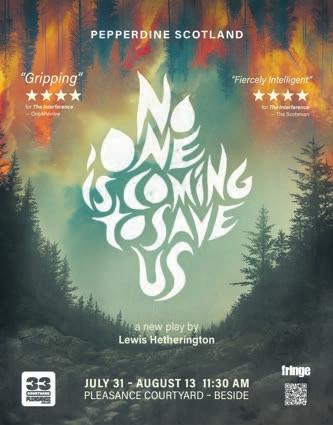
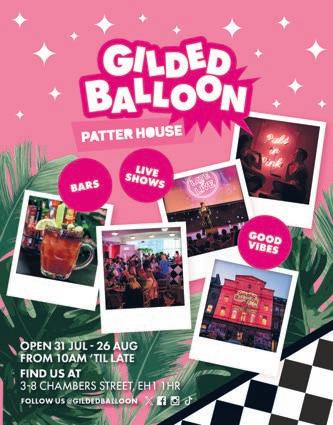
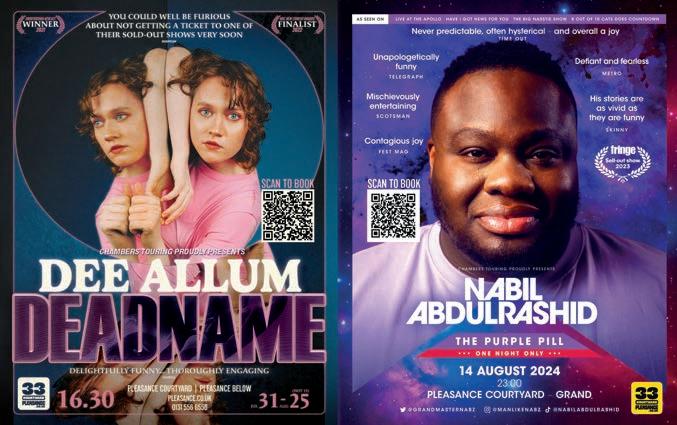


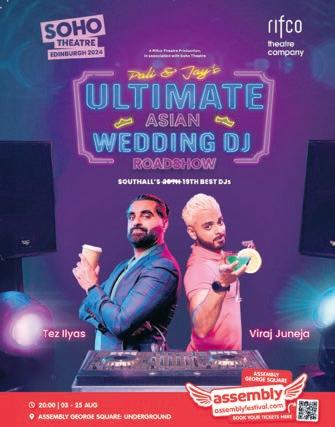

Glasgow Art
CCA: Centre for Contemporary Art
THOMAS
ABERCROMBY + THE SCHOOL OF MUTANTS: YOU HAVE NOT YET BEEN DEFEATED
1-31 AUG, TIMES VARY
An exhibition of radical work delving into the intertwined narratives of colonialism, extraction, labour, class struggle and freedom.
Compass Gallery
PHILIP REEVES RSA PPRSW RGI RE 1931-
2017
10-31 AUG, TIMES VARY
A new exhibition of works by major artist Philip Reeves.
Glasgow Women’s
Library
REIKO GOTO COLLINS + YOKO ONO: PEACE ARBOUR
1-31 AUG, TIMES VARY
A temporary orchard becomes a place to acknowledge grief and imagine new futures, drawing on work by Reiko Goto Collins and Yoko Ono.
GoMA
ENZO CAMACHO + AMI
LIEN: OFFERINGS FOR ESCALANTE
1 AUG-1 SEP, 11:00AM – 4:00PM
Experimental filmmaking, works on paper, and lightbased installation explore forms of resistance within globalised economies of labour.
Six Foot Gallery
DAVARDO: CURSES, SWEARS & MALEDICTIONS
1-6 AUG, 10:00AM –
5:00PM
An exhibition of work reflecting on quotidian life.
The Briggait
SIN PARK: THERE IS A SINGLE WILD TREE STANDING AND WE SING AGAIN
1-12 AUG, TIMES VARY Paintings that explore and seek to revive traditions of shared storytelling, and ideas of a collective space.
The Modern Institute
KIM BOHIE
1 AUG-5 SEP, TIMES
VARY Western and Korean landscape traditions play off each other in this first solo European exhibition by acclaimed Korean artist.
The Modern Institute @ Airds Lane
RICHARD WRIGHT
1 AUG-5 SEP, TIMES
VARY
A new exhibition of work by Turner Prize-winning artist responding to the gallery’s architectural space.
KEITH HARING
1 AUG-5 SEP, TIMES
VARY An exhibition of studio works and urban pieces by acclaimed American artist who died of AIDS-related complications in 1990, and whose work reveals complex interrogations of semiotics, language and counterculture.
DELAINE LE BAS:
DELAINIA: 17071965
UNFOLDING
1 AUG-13 OCT, TIMES
VARY
Objects, installations, textiles and costumes are positioned at the intersection of the personal and the political, exploring the artist’s Romani heritage.
CAMARA TAYLOR: [MOUTHFEEL]
1-18 AUG, TIMES VARY
A collaborative exhibition centring work on Glasgowbased artist Camara Taylor and their investigations into the historical traces that register Black presence as a fugitive undercurrent of Scotland’s entanglement with racial capitalism.
ADAM BRUCE THOMSON: THE QUIET
PATH 1 AUG-6 OCT, TIMES
VARY
A retrospective of a largely neglected landmark Scottish artist, who was among one of the first to study at the Edinburgh College of Art.
KAROL
RADZISZEWSKI: FILO
9-25 AUG, TIMES VARY
Assembling together rare photographs and ephemera, this exhibition traces the history of Filo Magazine, one of the first underground queer magazines in CentralEastern Europe, alongside contemporary paintings by the artist of queer historical figures.
RENÈE HELÈNA BROWNE: SANCTUS!
9-25 AUG, TIMES VARY
Film installation exploring devotion in relation to portraiture, faith, and belonging.
PLATFORM24: EARLY CAREER ARTIST AWARD
9-25 AUG, TIMES VARY
The tenth edition of Edinburgh Art Festival early career exhibition assembles four artists – Alaya Ang, Edward Gwyn Jones, Tamara MacArthur and Kialy Tihngang – responding to the year’s themes of intimacy, material memory, protest, and persecution.
Collective Gallery
MOYNA FLANNIGAN: SPACE SHUFFLE
1 AUG-15 SEP, 10:00AM – 5:00PM
Figurative collages and paper sculptures drawing on myth, art history and pop culture that explore the fragmentary and generative potential of collage.
KAYA FRASER: GIVE US A SMILE
10 AUG-29 SEP, 10:00AM – 5:00PM
Working with still and video cameras inherited from her family, Satellite artist Kaya Fraser explores everyday and working class homes as sites of archive, memory, place and identity.

Dovecot Studios
TANIA KOVATS: SEAMARKS
1 AUG-2 NOV, 10:00AM – 5:00PM
Tania Kovats’ seascapes rendered in brushstrokes and ceramics are being transformed into textile form with the creation of a new tapestry, exploring how art can respond to our climate emergency.
TAPESTRY 5: TIME & PLACE
1 AUG-7 SEP, 10:00AM – 5:00PM
Five small-scale tapestries inspired by urban spaces, the sea, the sky and Norse Myths explore the communal potential of textile work.
Edinburgh College of Art AUGUST GRADUATE SHOW
17-23 AUG, TIMES VARY
A showcase of work by the art college’s graduating class.
Edinburgh Printmakers
ADE ADESINA: INTERSECTION
1 AUG-10 NOV, 11:00AM – 4:00PM
Experimentations with screen printing and lithography explore the artist’s African roots and British surroundings.
TAYO ADEKUNLE: STORIES OF THE UNSEEN
1 AUG-10 NOV, 11:00AM – 4:00PM
Delving into historic accounts and expositions of race, this exhibition re-examines stories about blackness from a new and decolonial perspective.
Edinburgh Sculpture Workshop
JAN PIMBLETT: HYBRIDS
1 AUG-5 OCT, 11:00AM – 5:00PM
Strange, hybrid creatures and artefacts highlight the arbitrary nature of boundaries and our warped assumptions surrounding purity, marginality and identity.
ETCHINGROOM1: WHAT A WONDERFUL DAY IN A WONDERFUL WORLD
1 AUG-1 MAR 25, 11:00AM – 5:00PM
A collaboration between Ukrainian artists Kristina Yarosh and Anna Khodkova, this mural articulates the artists’ experiences of conflict and their strategies for resilience.
SEQUOIA DANIELLE BARNES: EVERYTHING IS SATISFACTUAL
9-31 AUG, 11:00AM –5:00PM
Folkloric sculptures retell the tales of Br’er Rabbit and the Tar Baby, using Afro-surrealism to unravel how the consumption of cuteness perpetuates oppression and marginalisation.
Fruitmarket
IBRAHIM MAHAMA: SONGS ABOUT ROSES
1 AUG-6 OCT, 10:00AM – 6:00PM
The first ever UK solo exhibition by Ghanaian artist using site-specific installation to interrogate ongoing legacies of colonialism and global migration.
Ingleby Gallery
HAYLEY BARKER: THE RINGING STONE
1-31 AUG, 11:00AM –
5:00PM
The first exhibition in Europe of paintings by the Los Angeles painter, whose elaborate landscapes record her intimate experiences of her surroundings.
Jupiter Artland
LAURA ALDRIDGE: LAWNMOWER
1 AUG-29 SEP, 10:00AM – 5:00PM
Textile, ceramic, glass, found objects and moving image examine the emotional and sensory potential of materiality.
ANDREW SIM
1 AUG-29 SEP, 10:00AM
5:00PM
Symbolic and mythic paintings explore experiences of queerness and the visibility of the cis/het gaze.
National Gallery
AN IRISH
IMPRESSIONIST: LAVERY ON LOCATION
1 AUG-27 OCT, TIMES
VARY
The late 19th and early 20th centuries come to life in this survey of renowned Belfast born artist, Sir John Lavery.
Open Eye Gallery
LEON MORROCCO: TERRE ET MER
1-24 AUG, TIMES VARY
A new body of work from the artist’s studio in the south of France, drawing from the warmth of the surrounding landscape.
Royal Botanic Garden
FUNGI FORMS
2 AUG-7 DEC, 10:00AM – 6:00PM
An exploration of the biological and cultural presence of fungi, told through music, literature, fashion, design, scent and visual art.
Royal Scottish Academy RSA
FRONTIERS: PAINTING
IN SCOTLAND NOW
3 AUG-8 SEP, TIMES
VARY
Positioned between the traditions of the past and the aspirations for the future of visual arts, this complex exhibition looks at how artists push the boundaries of painting as medium.
Scottish National Gallery of Modern Art
DO HO SUH: TRACING
TIME
1 AUG-1 SEP, 10:00AM – 5:00PM
Exploring the foundational role drawing and paper play in acclaimed South Korean artist Do Ho Suh’s practice.
WOMEN IN REVOLT! ART AND ACTIVISM IN THE UK 1970–1990
1 AUG-26 JAN 25 10:00AM – 5:00PM
Fresh off a stint at Tate Britain, this exhibition documents two decades of seismic social and political change and the art that emerged from and challenged the ensuing culture.
BRUCE MCLEAN: I WANT MY CROWN
1-31 AUG, 10:00AM
5:00PM
Working across photography, performance, painting, printmaking, film, and ceramics, this survey of the acclaimed Scottish artist delves into his six decades-long inquiry into the remits and possibilities of sculpture and what it can be.
Scottish National Portrait Gallery
BEFORE AND AFTER COAL: IMAGES AND VOICES FROM SCOTLAND’S MINING COMMUNITIES
1 AUG-15 SEP, 10:00AM – 5:00PM
Quiet, intimate portrait photography examining the history and ongoing legacy of coal mining on Scottish communities.
Scottish Storytelling Centre
LIVING STONE
1-26 AUG, 10:00AM –6:00PM
In 2023, Mairi Campbell embarked on an odyssey in image inspired by a 400 million-year-old millstone found on the island of Lismore. This exhibition of her paintings explores themes from her show Living Stone.
Sett Studios
RORY DIXON: HEAVY WITHOUT IT II 11-14 AUG, TIMES VARY
A flamboyant and vibrant exhibition drawing inspiration for counterculture in Las Vegas to interrogate the social and political significance of style.
SETT STUDIOS
ARTISTS: U HAD 2B THERE ;-)
24-25 AUG, 12:00PM
6:00PM
An exhibition of work by Sett Studio artists and residents across a variety of disciplines, exploring the studio’s emphasis on grassroots and non-hierarchical forms of art making.
Sierra Metro FLANNERY O’KAFKA: FOR WILLY LOVE AND BOOKER T: BLUE BABIES DO WHATEVER THEY WANT
10 AUG-15 SEP, 10:00AM – 2:00PM
Flannery O’Kafka’s childhood bedroom bleeds into a carpet shop as this immersive installation interrogates gender performance, respectability, and the picturing of disability.
Stills HOME: UKRAINIAN PHOTOGRAPHY, UK WORDS
2 AUG-5 OCT, 12:00PM – 5:00PM
Contemporary photography from Ukraine exploring the plurality of home and belonging.
Summerhall
YUMIKO ONO: COMPOSITION IV
1 AUG-1 NOV, 12:00PM – 5:30PM
Developed out of a residency program in Edinburgh Sculpture Workshop, this large-scale work explores intersections between art and architecture.
SAM KISSAJUKIAN: PAINTINGS OF MODERNIA
1 AUG-20 SEP, 12:00PM – 5:30PM
Bold paintings that explore the complex and ineffable mental states of being an artist living with Bipolar.
HELEN DENERLEY: FLUX
1 AUG-20 SEP, 12:00PM – 5:30PM
Sculptures informed by Haiku poetry and uncommon assemblages crafted out of a rusting library of scrap metal.
CALUM COLVIN: THIS LIVING HAND
1 AUG-20 SEP, 12:00PM – 5:30PM
A collection reflecting on mortality, creativity, and the essential role of the material in artistic creation in the face of encroaching AI.
LUCIAN PERKINS + ALEC MACKAYE: HARD ART DC 1979
1 AUG-20 SEP, 12:00PM
– 5:30PM
A traveling exhibition and book bringing to life the thriving landscape of the Washington DC punk scene and its lasting impact on music and culture worldwide.
ROBERT MCDOWELL: THE MEDIUM OF MADNESS
1 AUG-20 SEP, 12:00PM – 5:30PM
A collection of paintings exploring the capacity of art to articulate madness as a non-transgressive form of being.
JO COATES: RESTORATION
1 AUG-20 SEP, 12:00PM – 5:30PM
An exhibition examining the complex and intricate art of restoration.
Talbot Rice Gallery
EL ANATSUI: SCOTTISH MISSION BOOK DEPOT KETA
1 AUG-28 SEP, TIMES VARY
The most significant exhibition of Ghanaian artist El Anatsui yet in the UK, this interrogation into his long and storied career spills out over the building’s facade, transforming it into an open-air gallery.

GEOFF UGLOW: BEYOND THE CLOUDS 1-24 AUG, TIMES VARY
Landscapes drawing on the natural beauty of Cornwall act as eloquent odes to the natural world, capturing its transient beauty with unparalleled sincerity.
KOJI HATAKEYAMA: SCENES IN BRONZE 1-24 AUG, TIMES VARY Bronze boxes painted with enigmatic landscapes, drawing on the metalwork traditions of the artist’s Tokyo home.
Art
DCA: Dundee
Contemporary
Arts
SUKAINA KUBBA: TURN ME INTO A FLOWER
1-4 AUG, TIMES VARY
Industrial and packaging materials examine material objects as carriers of cross-cultural history in the artist’s first solo exhibition in the UK.
CLAUDIA MARTÍNEZ
GARAY
23 AUG-17 NOV, TIMES VARY
Multimedia work by Peruvian artist explores how artefacts, cultural relics, and propaganda communicate the history and social-political memory of cultures.
V&A Dundee
PHOTO CITY: HOW IMAGES SHAPE THE URBAN WORLD
1 AUG-20 OCT, 10:00AM – 5:00PM
Bringing together items from the V&A archive as well as two specially commissioned works to explore how two distinctly modern phenomena – cities and photography – have informed each other.
KIMONO: KYOTO TO CATWALK
1 AUG-5 JAN 25, 10:00AM – 5:00PM
Part-fashion survey, partexploration on material culture, this exhibition traces the history of the kimono from 17th-century Japan to contemporary runways.

As the Duncan Brothers prepare to launch their Fringe show which promises to exorcise the ancient Celtic curse that has haunted their bloodline for generations, they take on our Q&A
What’s your favourite place to visit and why?
Andy: The Forest. I love spending time with trees and I really love spending time away from my brother. Also by reconnecting with trees I reconnect with my brother.
Rob: Yes people don’t know this, but we are descendants of trees.
Favourite food?
Rob: It used to be steak tartare, but since we found out about our Curse, any food that is rich in iron is like poison to us. So red meat is off the cards. Now it’s broccoli.
Andy: For me it’s carbonara. I recently went to Rome and had five in three days. There is something about the gooey crunch of the guanciale (pig cheek) and the creamy stodge of the pasta that reconnects me to my essential being. Even if it is poison, it’s worth dying for.
Favourite colour and why?
Andy: Crimson.
Rob: Crimson.
(We said this at the exact same time and then looked each other directly in the eyes as a single tear of blood fell down our cheeks.)
Who was your hero growing up?
Andy: Michael Jackson
Rob: Didn’t have one, I was the middle child. I’m now glad it wasn’t Michael Jackson.
Whose work inspires you now?
Andy: David Lynch.
Rob: Martin Garmin, the founder of the Swiss-domiciled multinational technology company Garmin.
What three people (living or dead) would you invite to your dinner party and what are you cooking?
Rob: It’s a plate of broccoli for: The late Chuckle brother, Barry Chuckle Conan the Barbarian
And Andy (my brother)
Andy: I guess that’s where I’m going too.
What’s your all time favourite album?
Andy: The Very Best of Enya by Enya. Rob: Weathered by Creed. The album art alone is a masterpiece. They are, in my books, the best American Christian rock band of this century.
What’s the worst film you’ve ever seen?
Rob: Highlander. It’s also perhaps the best film ever made and the sole reason we are making this show. Andy: [nods]
What book would you take to a desert island?
Rob: The Iron Lady: Margaret Thatcher by John Campbell.
Andy: I’d go with the Iron Lady: The Thatcher Years by Andrew John, Stephen Blake.
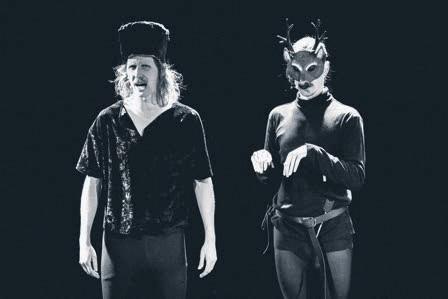
Who’s the worst?
Andy: Rob.
Rob: Andy
When did you last cry?
Andy: A few days ago. I’ve been getting better at crying as I get older, making up for all the locked up tears of my youth.
Rob: Not since we lost our other brother.
What are you most scared of?
Rob: Tennis
Andy: Dying after my brother.
When did you last vomit and why?
Andy: After my fifth carbonara.
Rob: After I ate Andy’s vomited up fifth carbonara. It was too creamy.
Which tennis celebrity could you take in a fight?
Rob: Tim Henman.
Andy: Steffi Graf.
If you could be reincarnated as an animal, which animal would it be?
Rob: Leech, I hear their sex lives are very good.
Andy: Yes, couldn’t agree more.
Tell us a secret?
Rob: We carry the burden of an ancient curse in our veins.
Andy: I’ve written Rob’s answers.
What’s your favourite plant?
Andy: That would have to be the carnivorous plant, Darlingtus Mongus, which can supposedly eat small- to medium-sized mammals, and there are even reports of it eating small boys.
Rob: Yes, that’s sadly how we lost our other brother.
What’s in your Fringe survival pack?
Rob: NIVEA MEN’s entire skincare portfolio of shaving gels, face washes, moisturisers plus deodorants and shower gels.
Andy: Yes agreed, NIVEA is the UK’s No.1 Men’s Skincare brand for a reason. It has specially designed formulas for all skin types including sensitive, oily, dry and fatigued skin. Enter code NIVEA25OFF for 25% off your first order.
Have you ever been jealous of your brother?
Andy: Yes all the time, I look up to him and look for his approval in all that I do. I have shared these answers with him to look over.
The Duncan Brothers: Blood Sword, Underbelly Cowgate, 1-25 Aug (not 12), 9.30pm, £10.50
